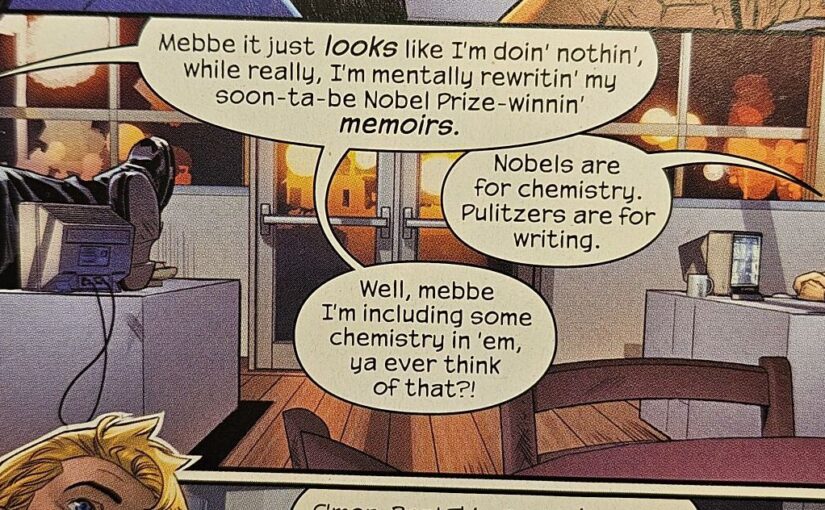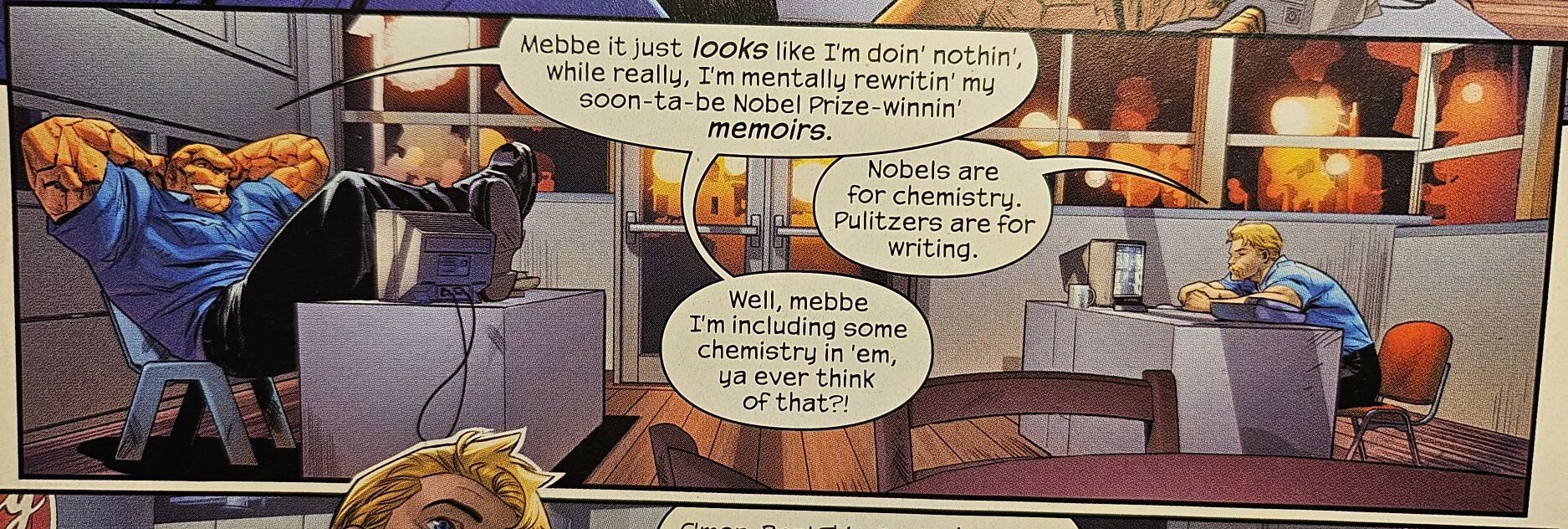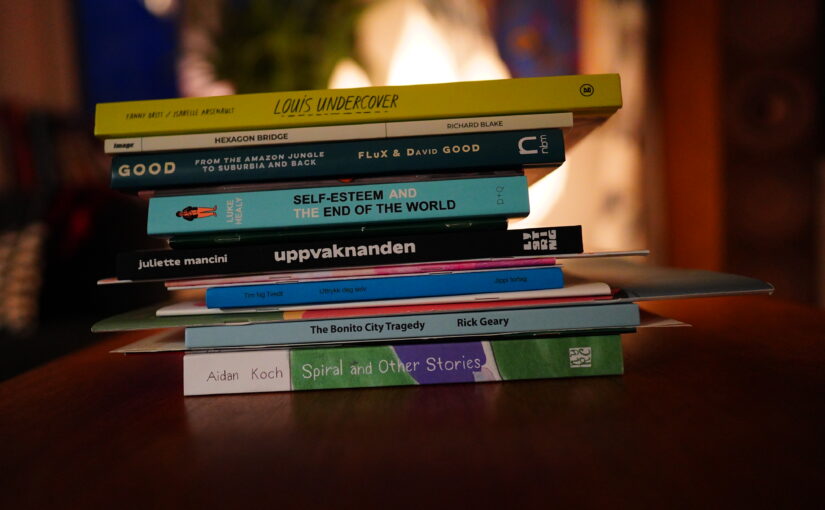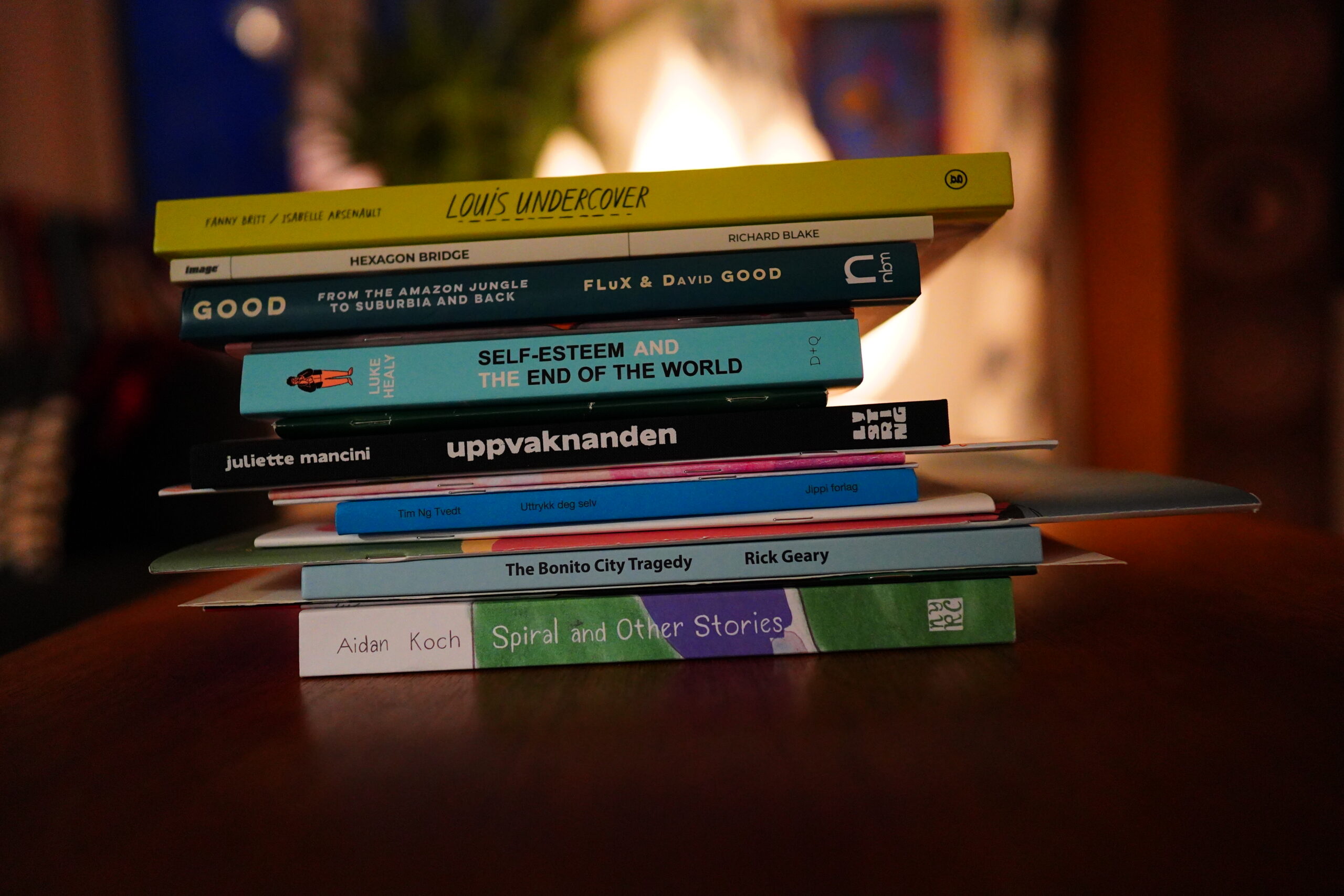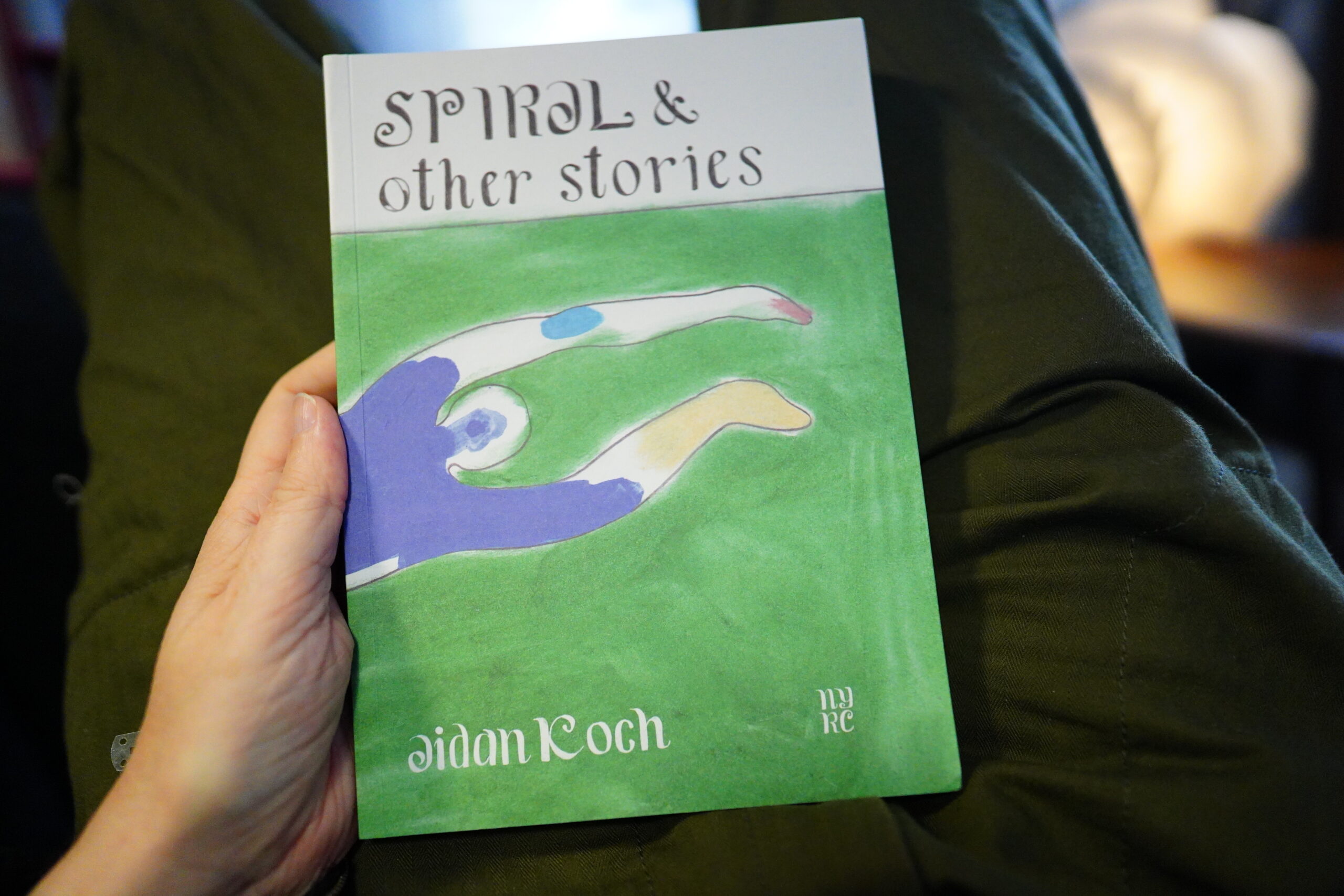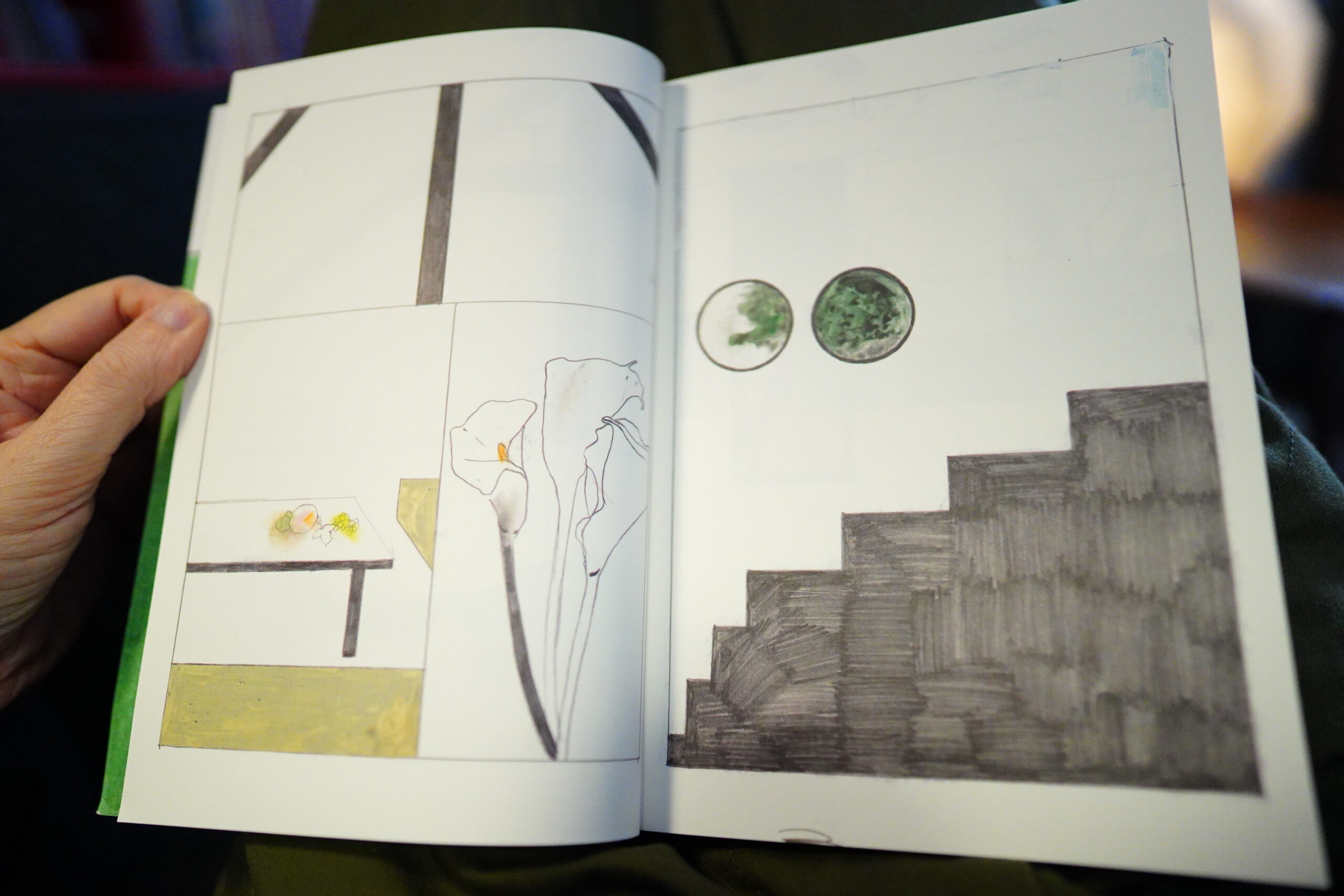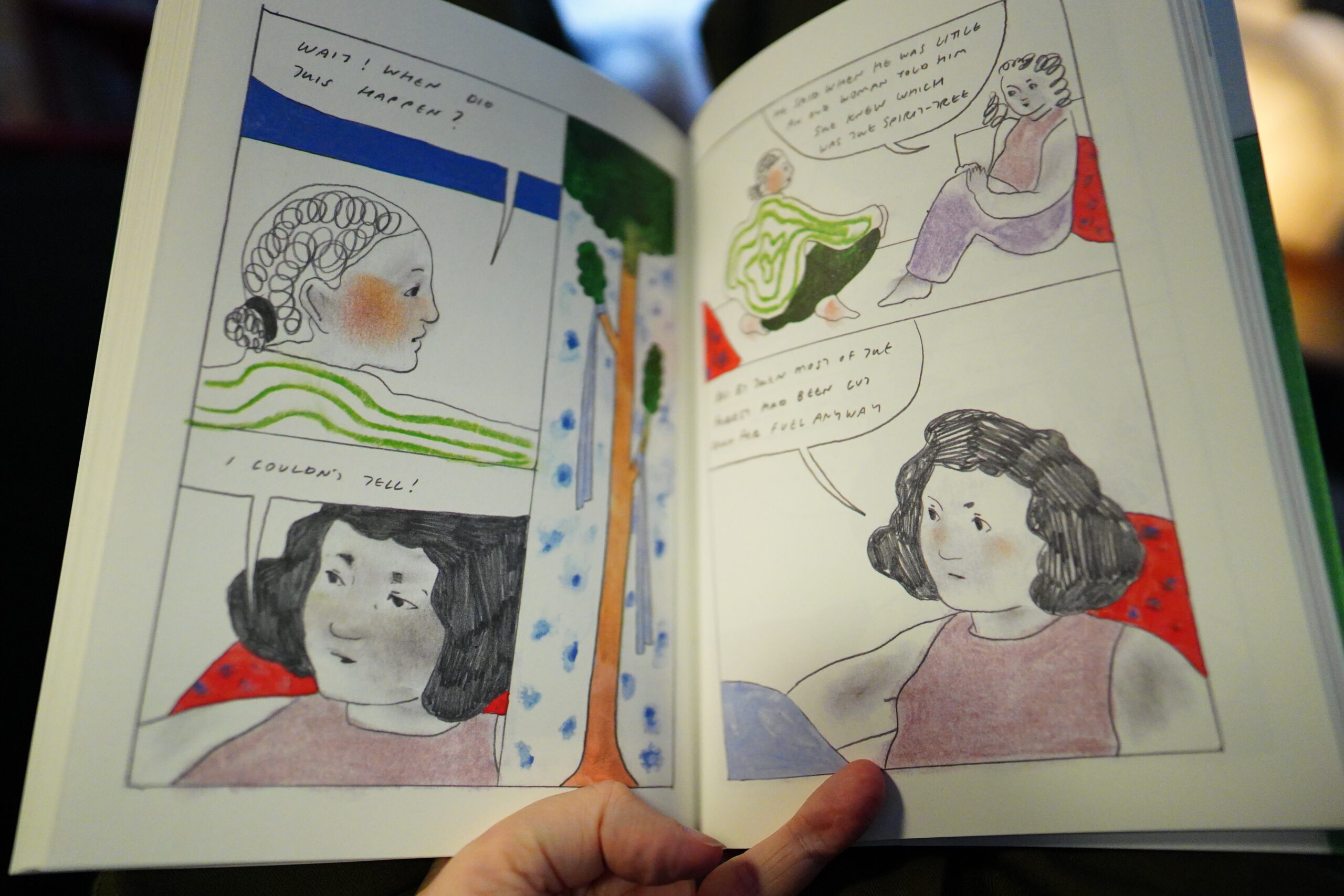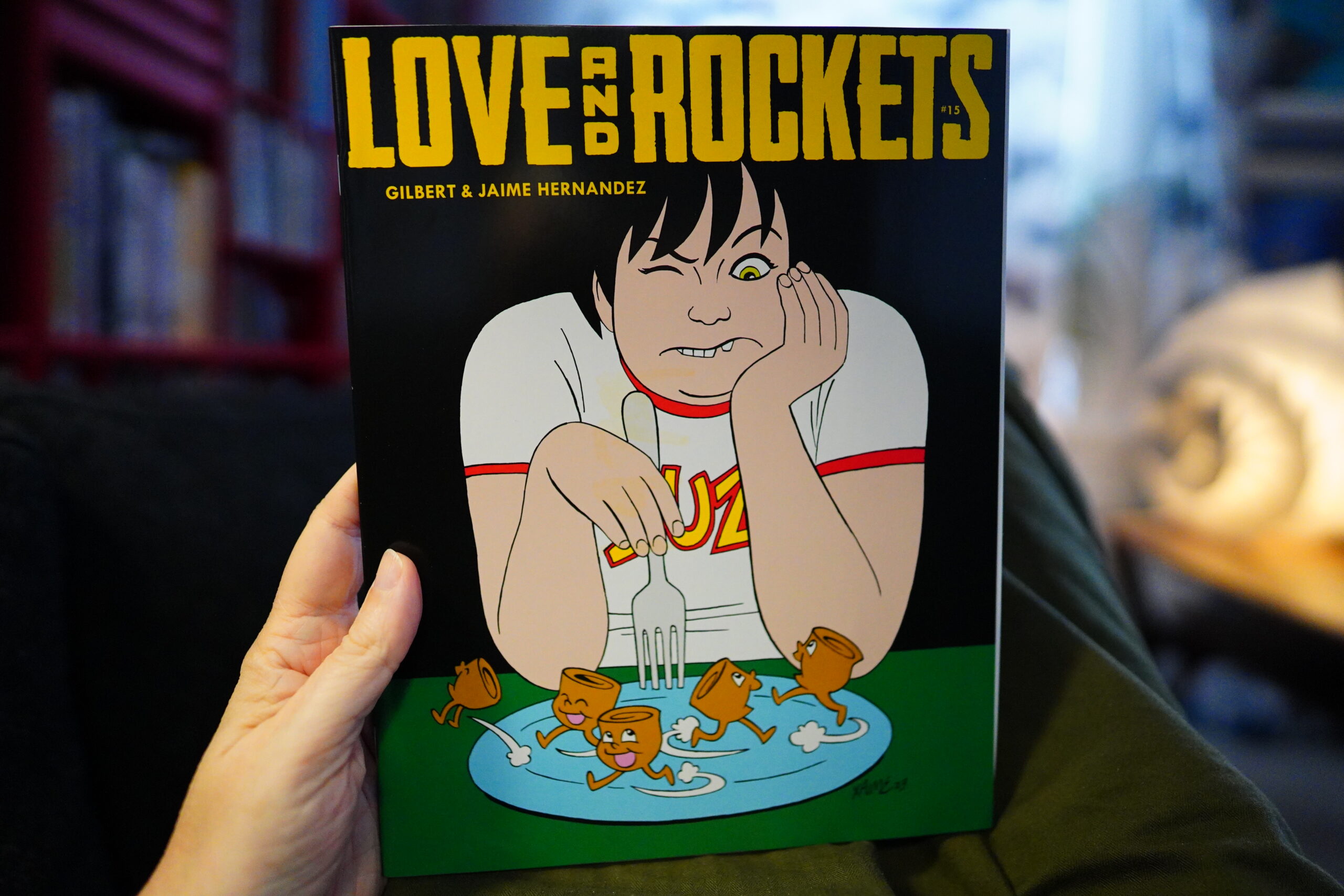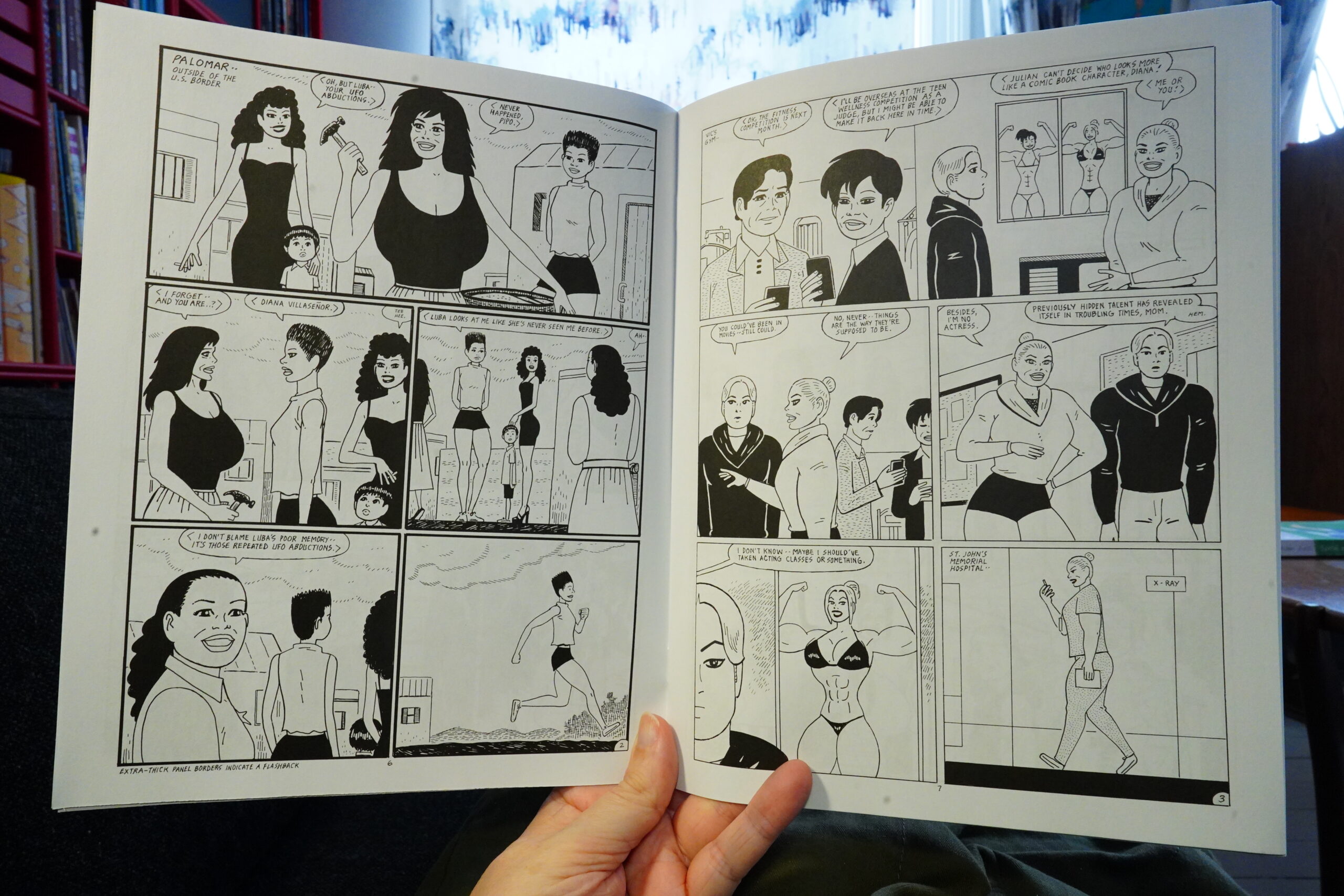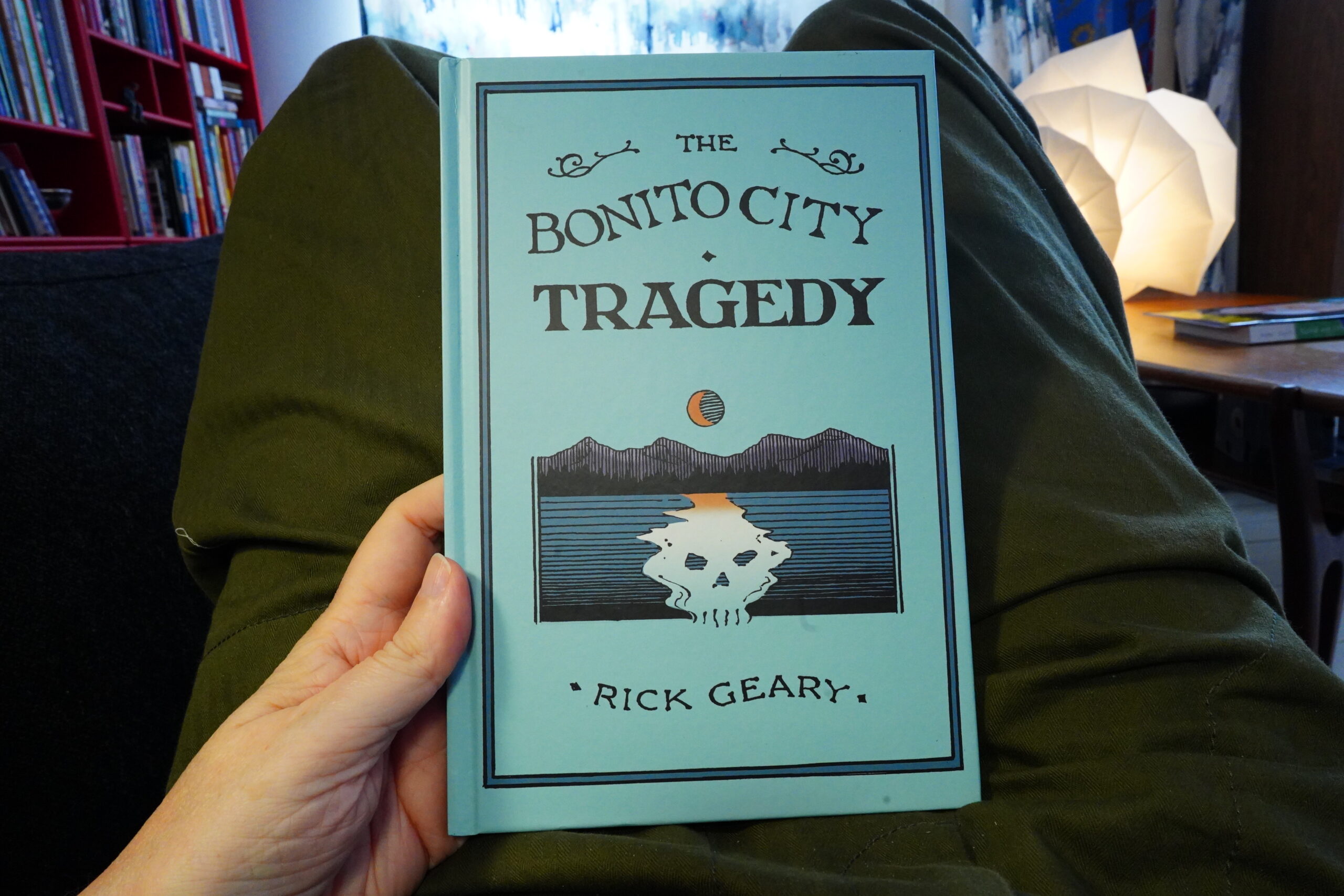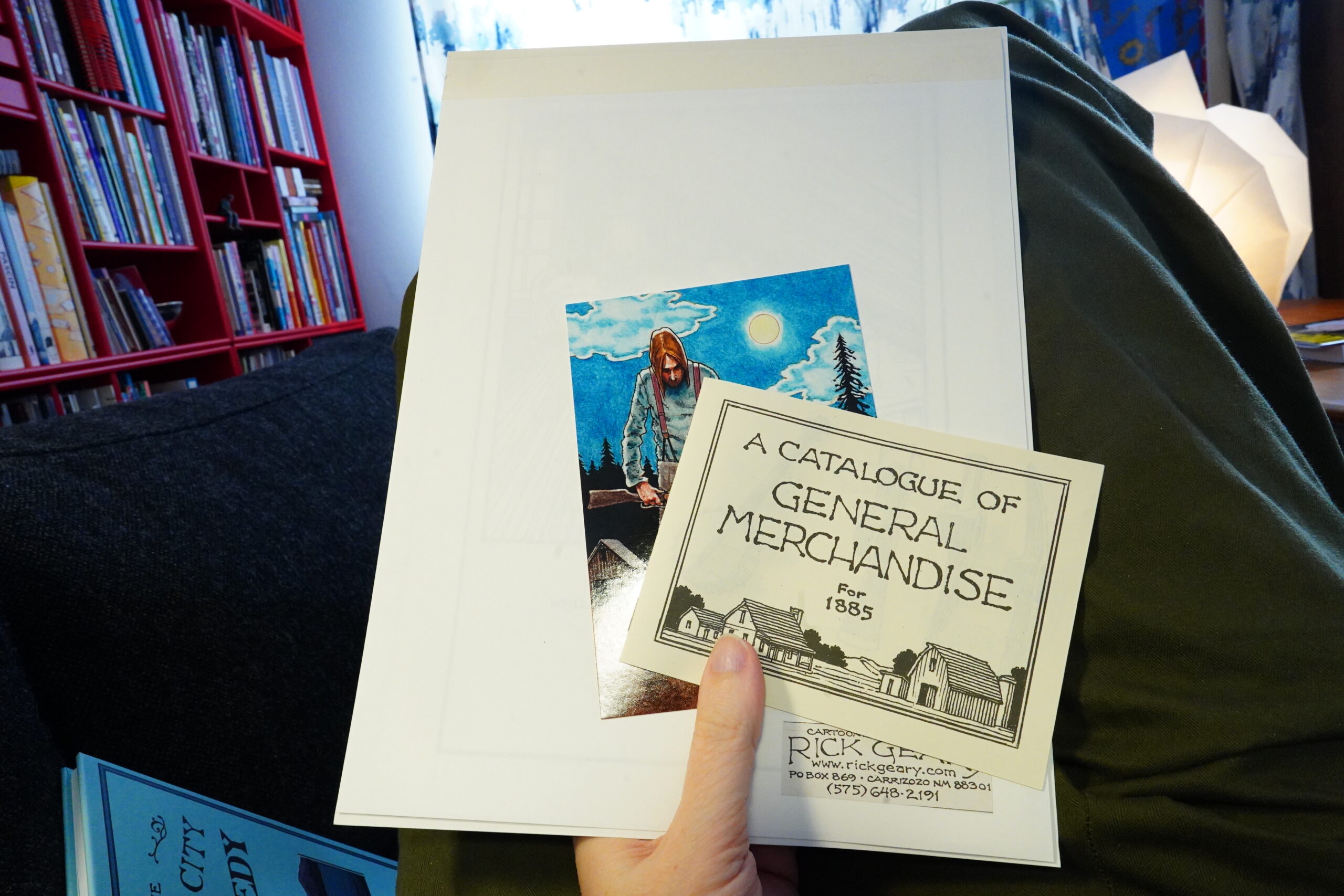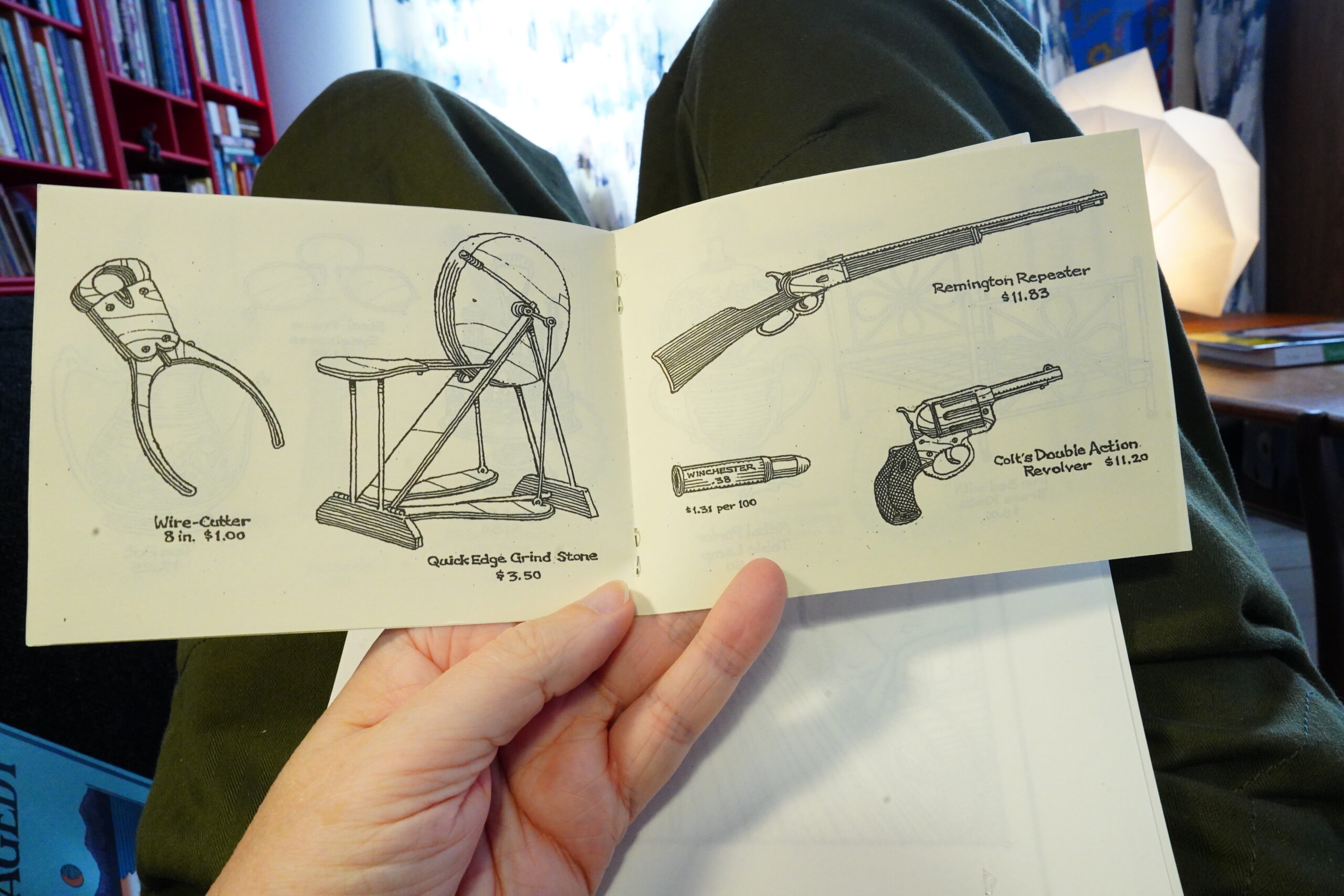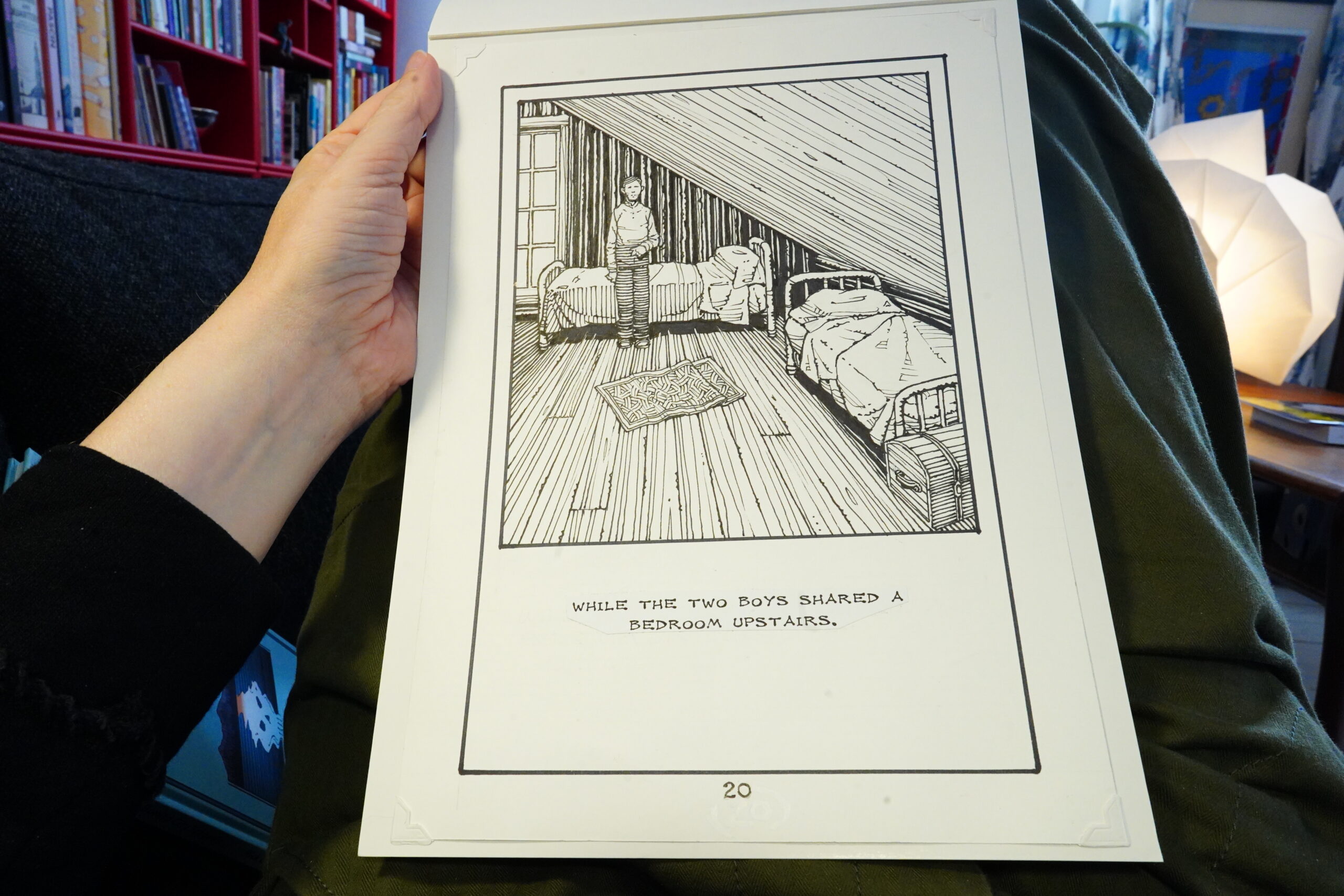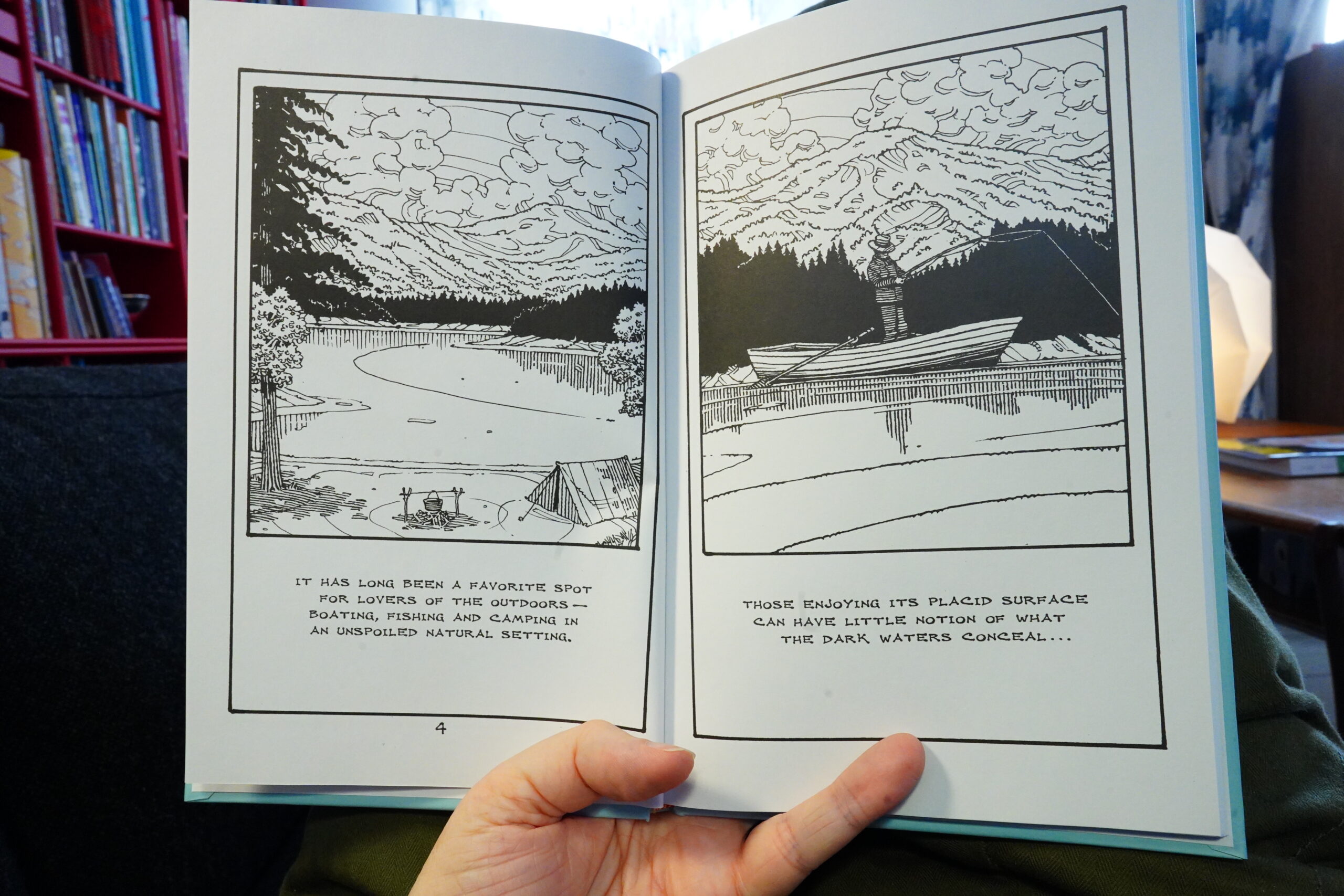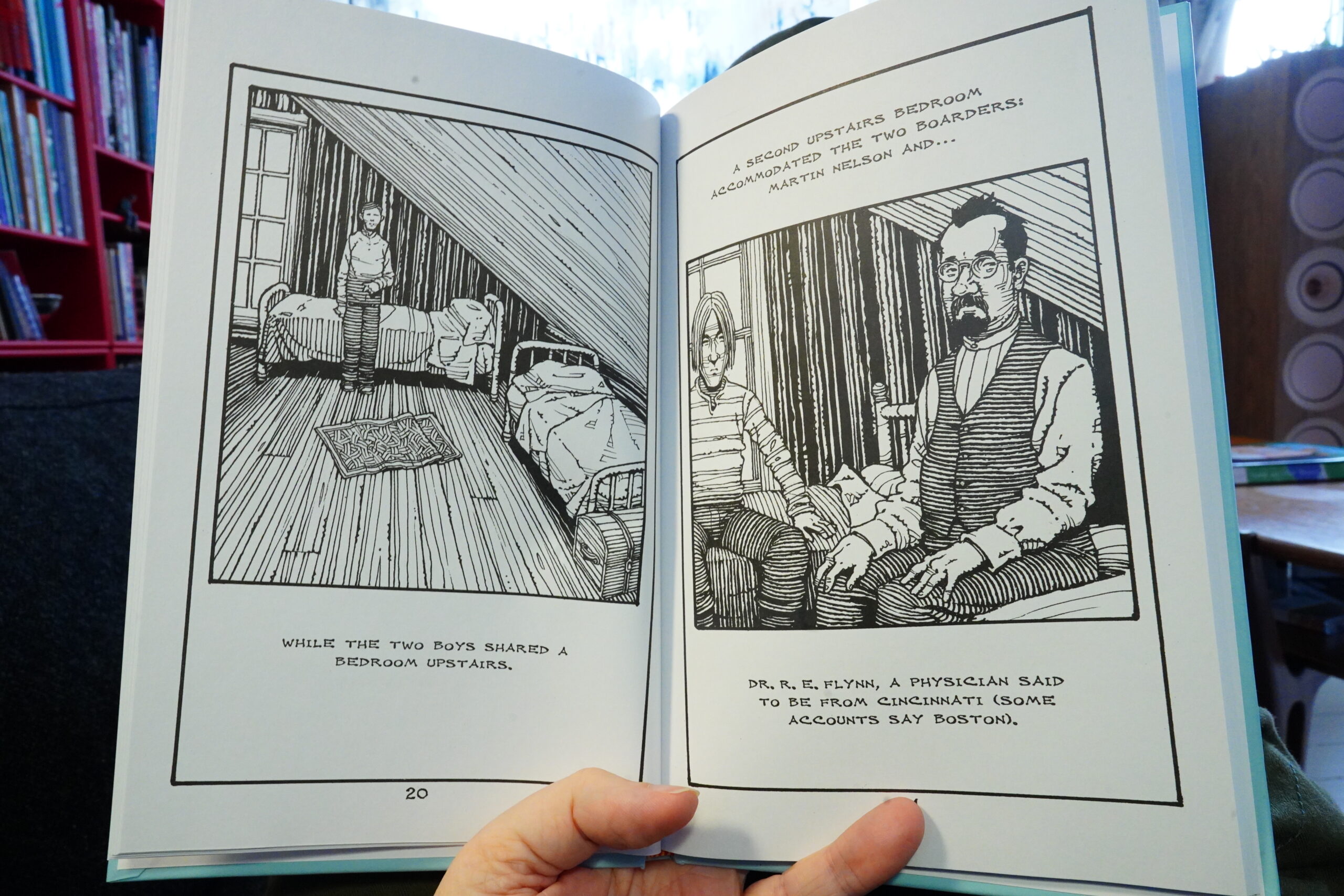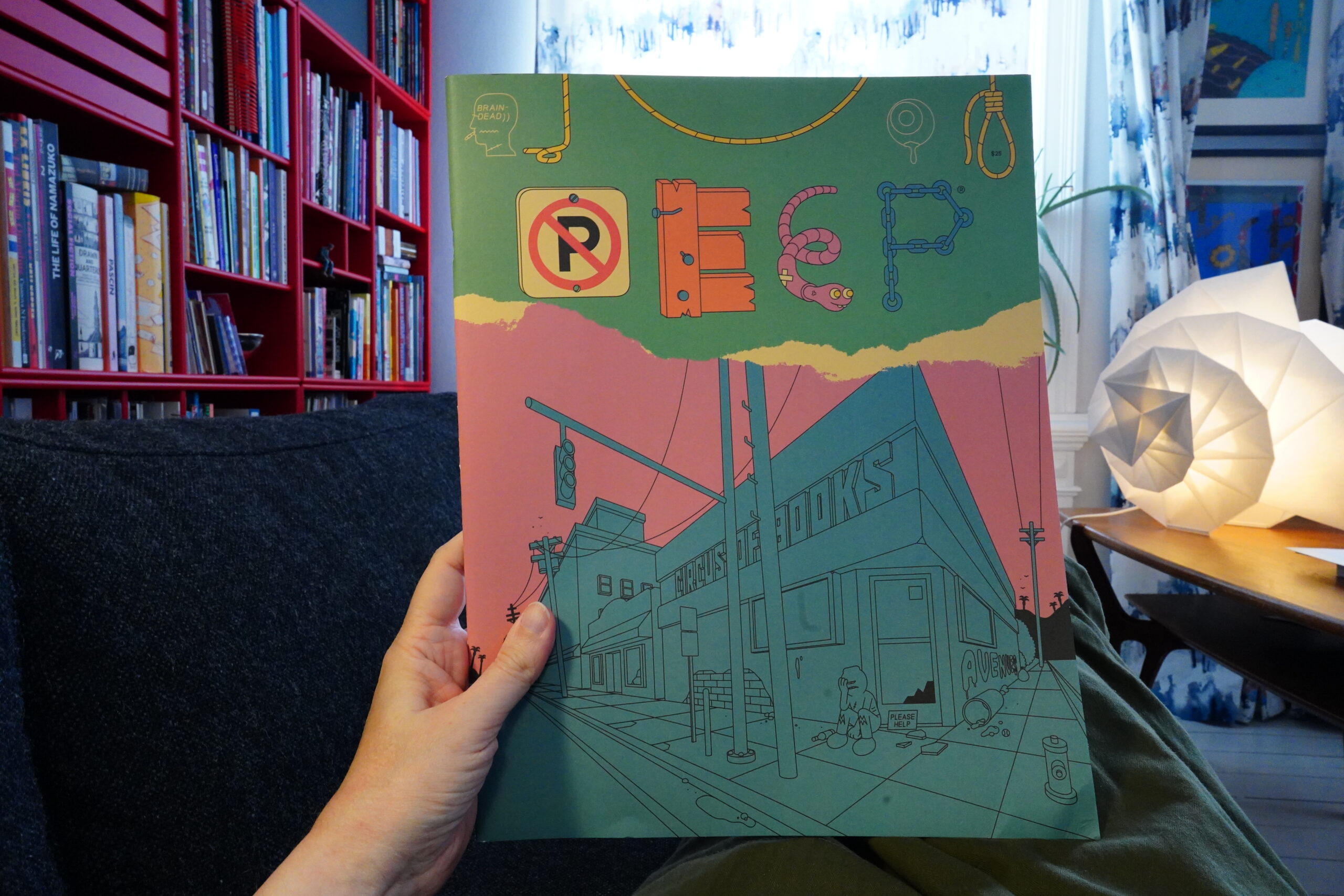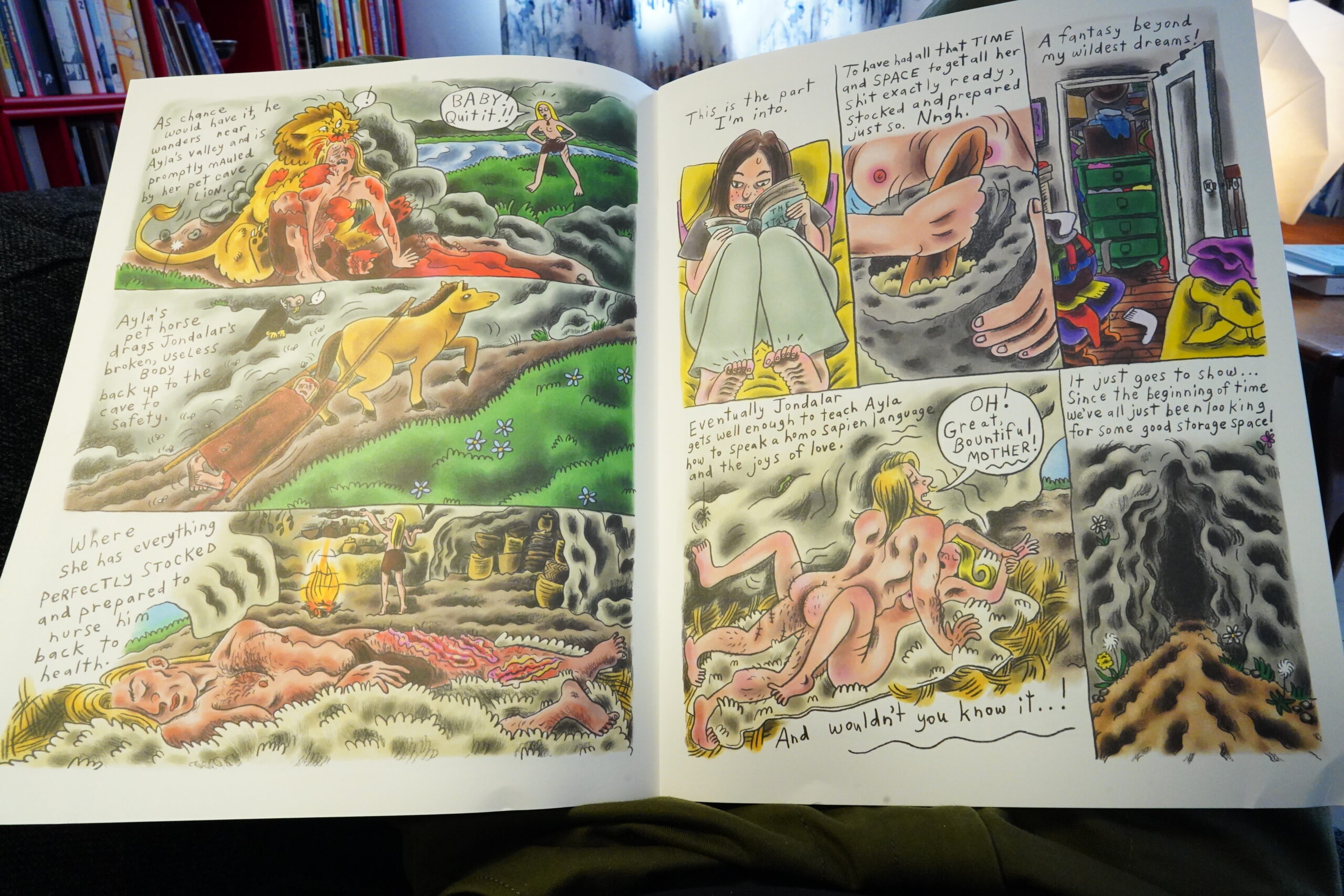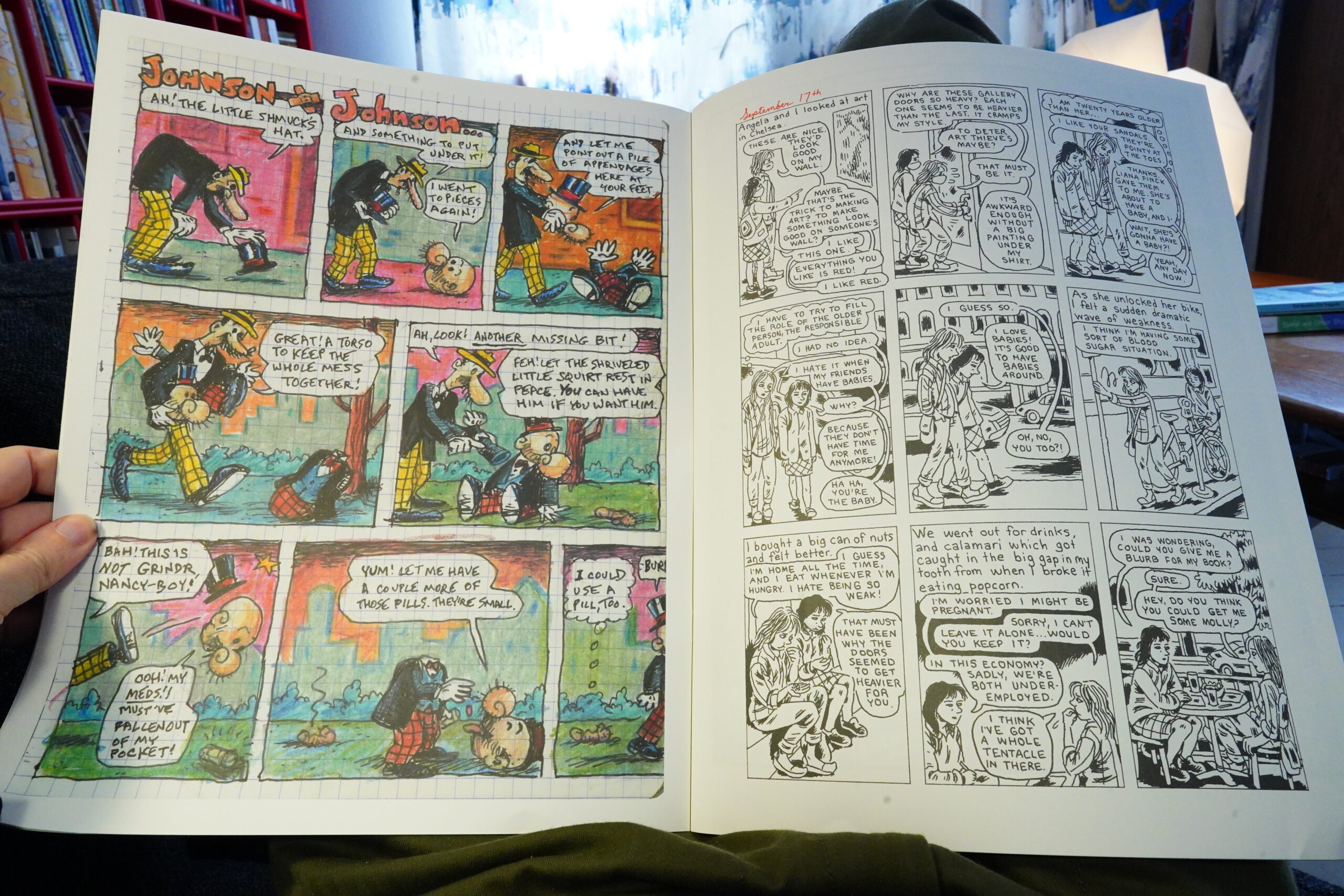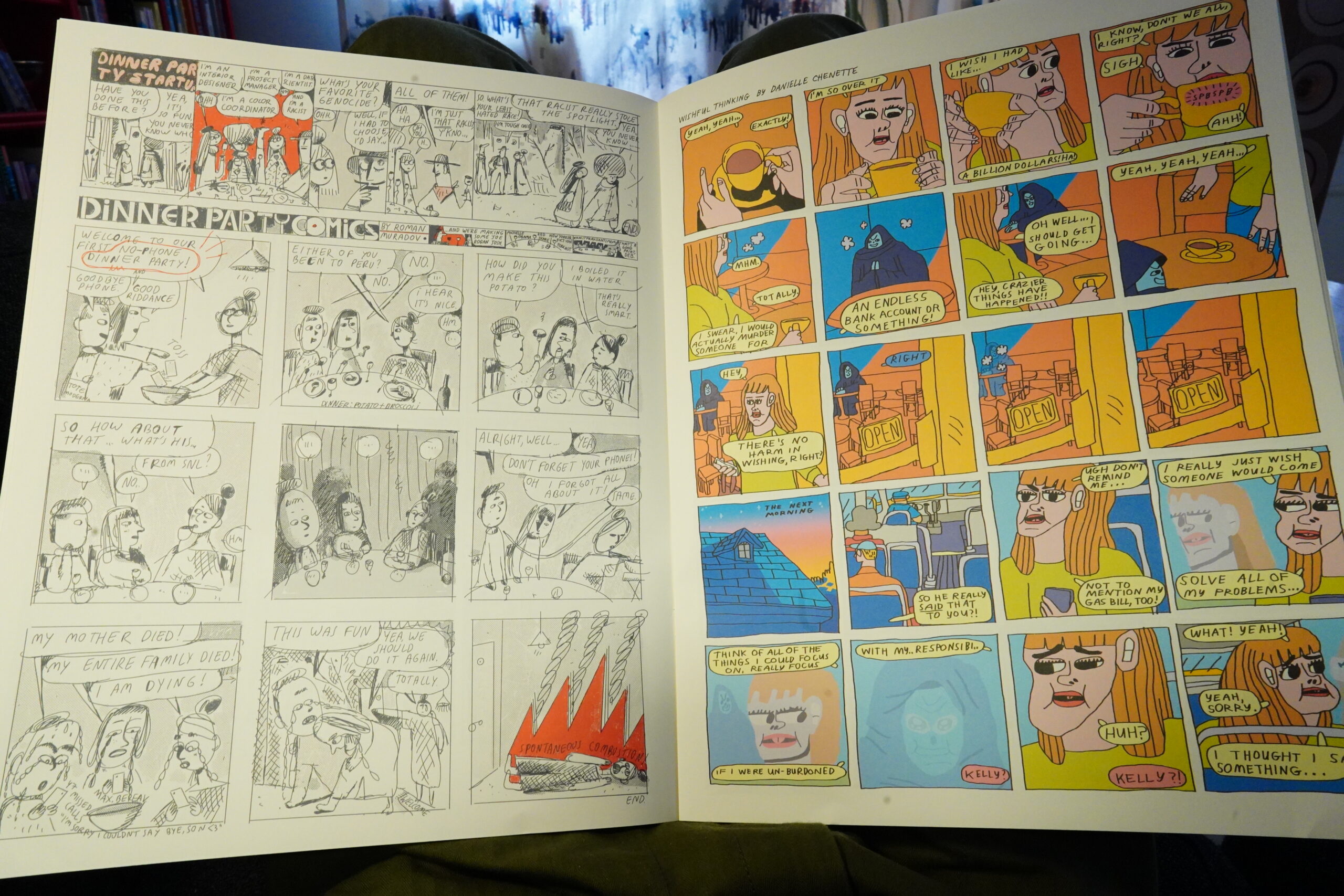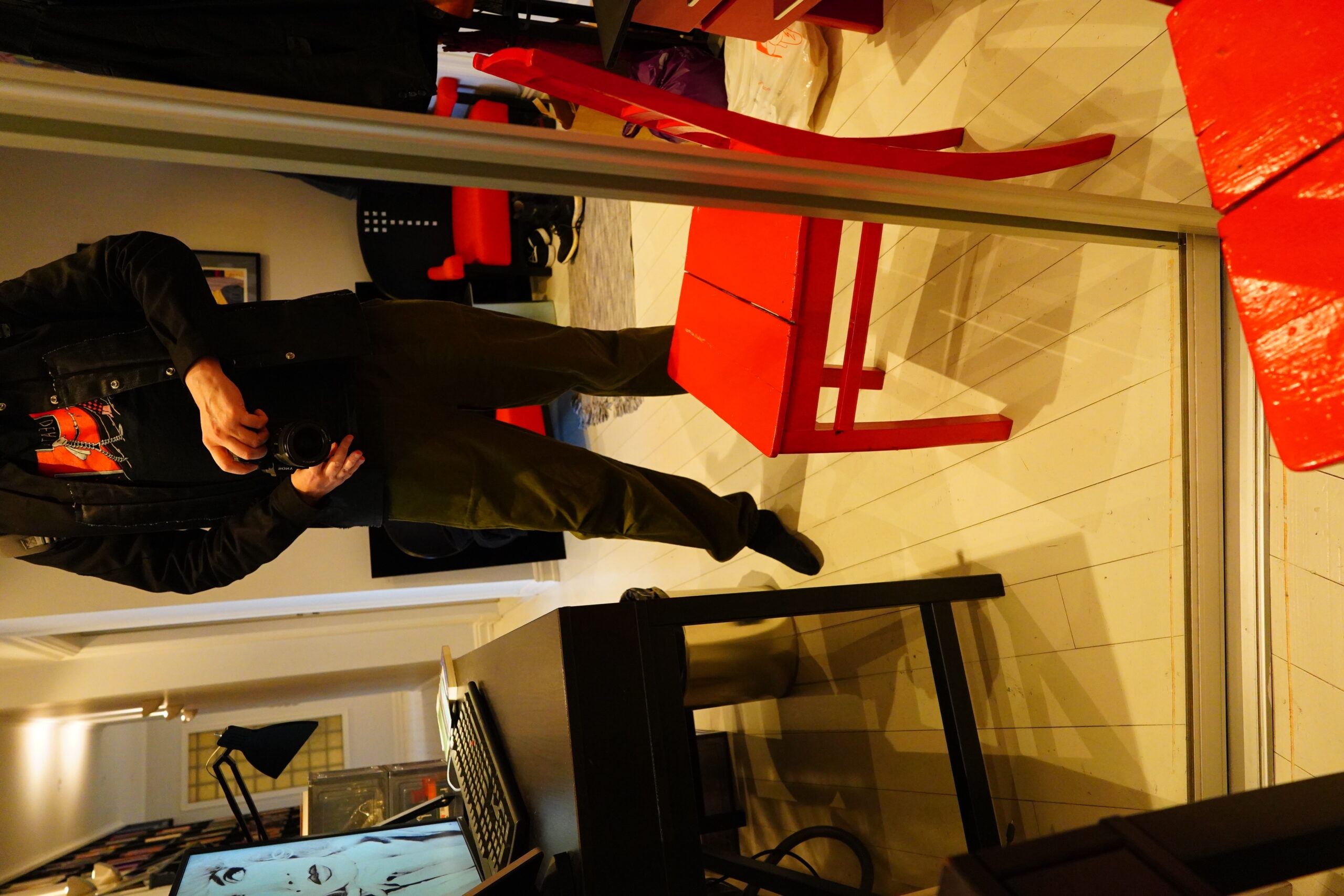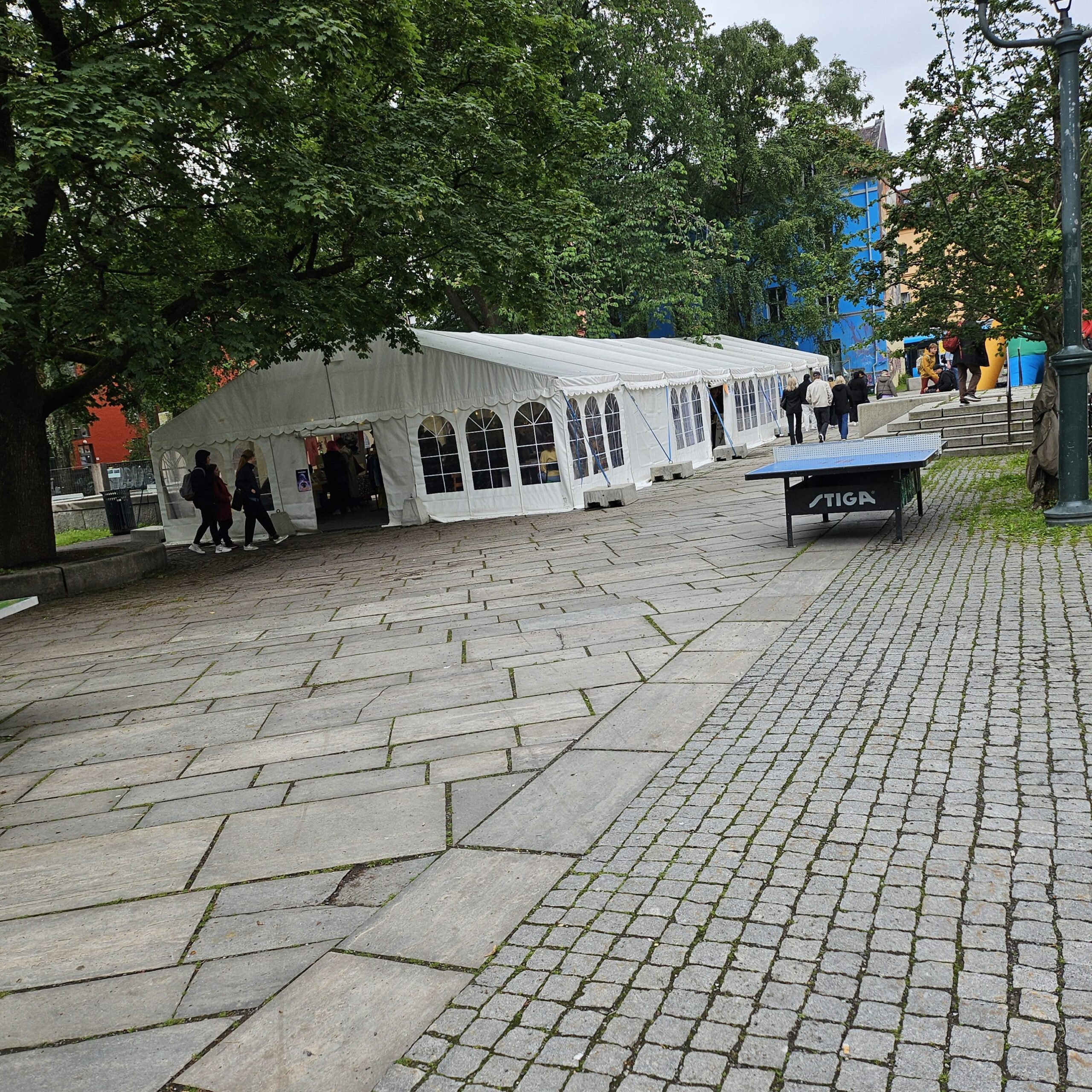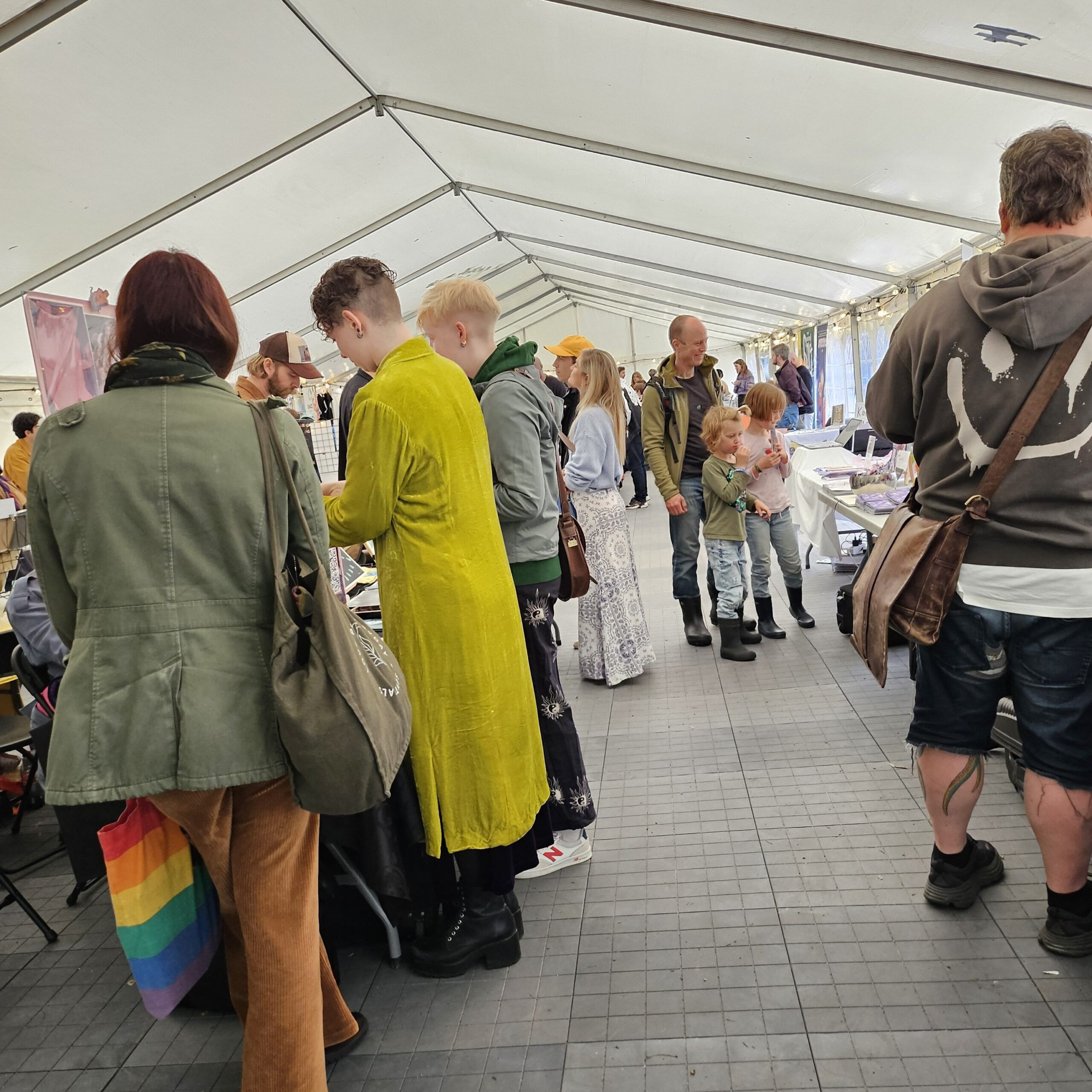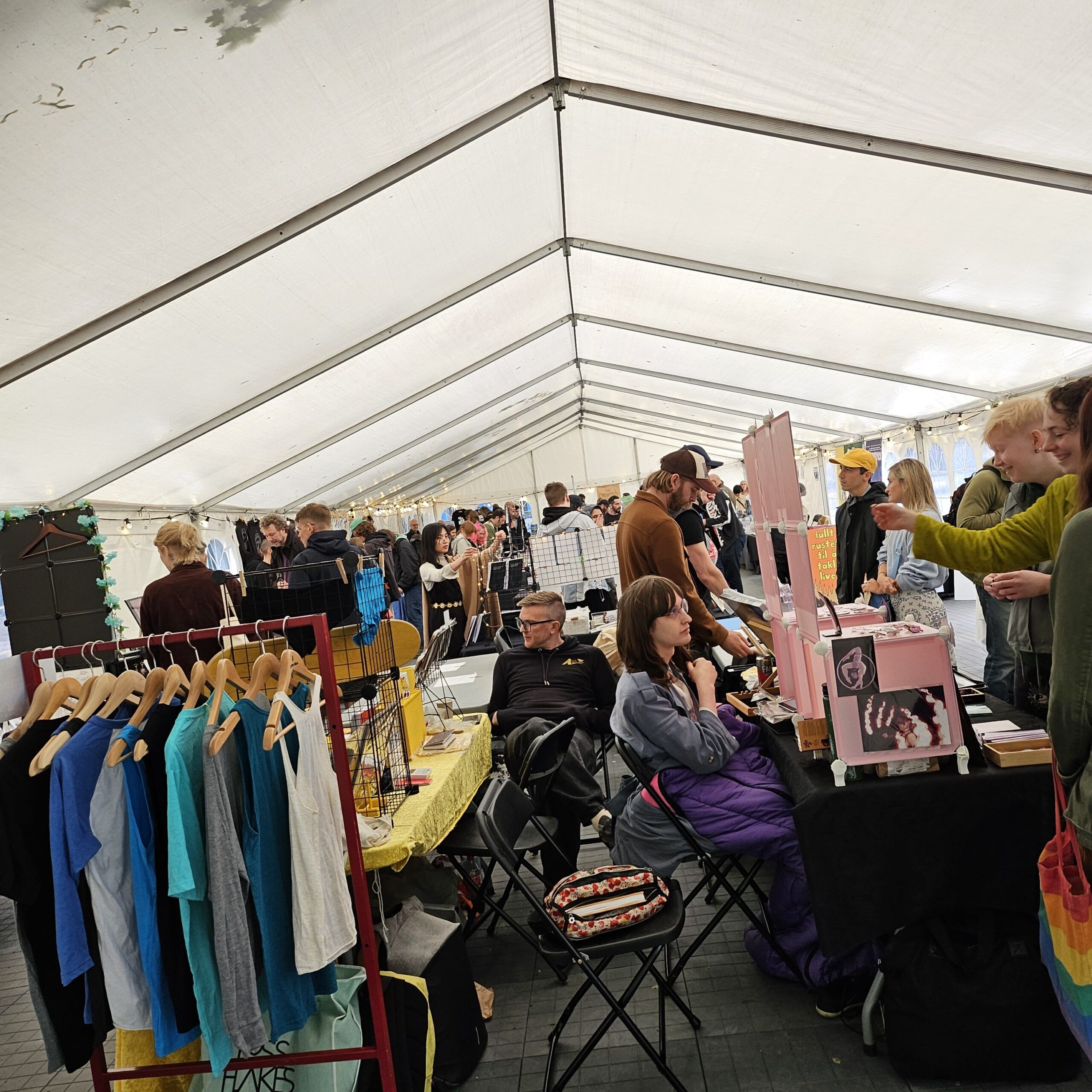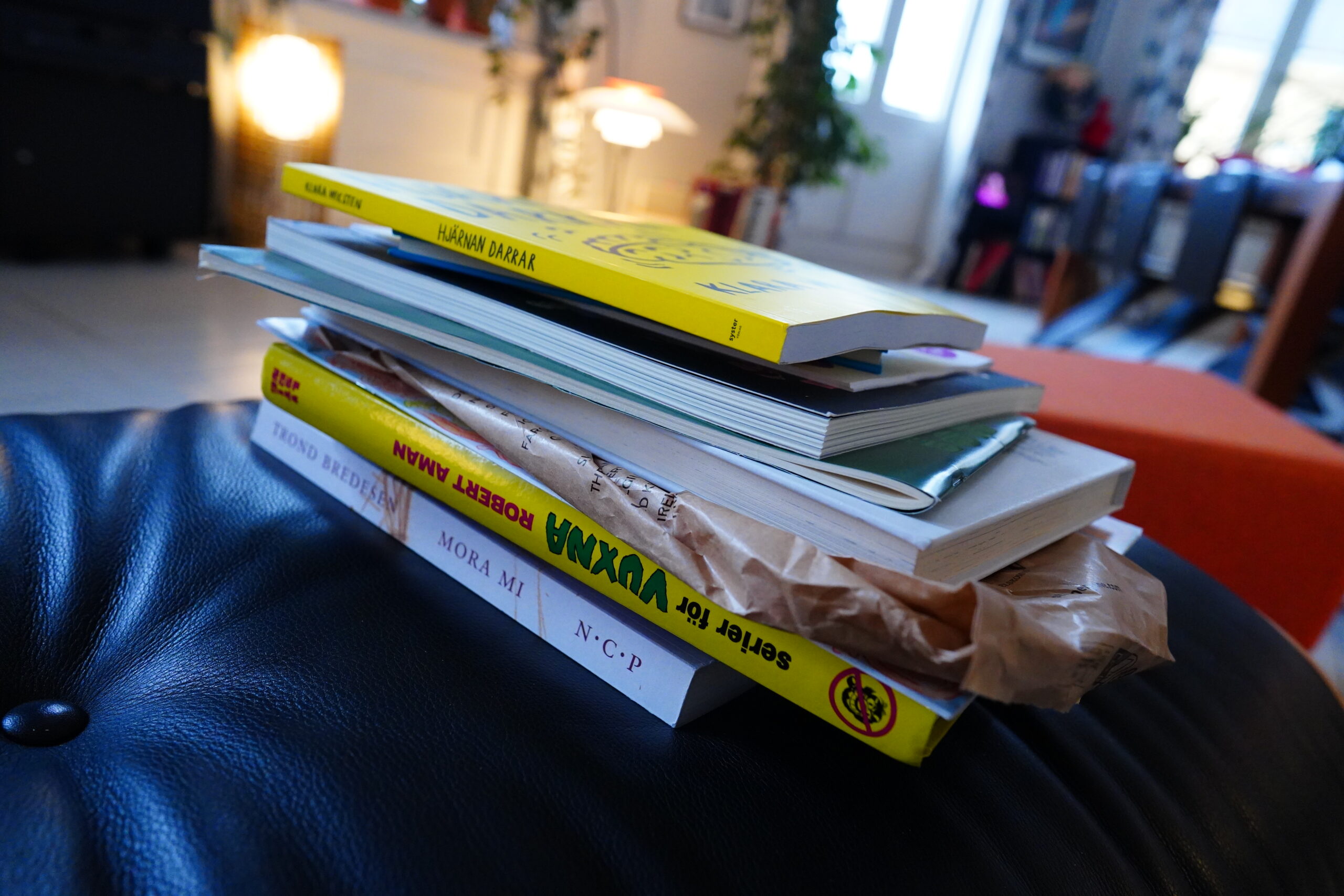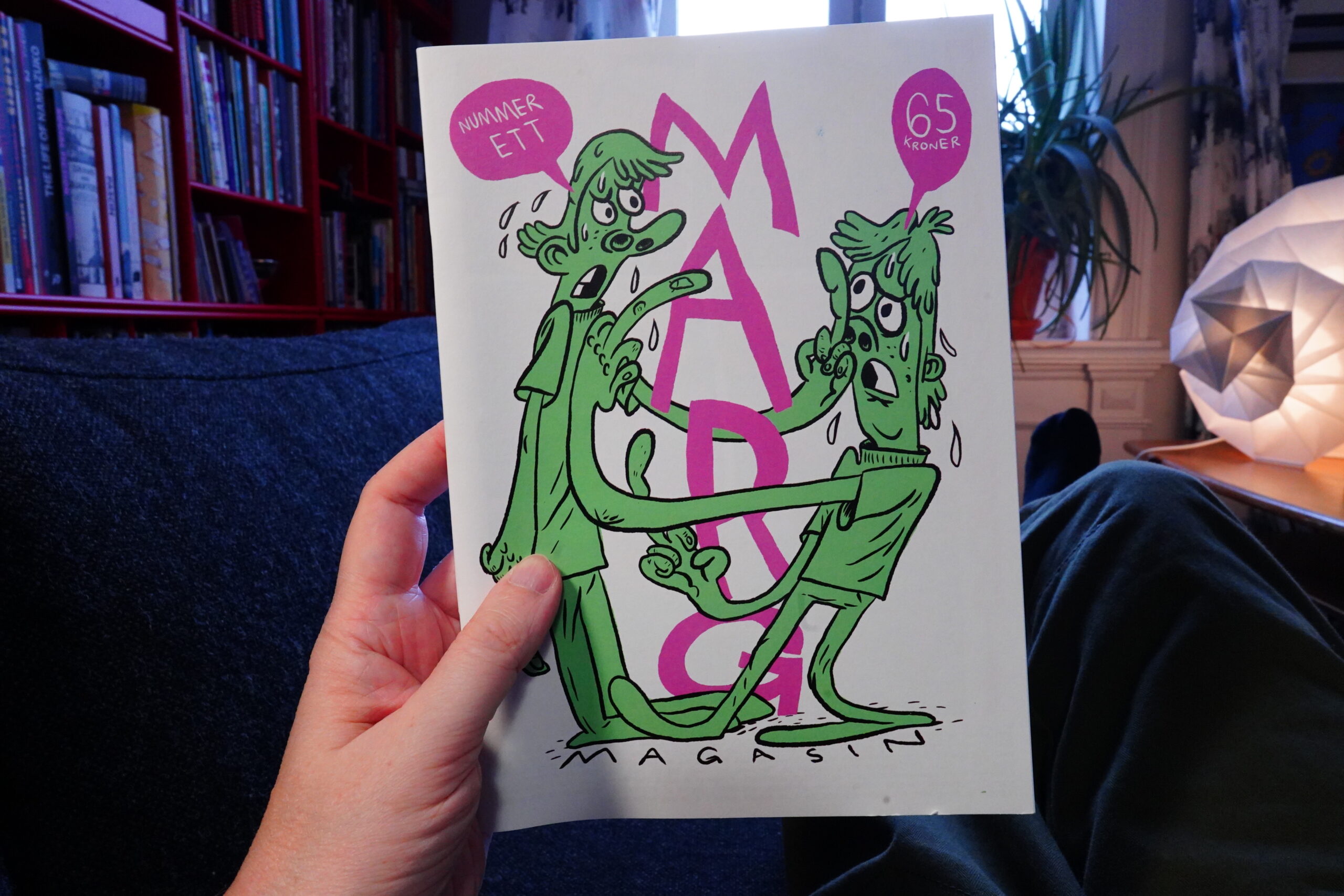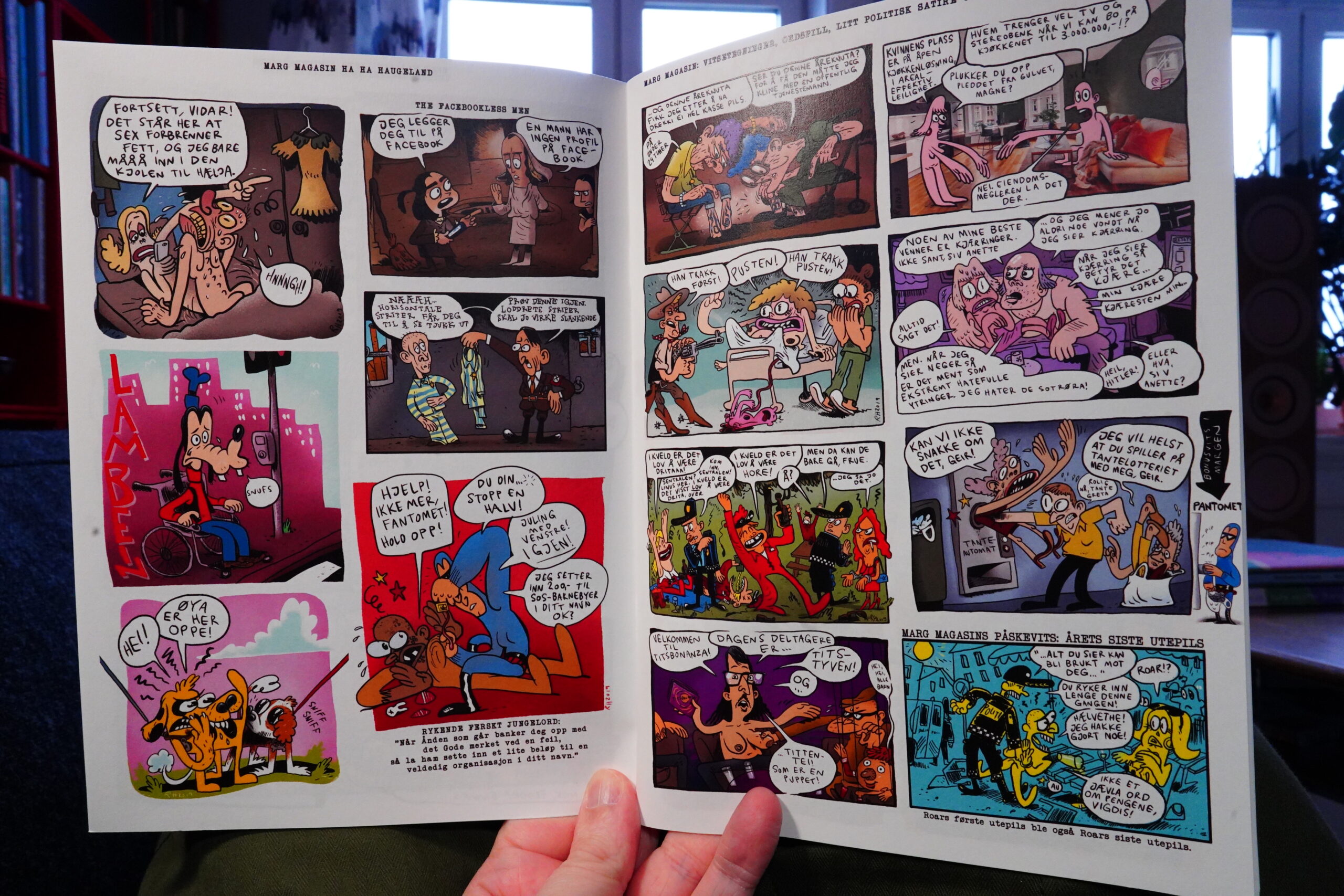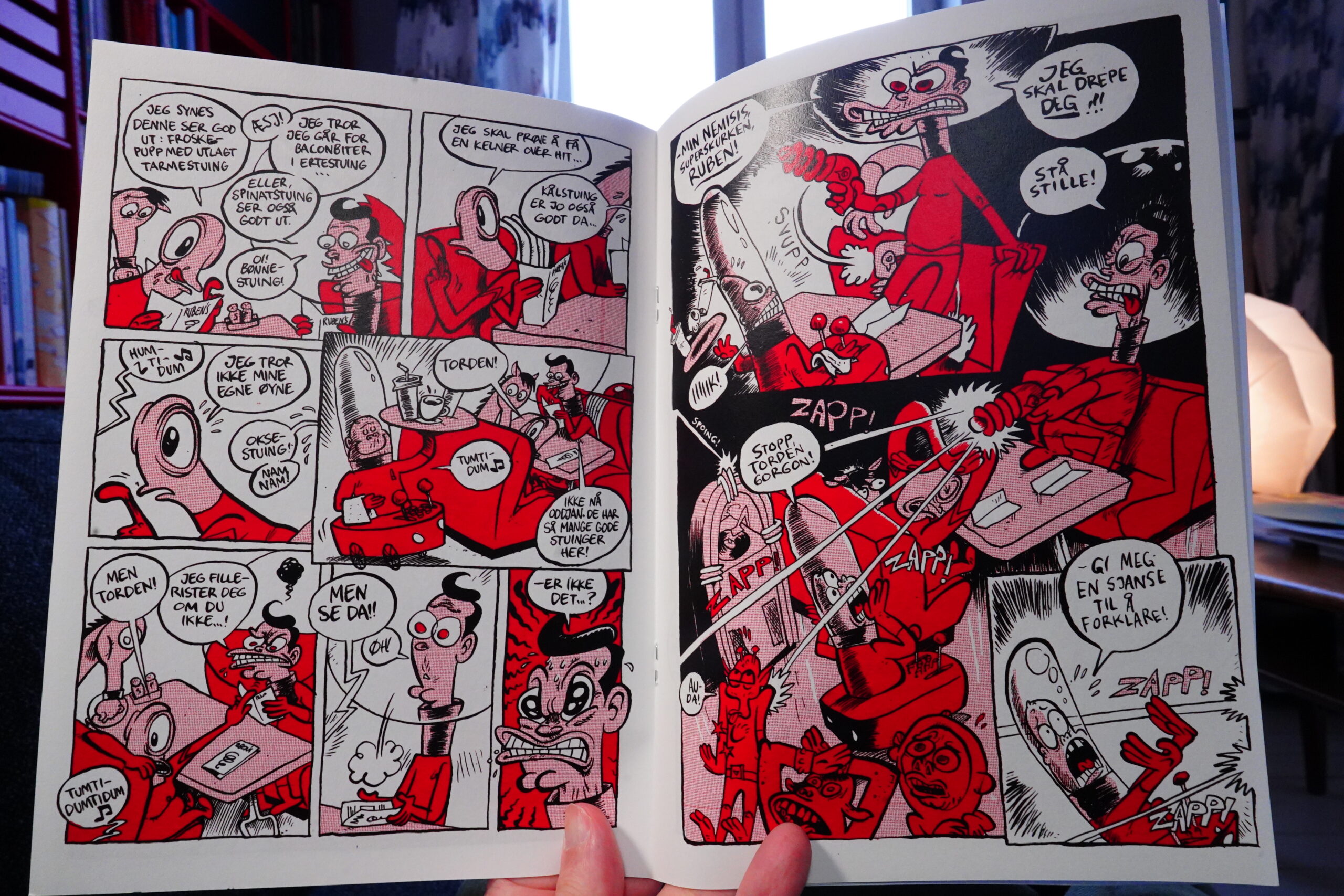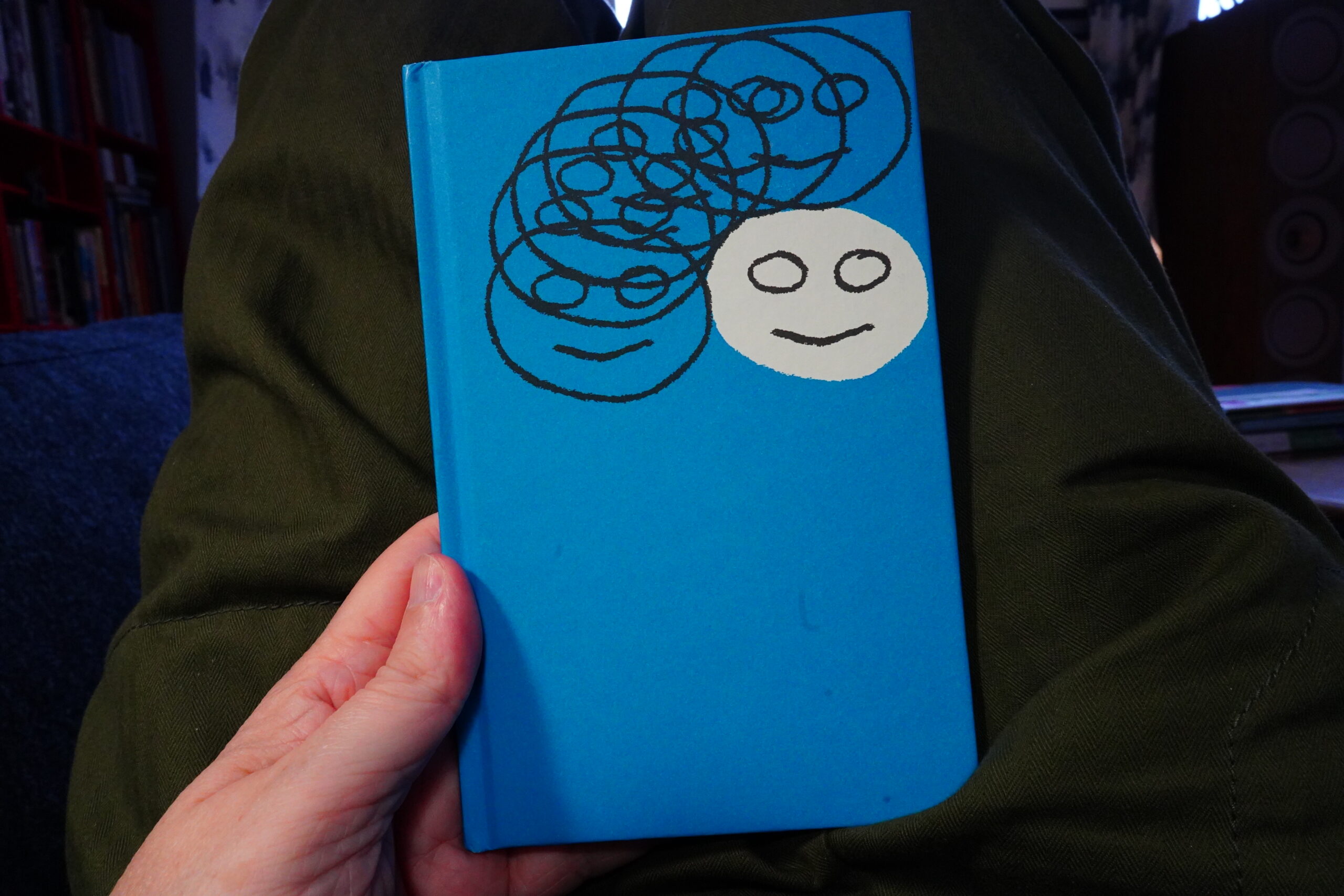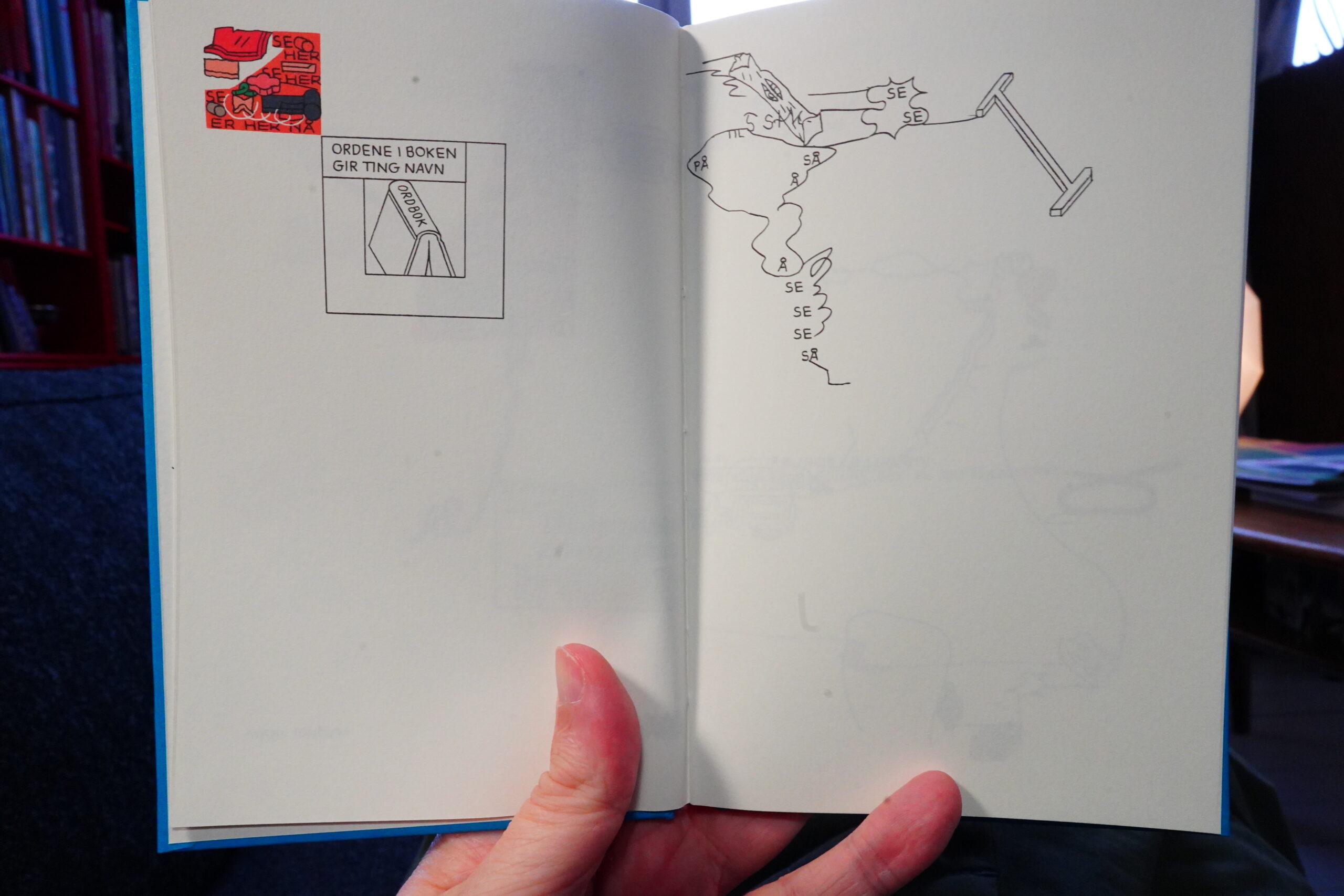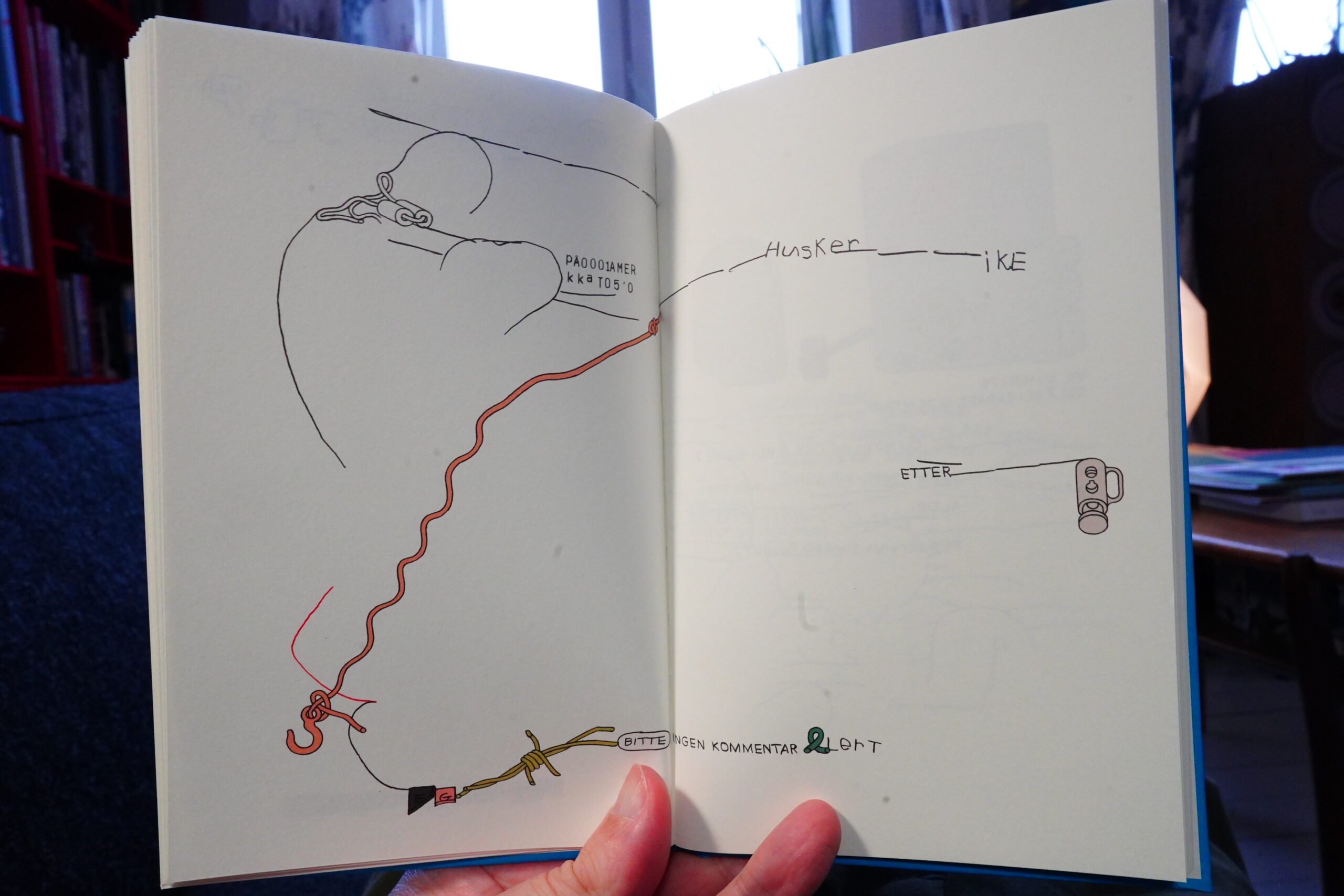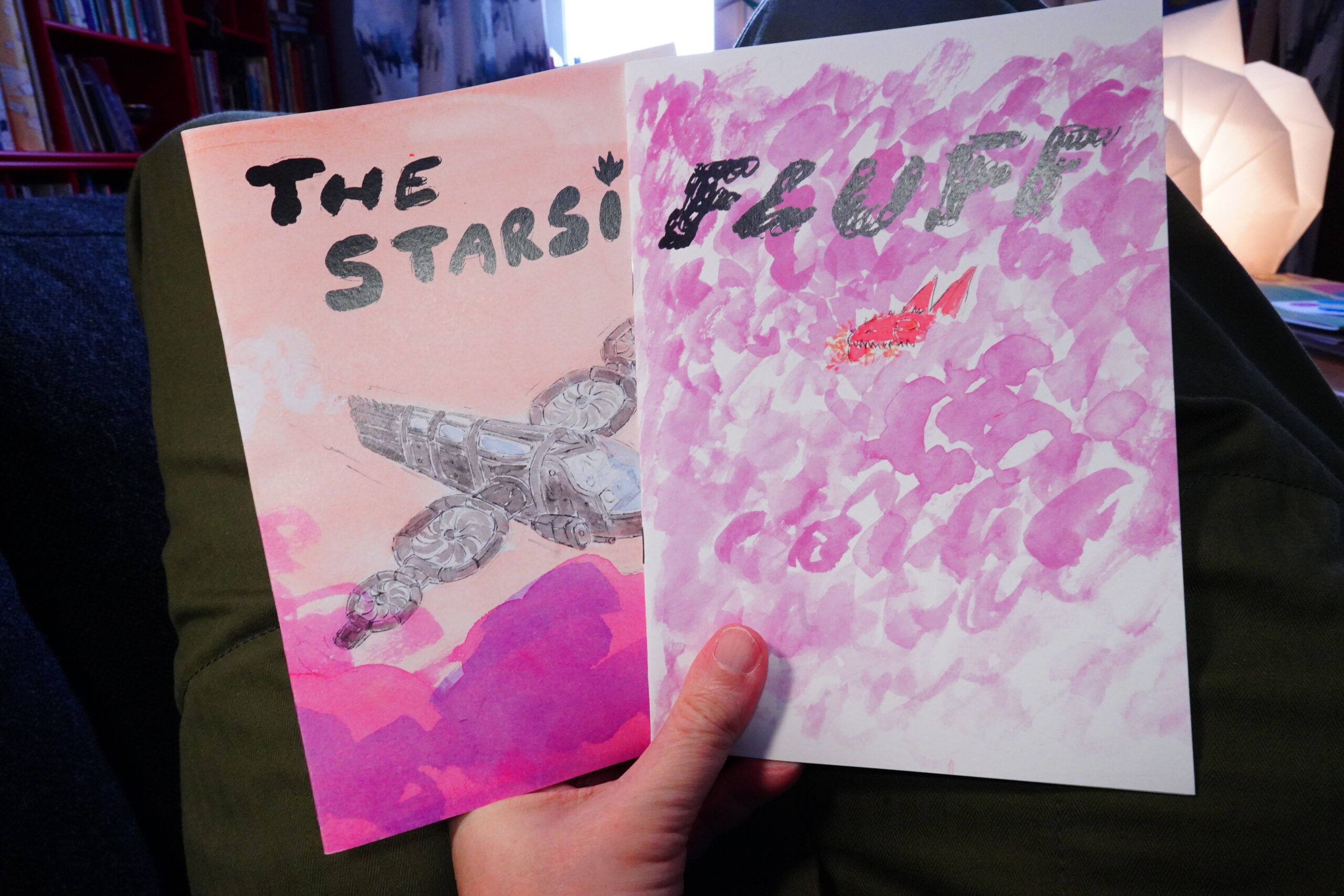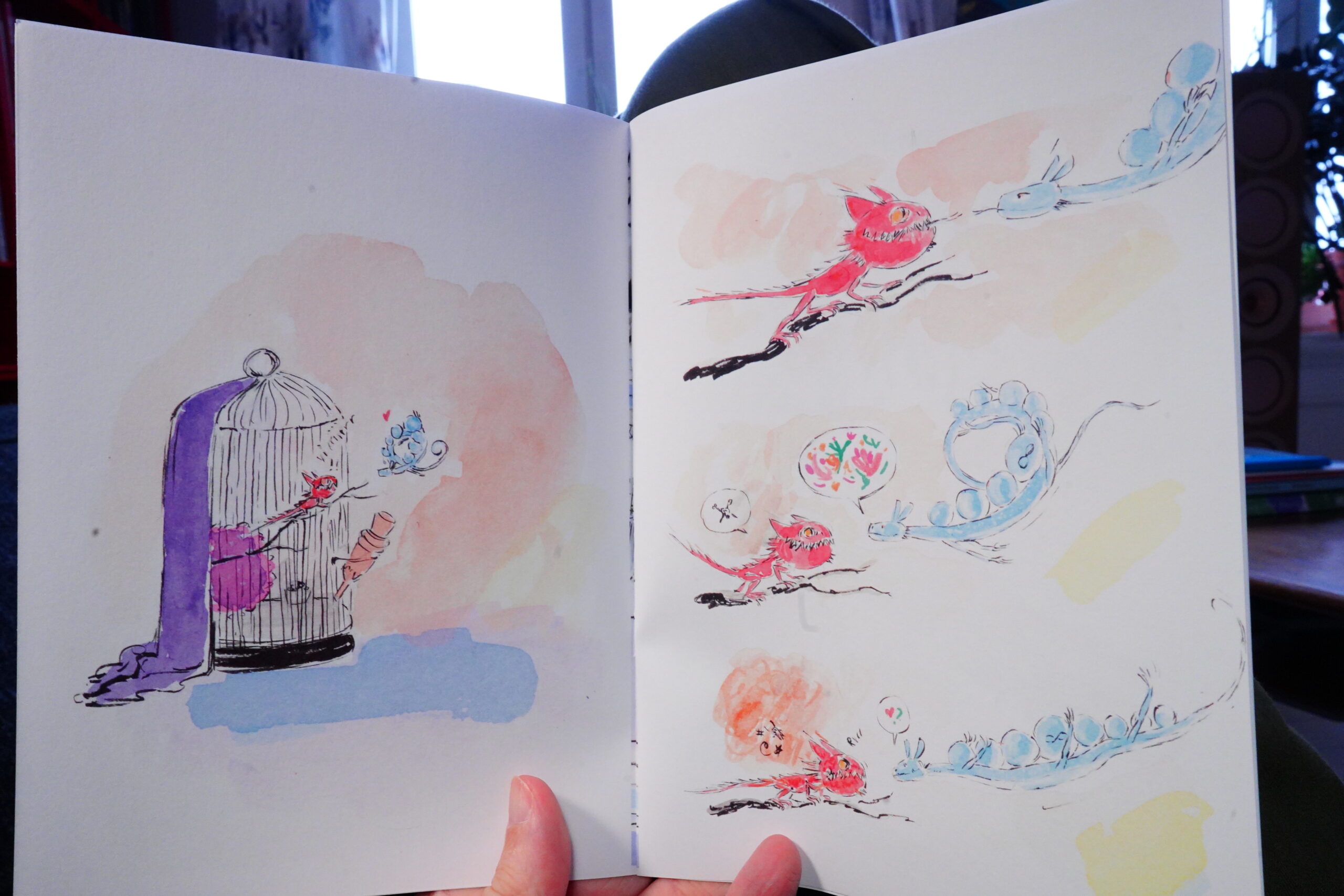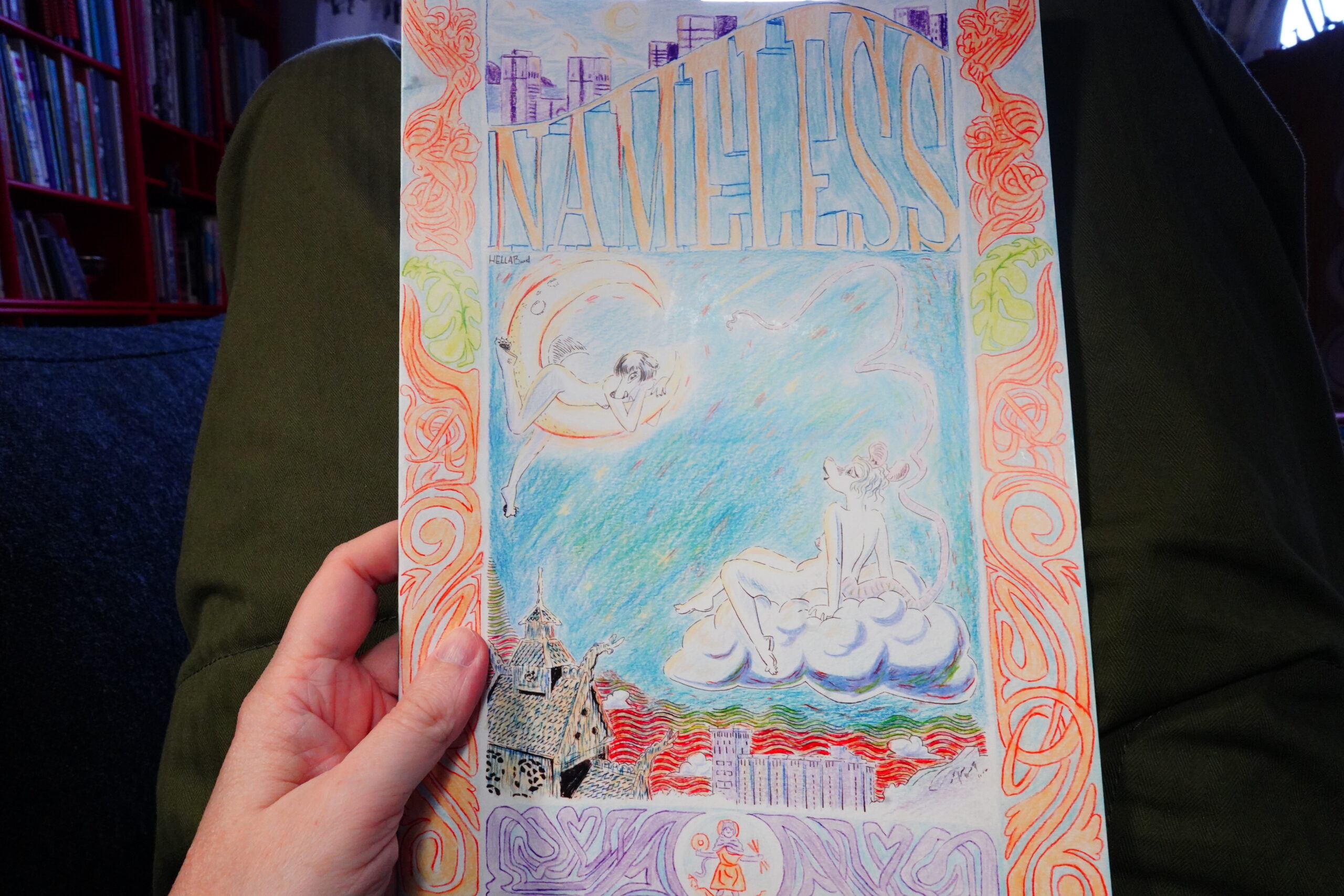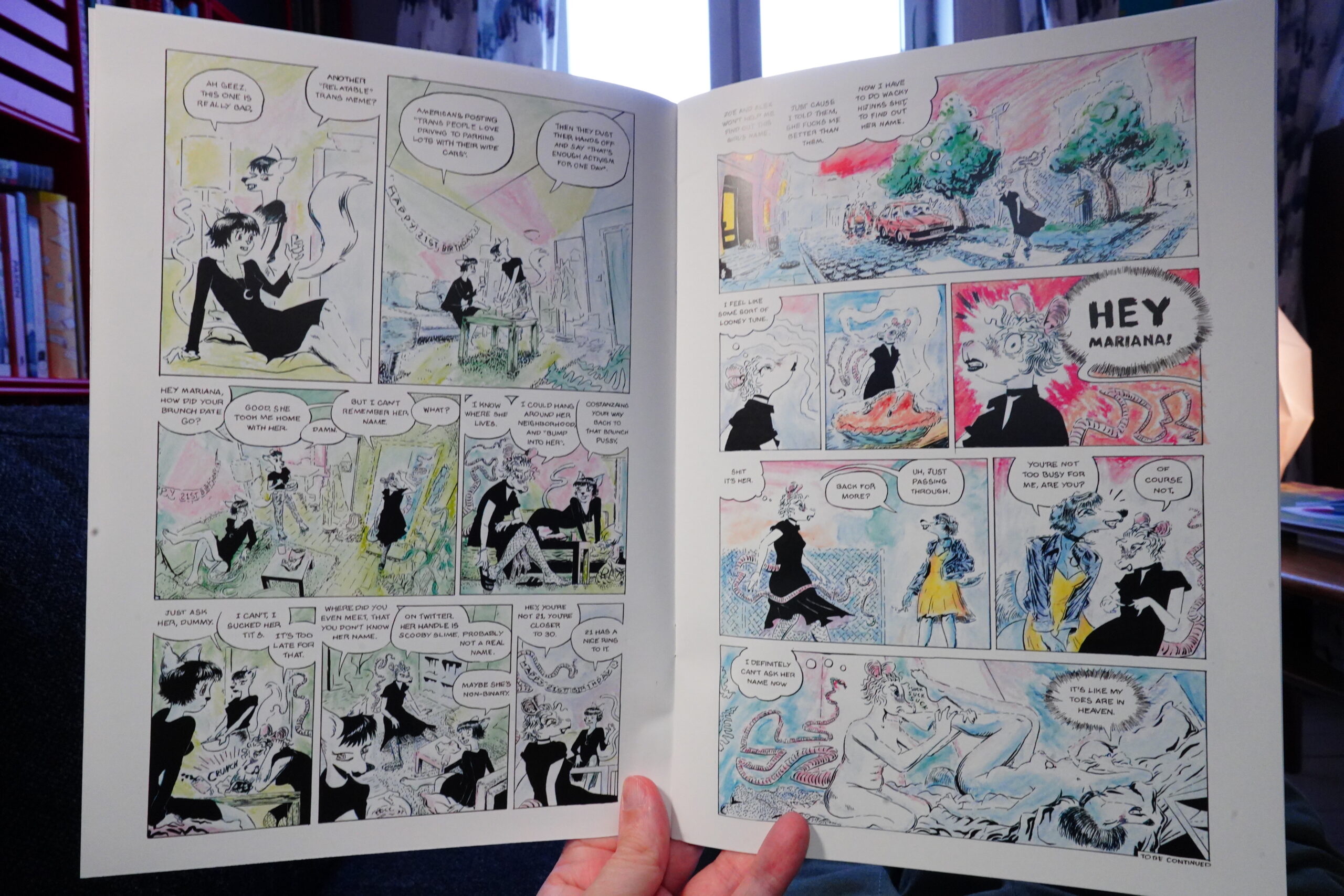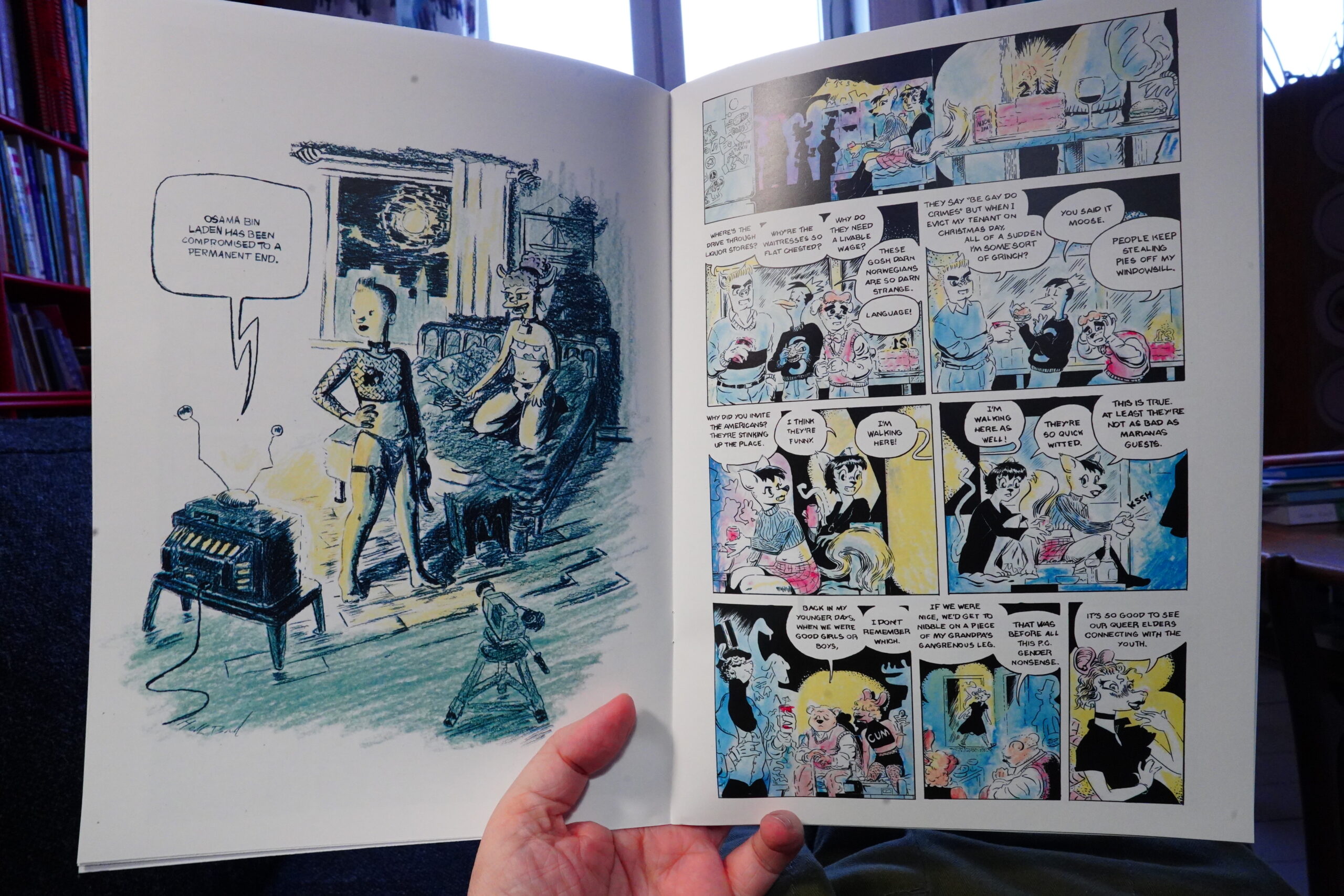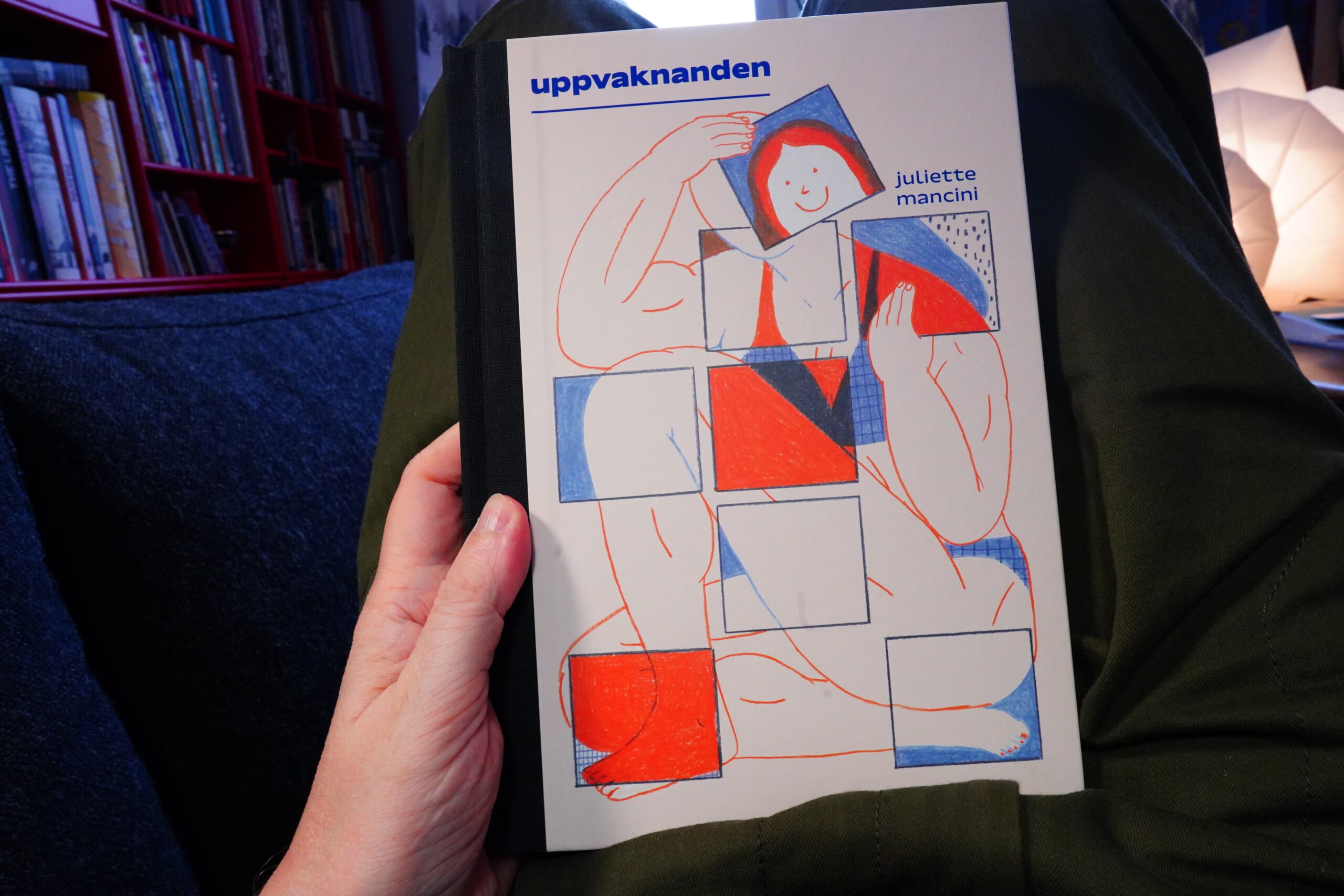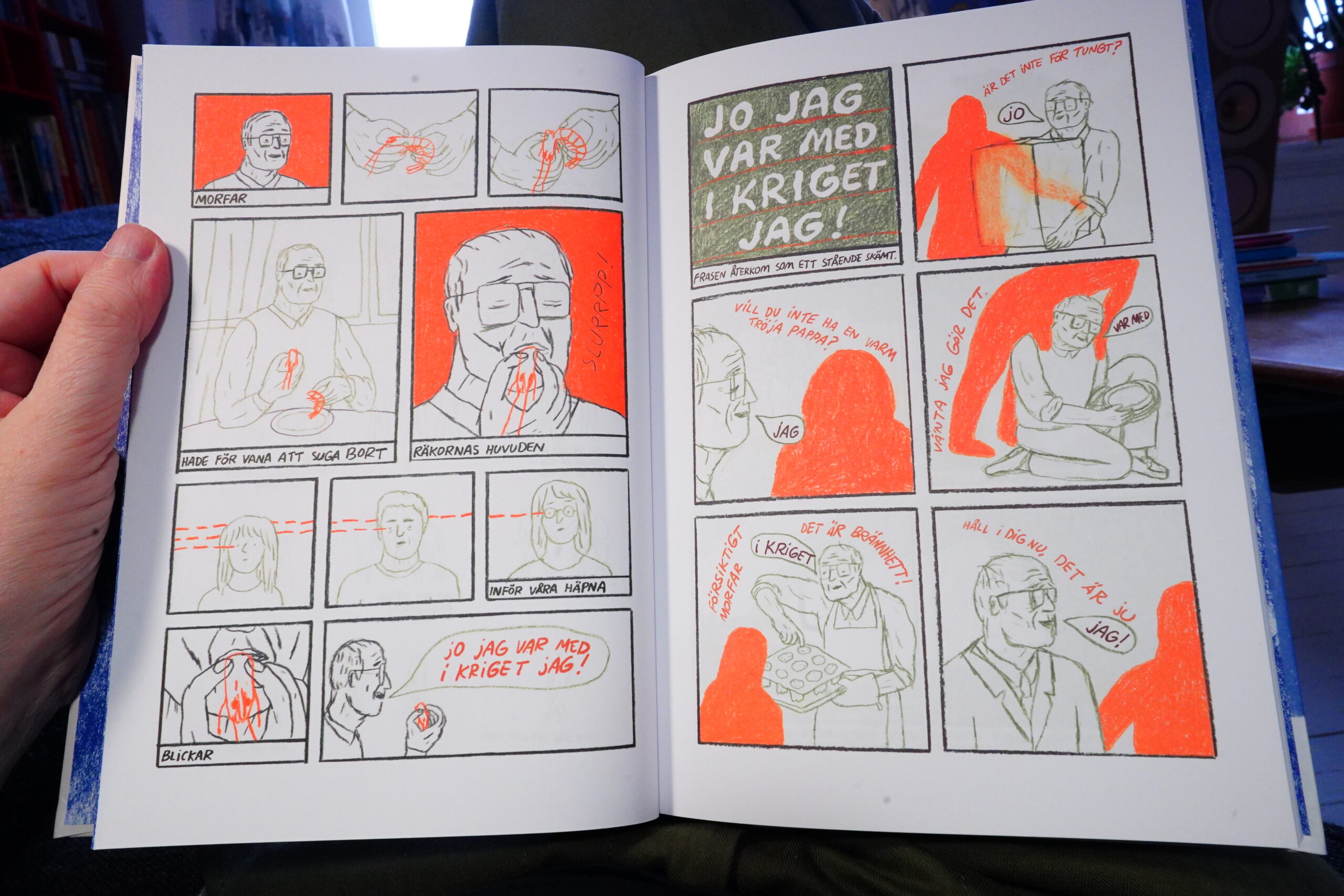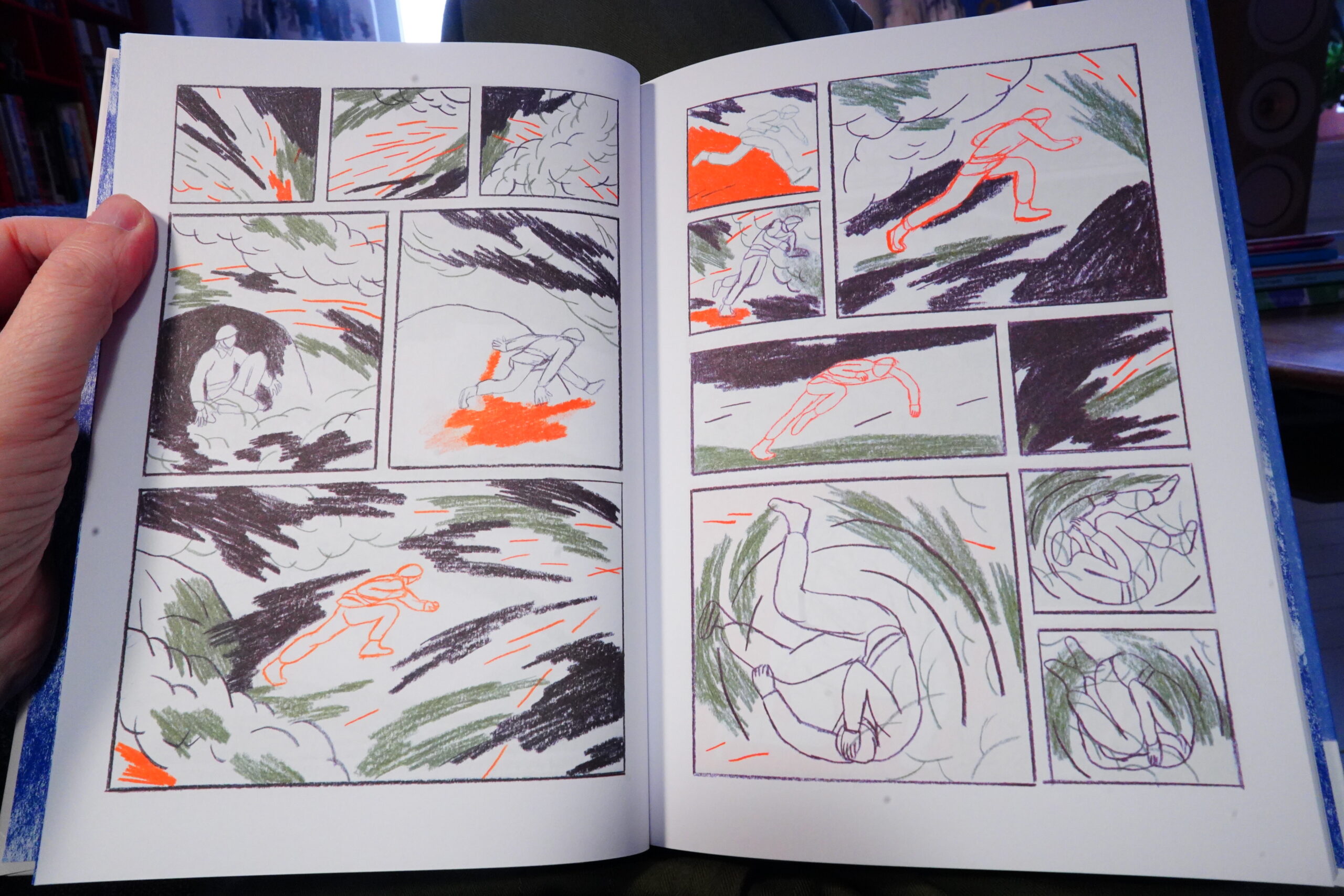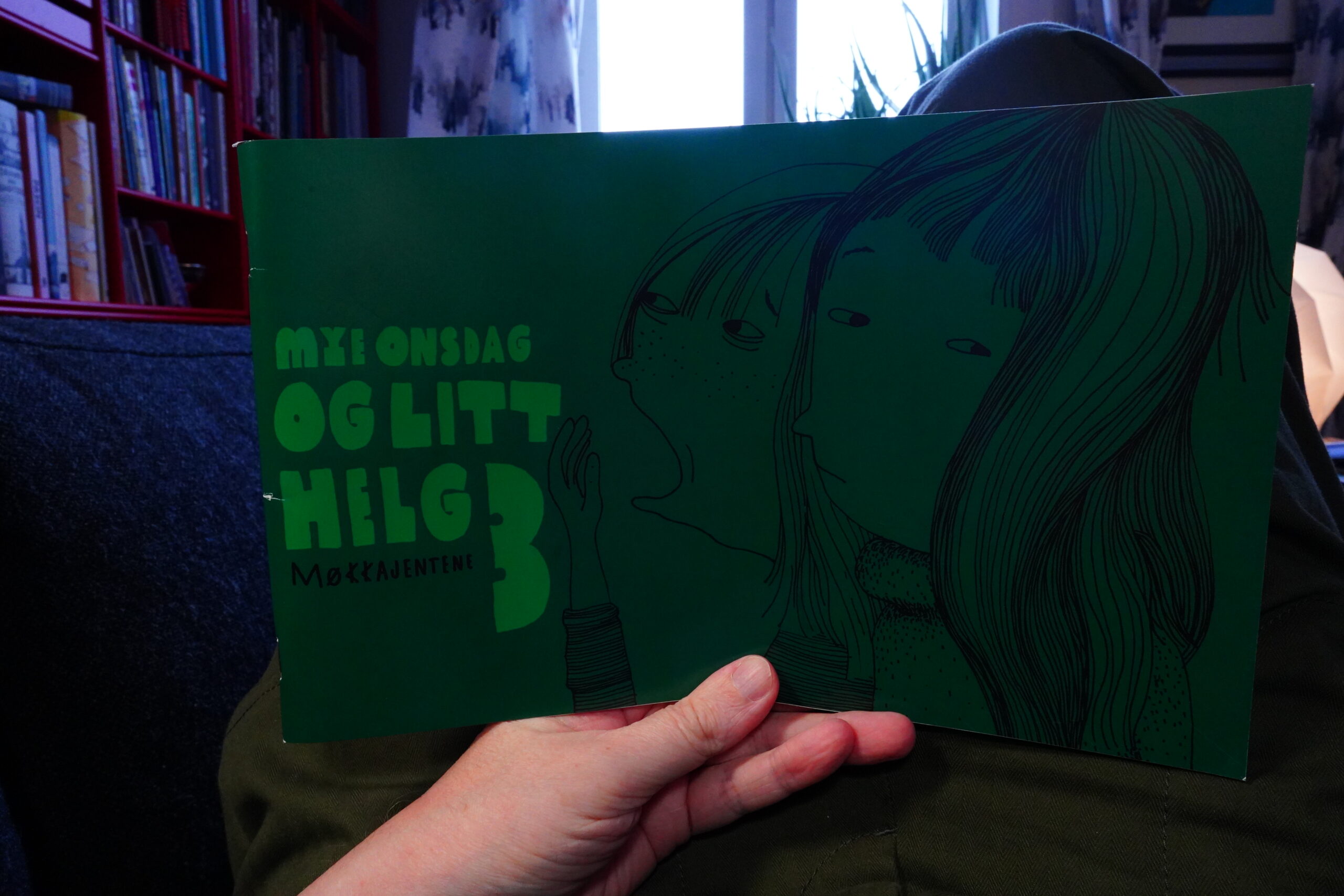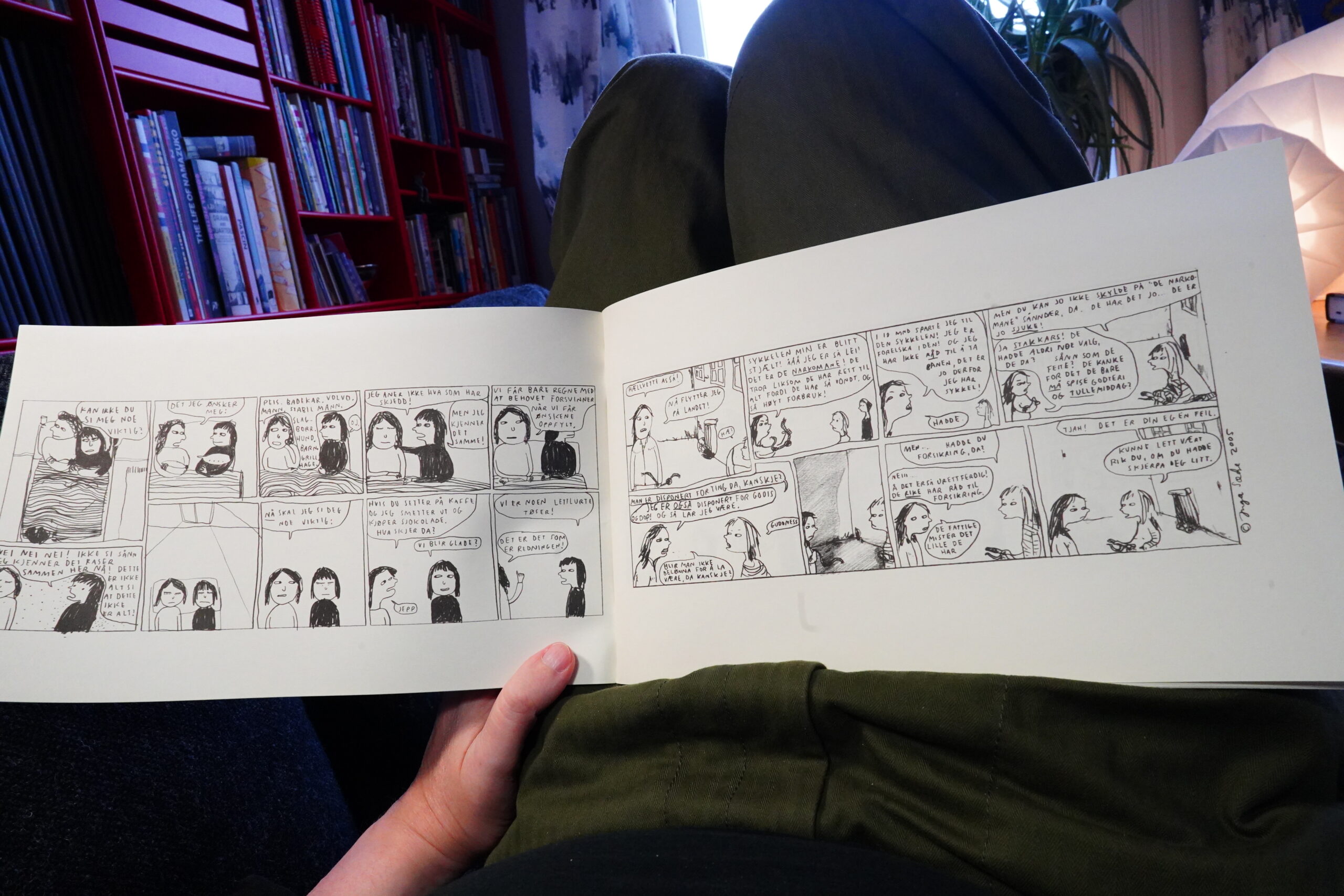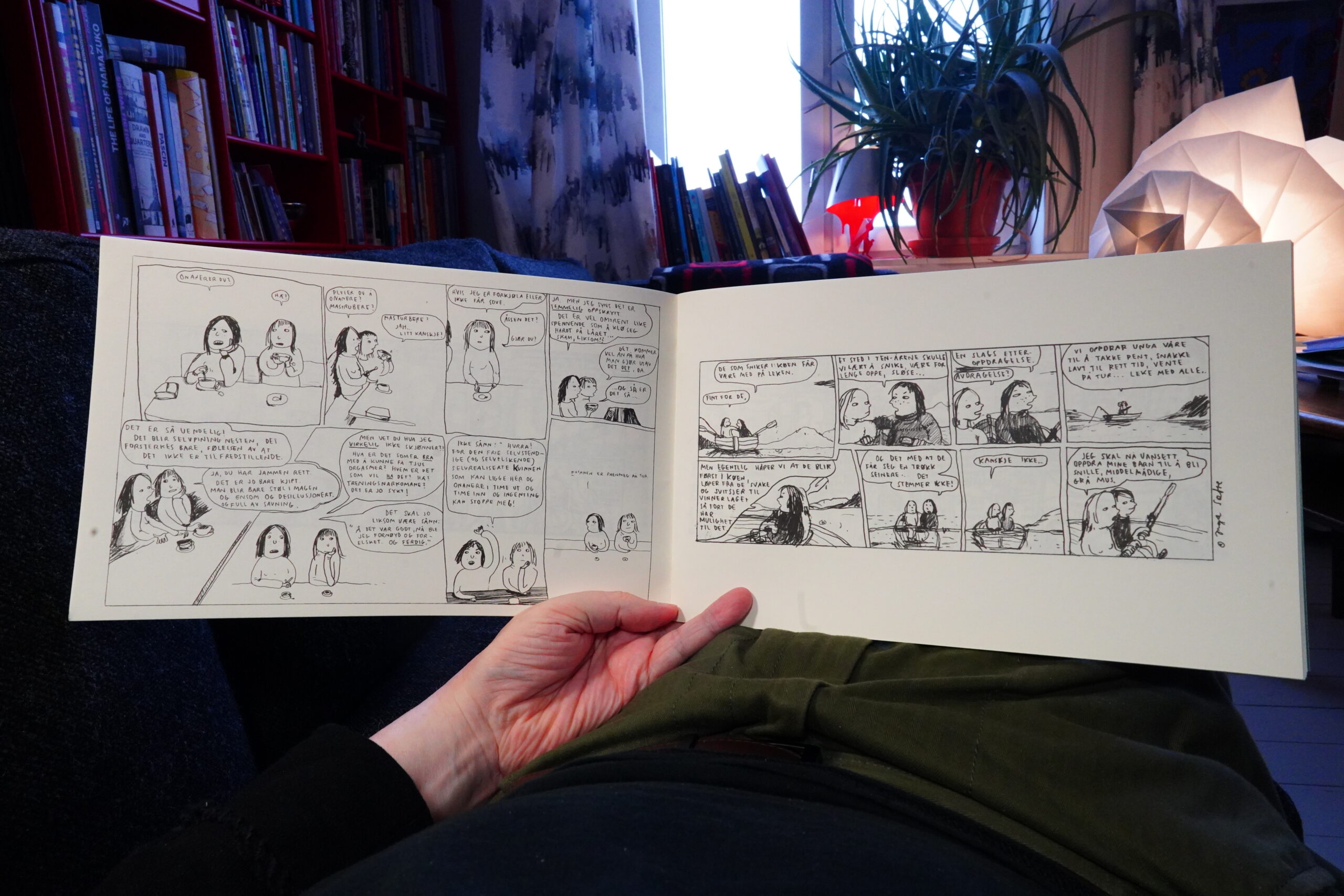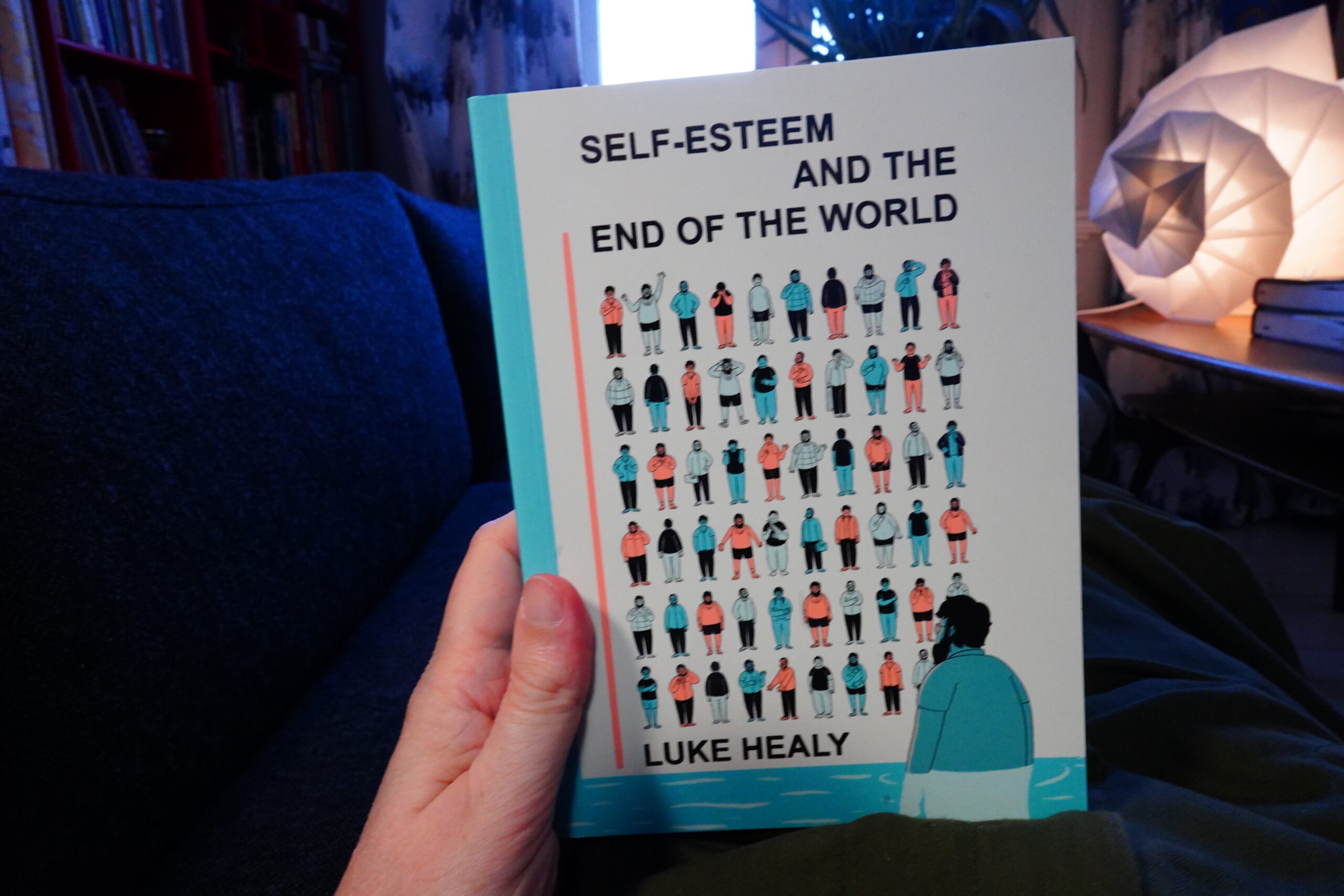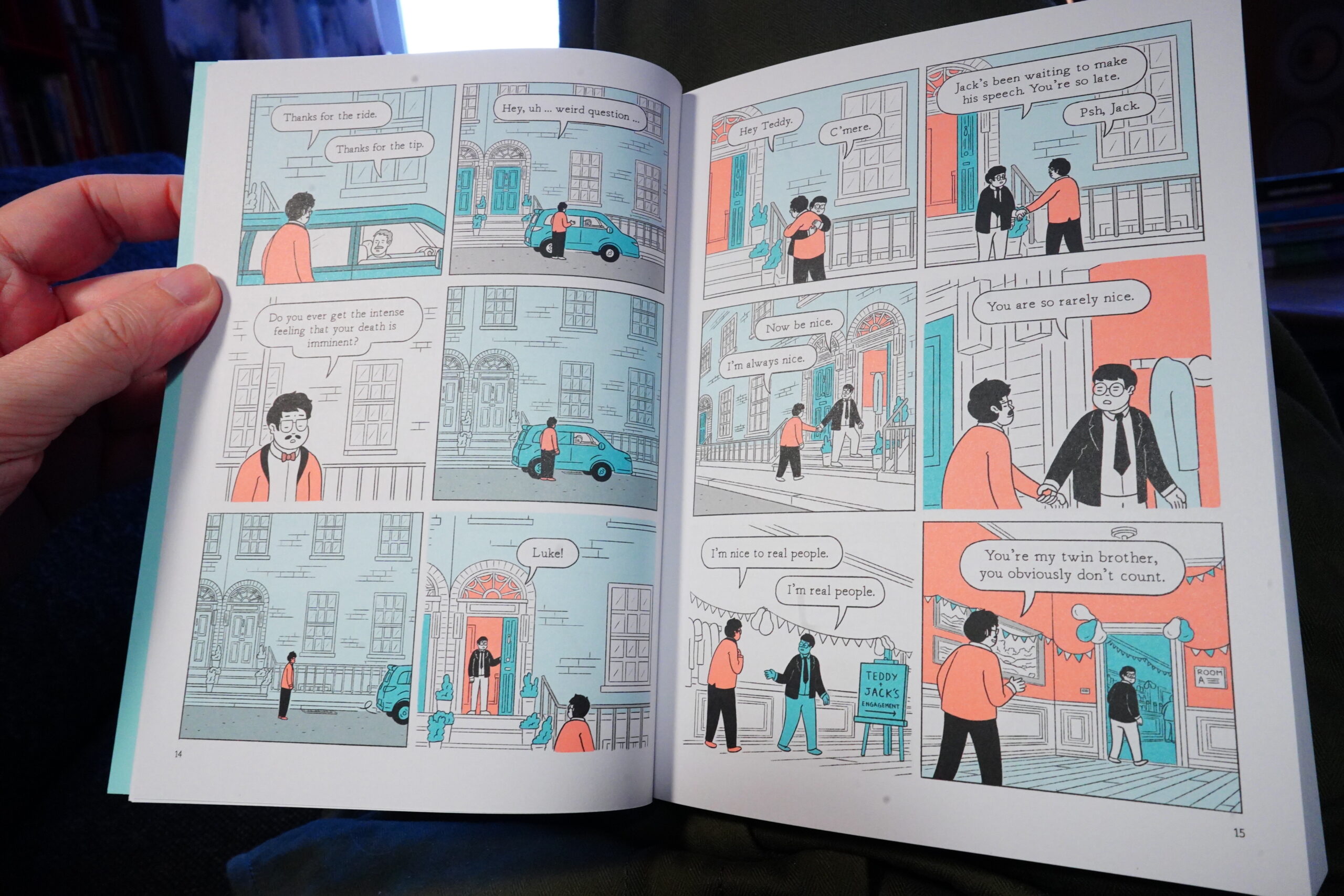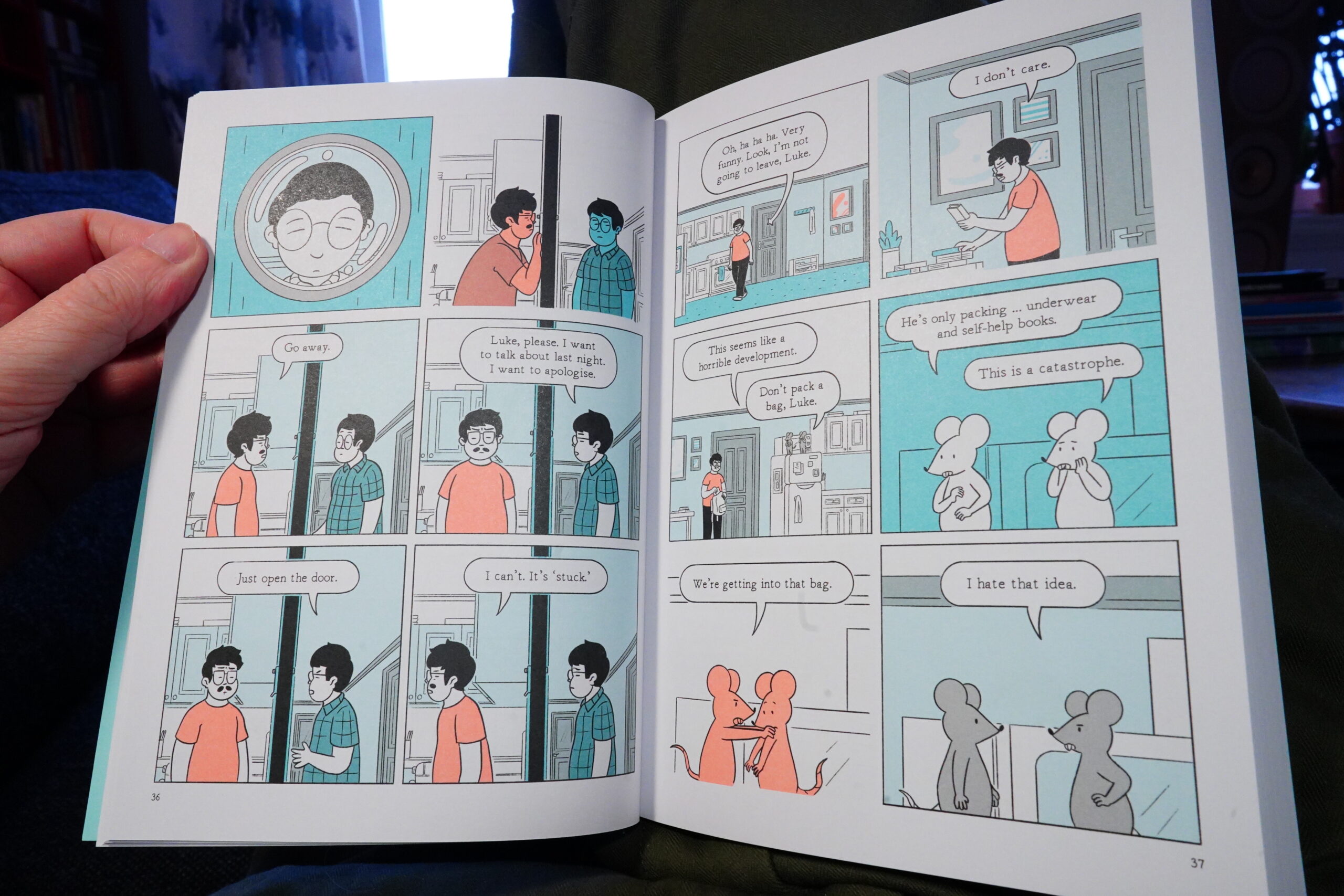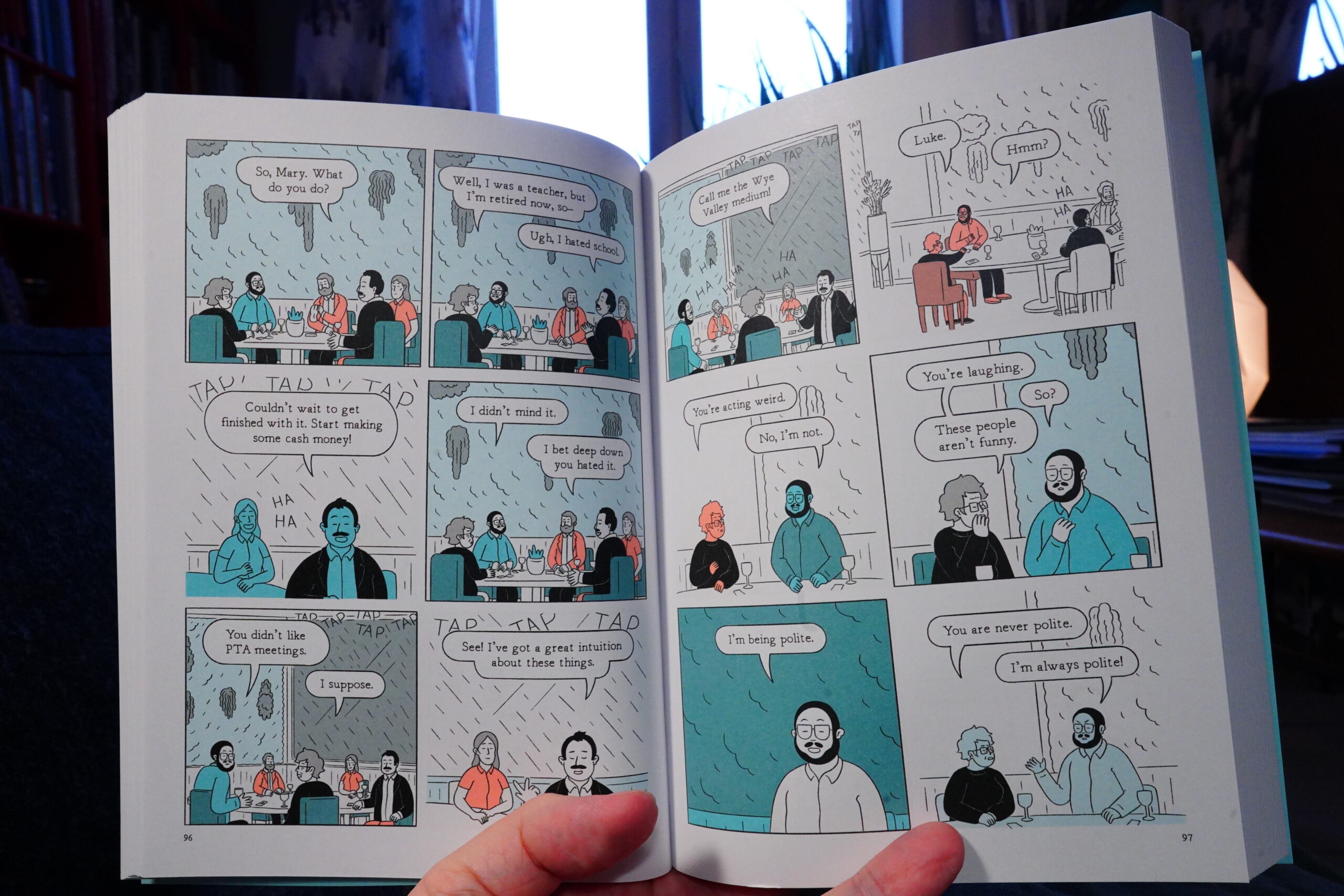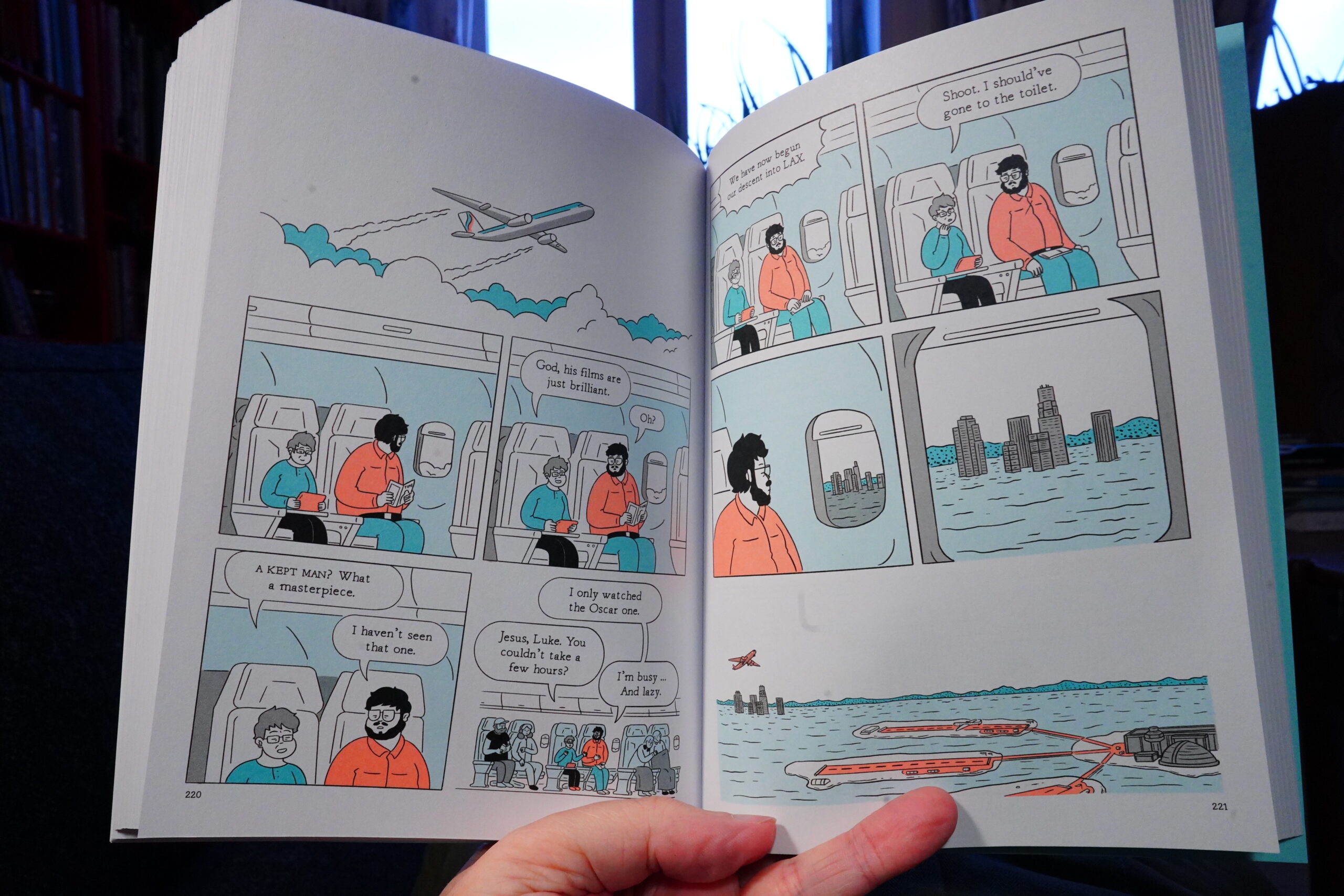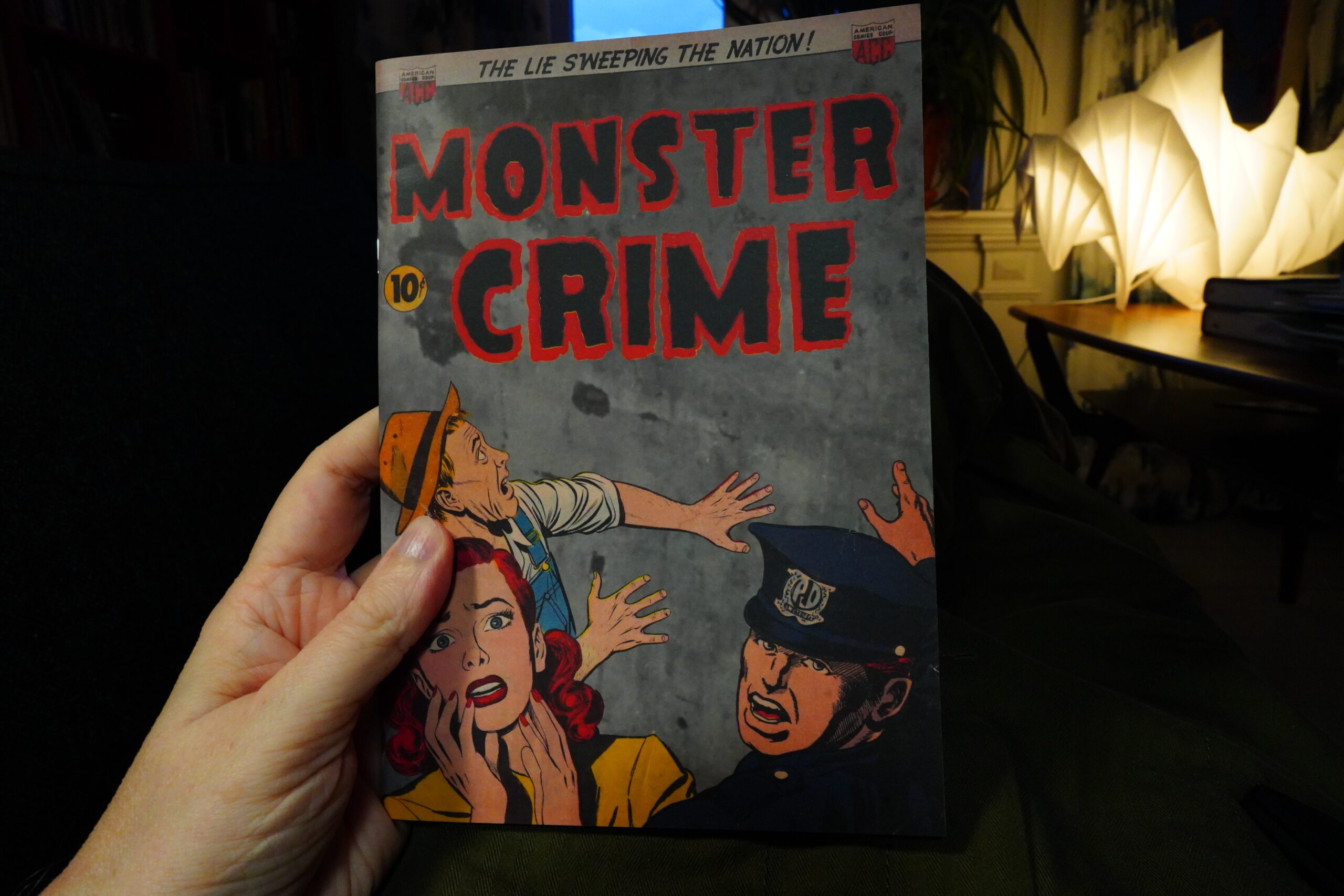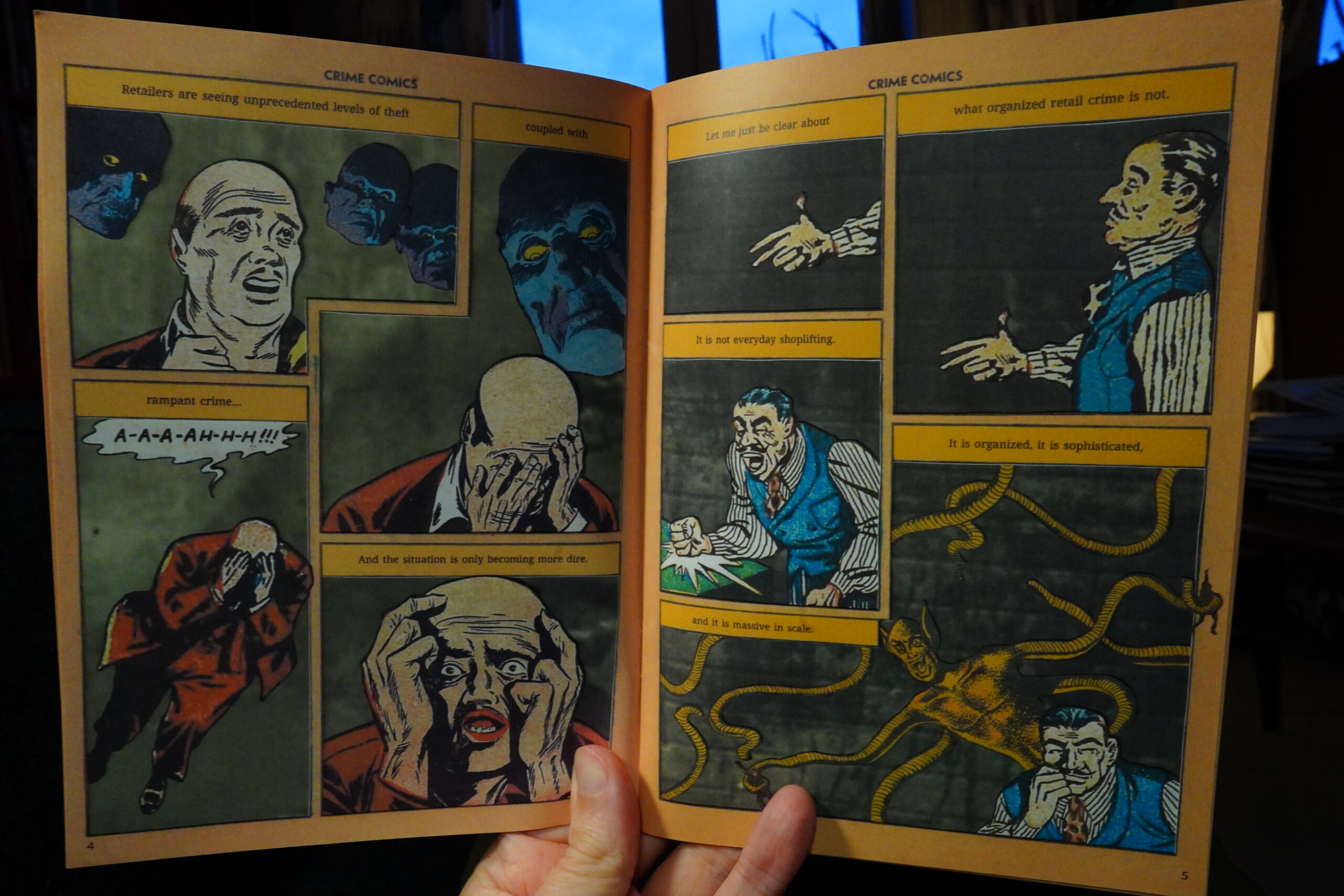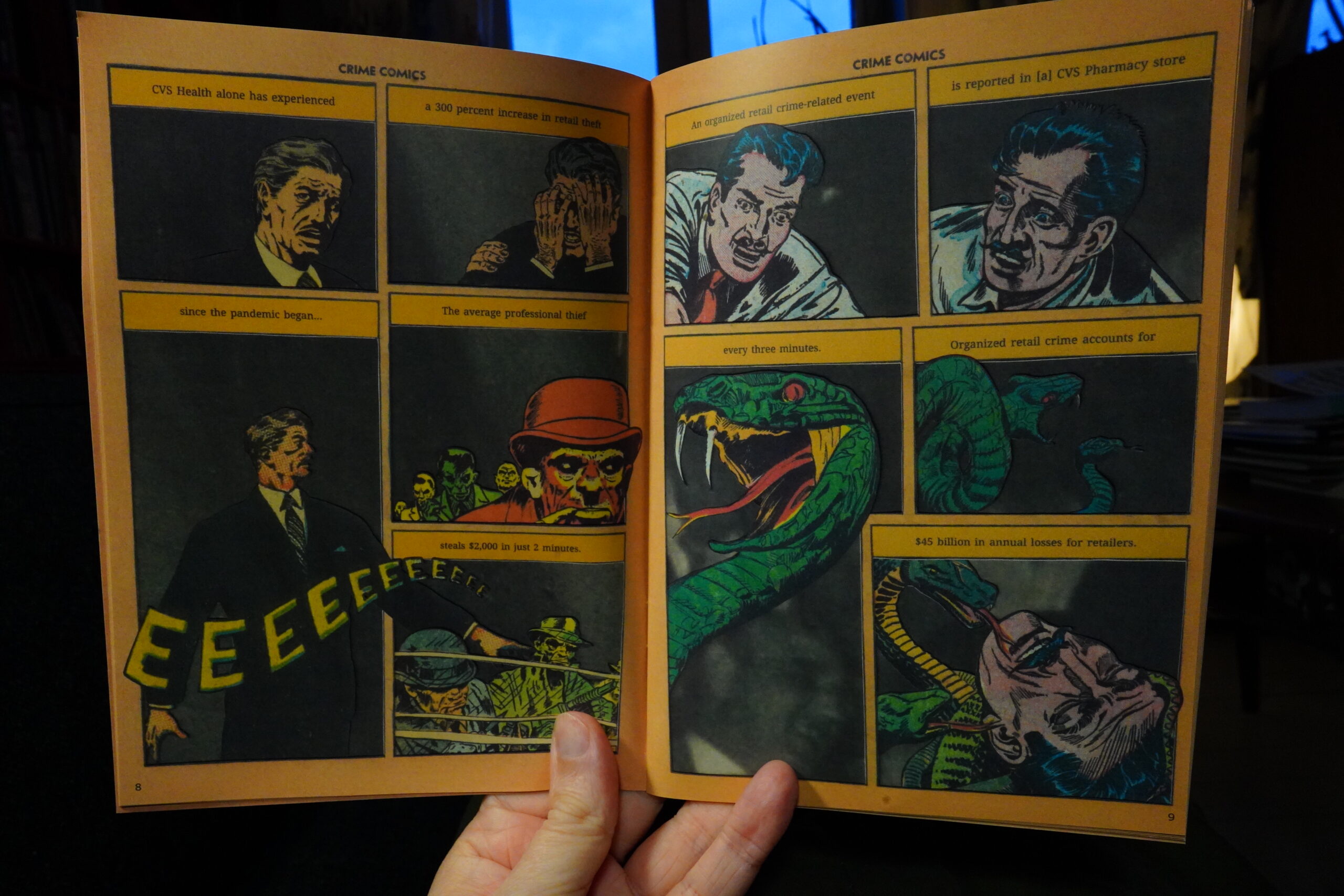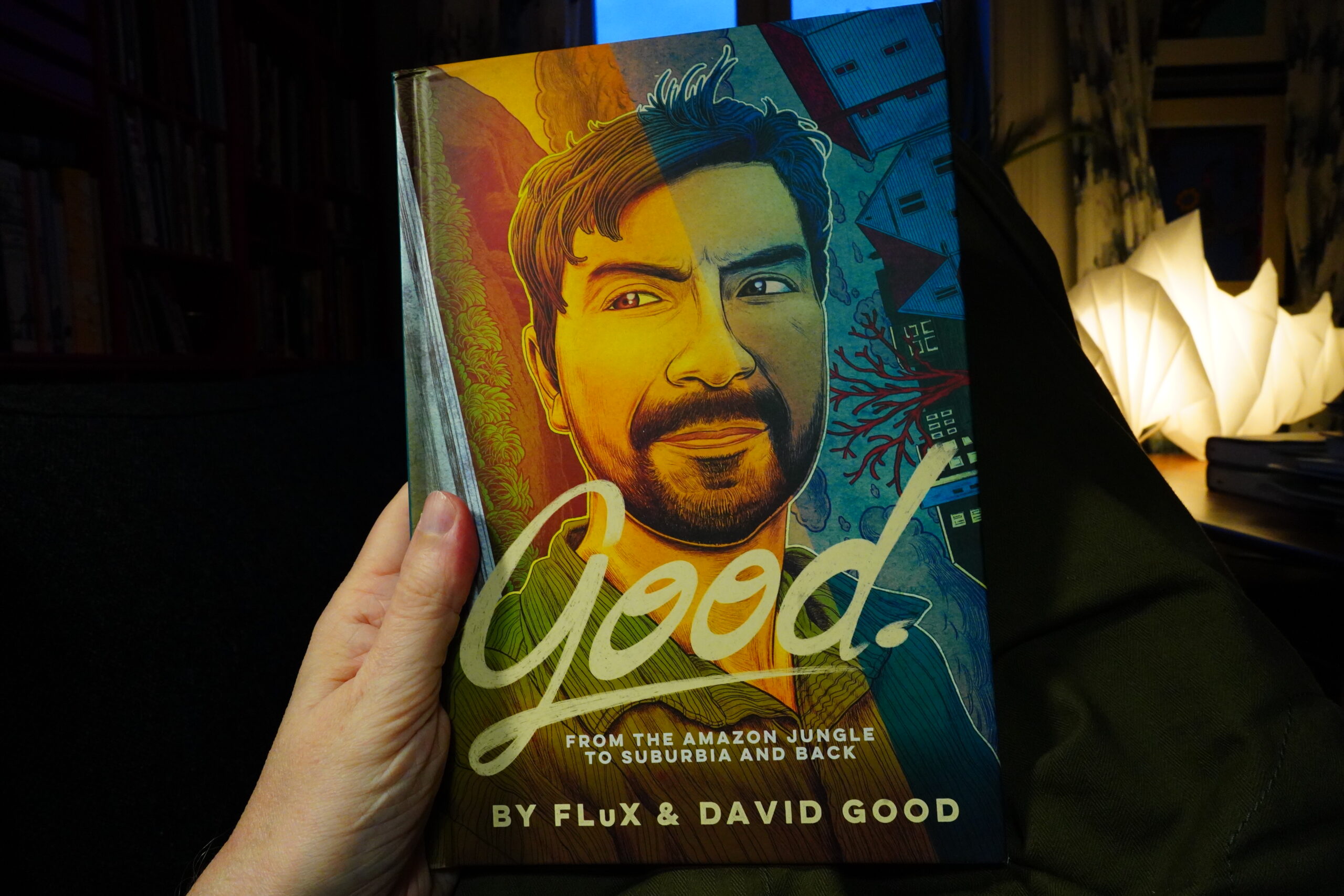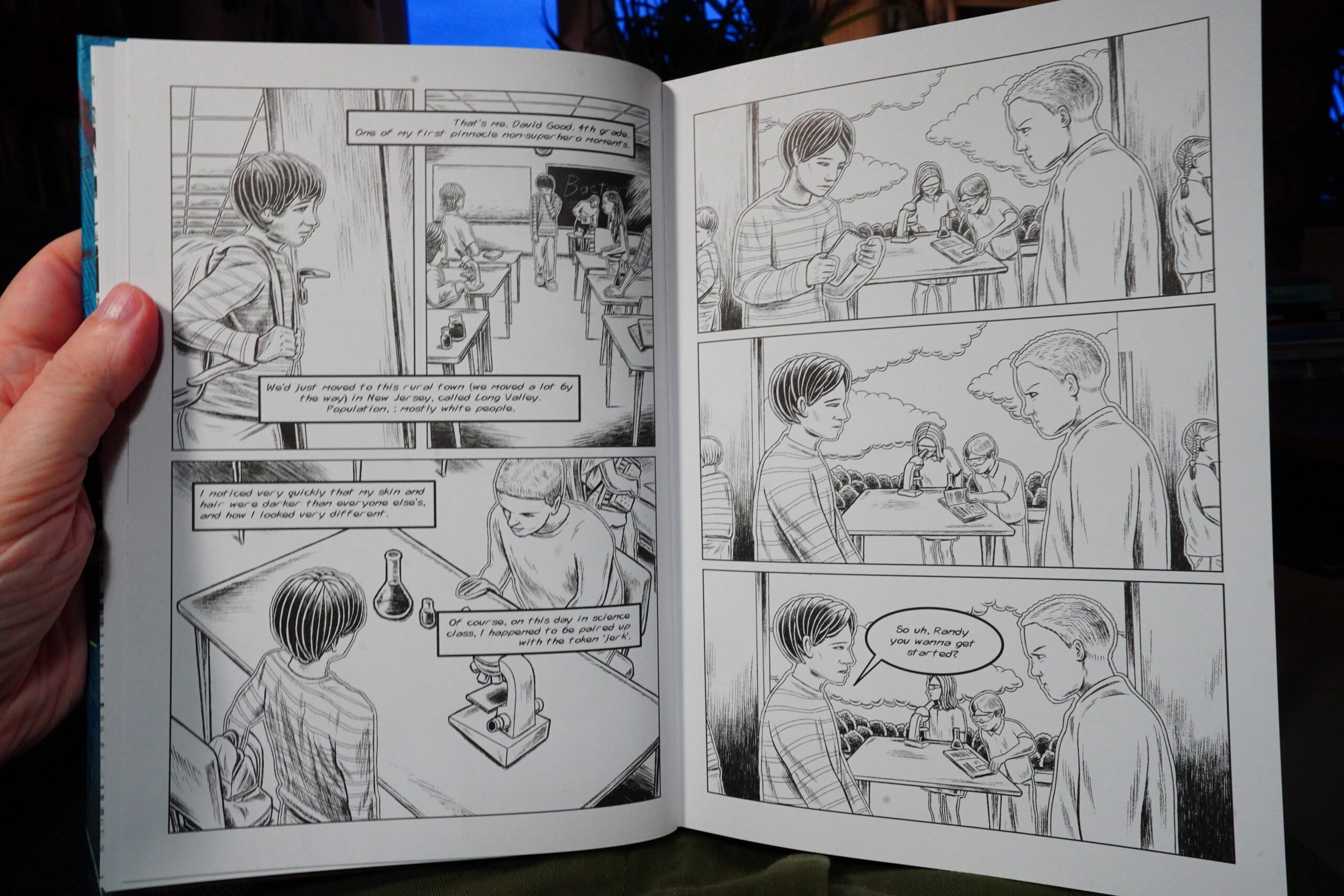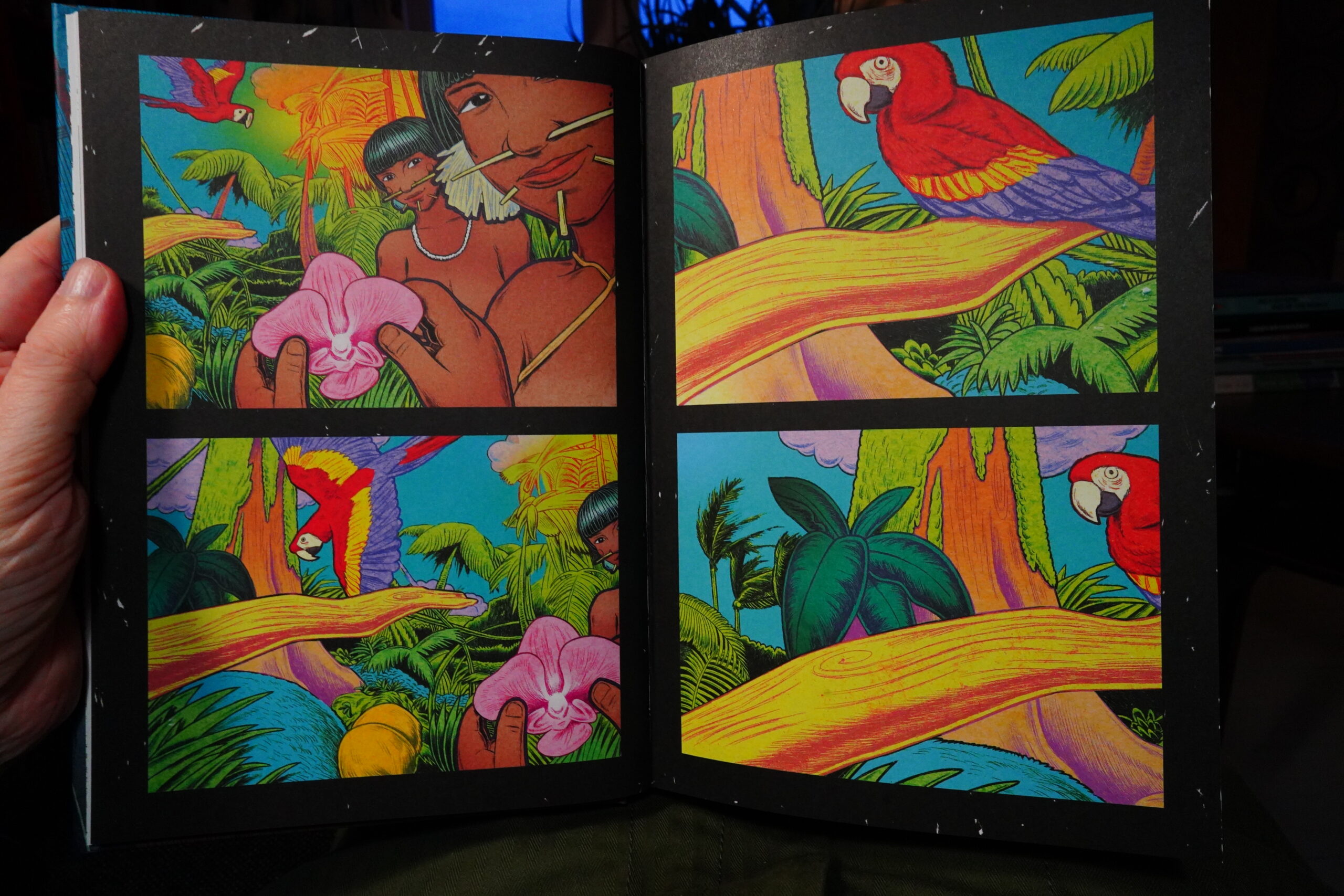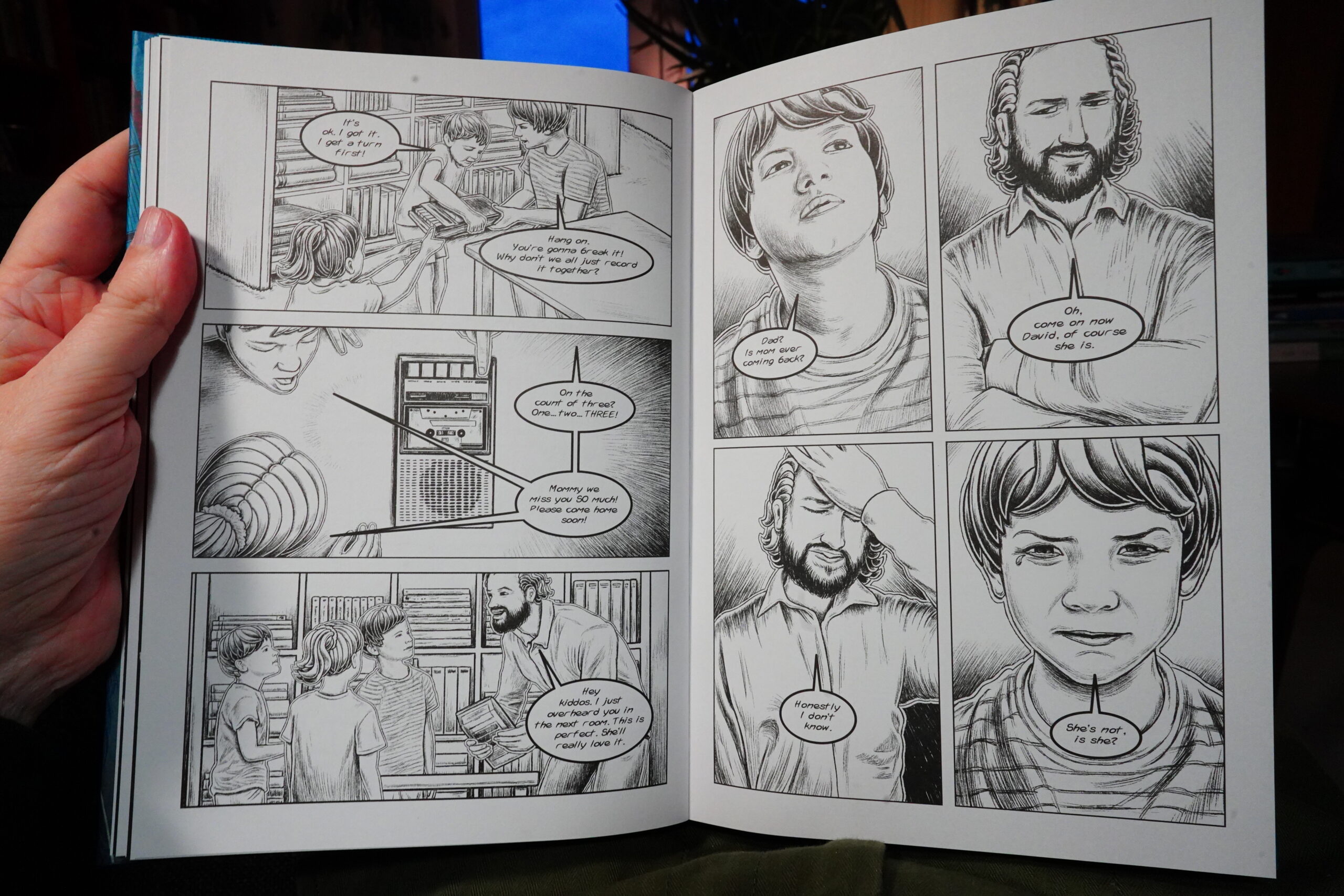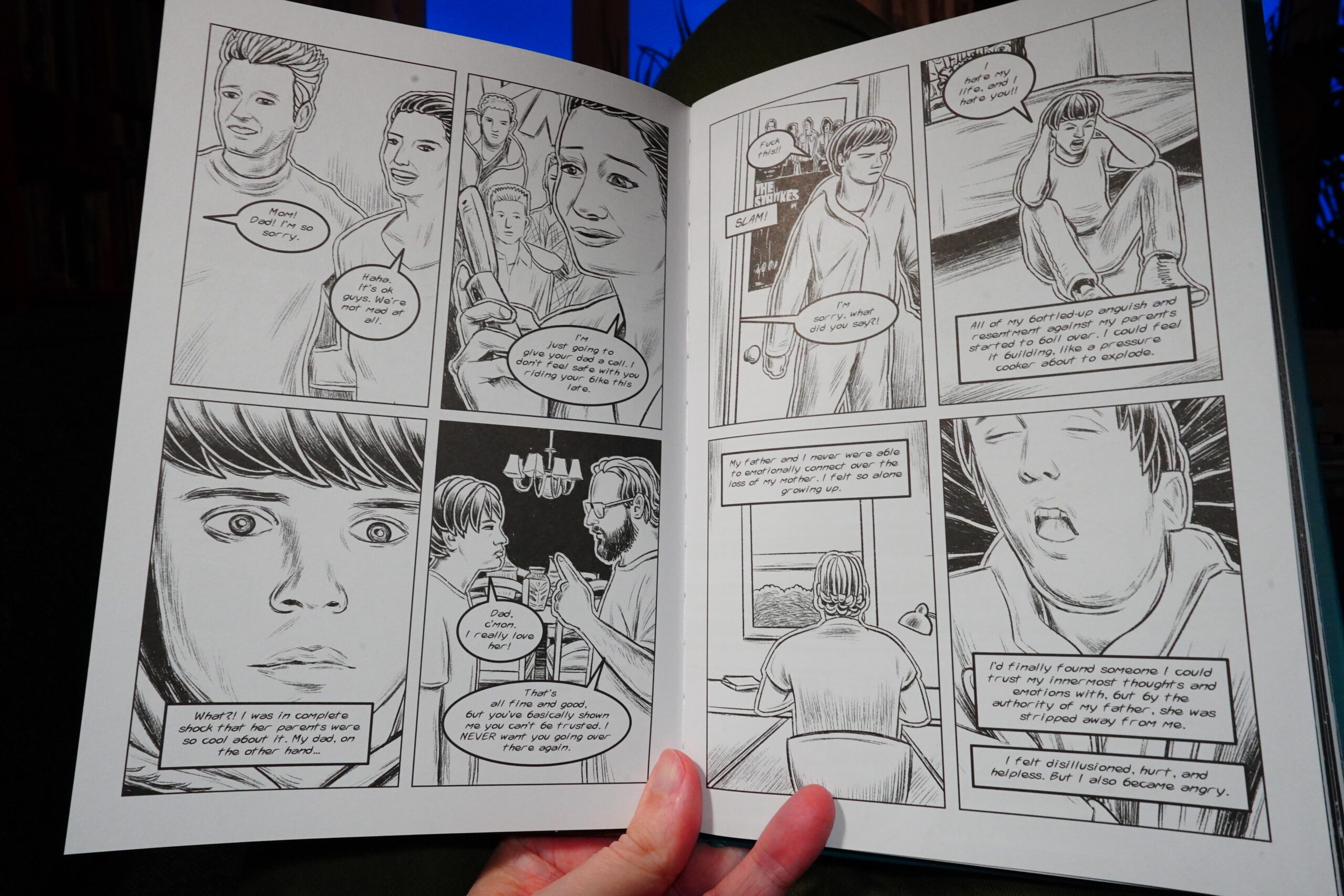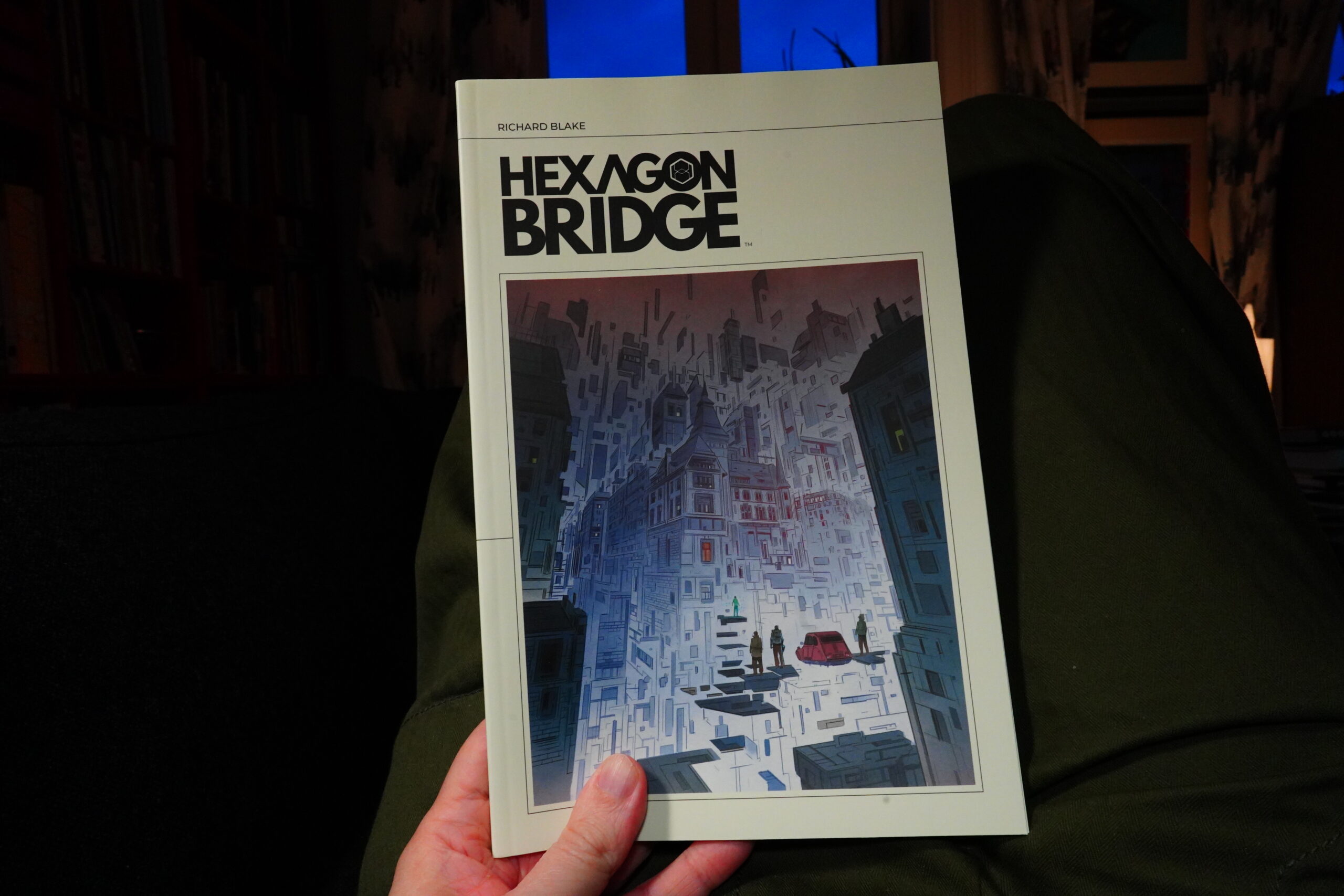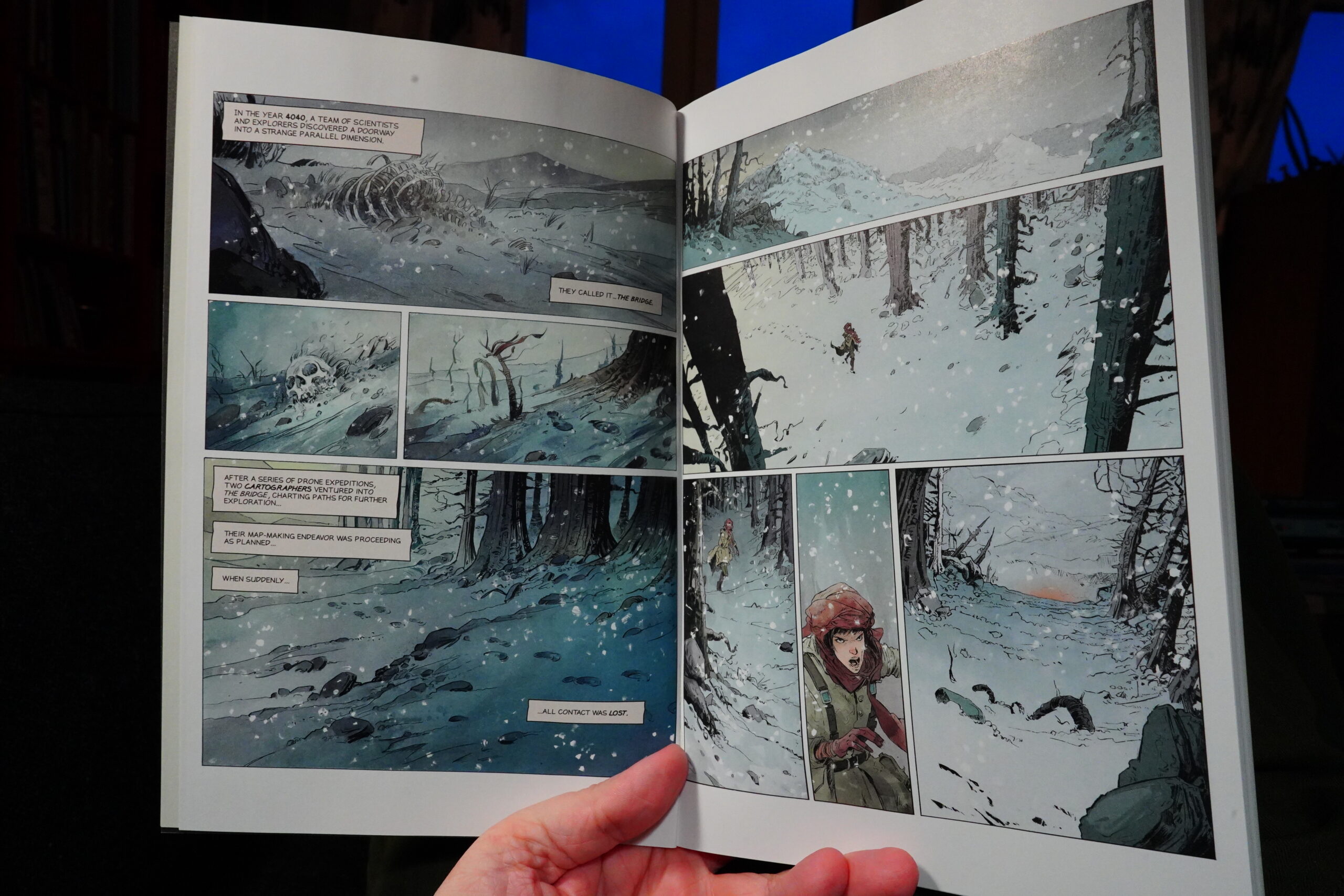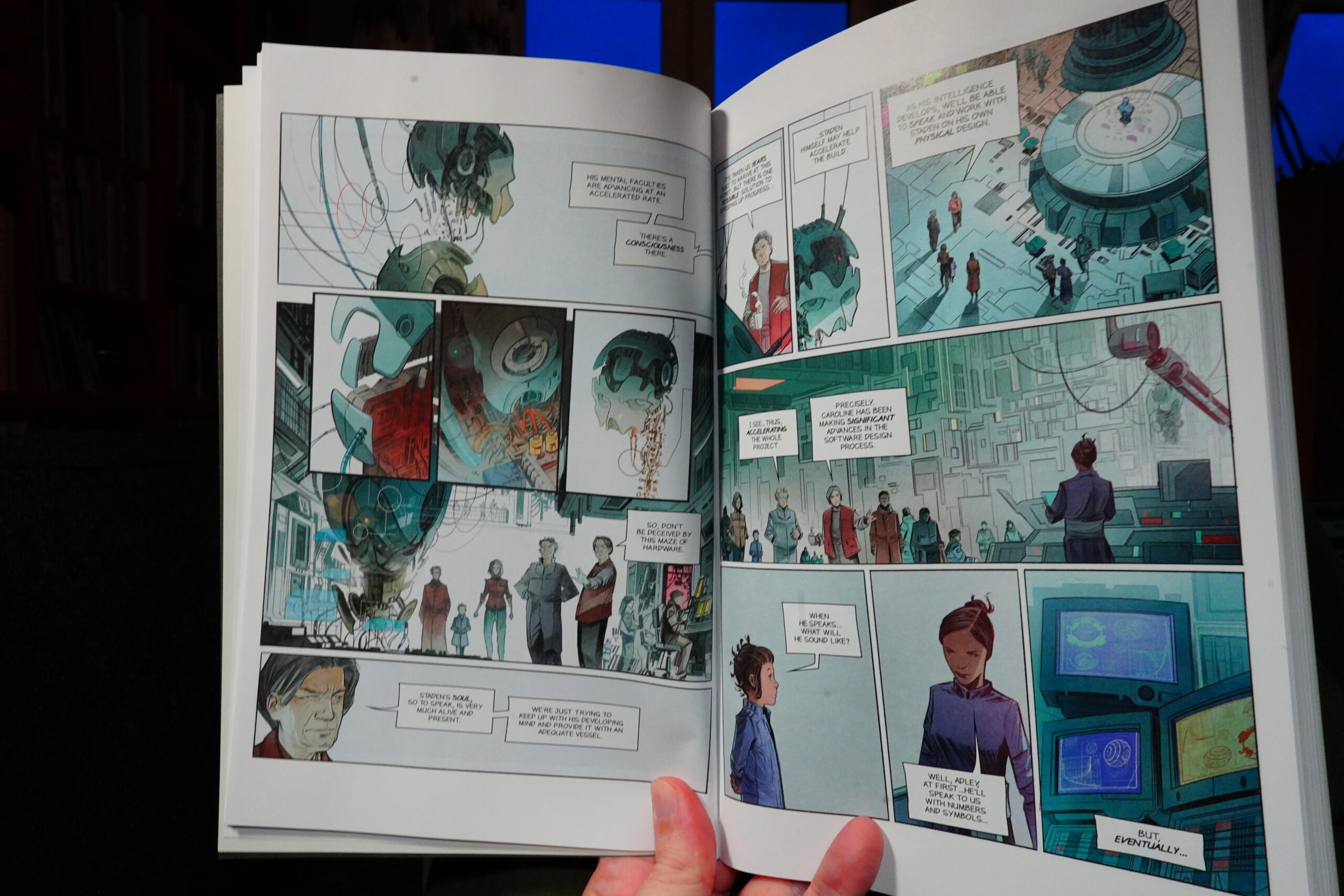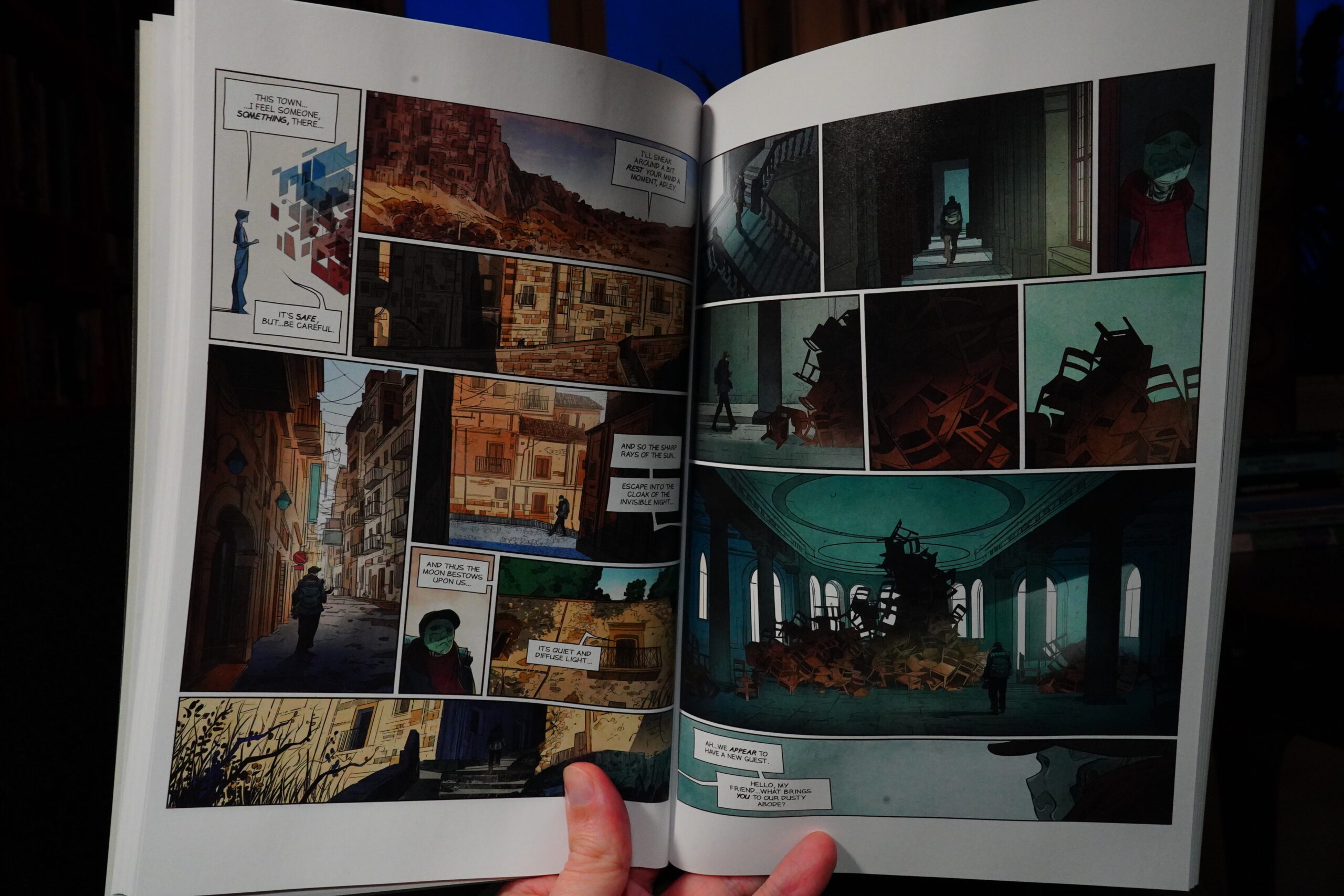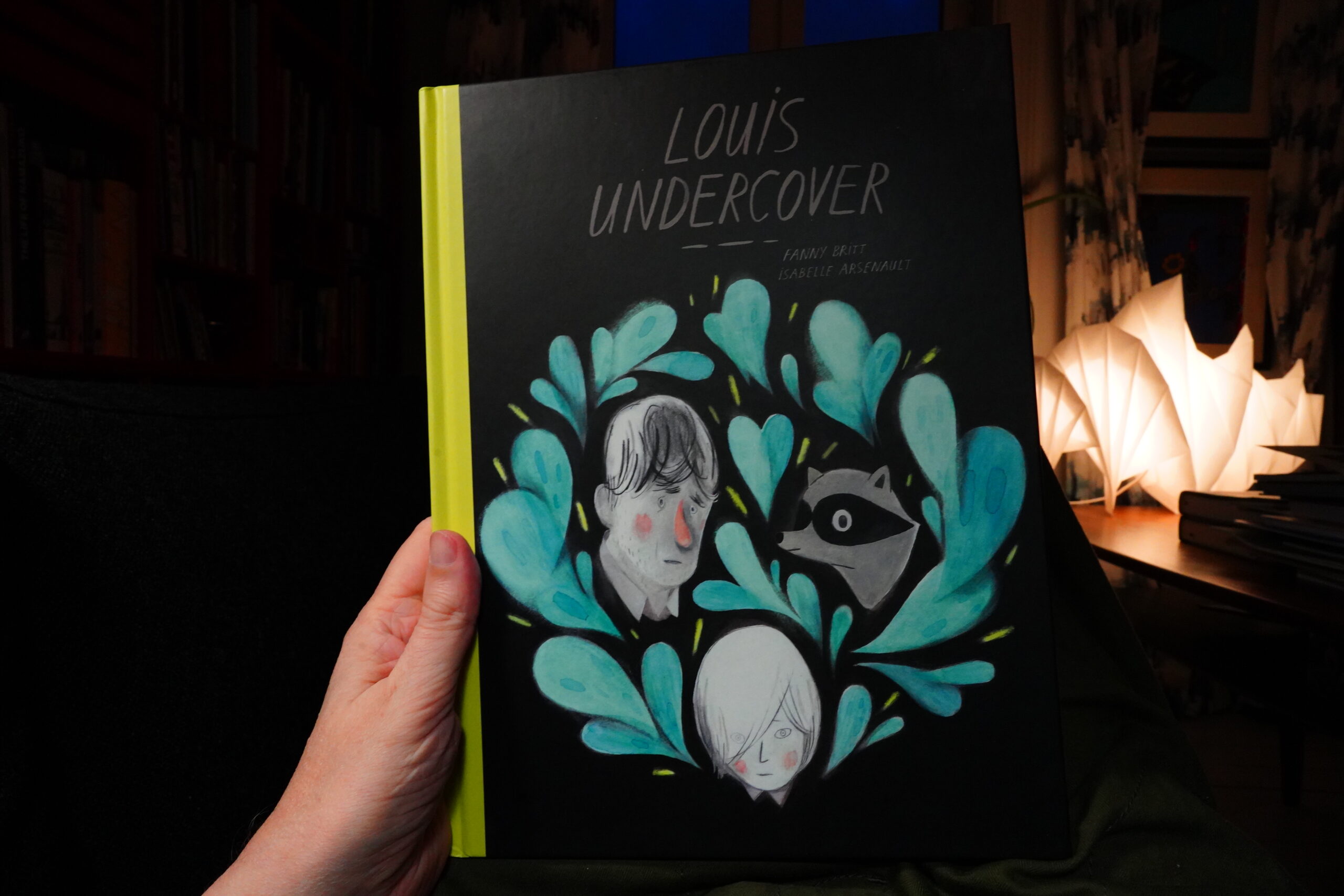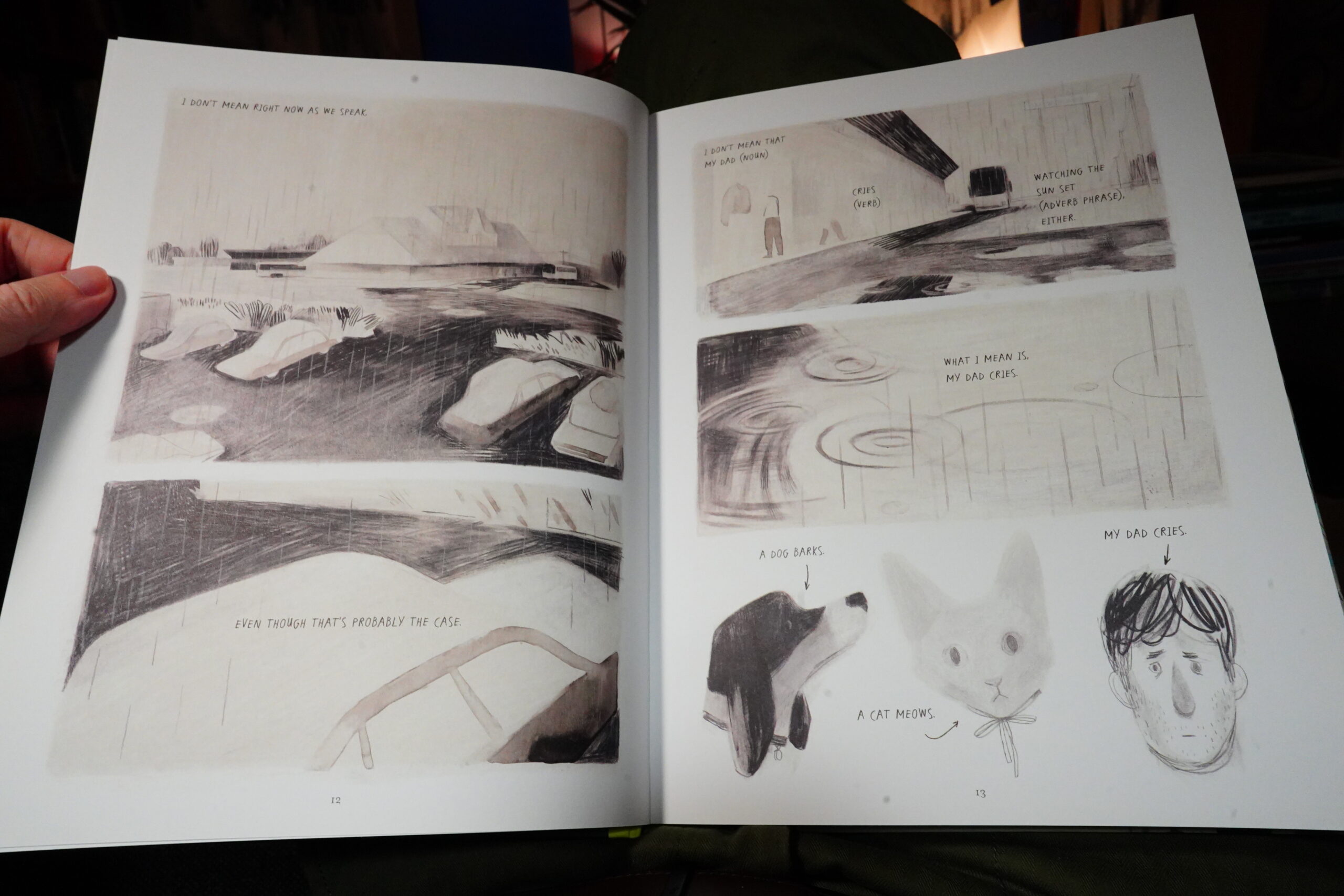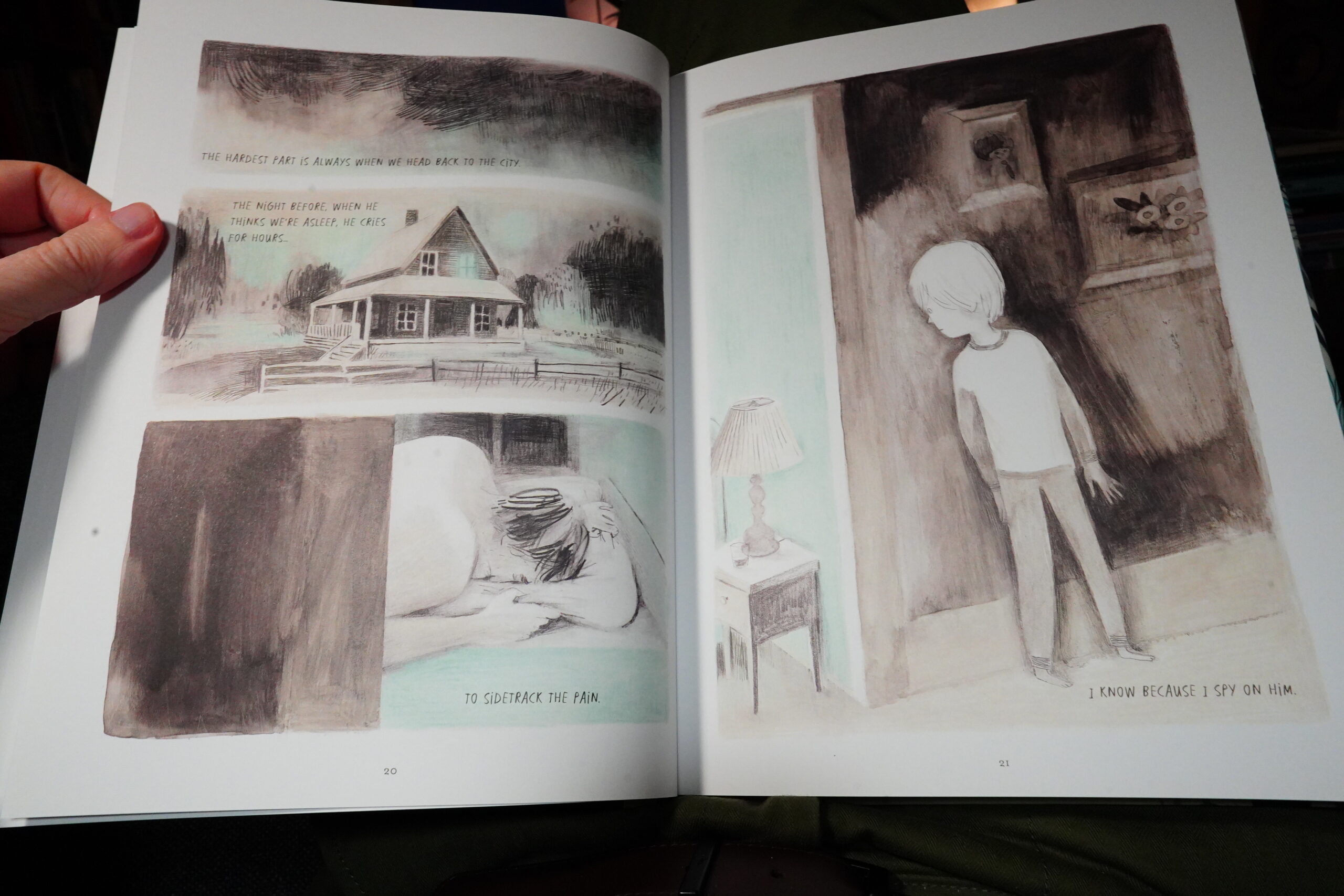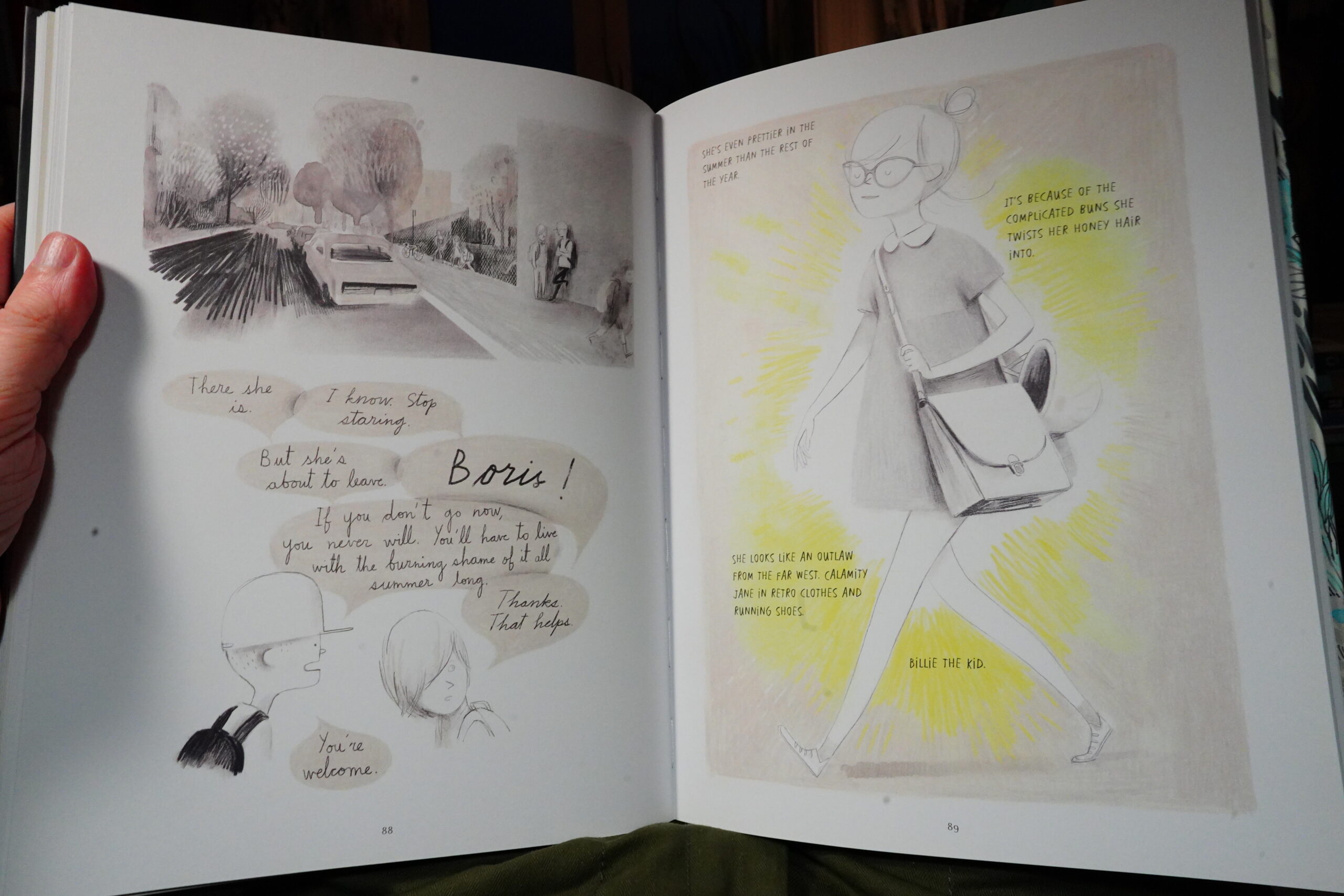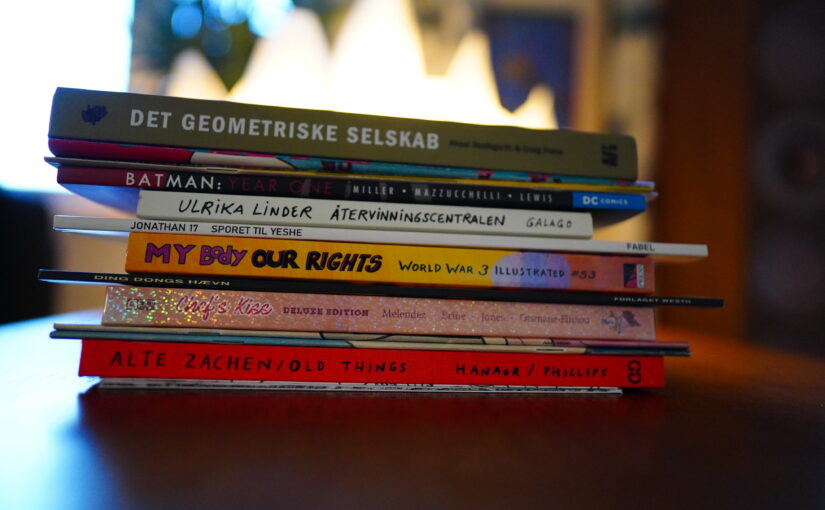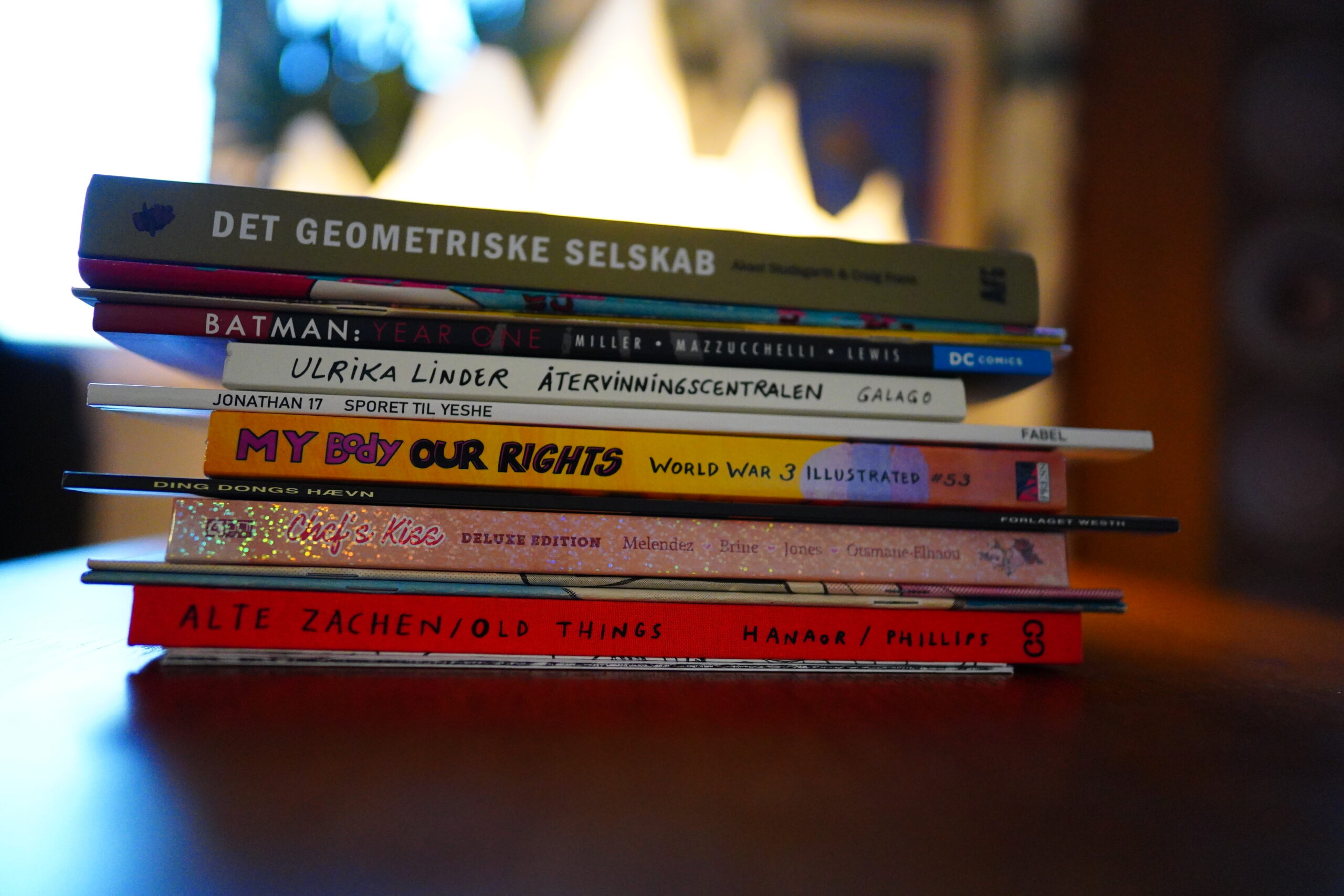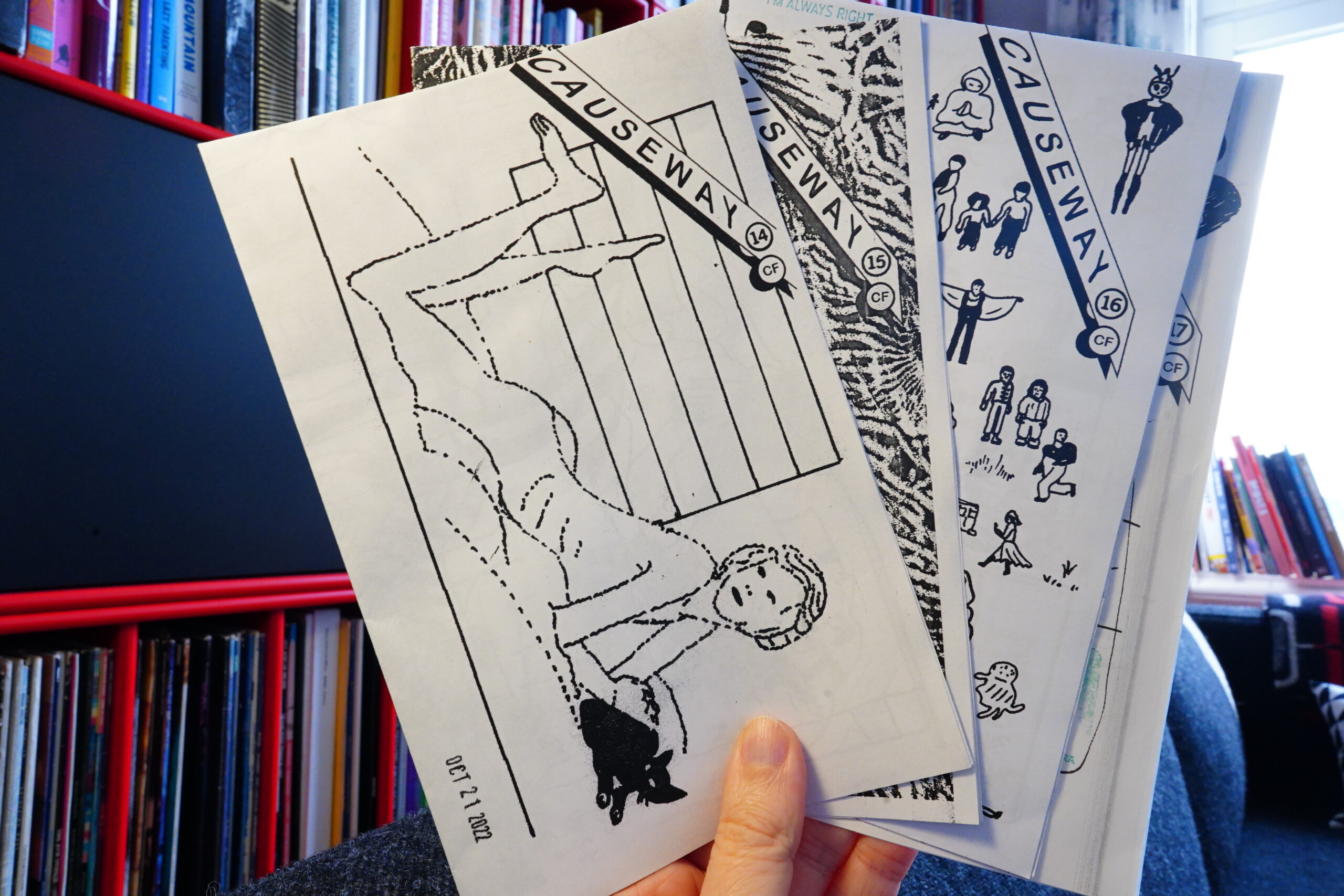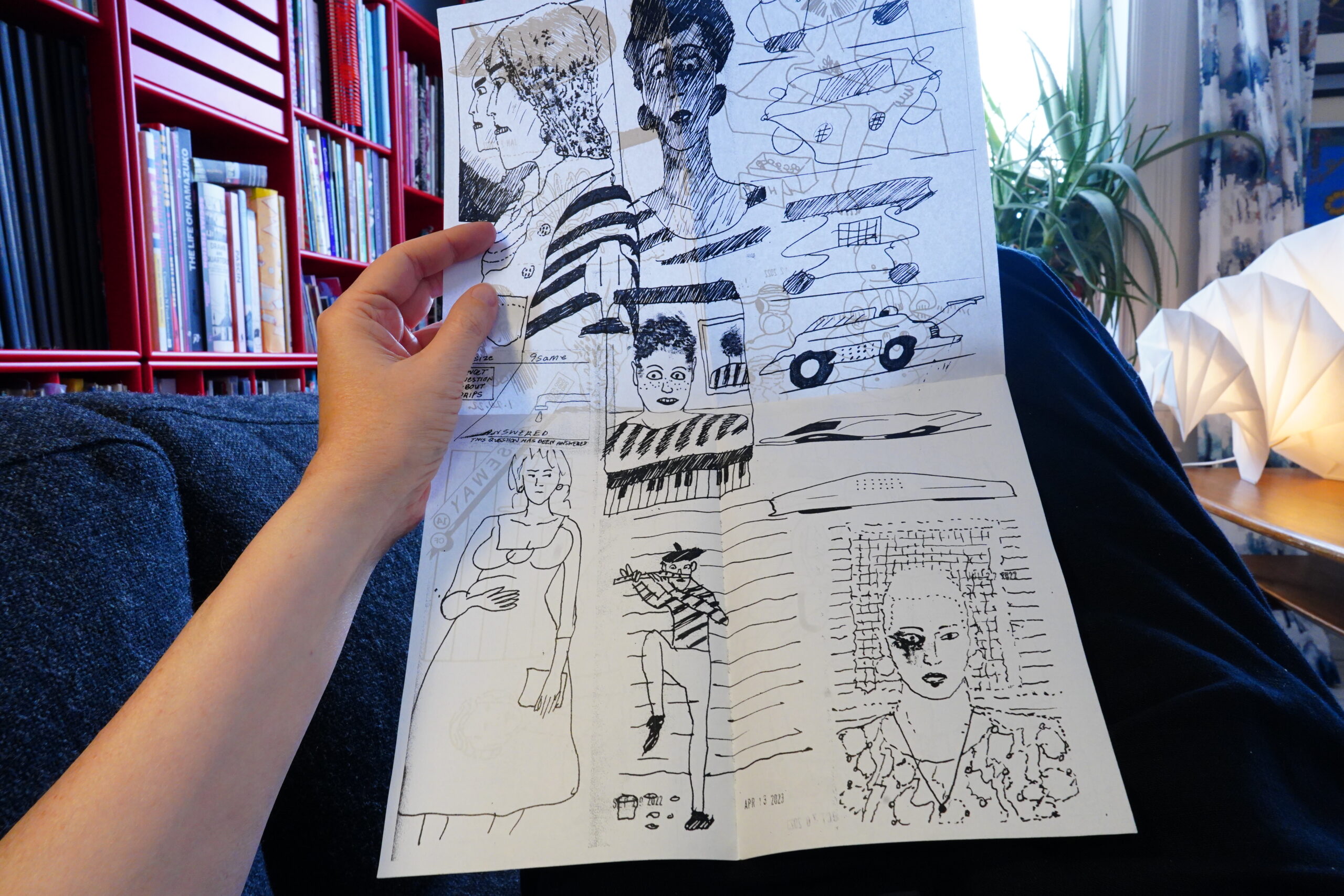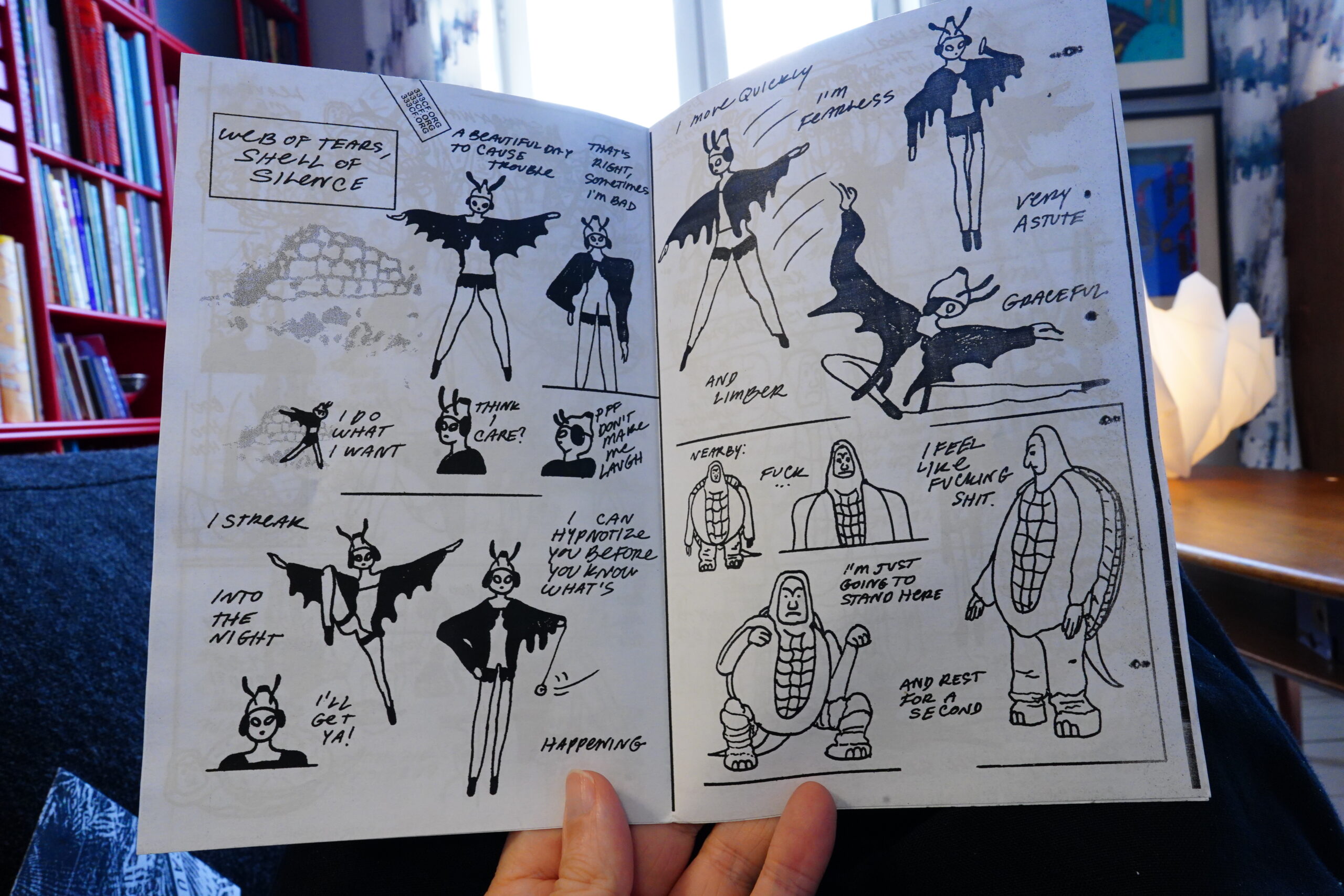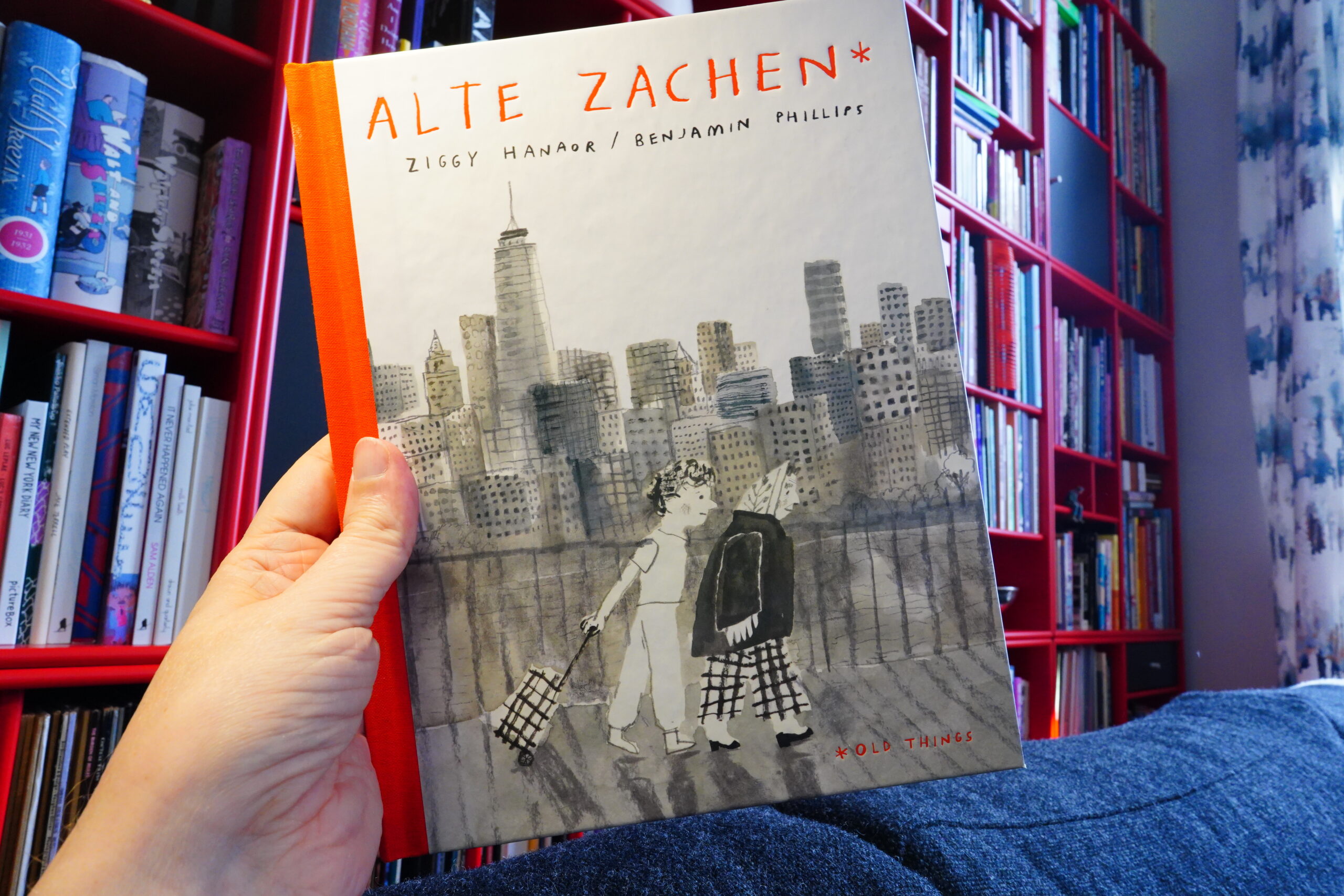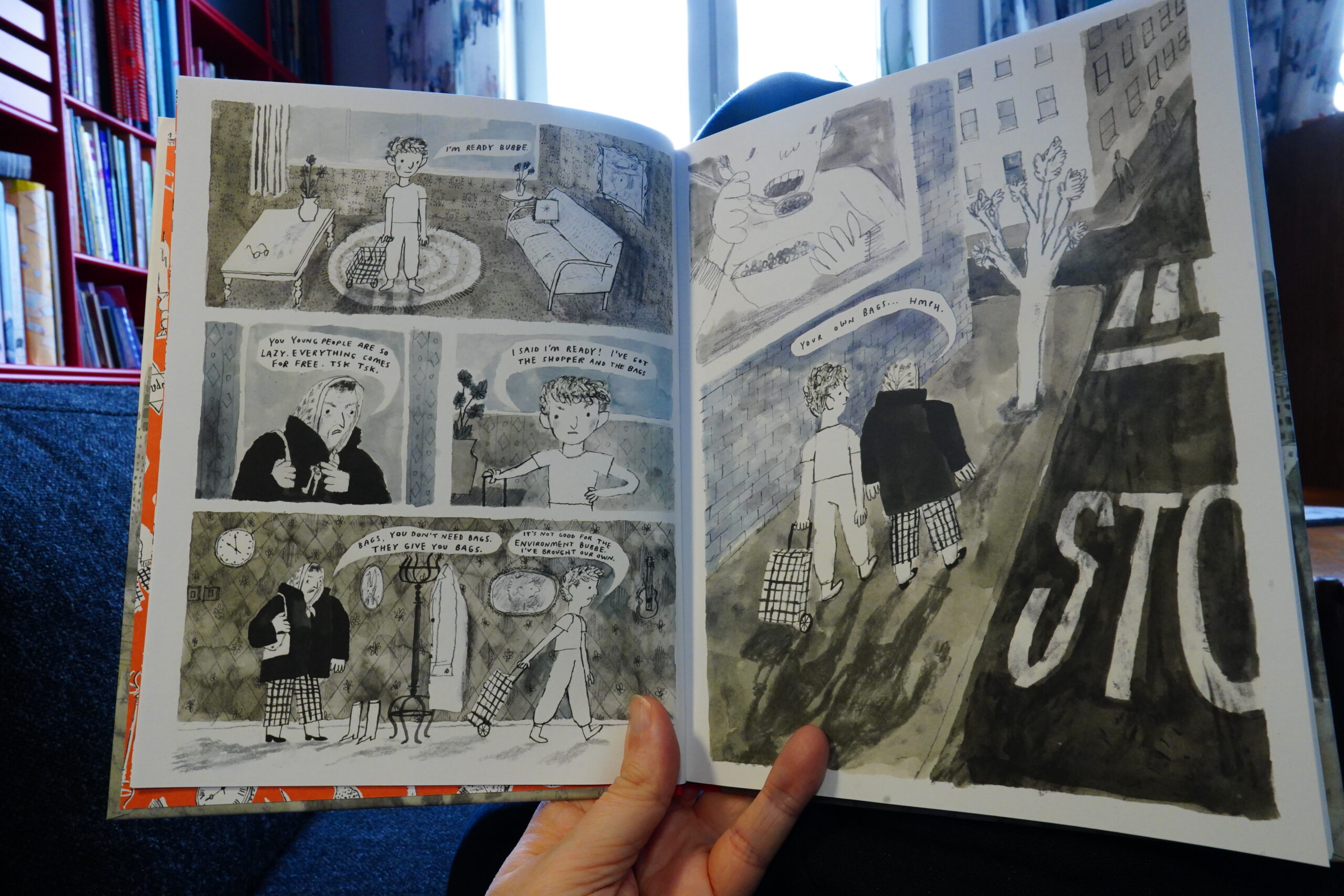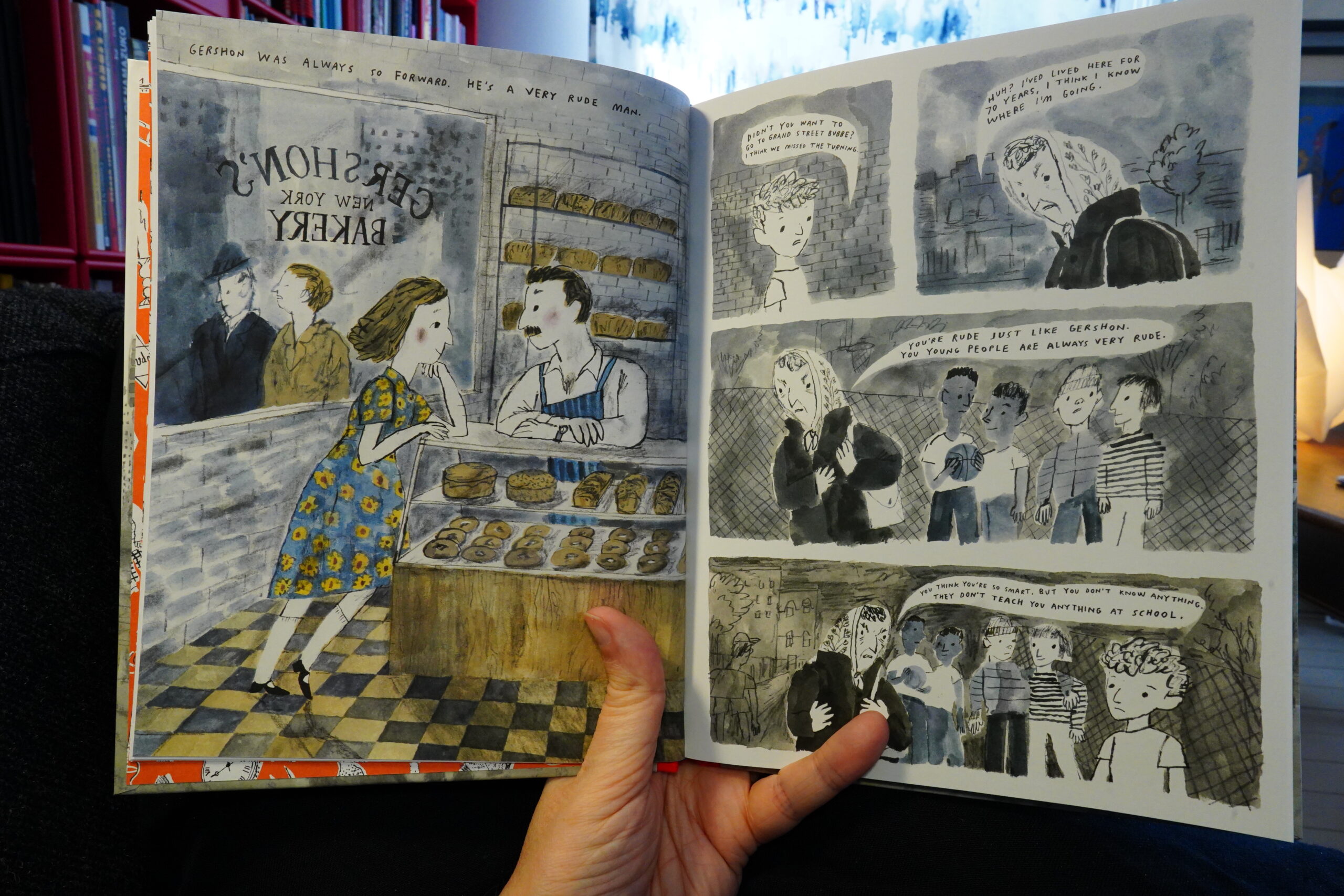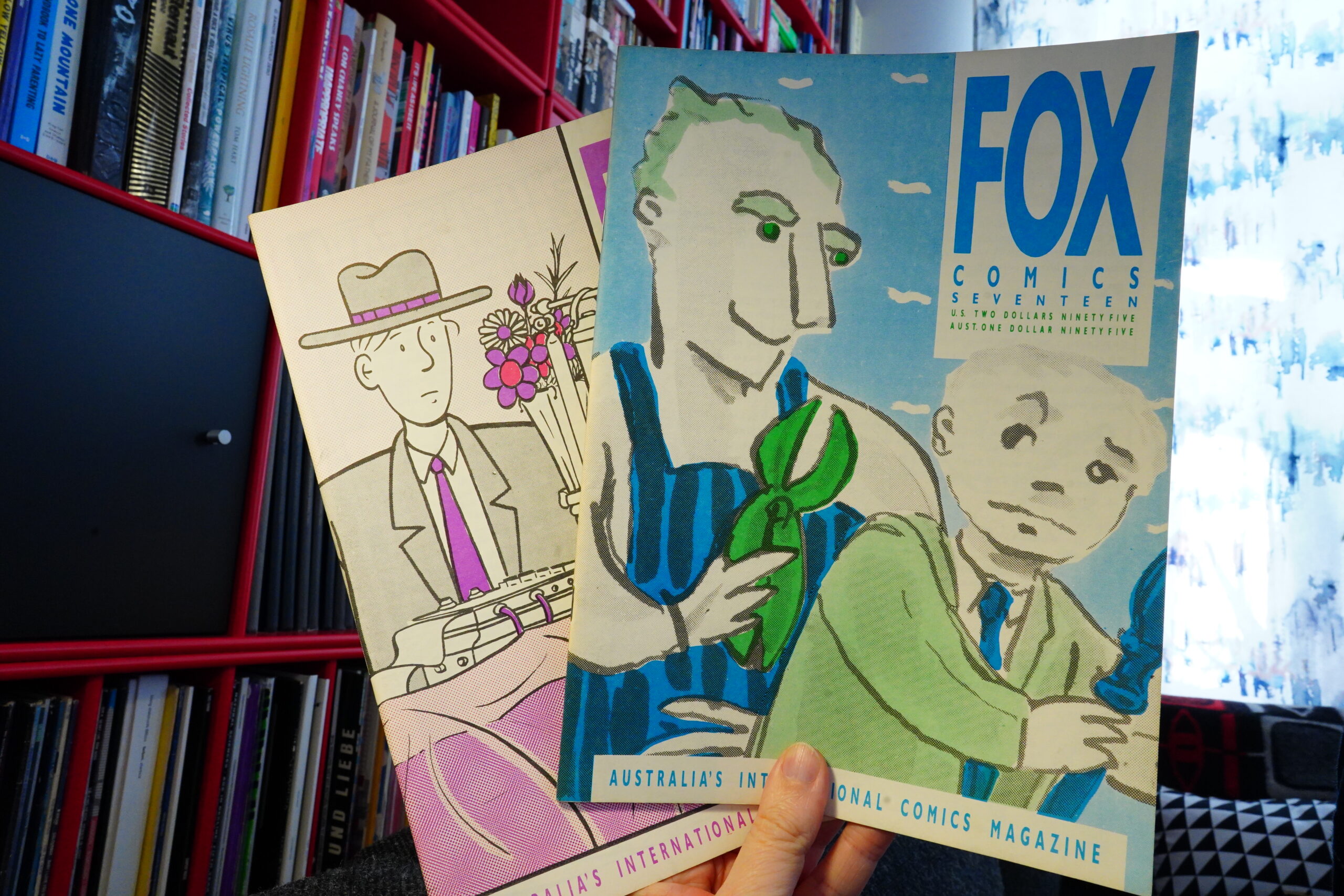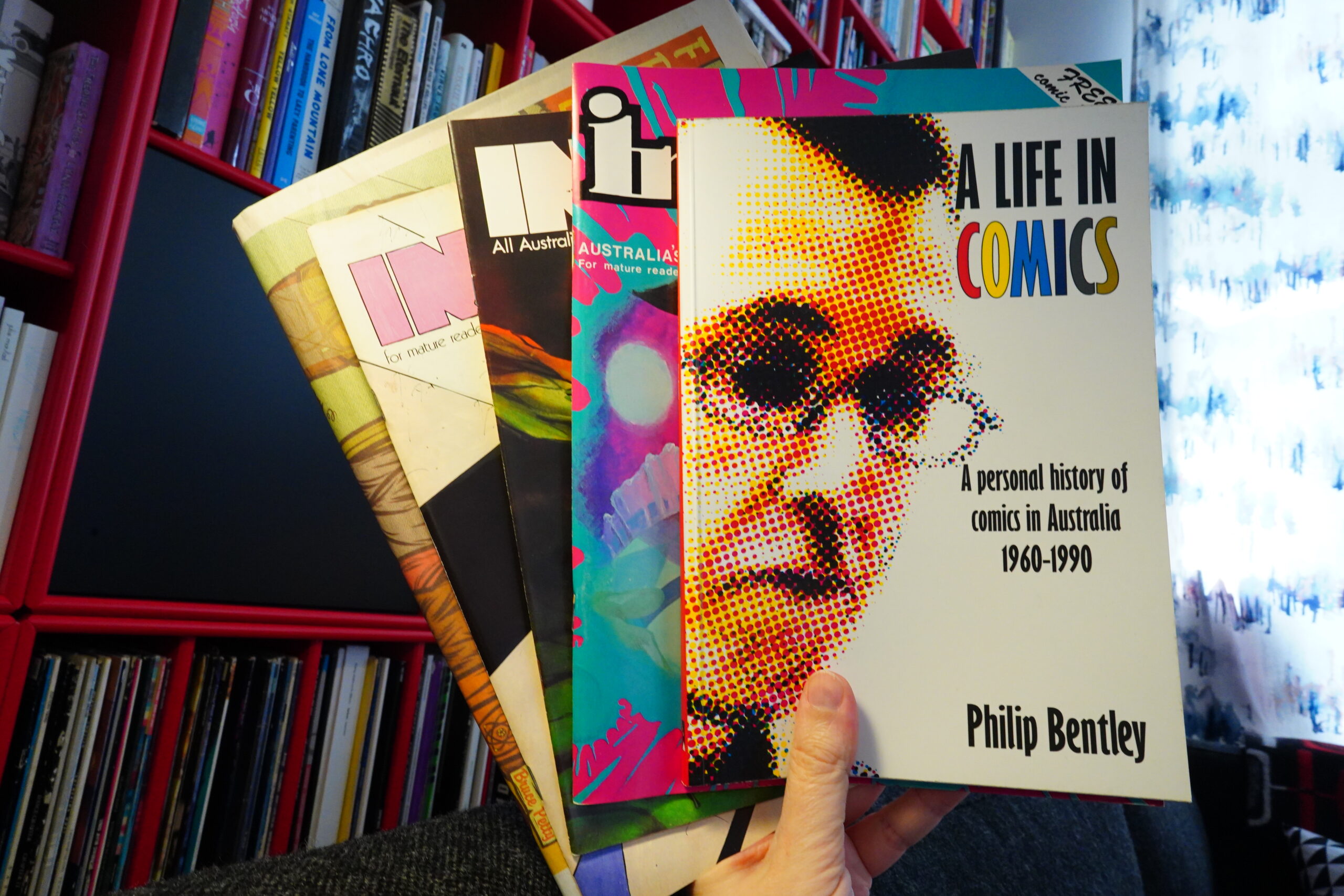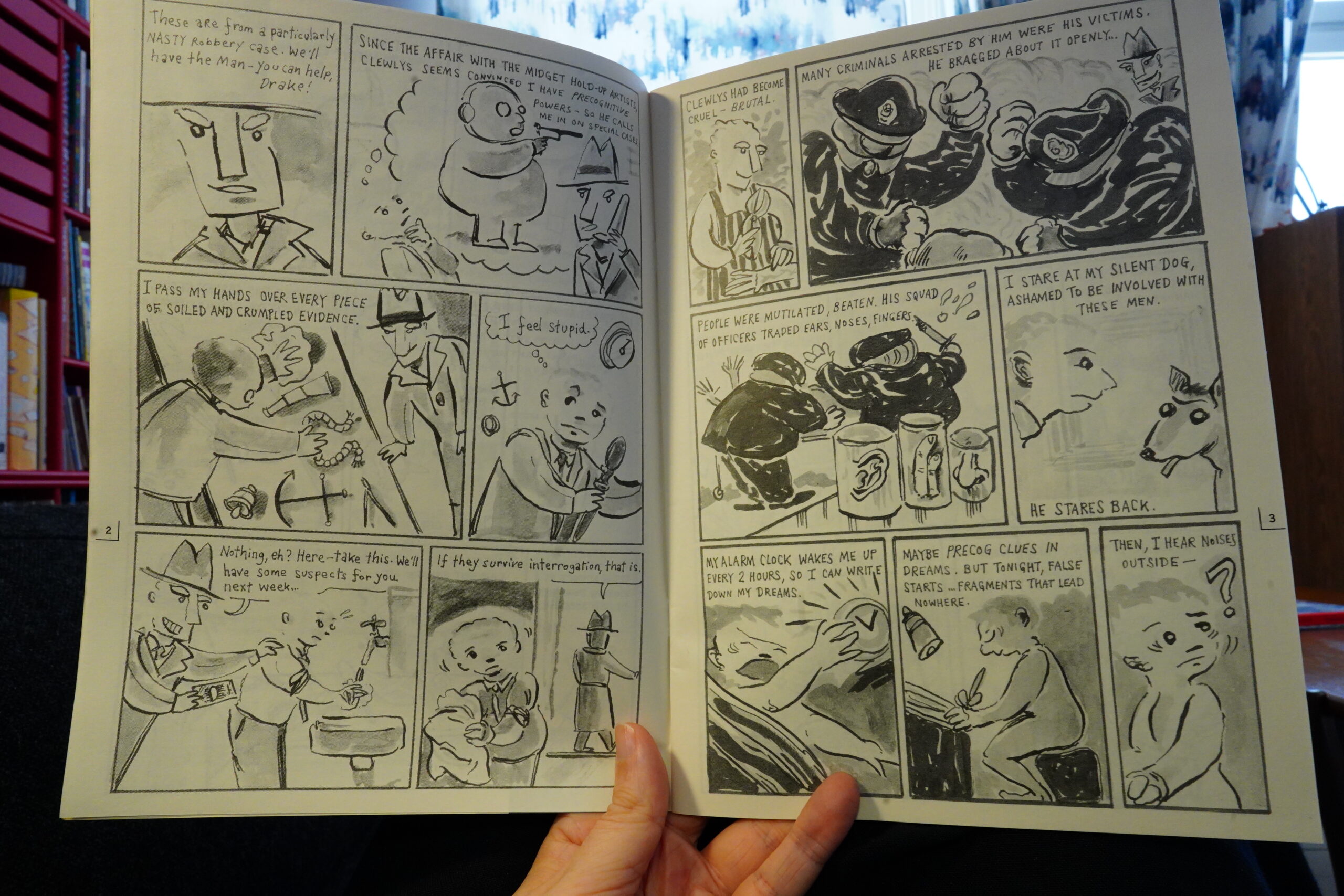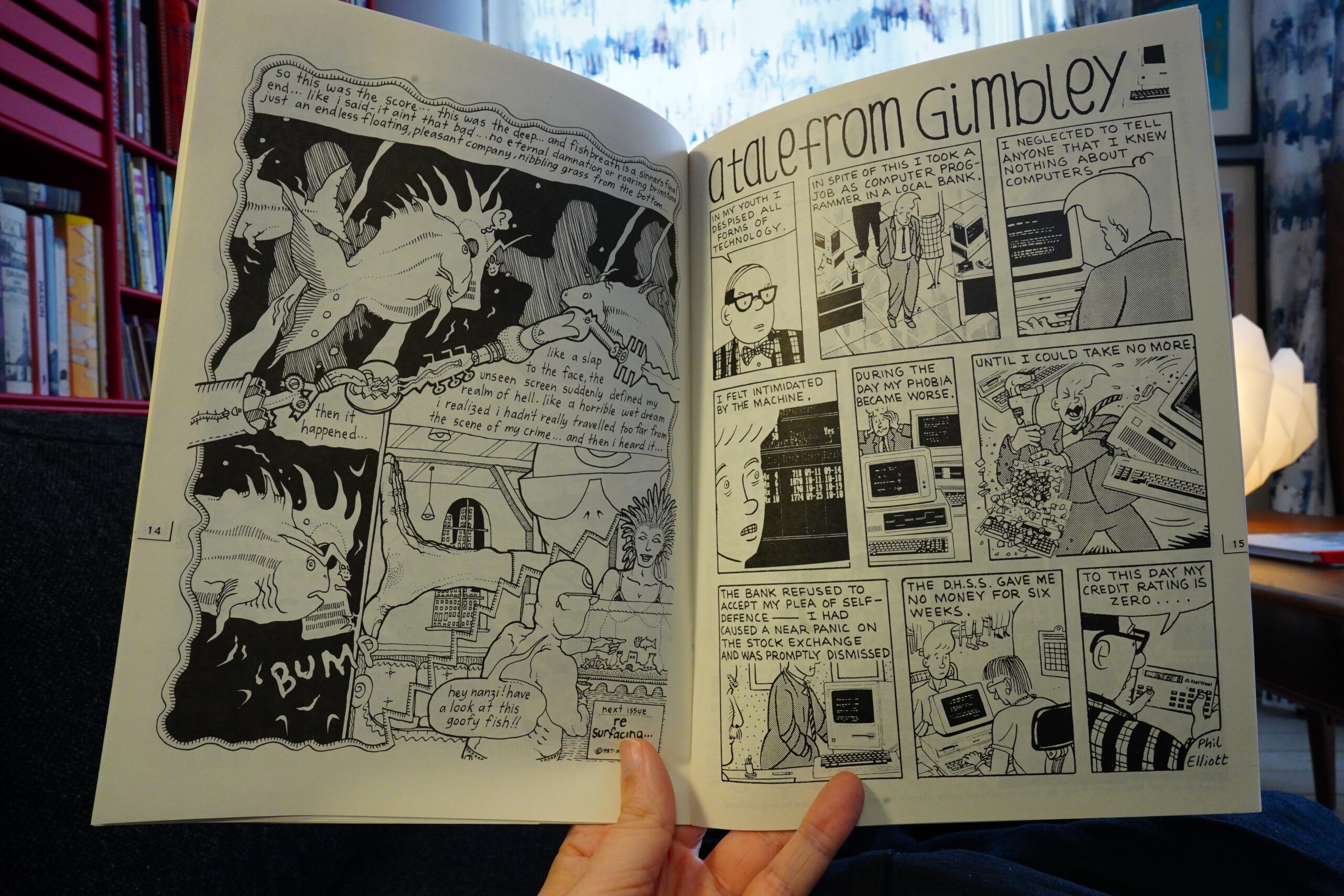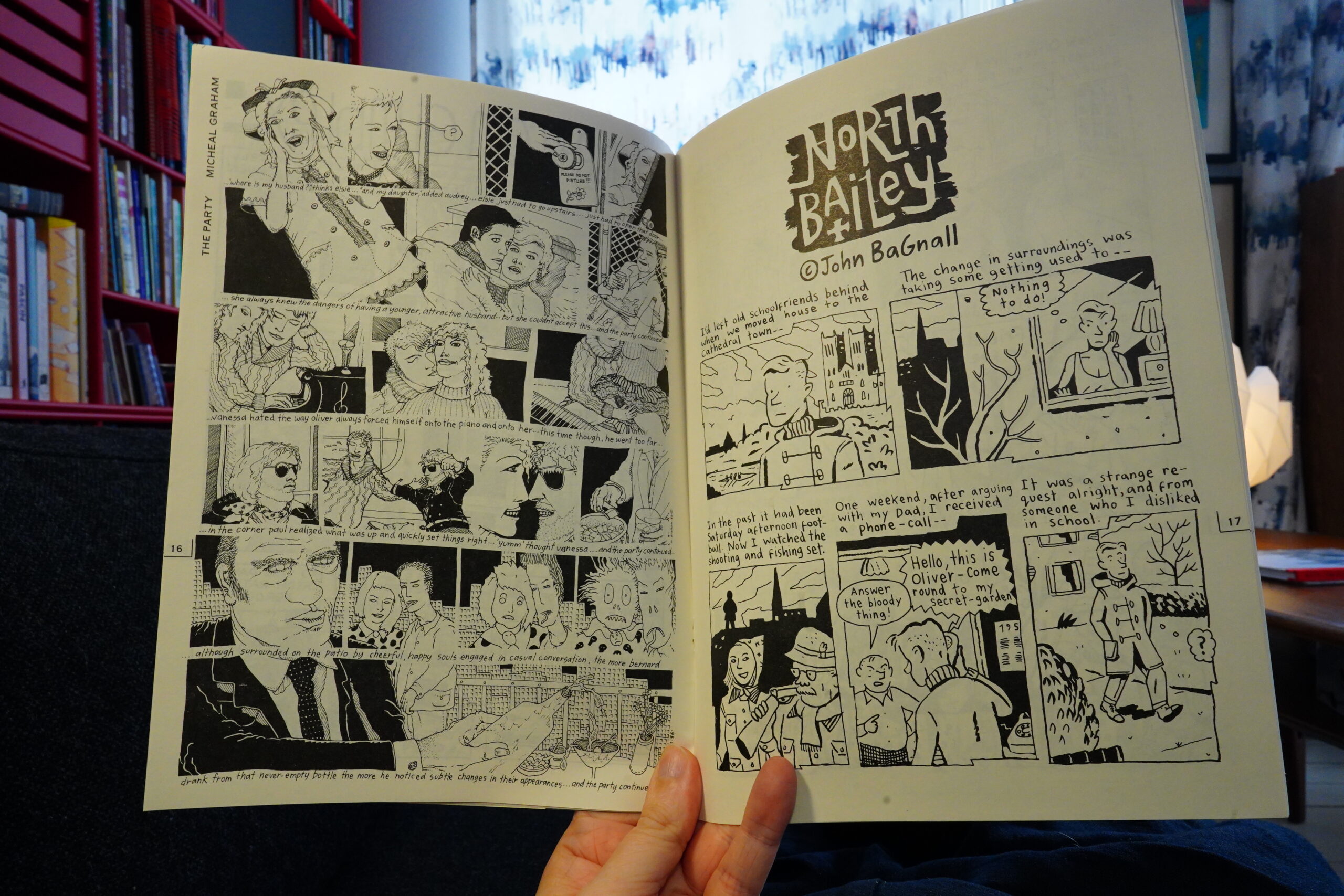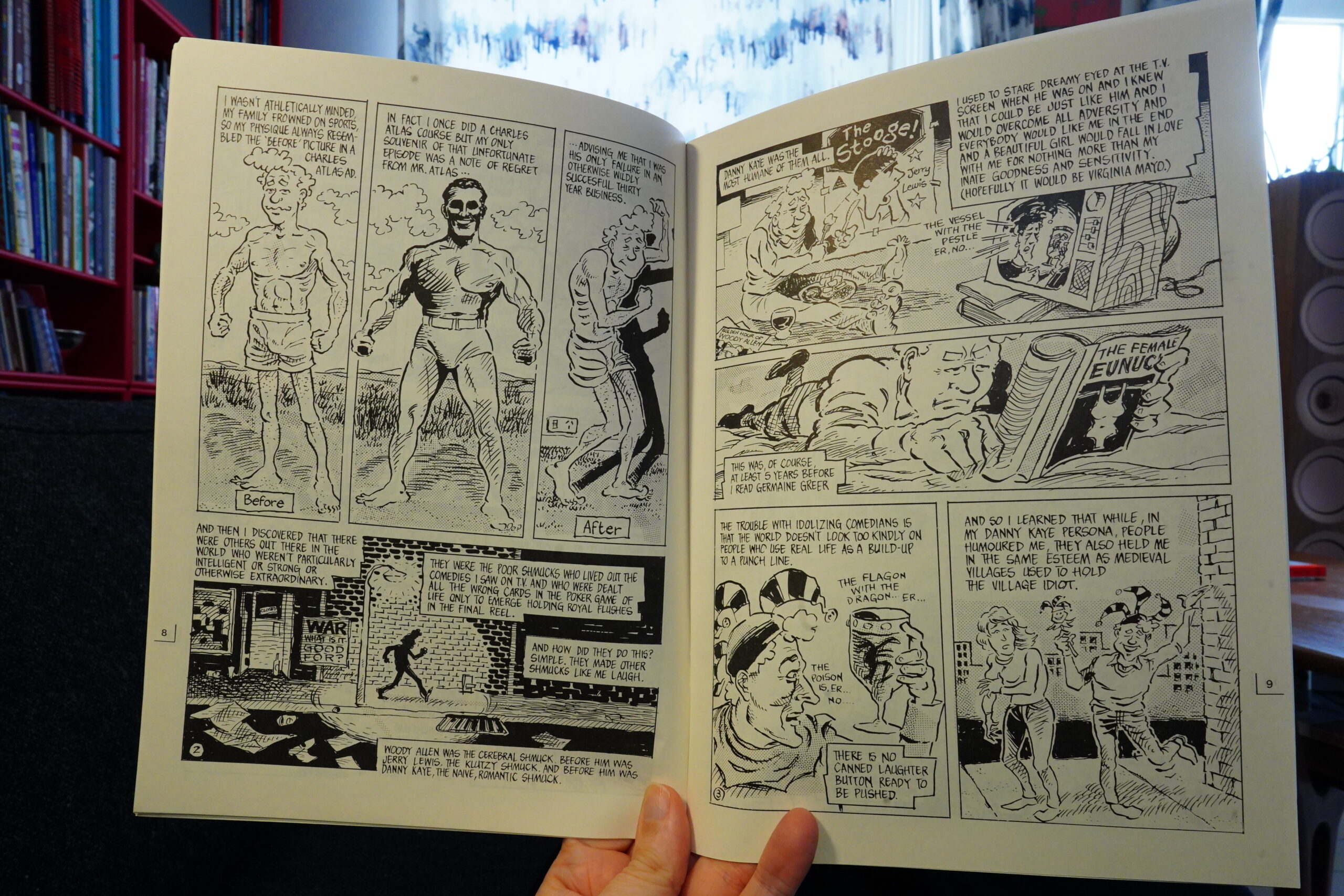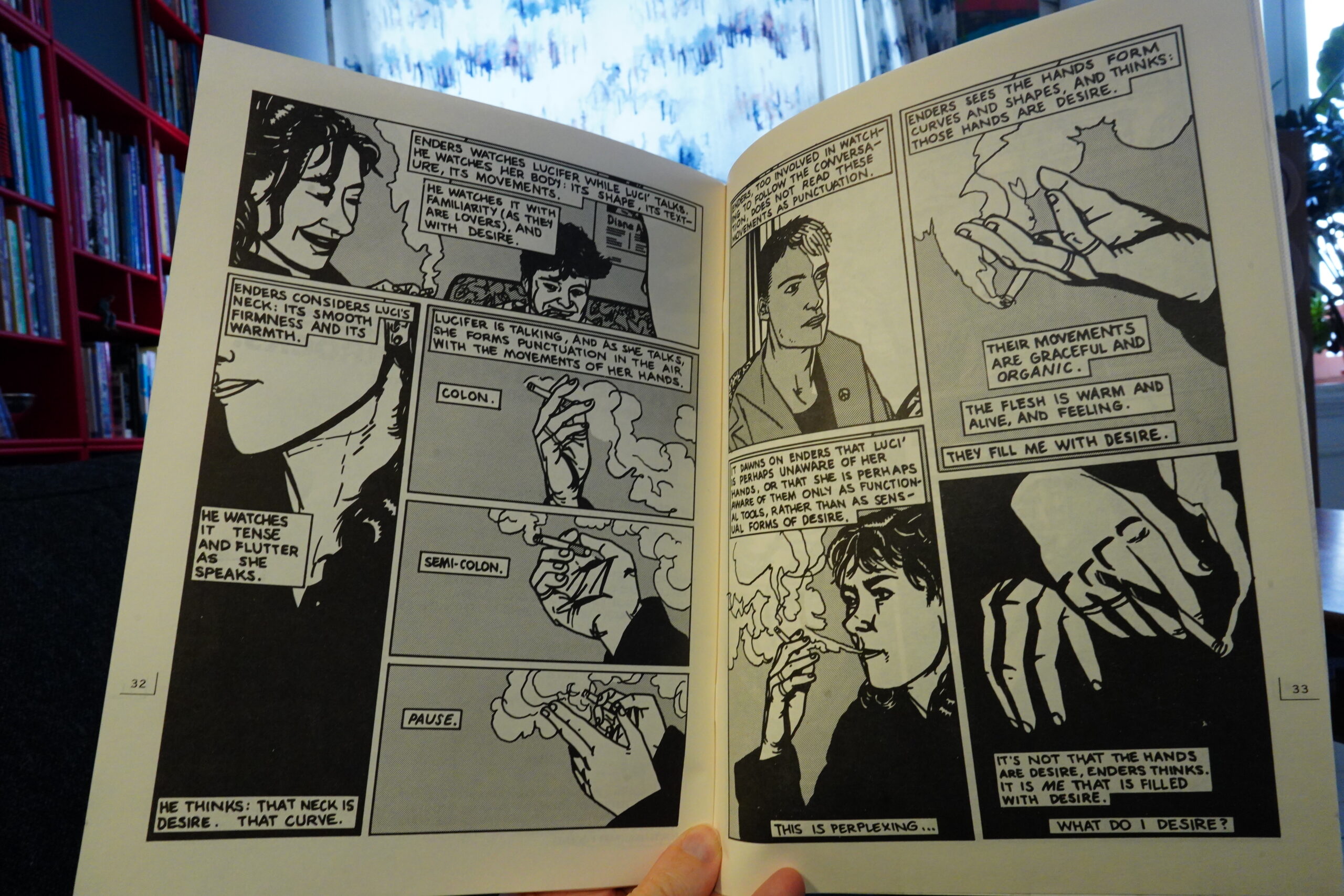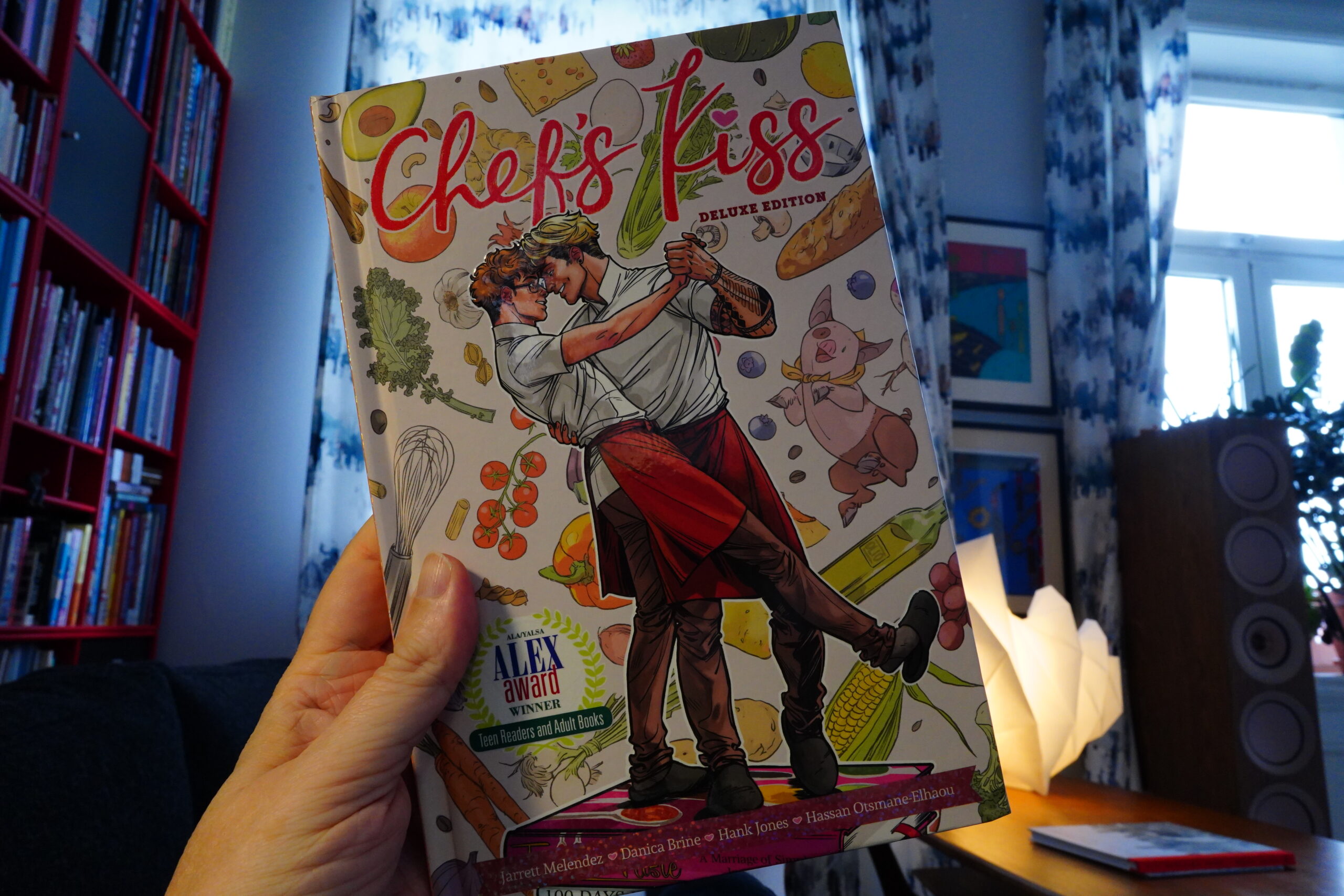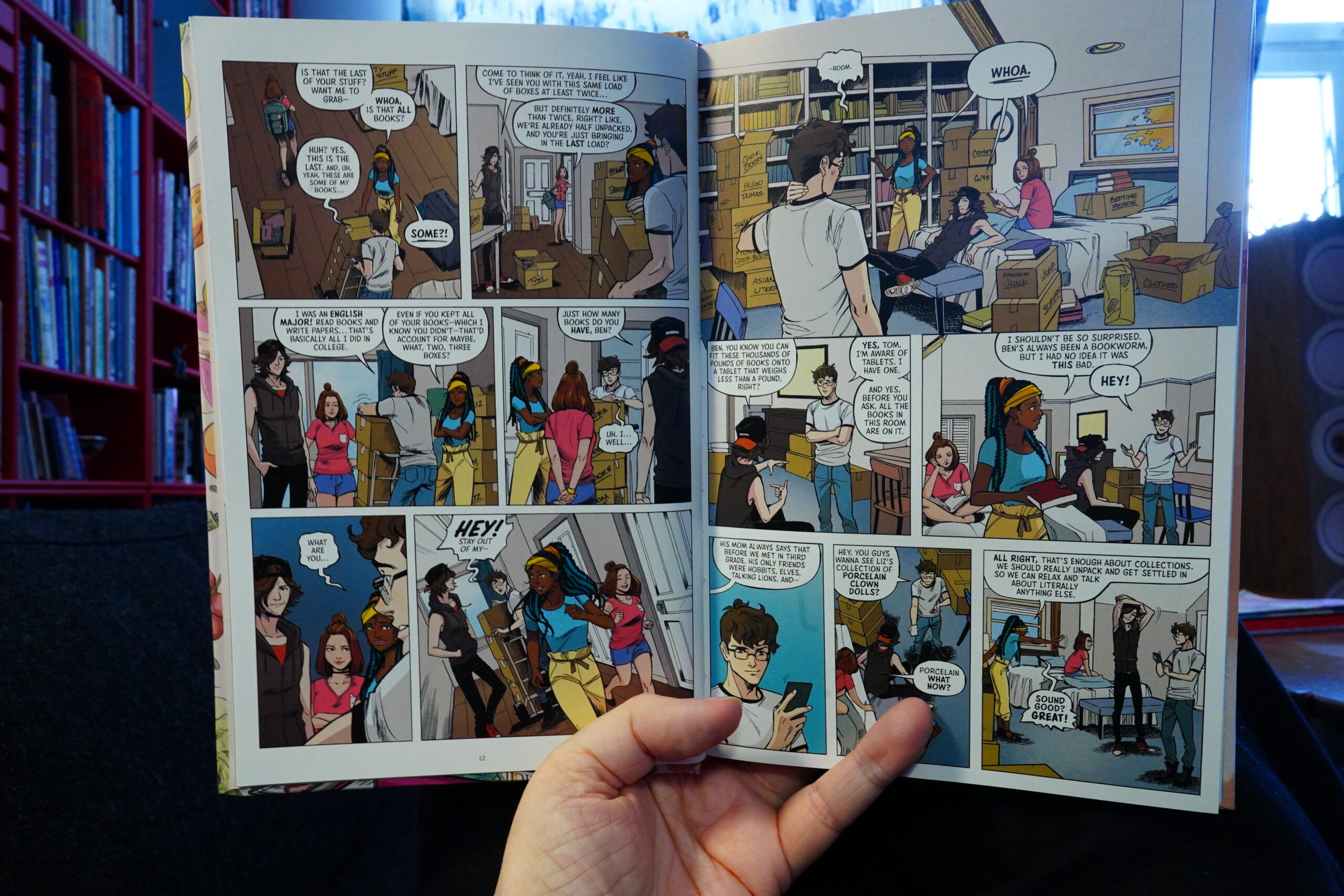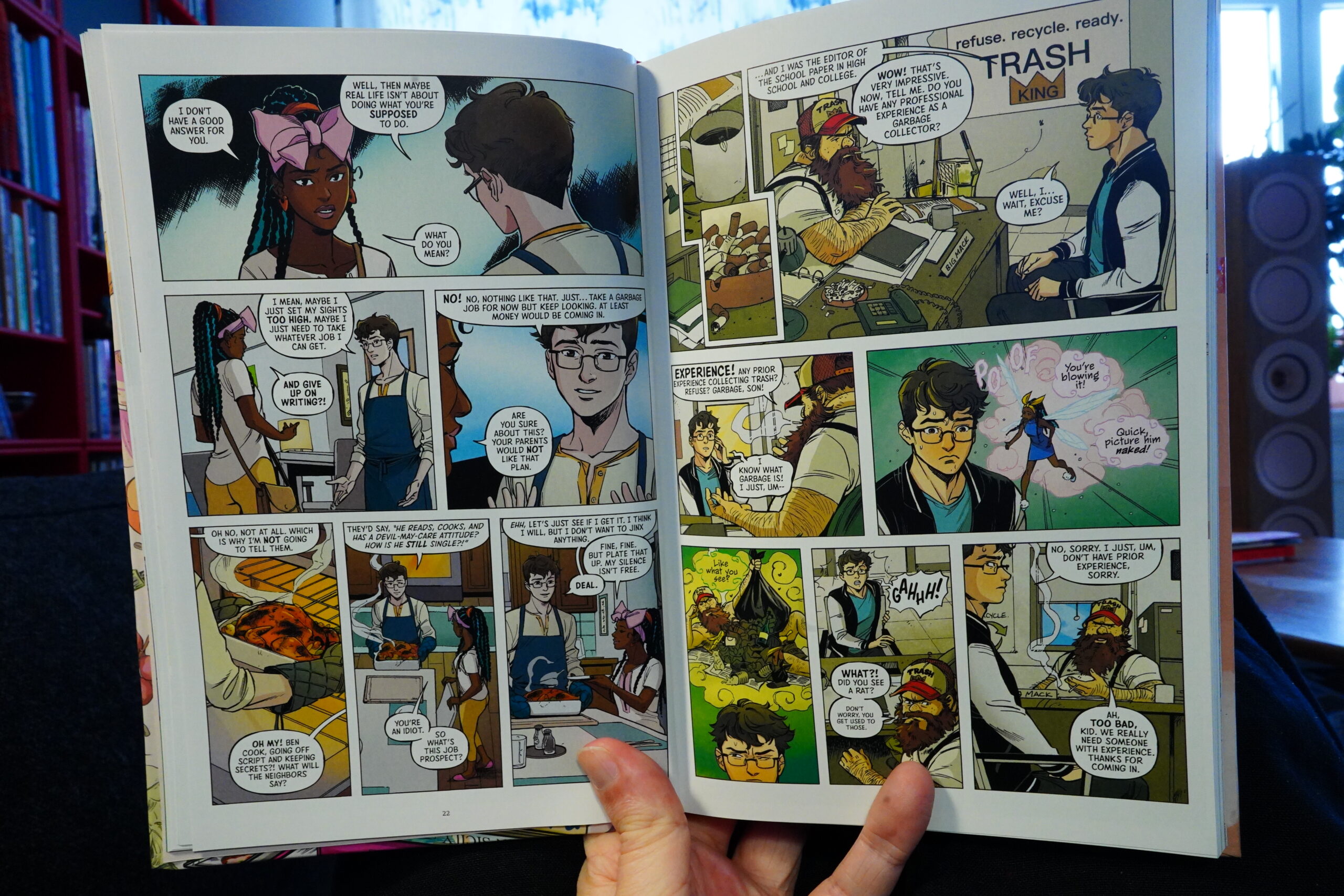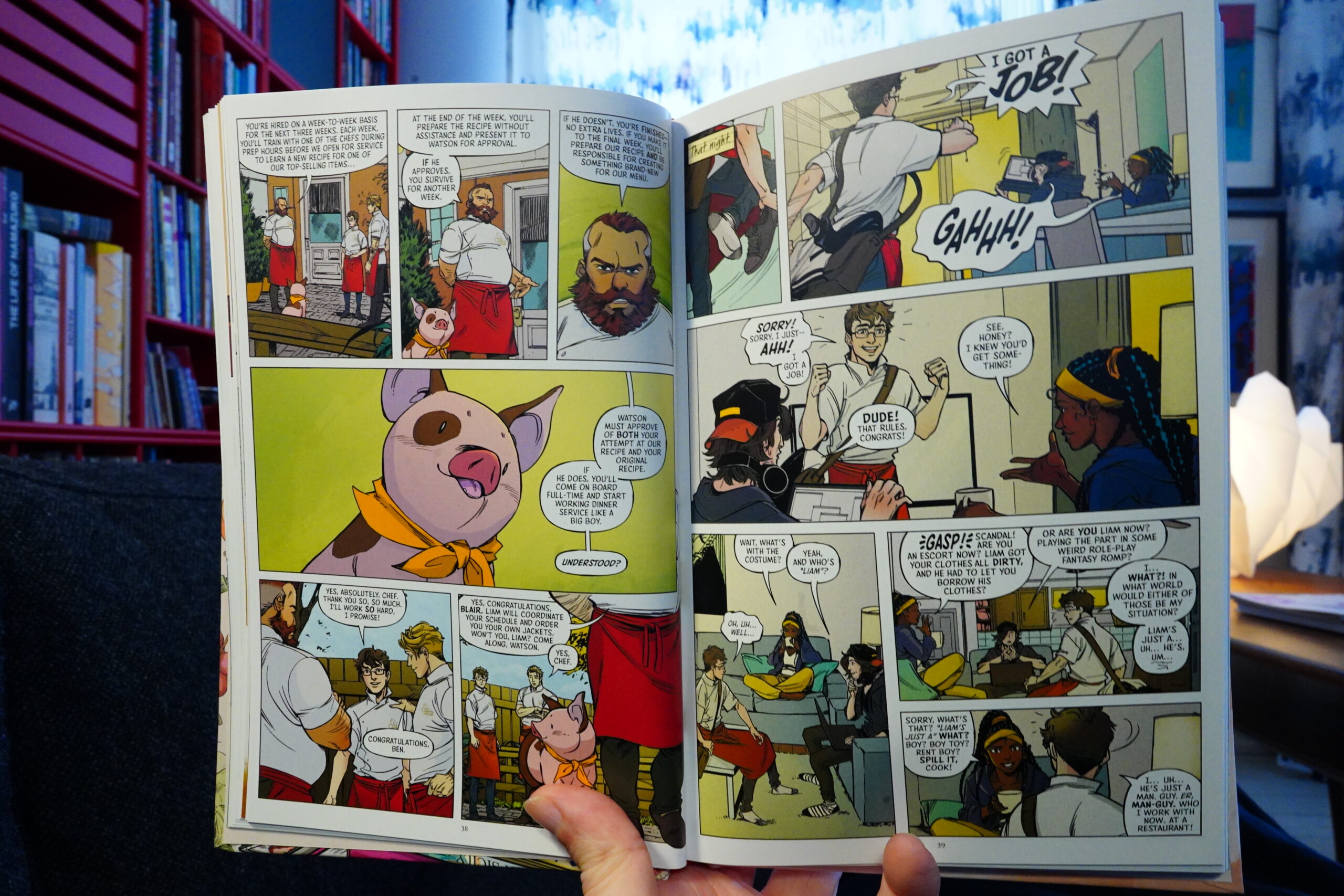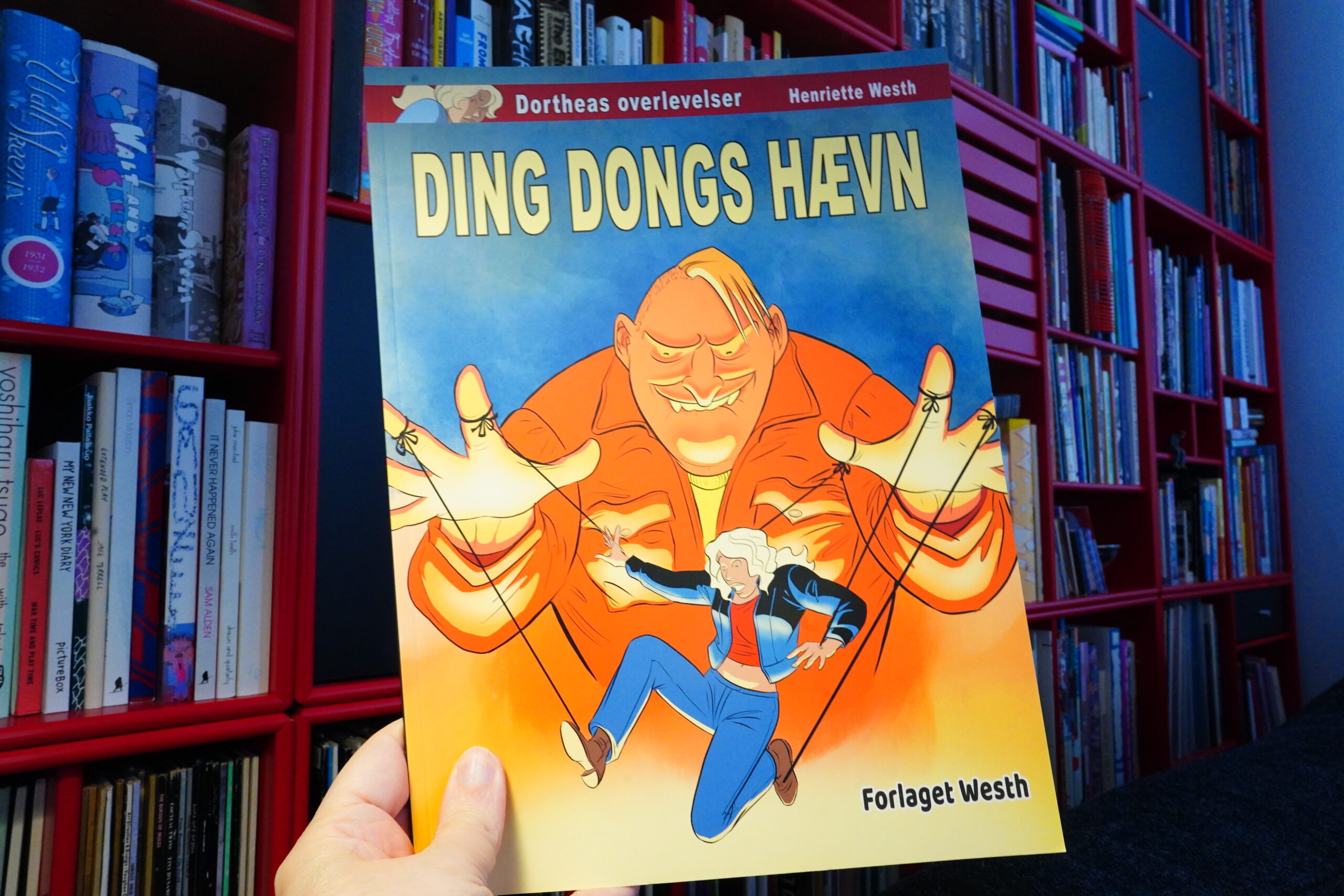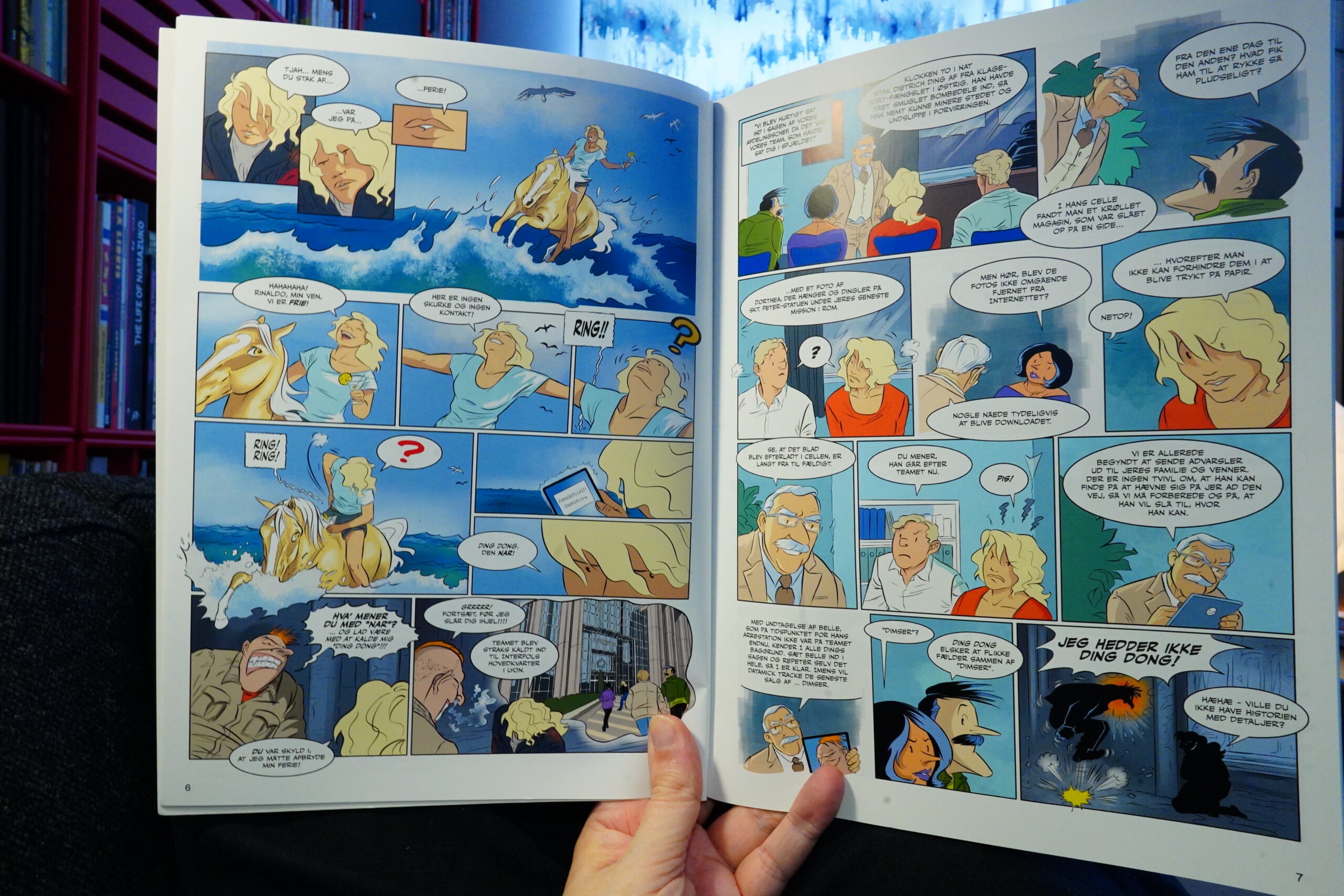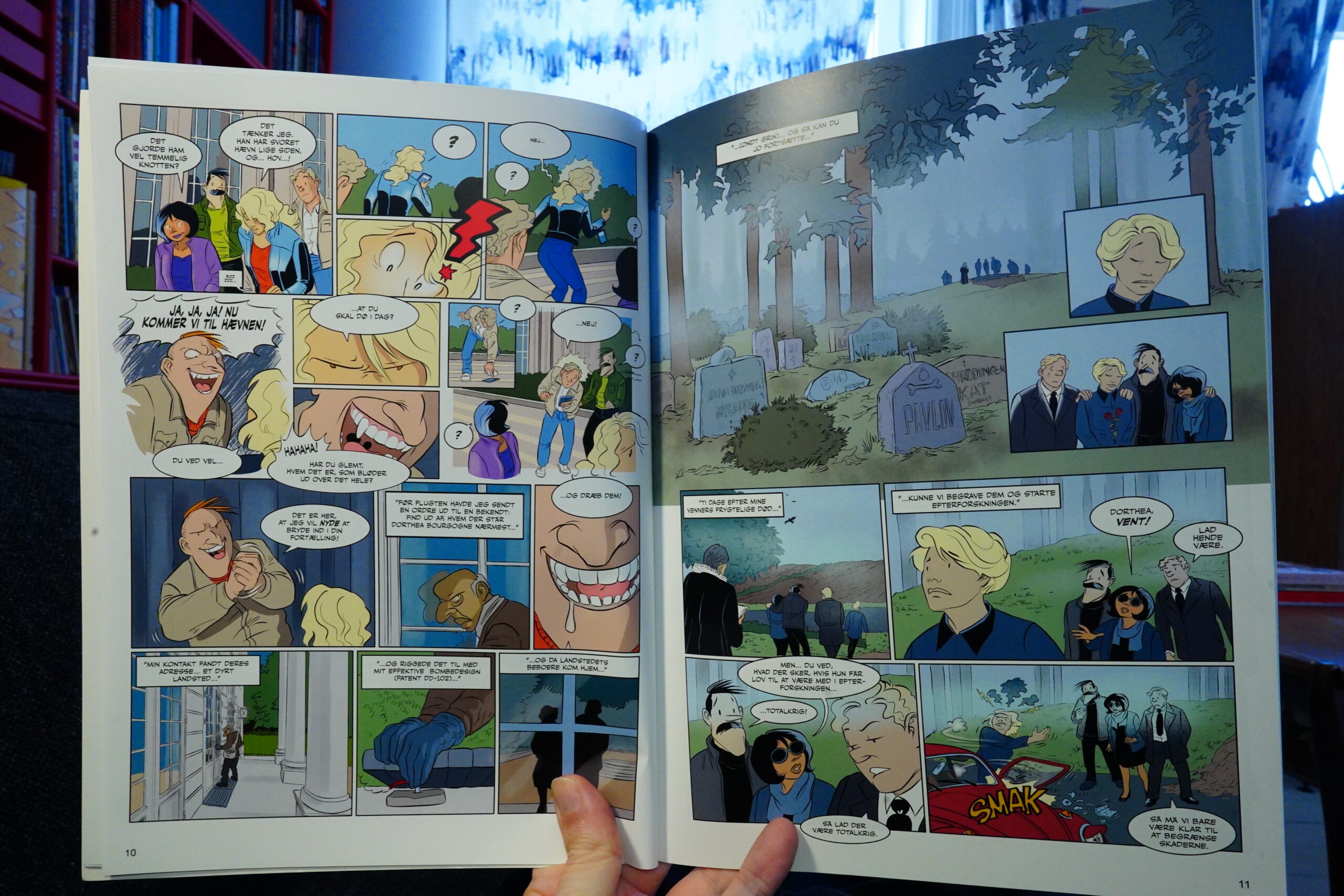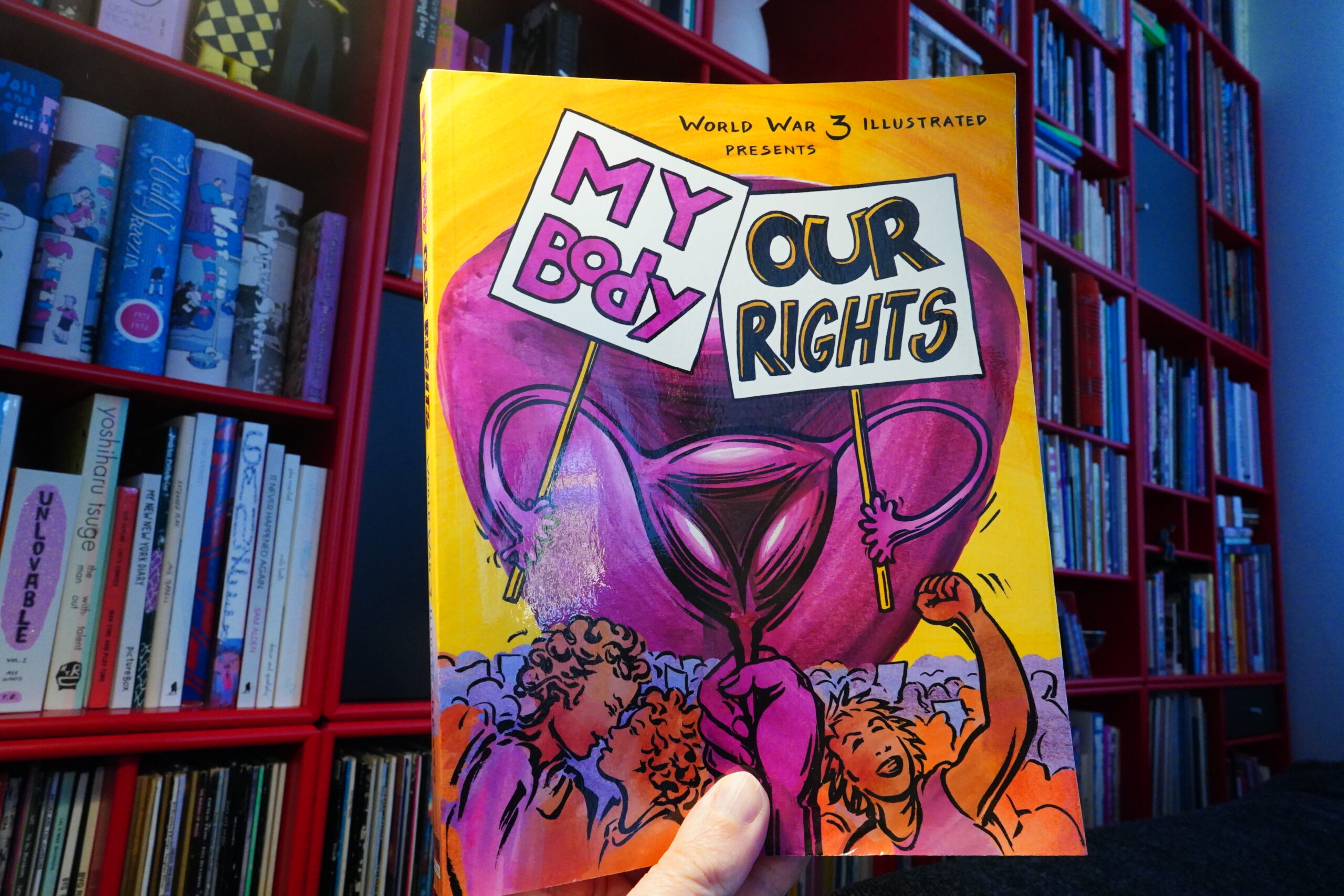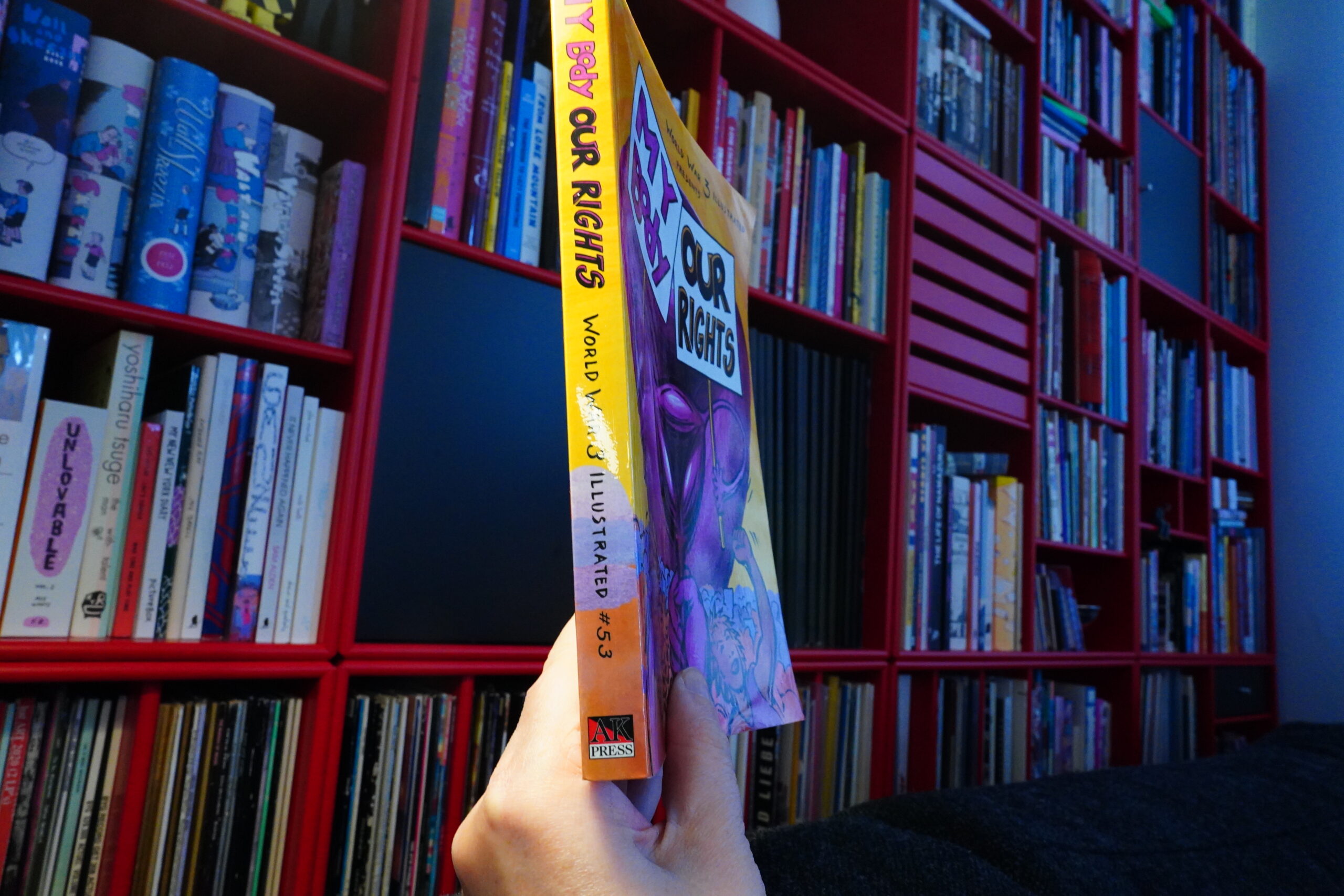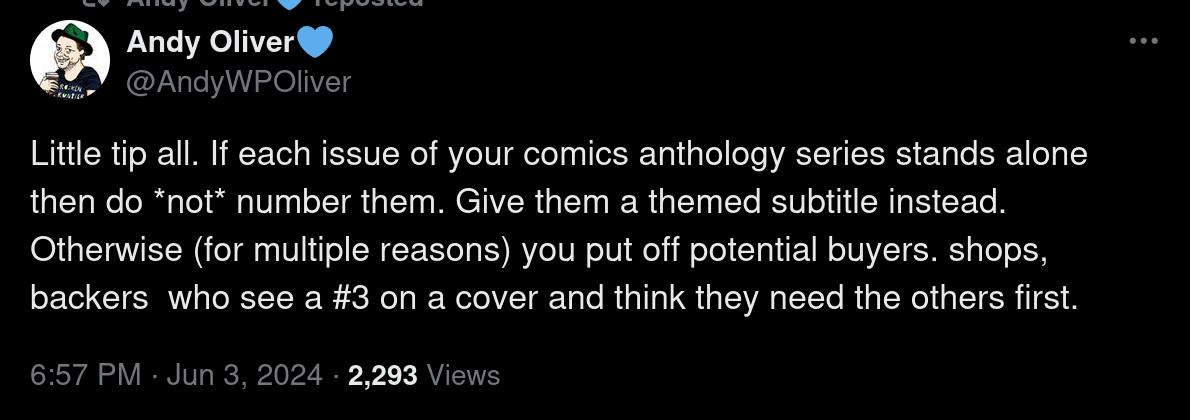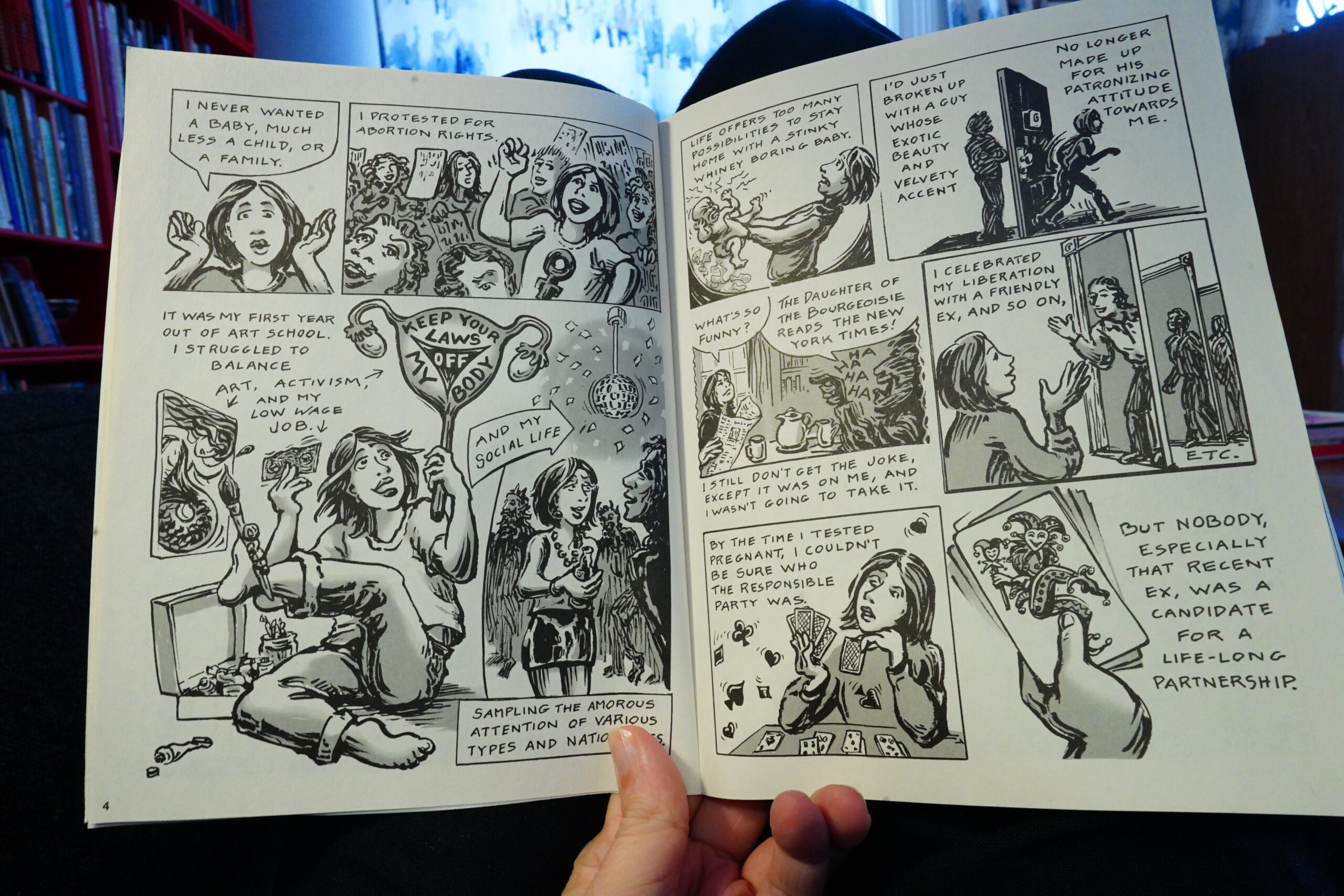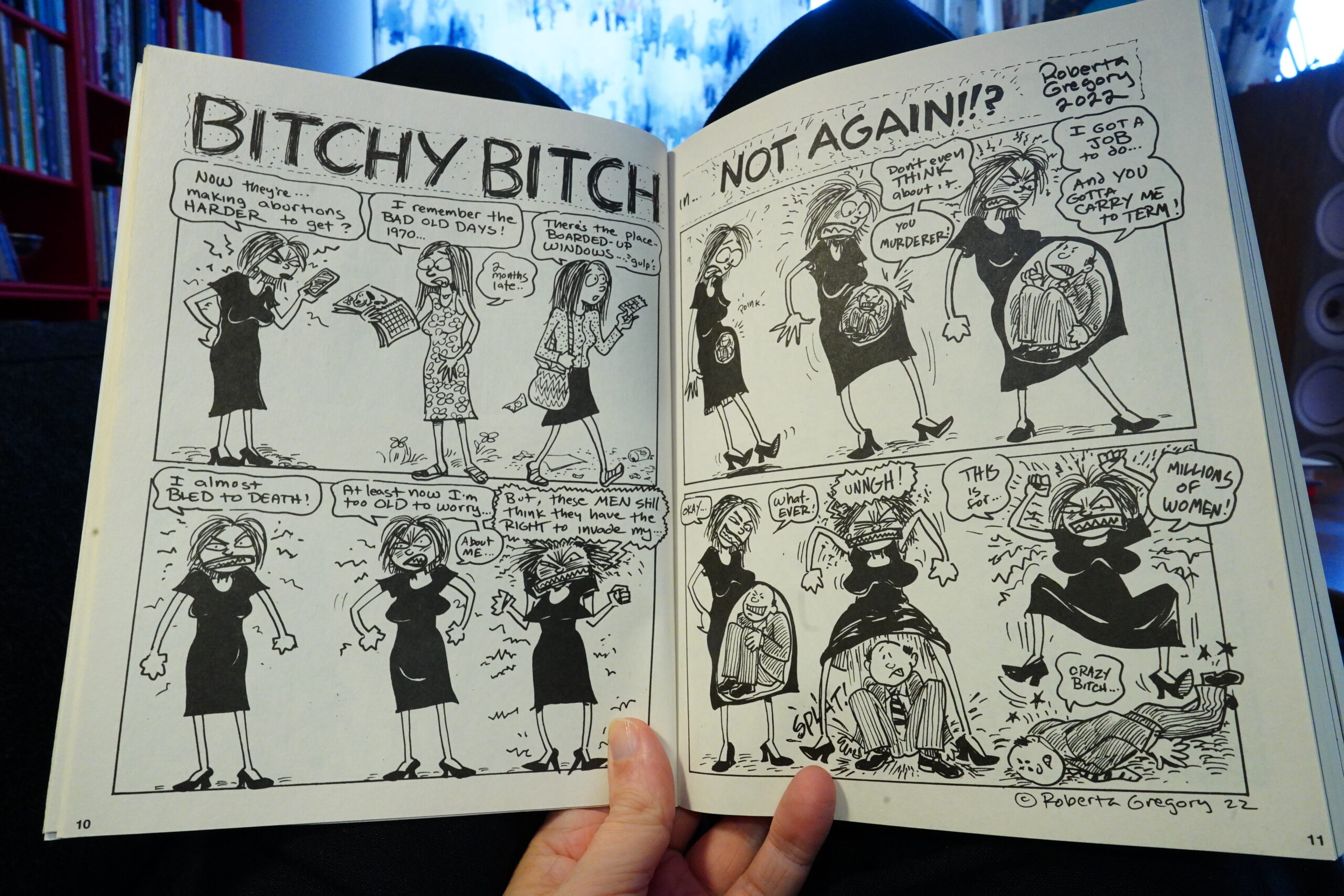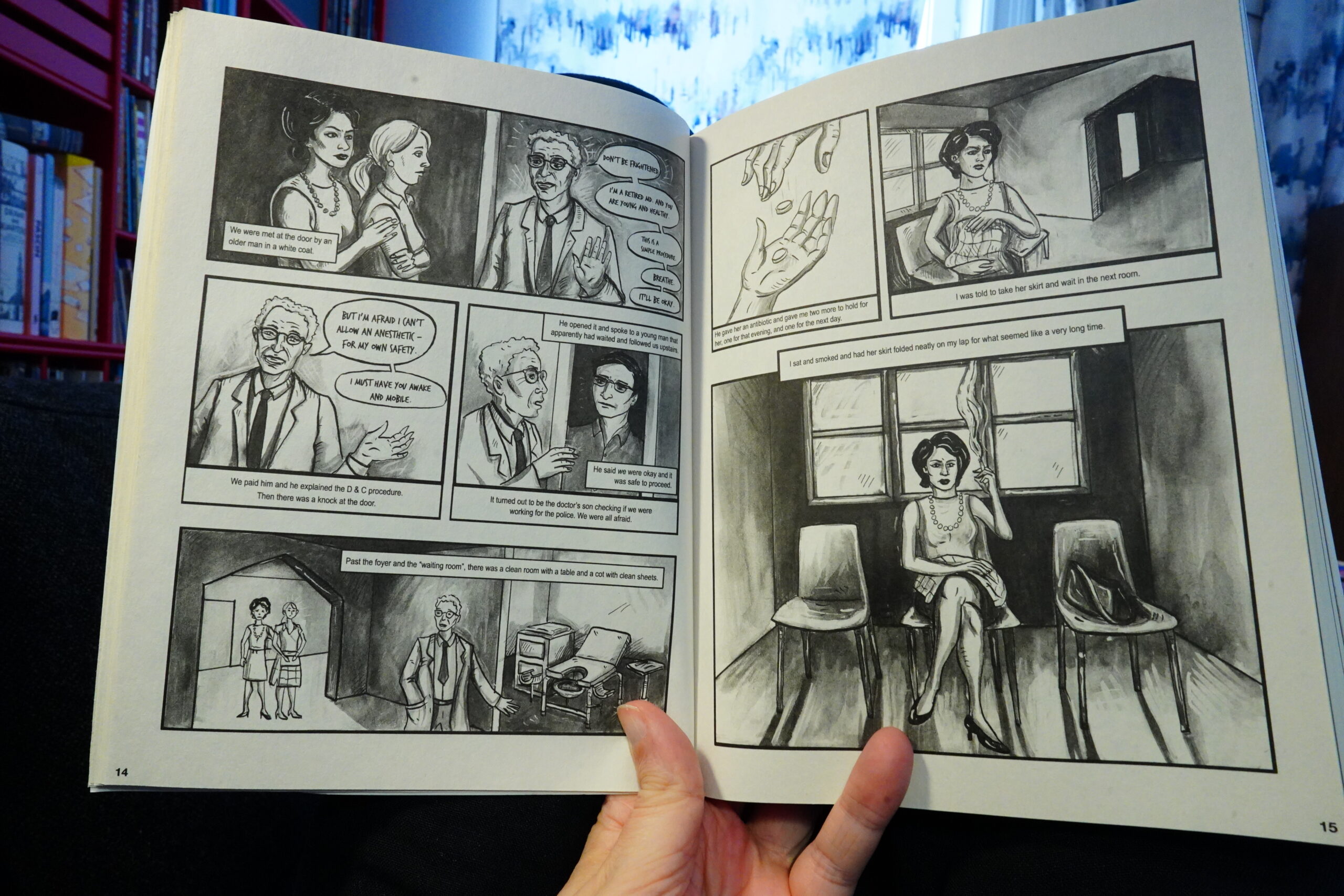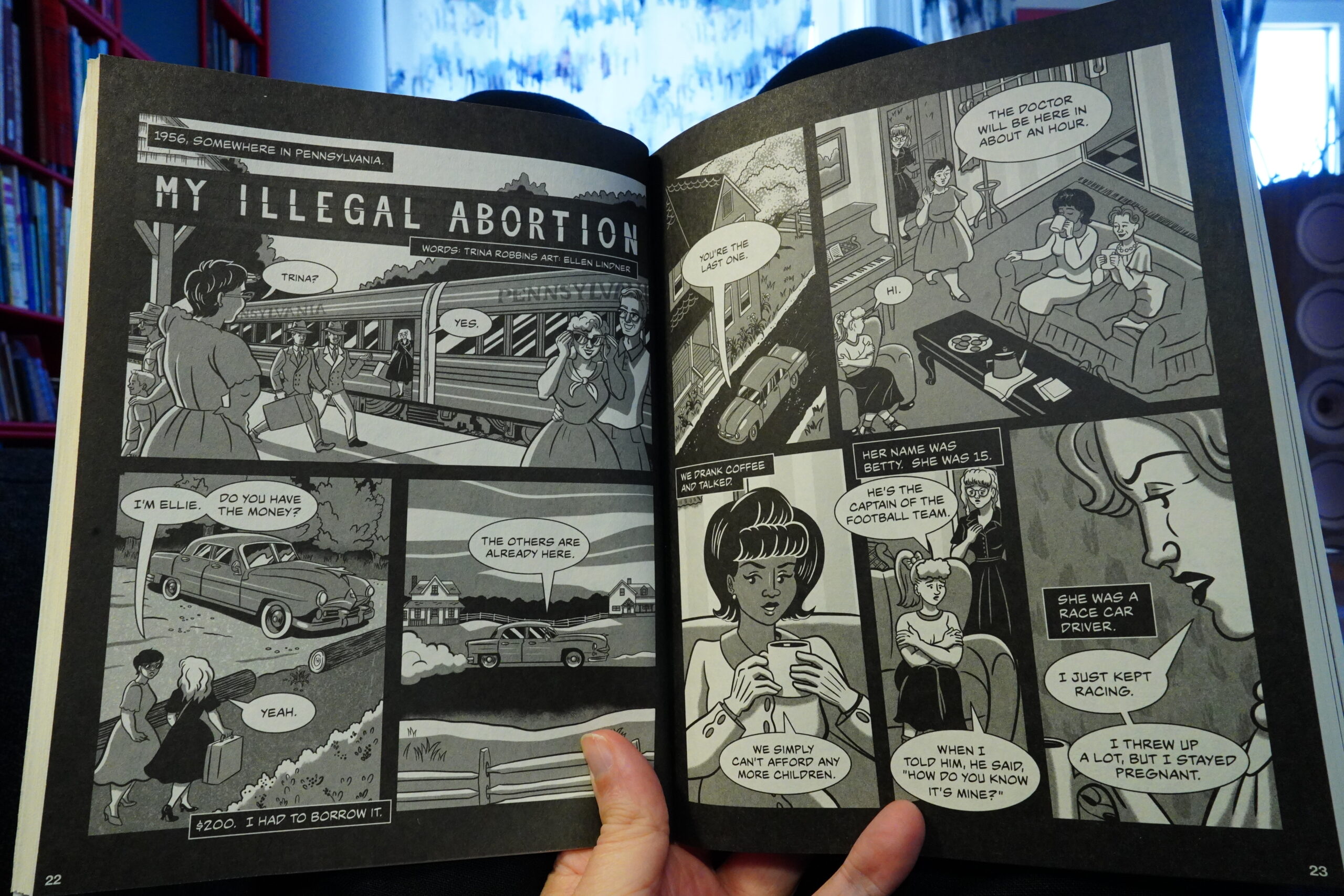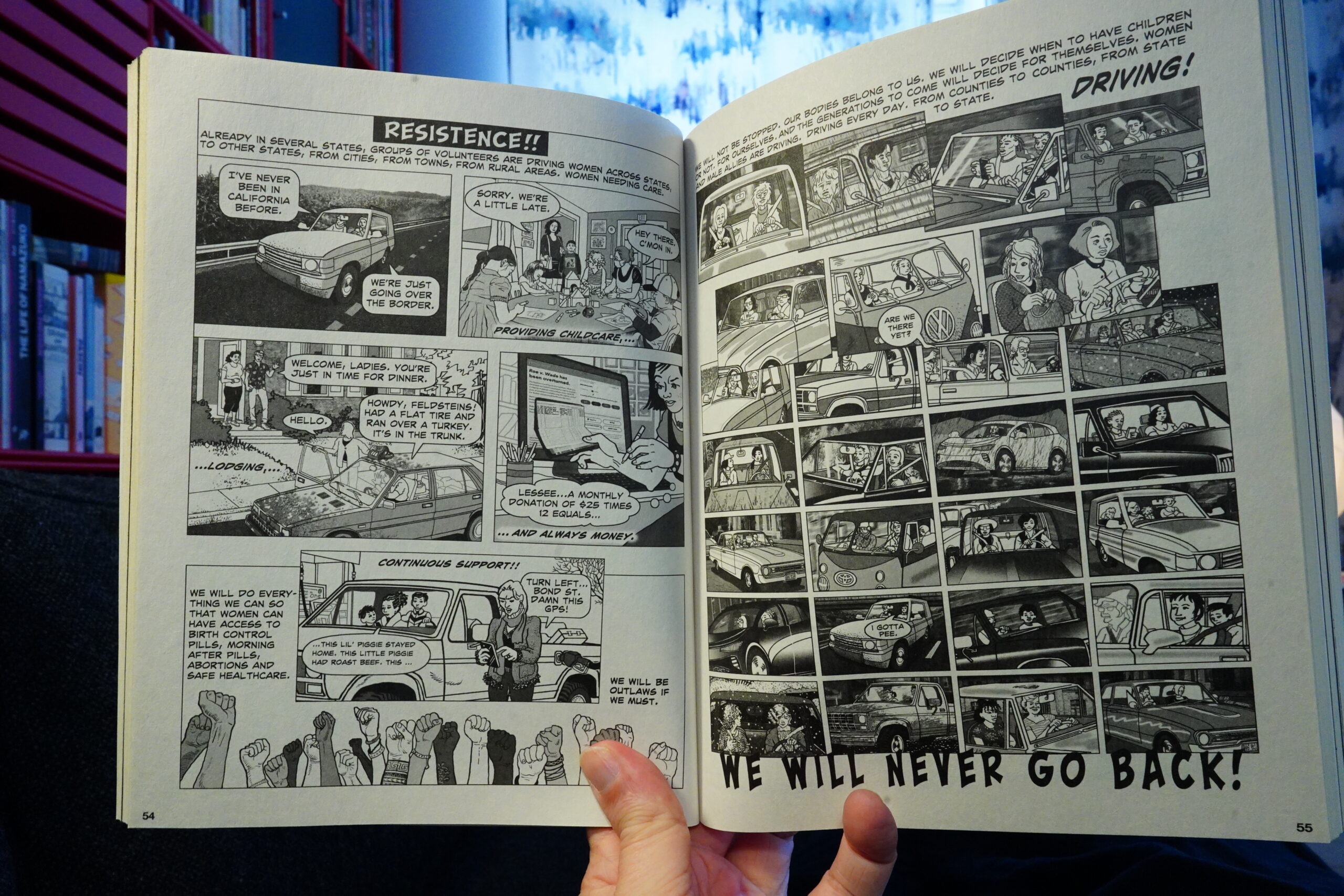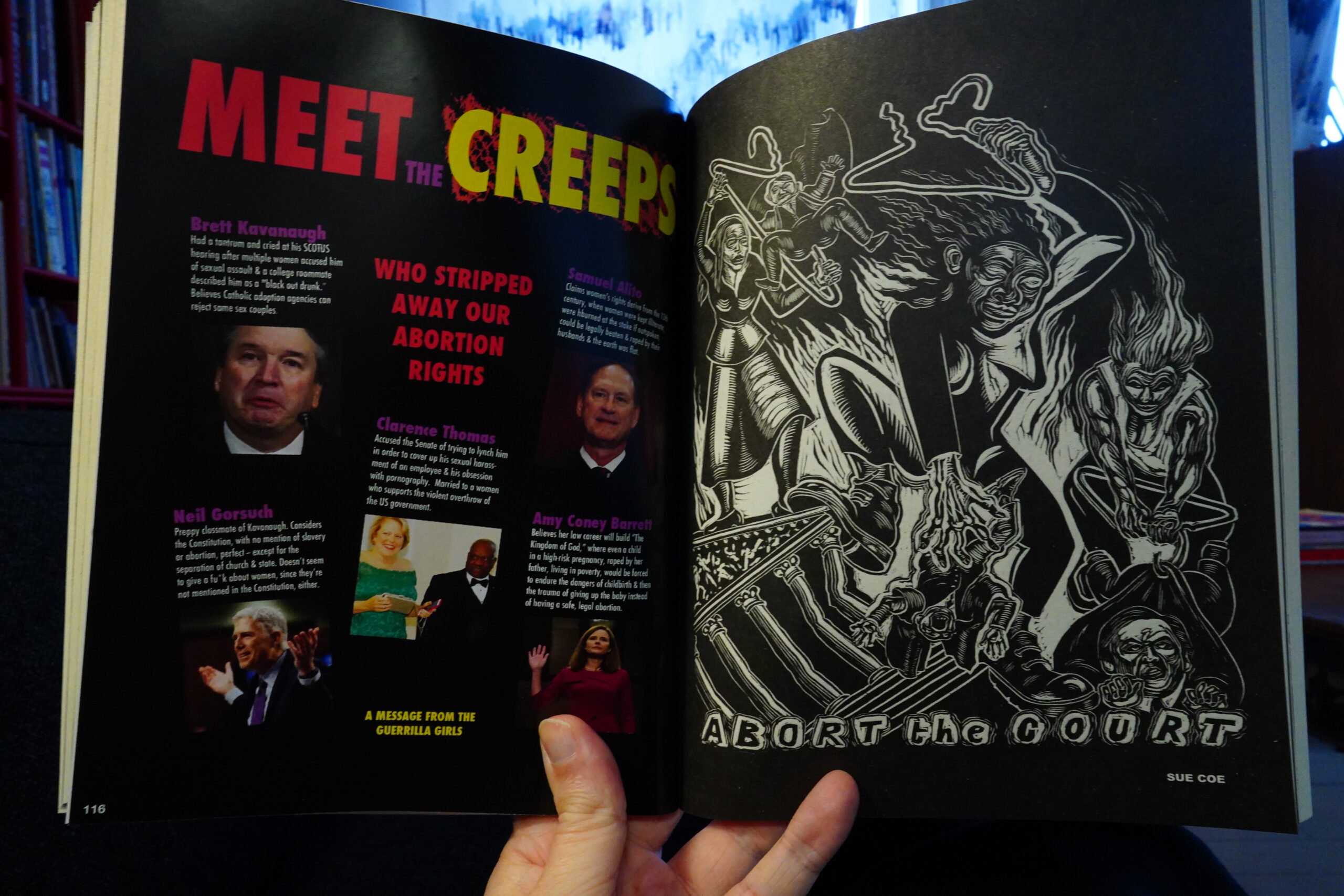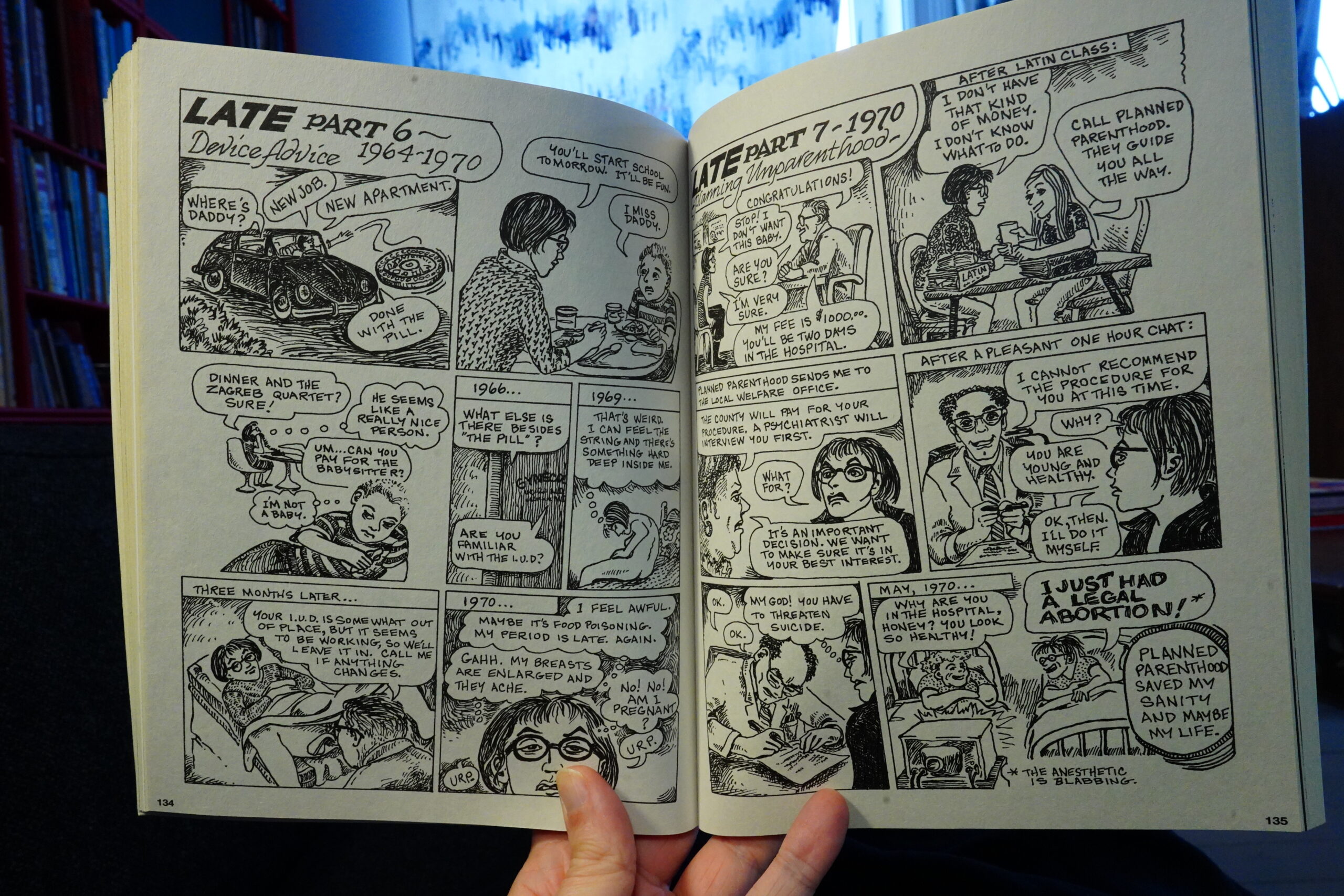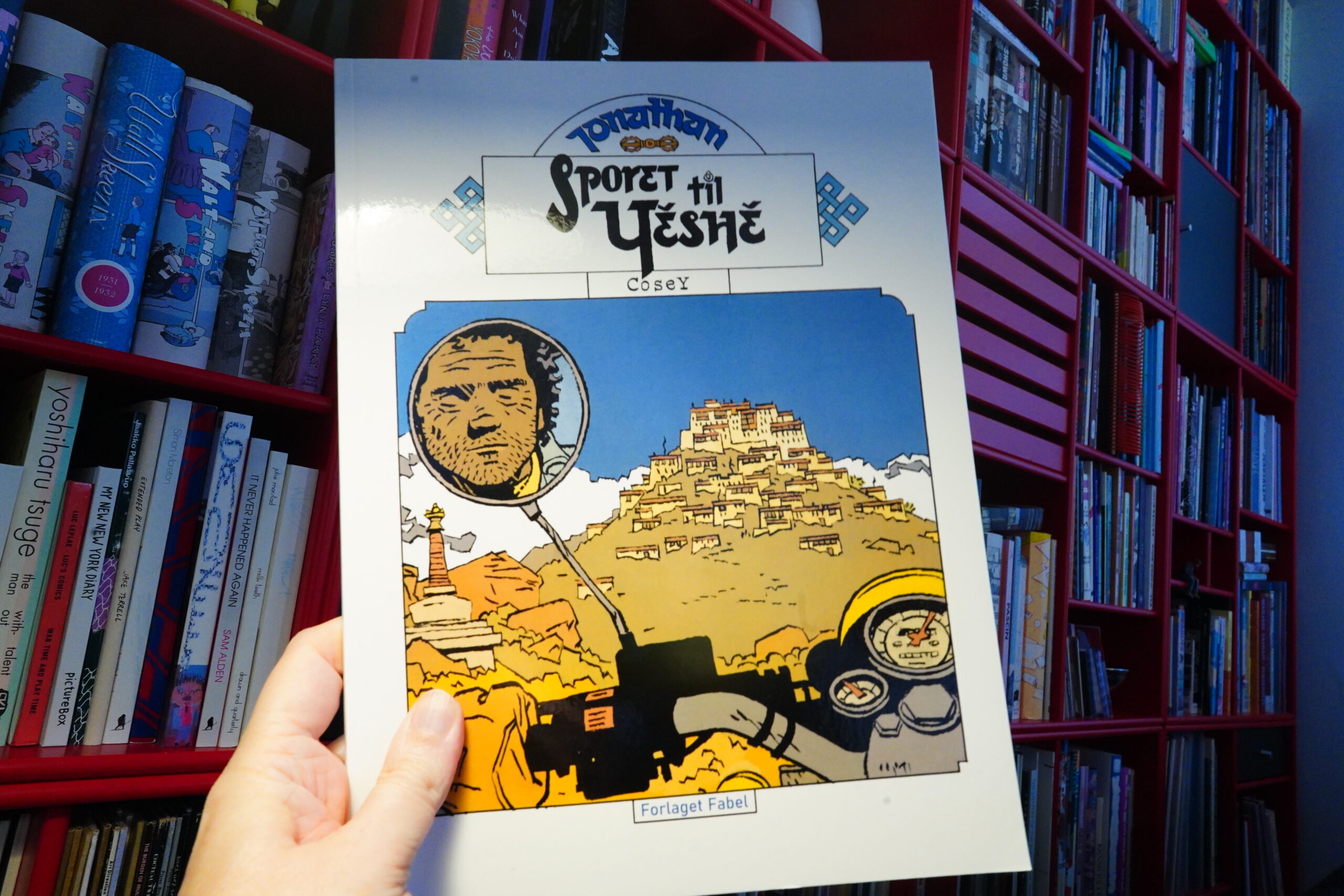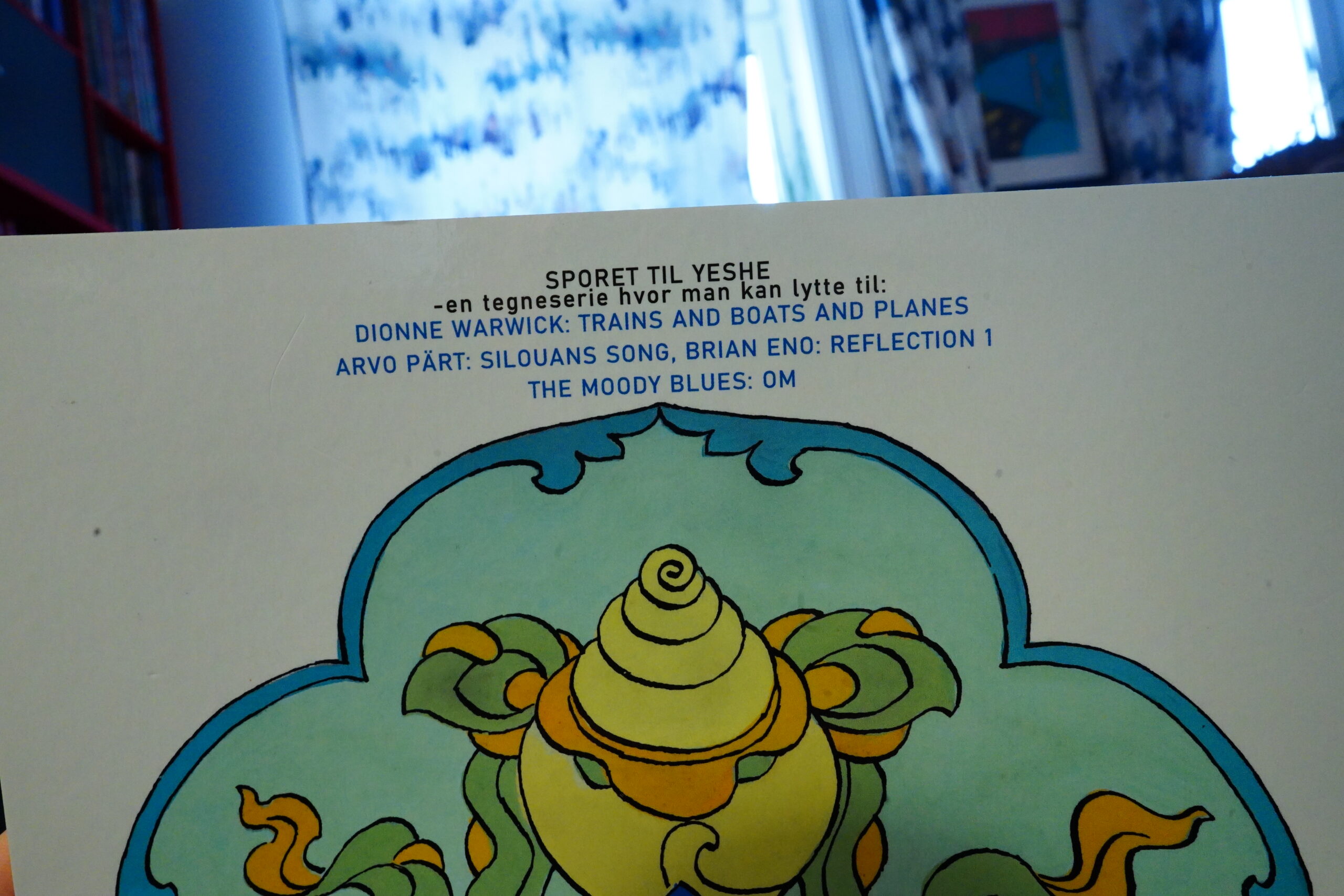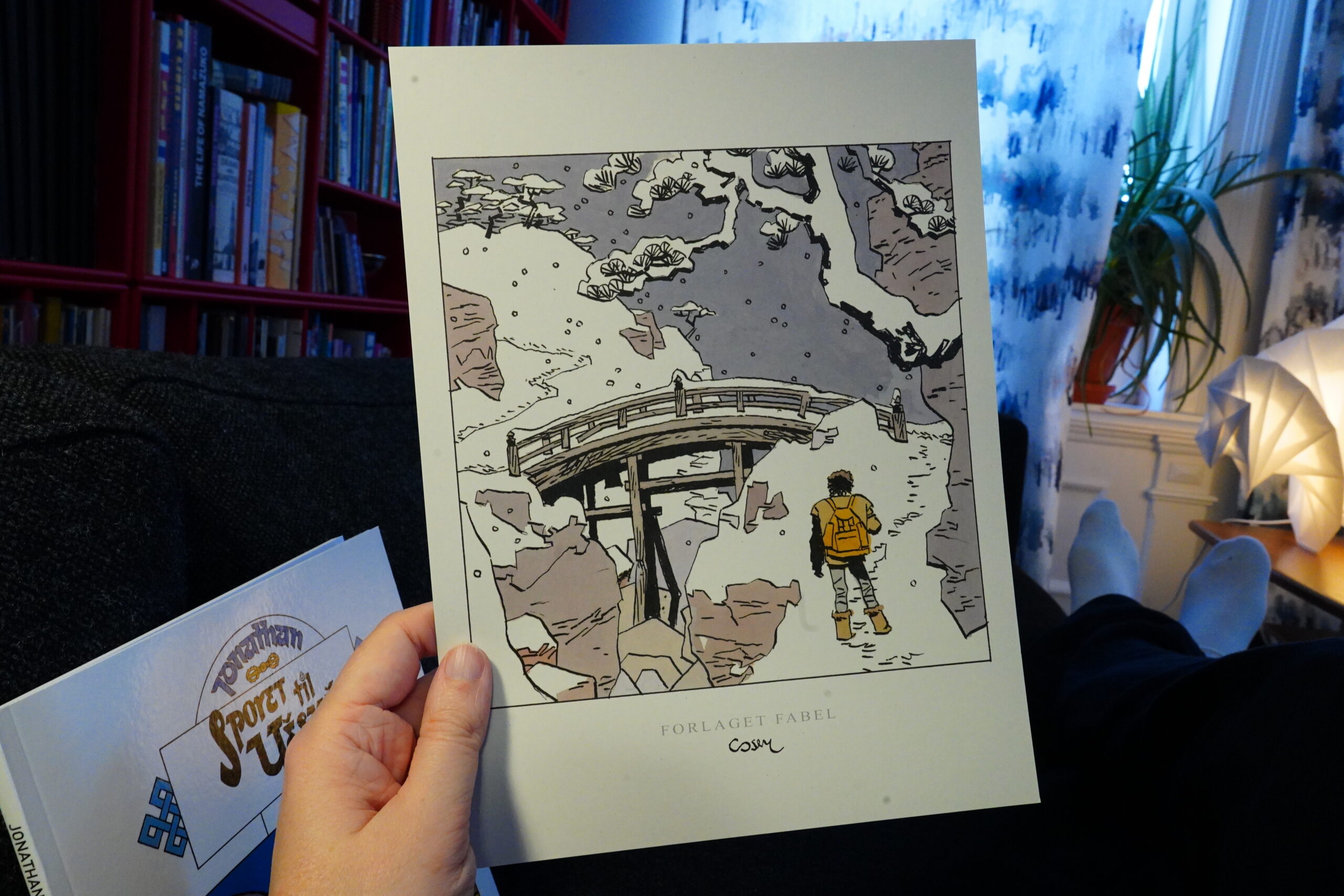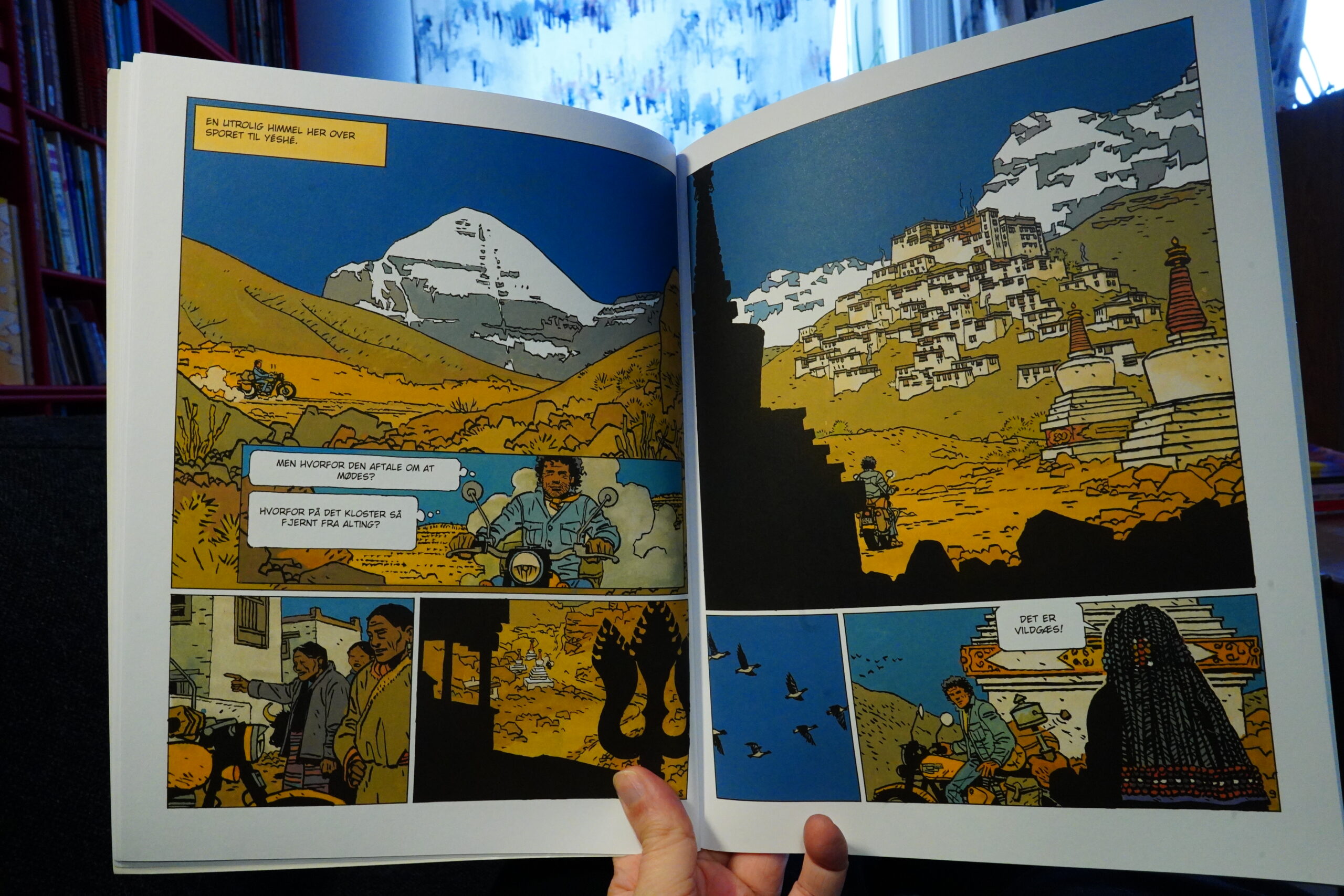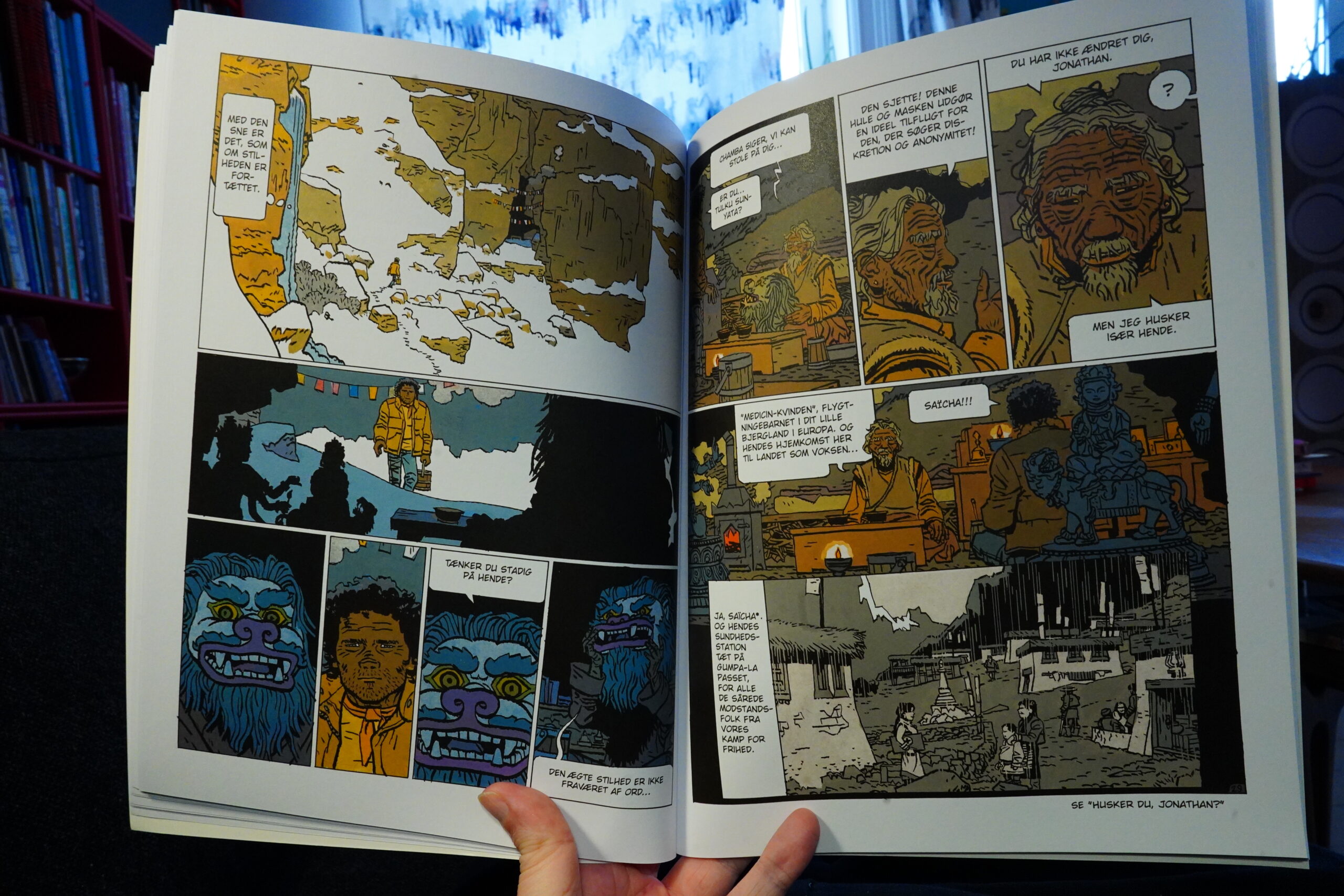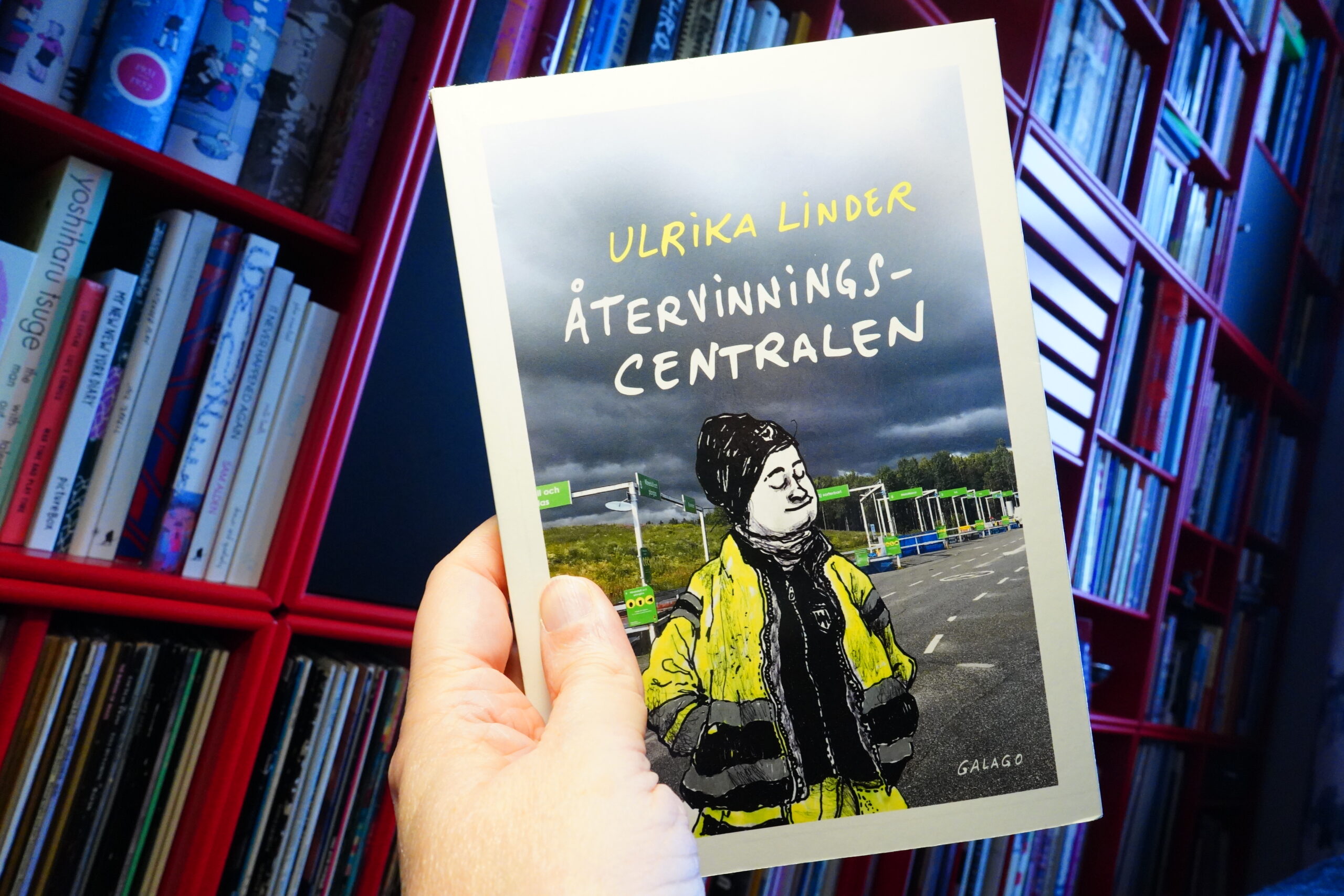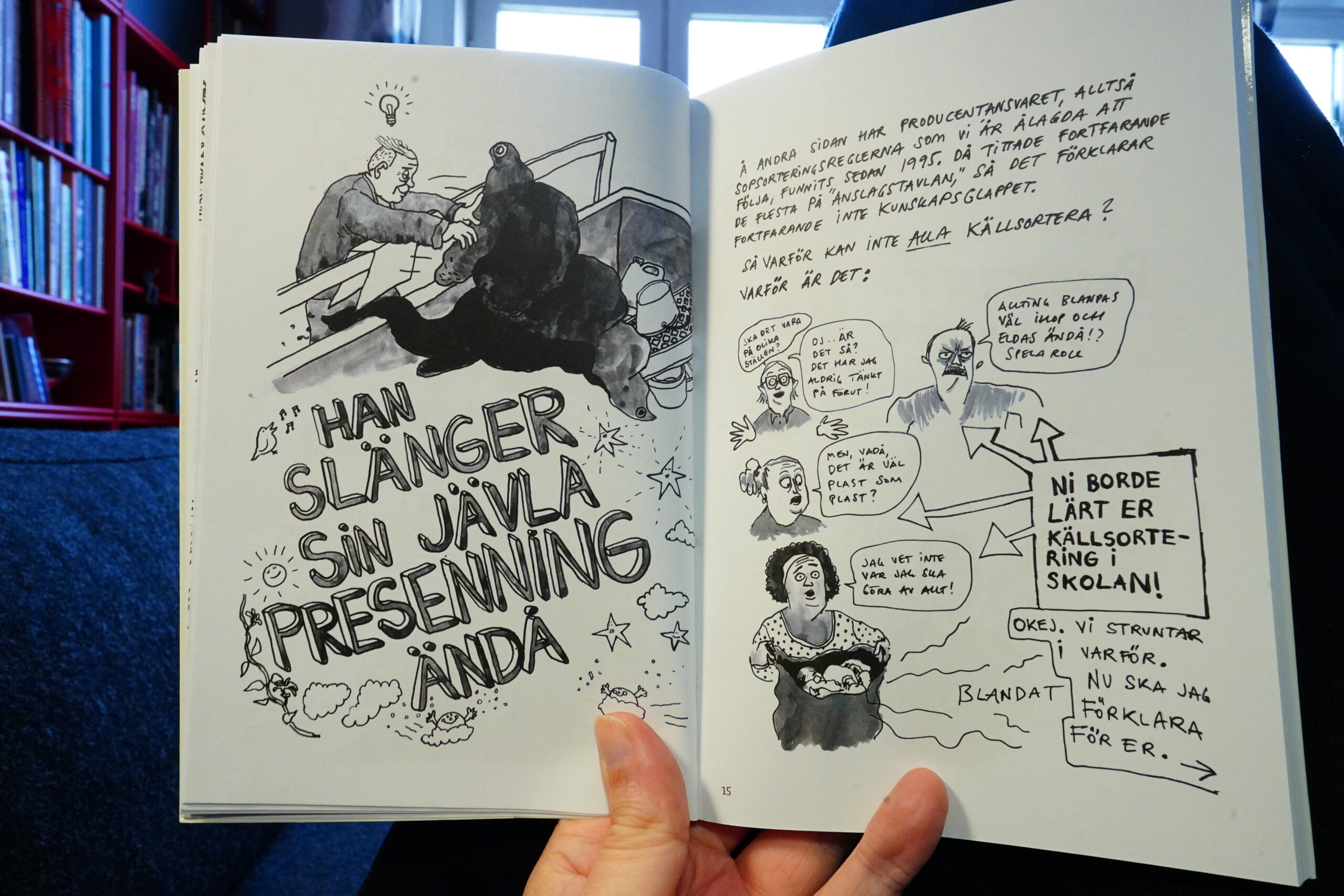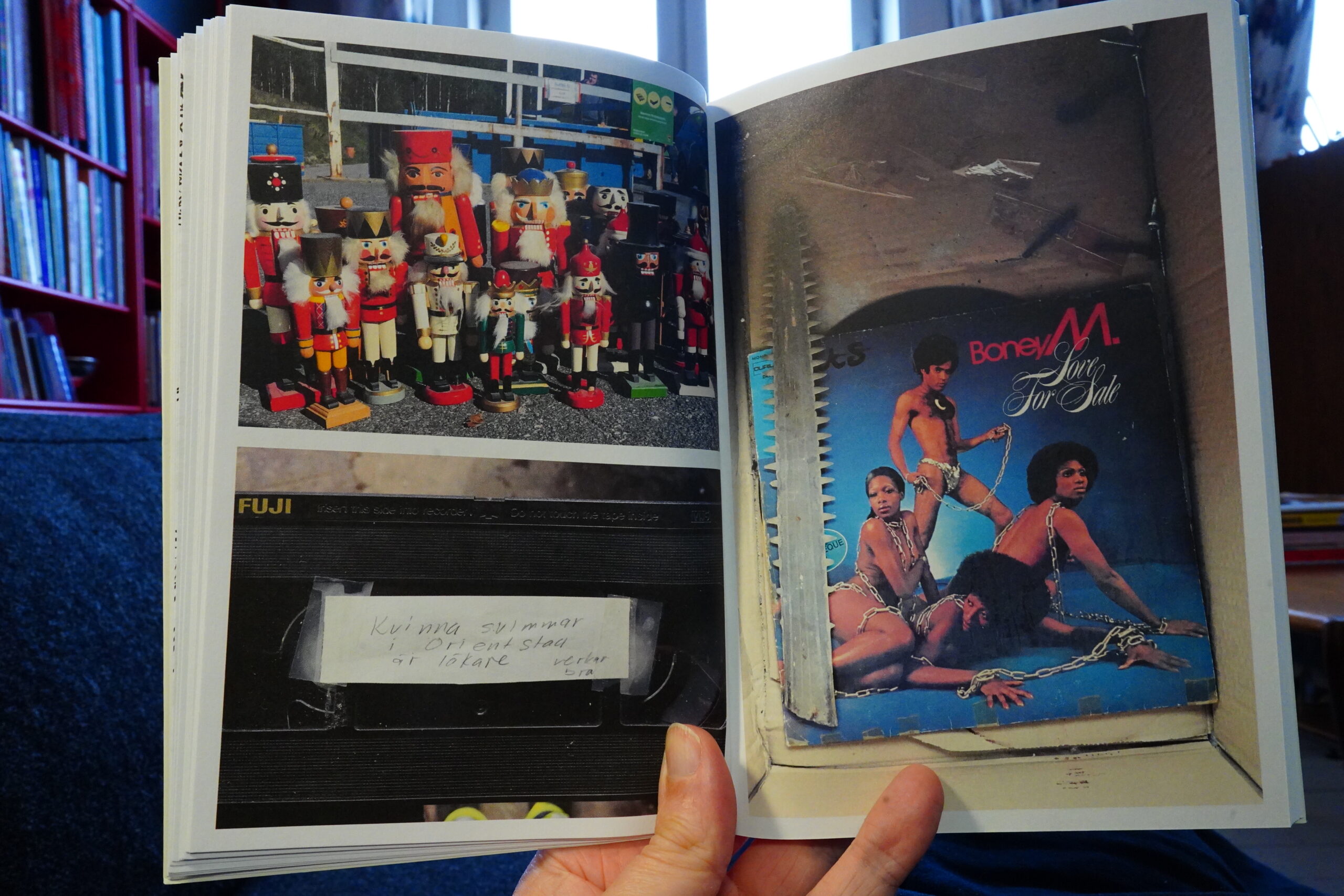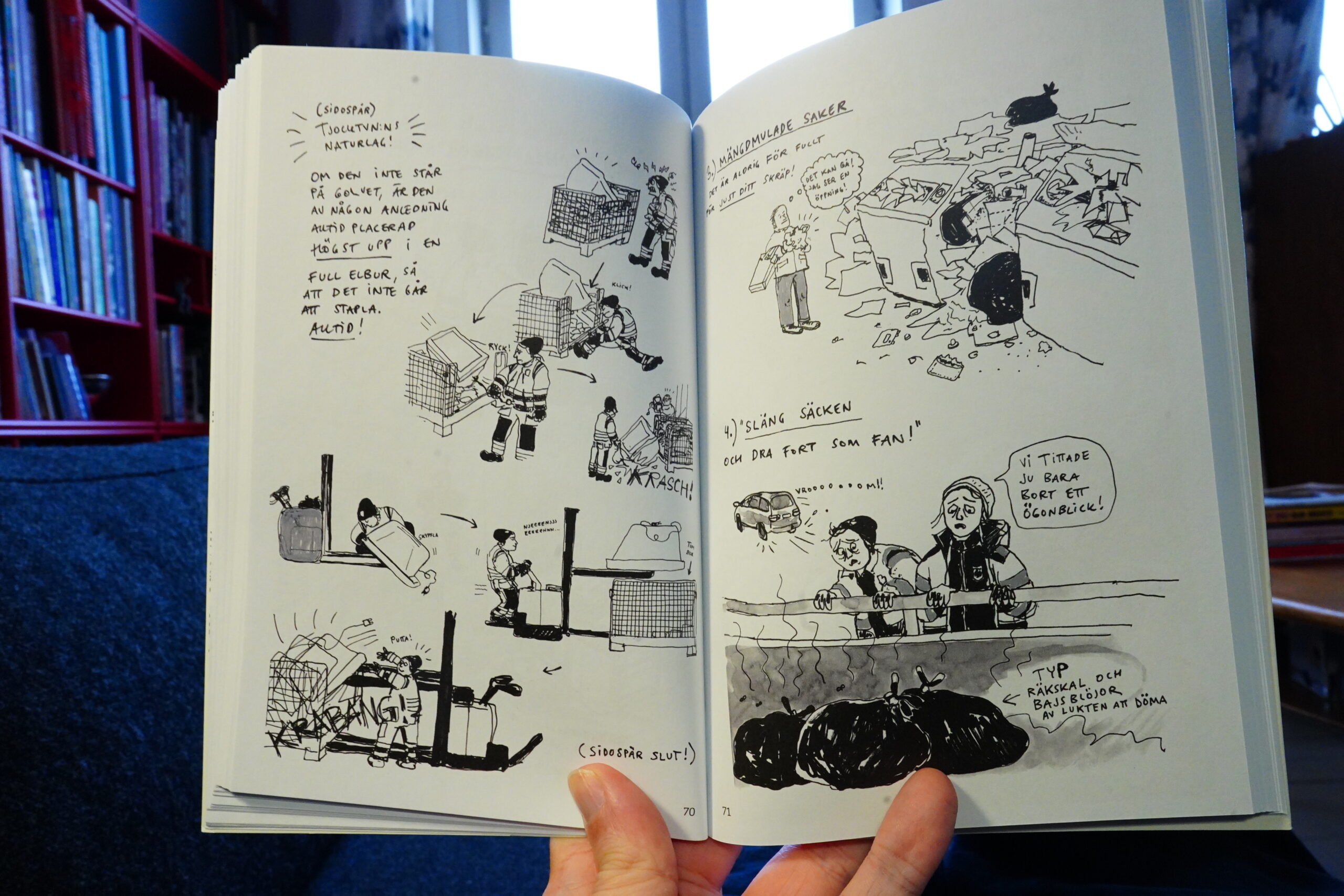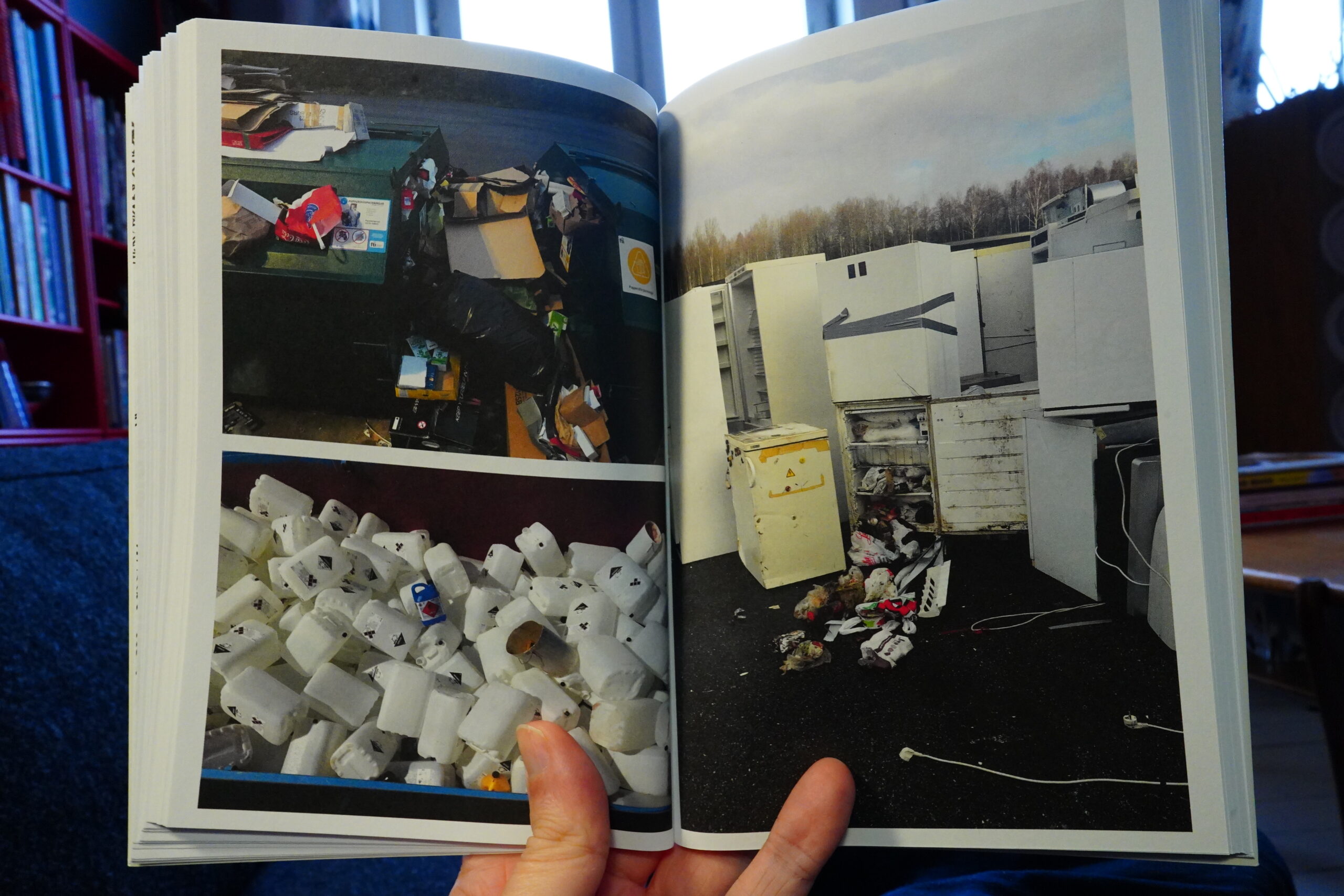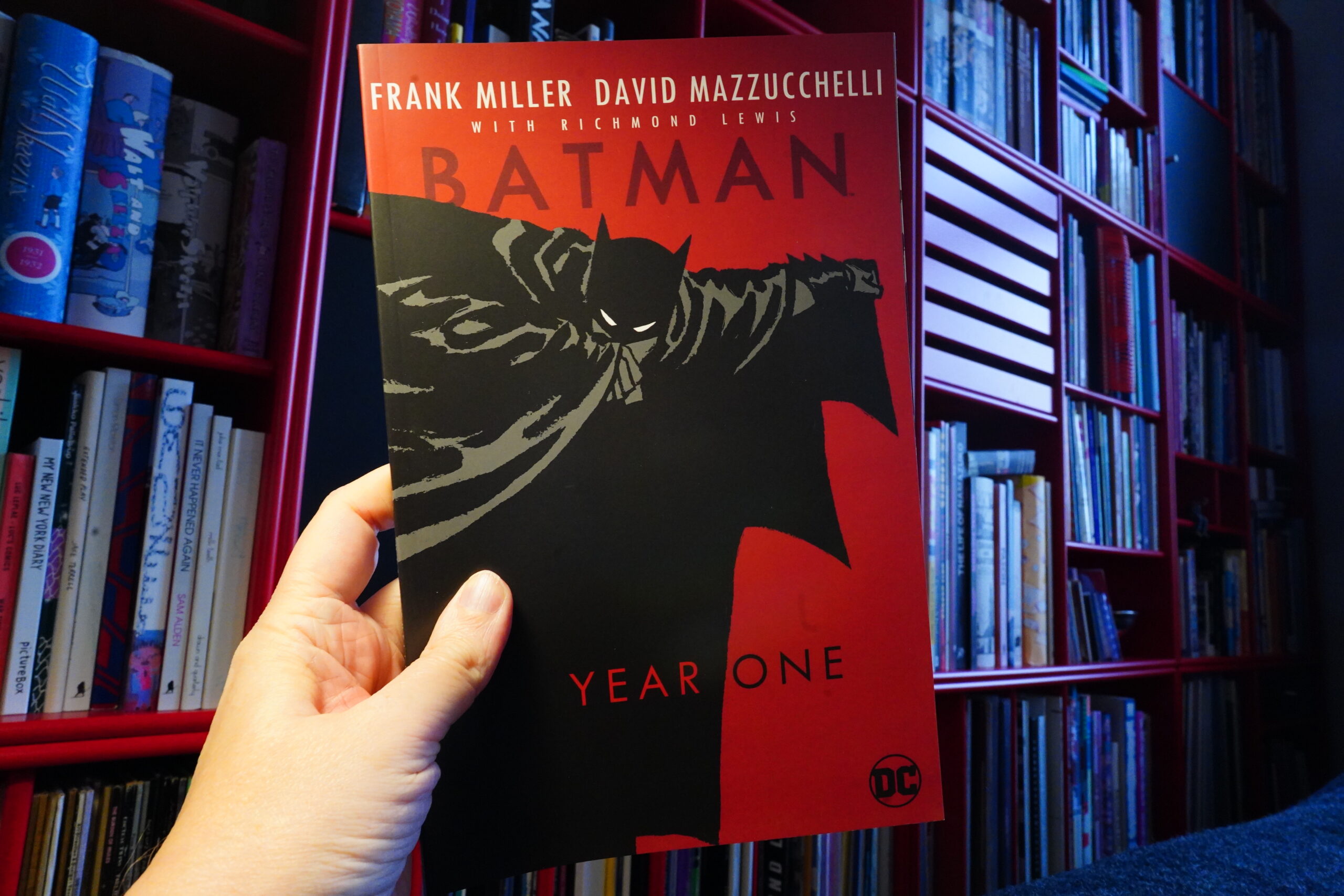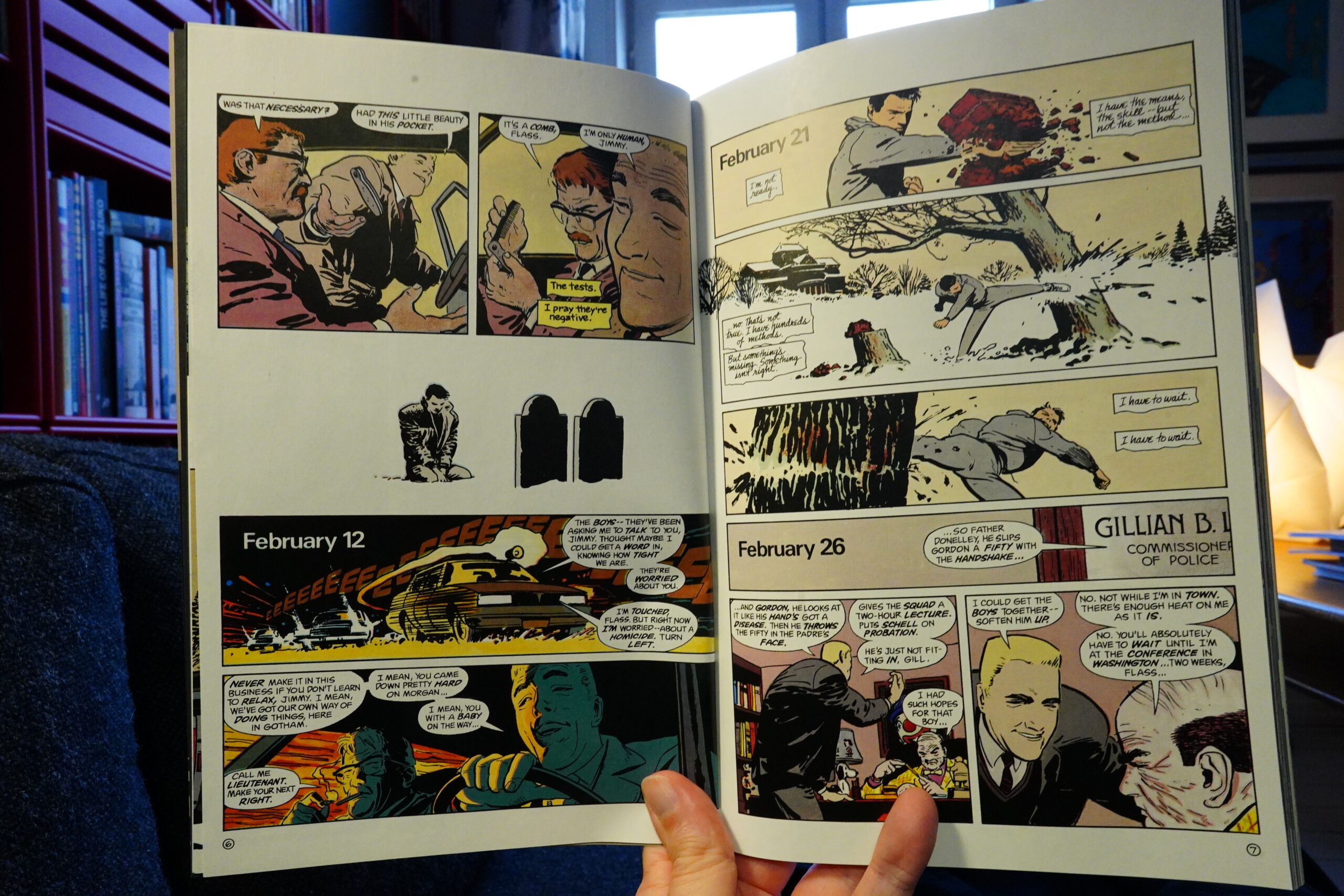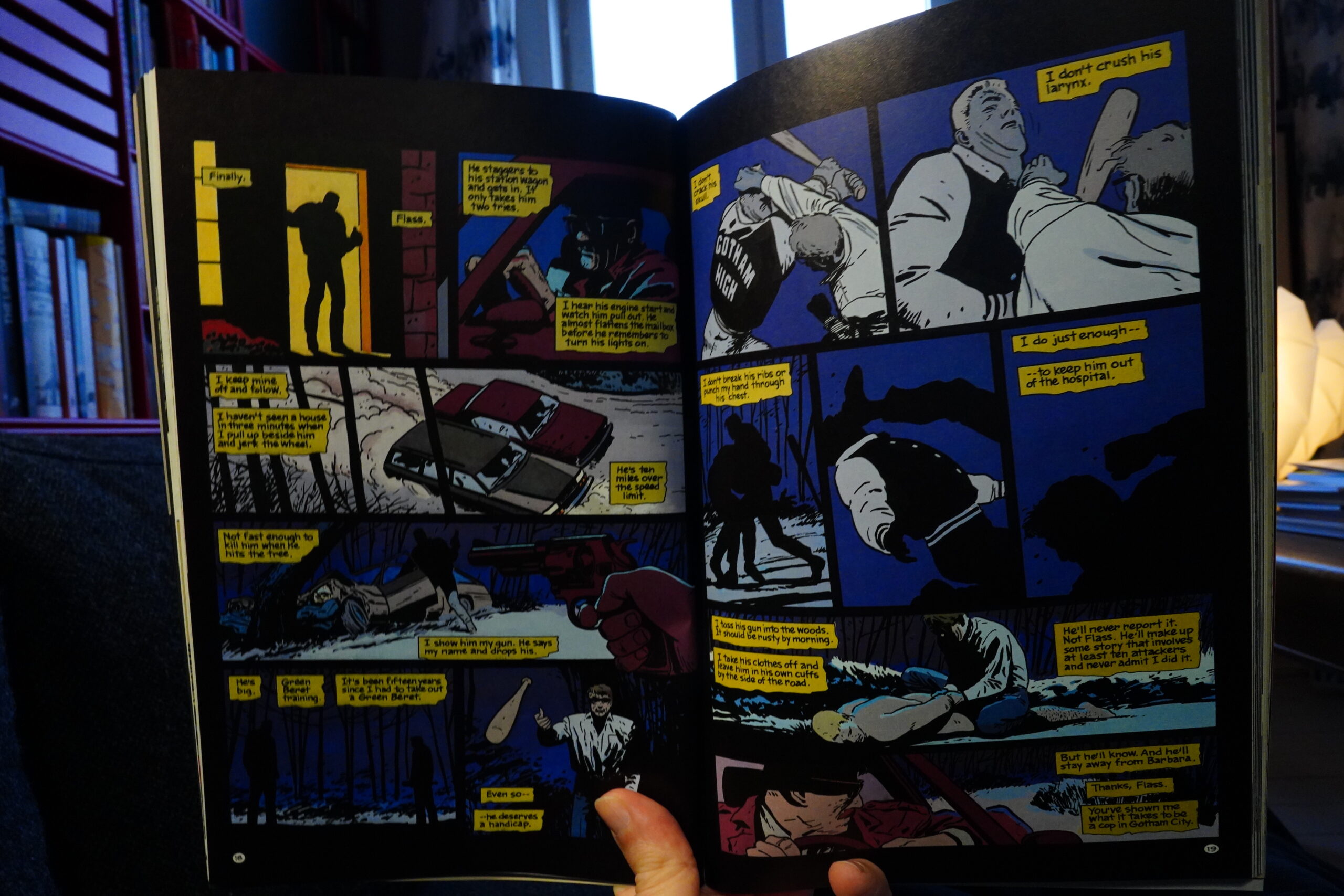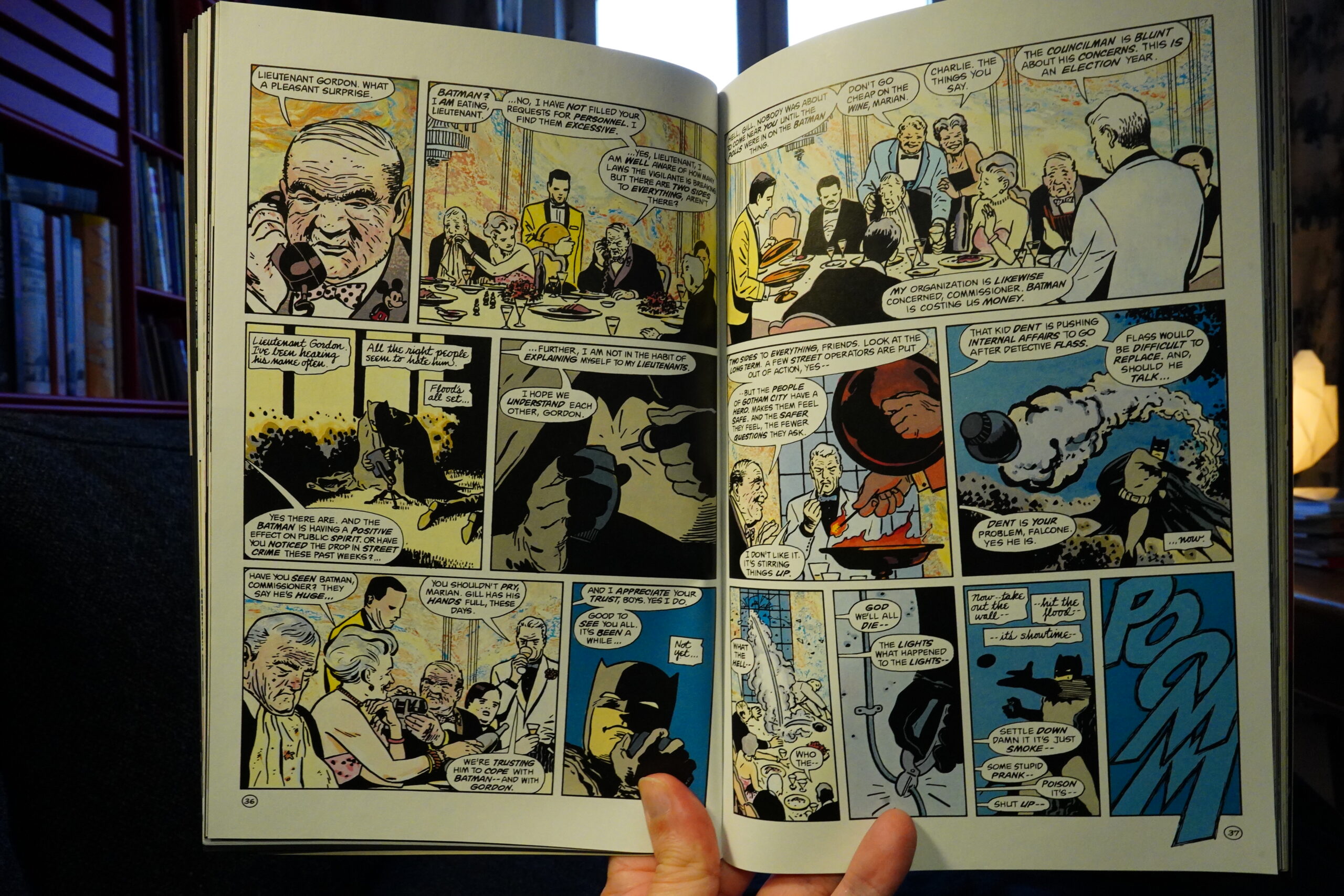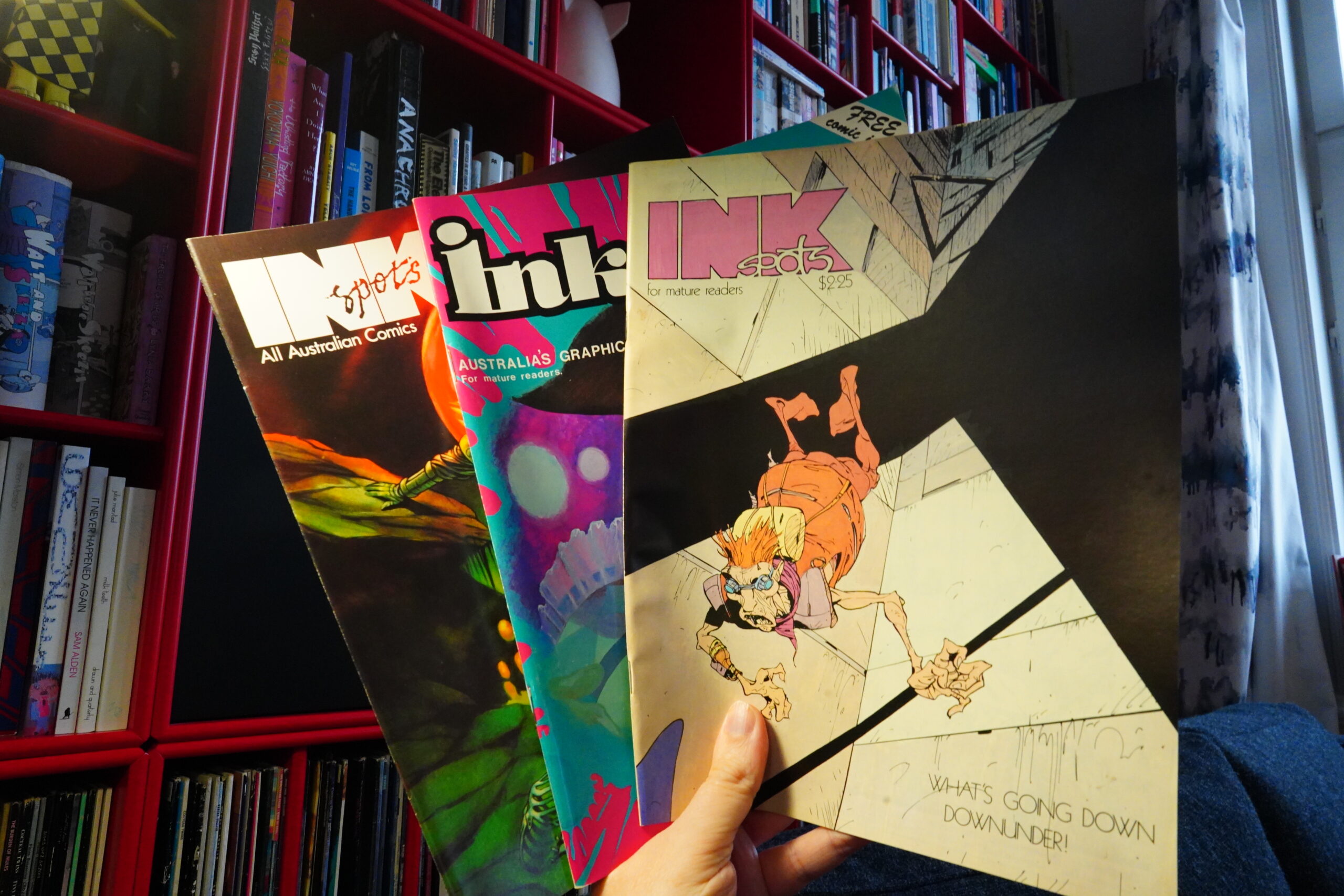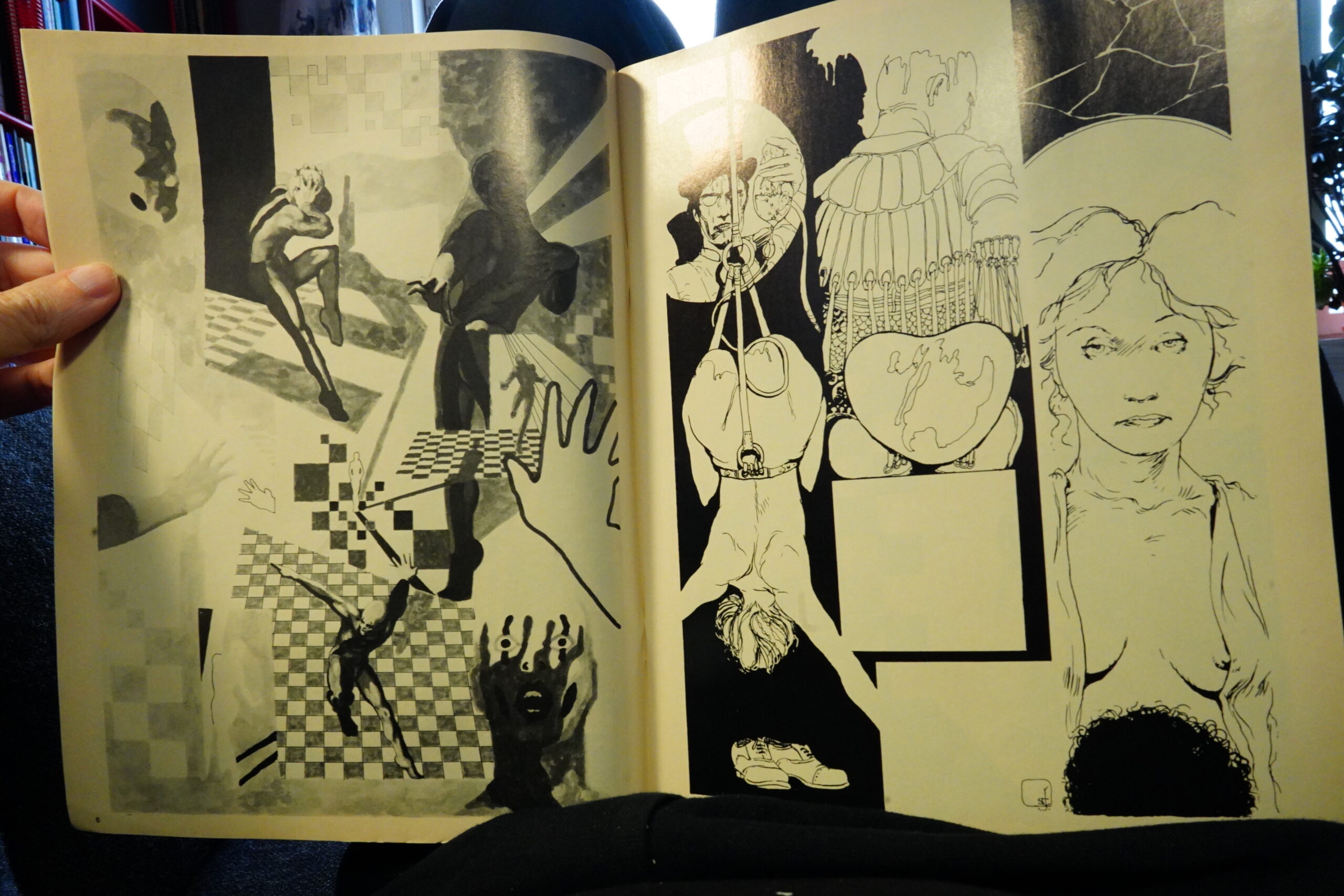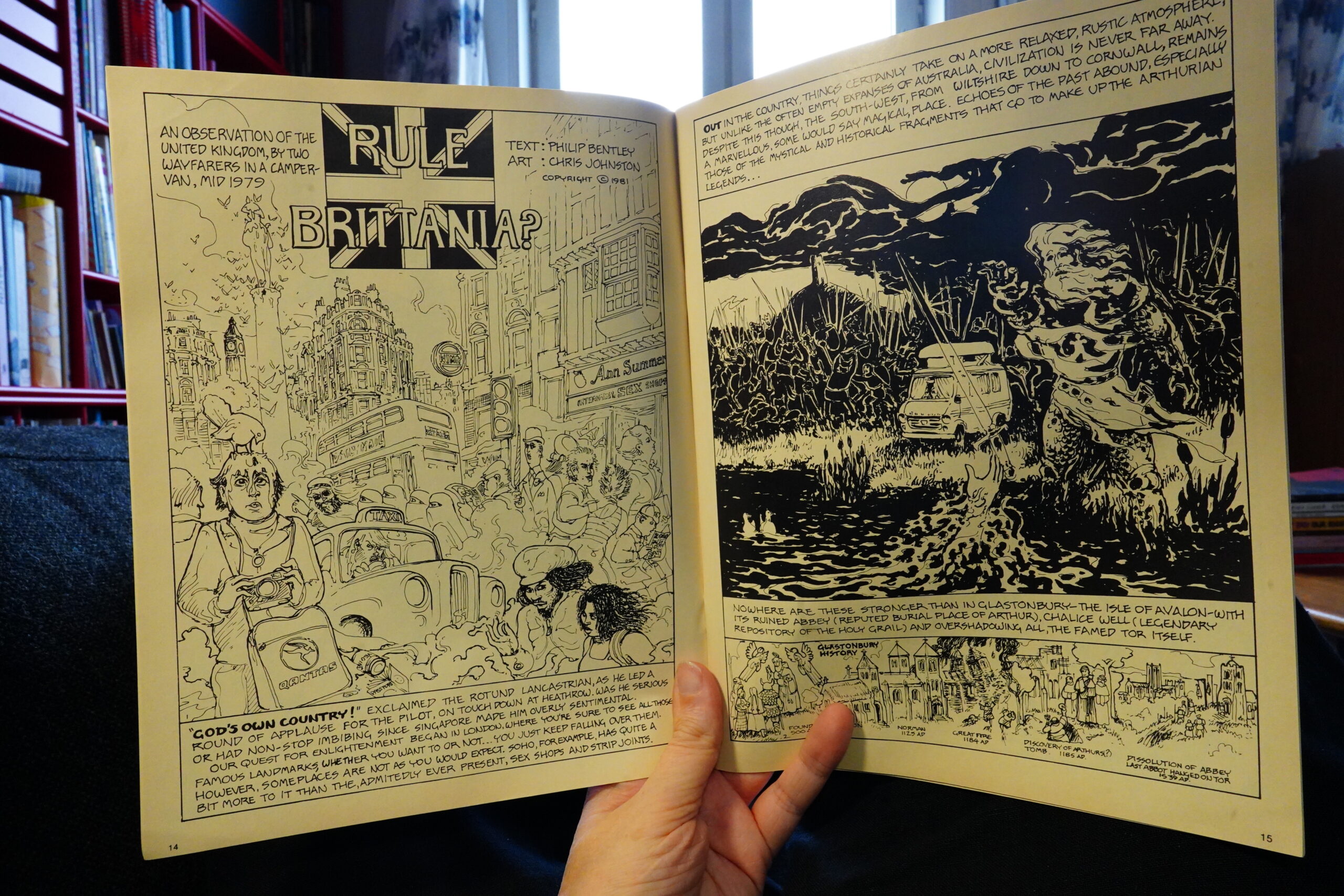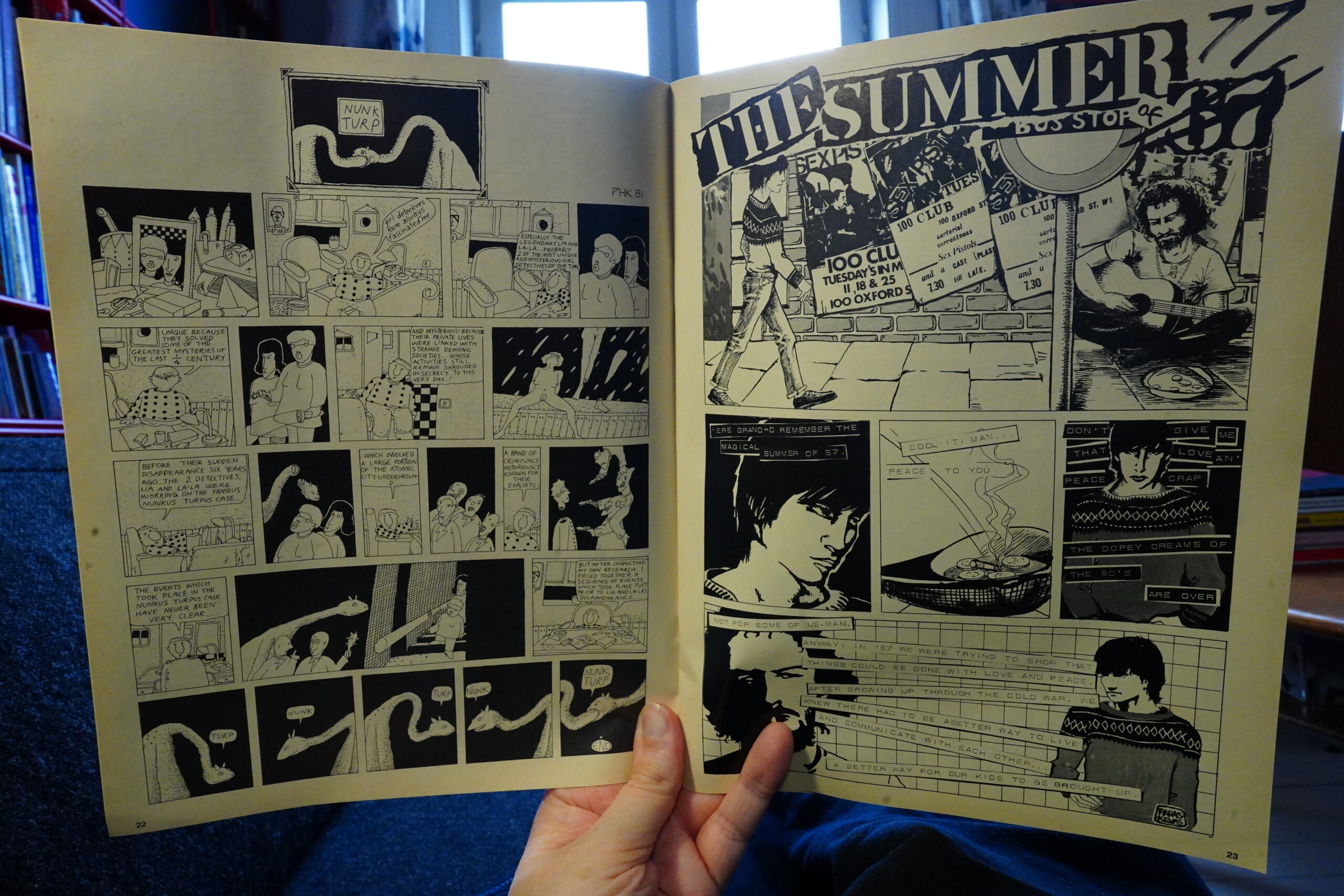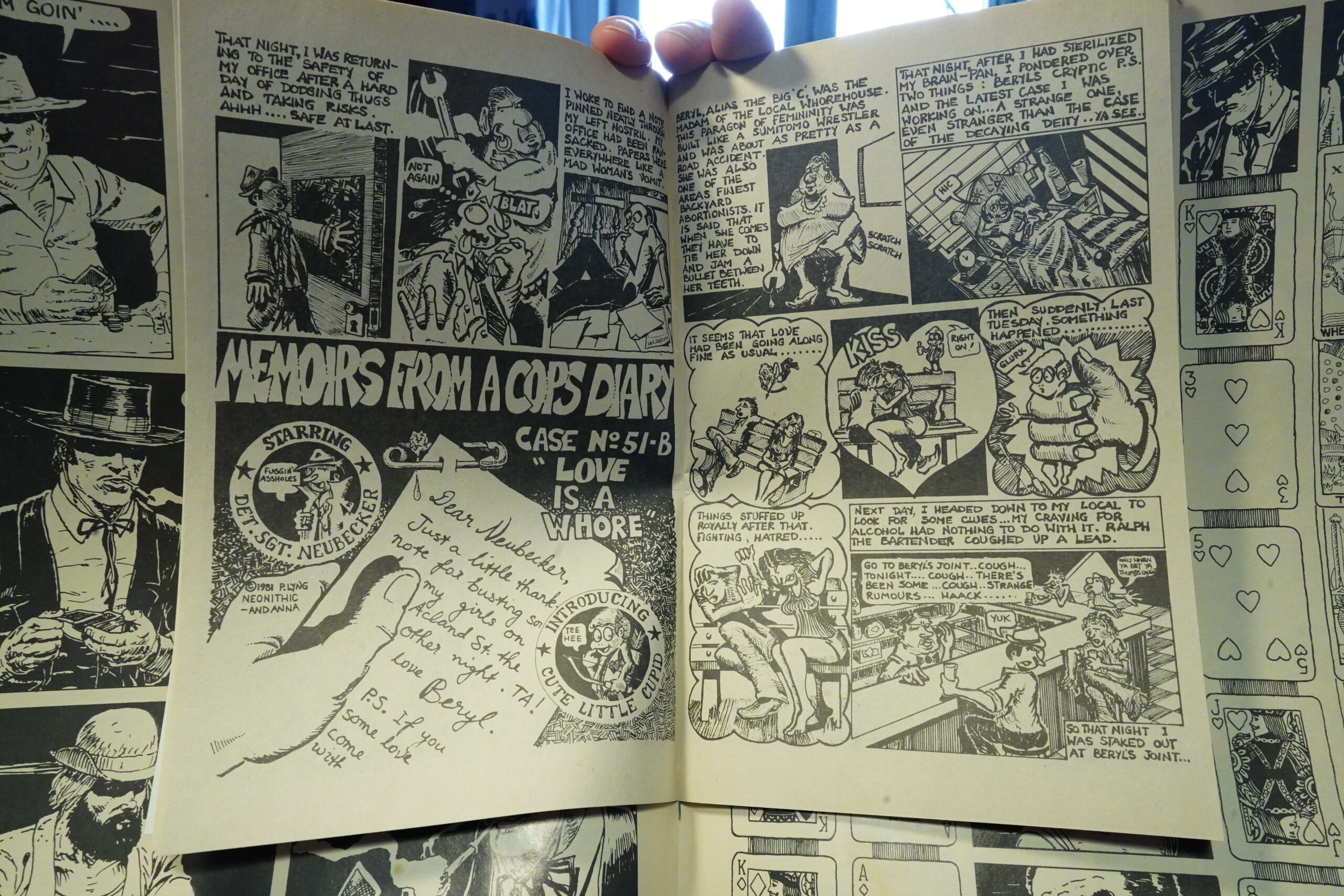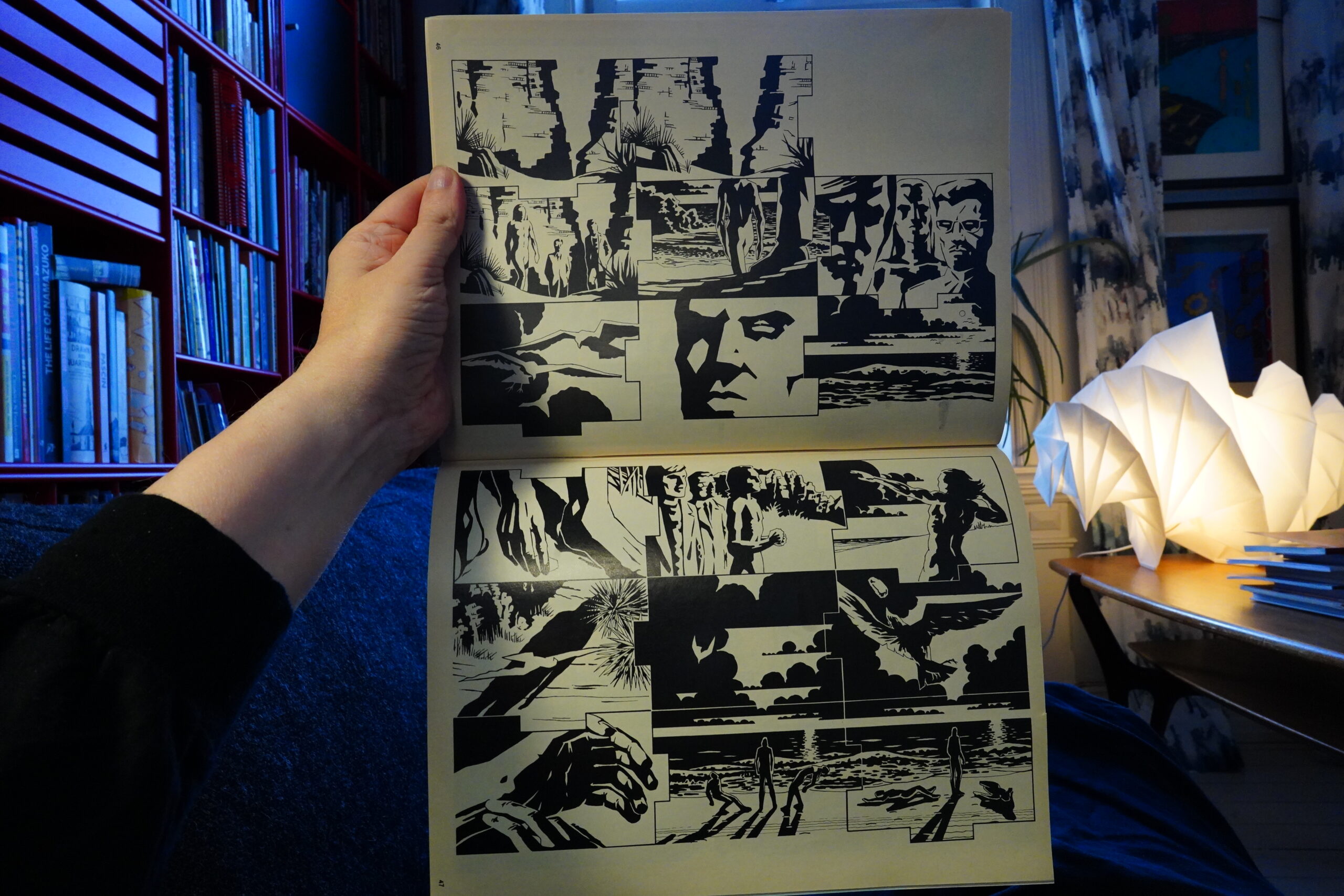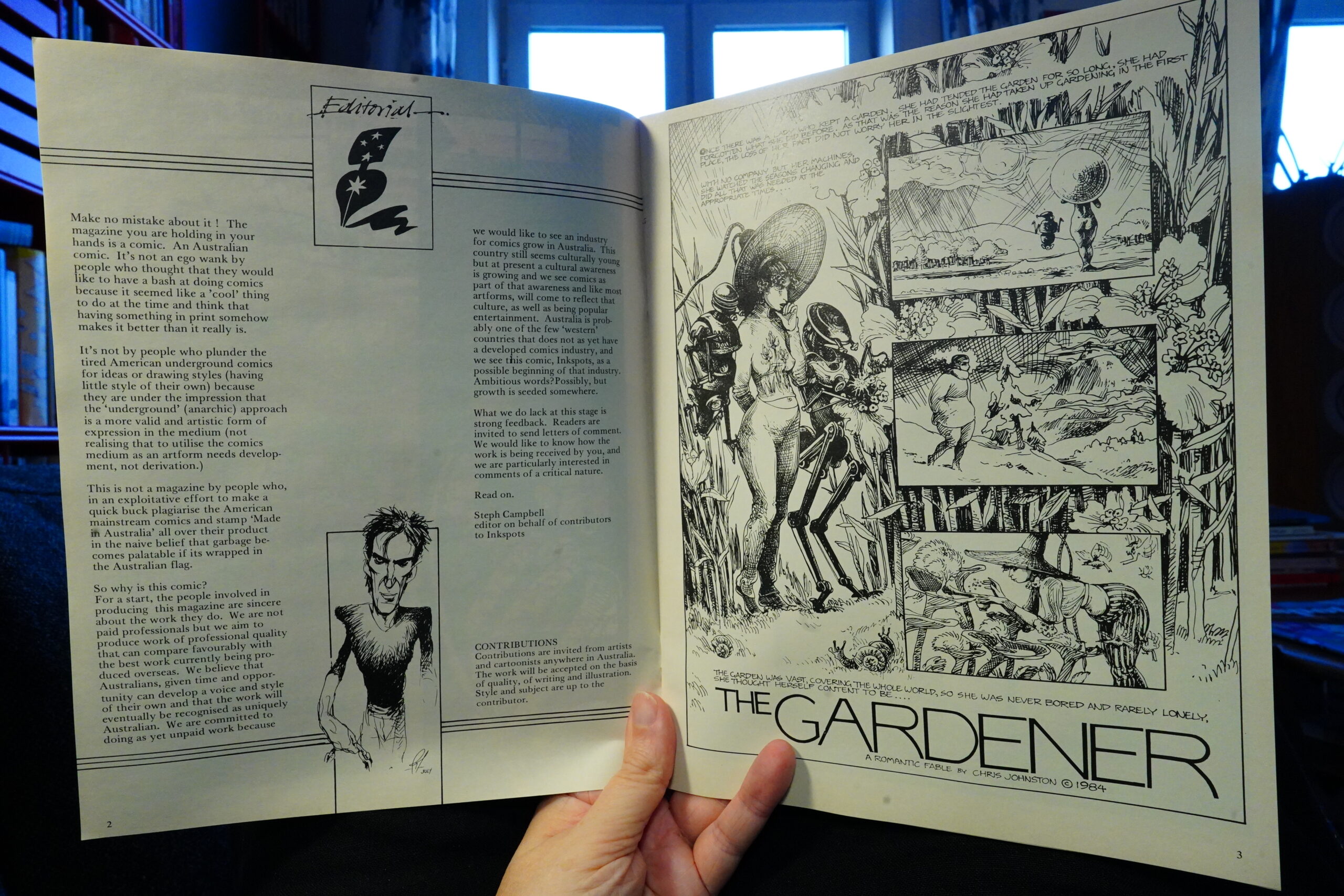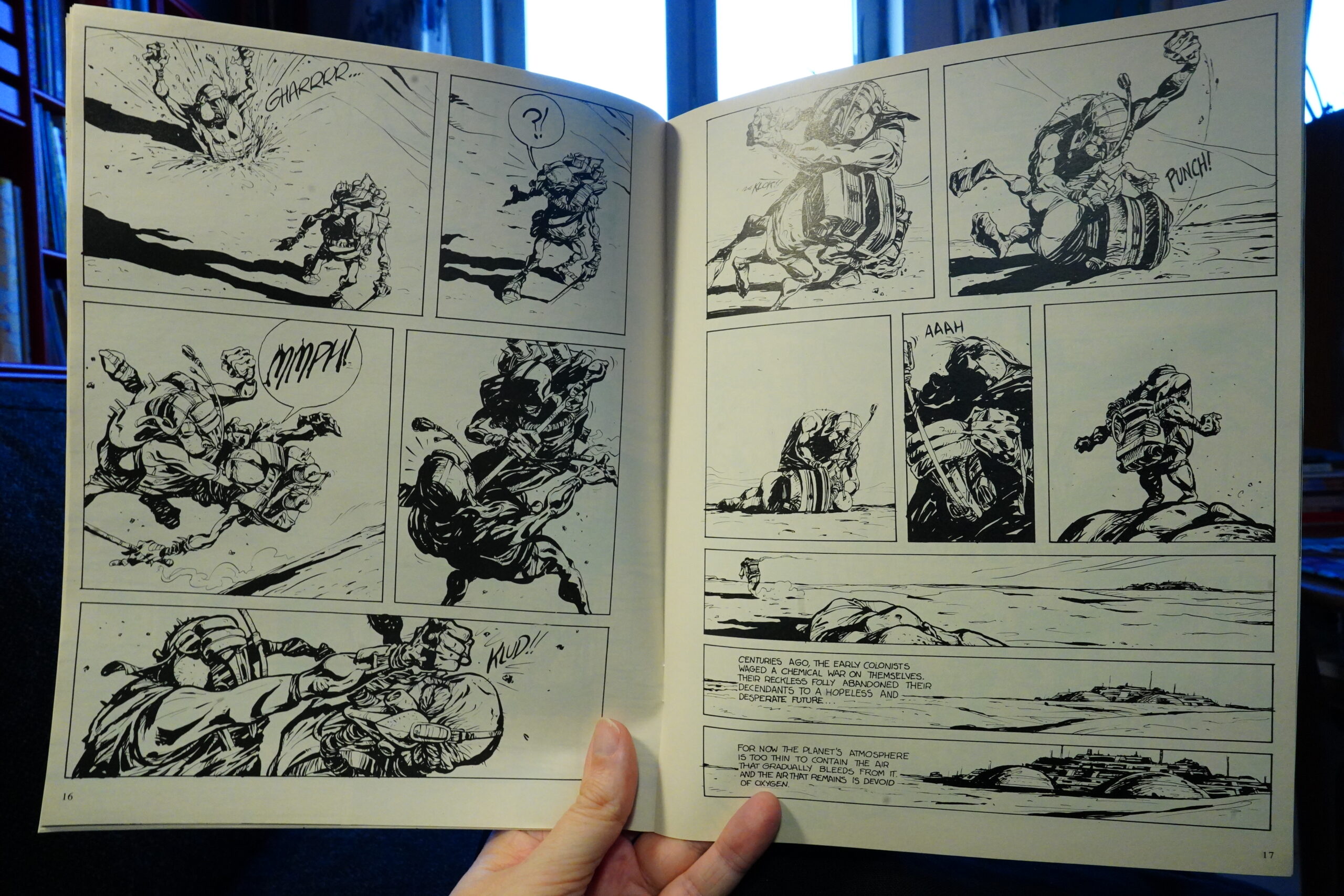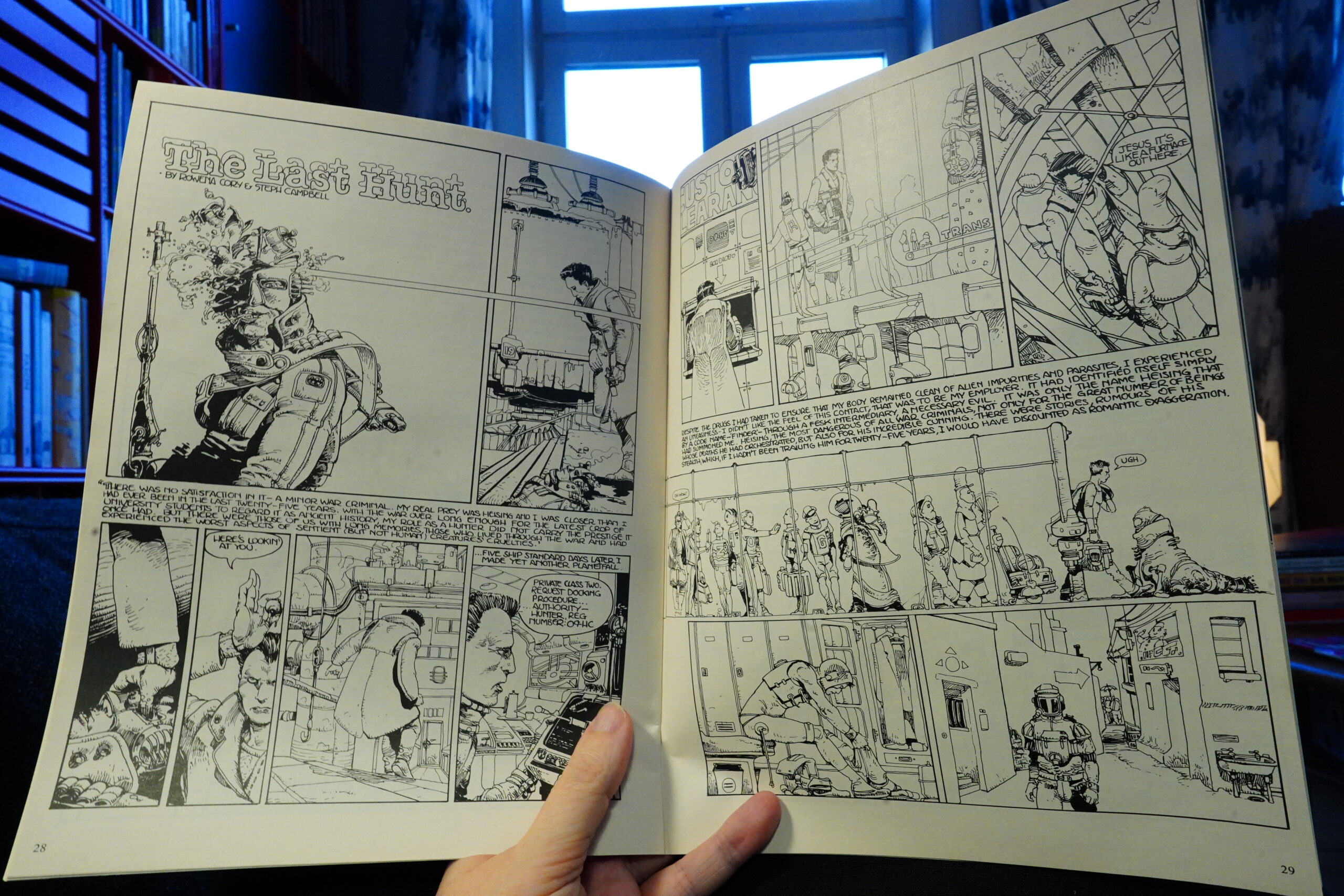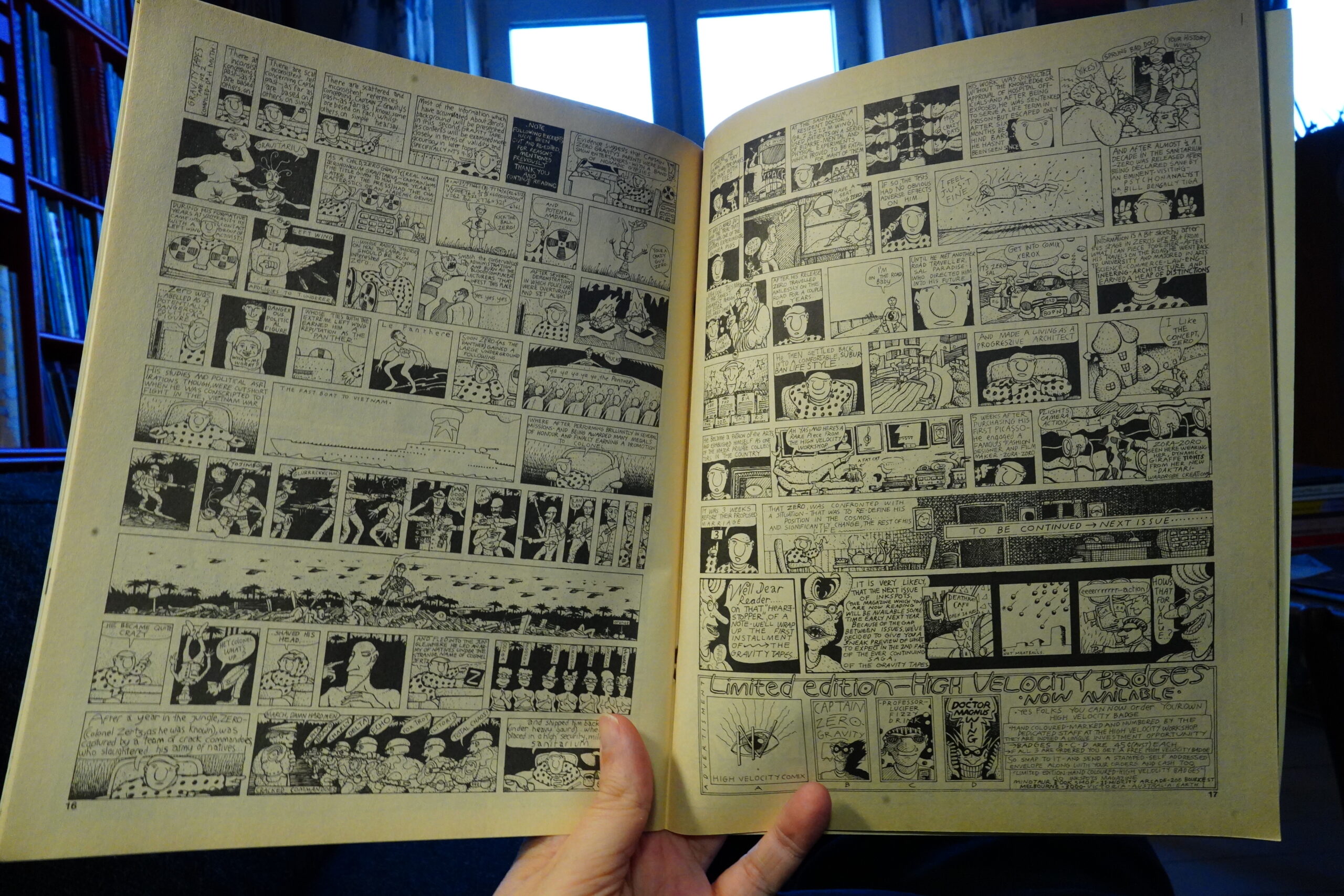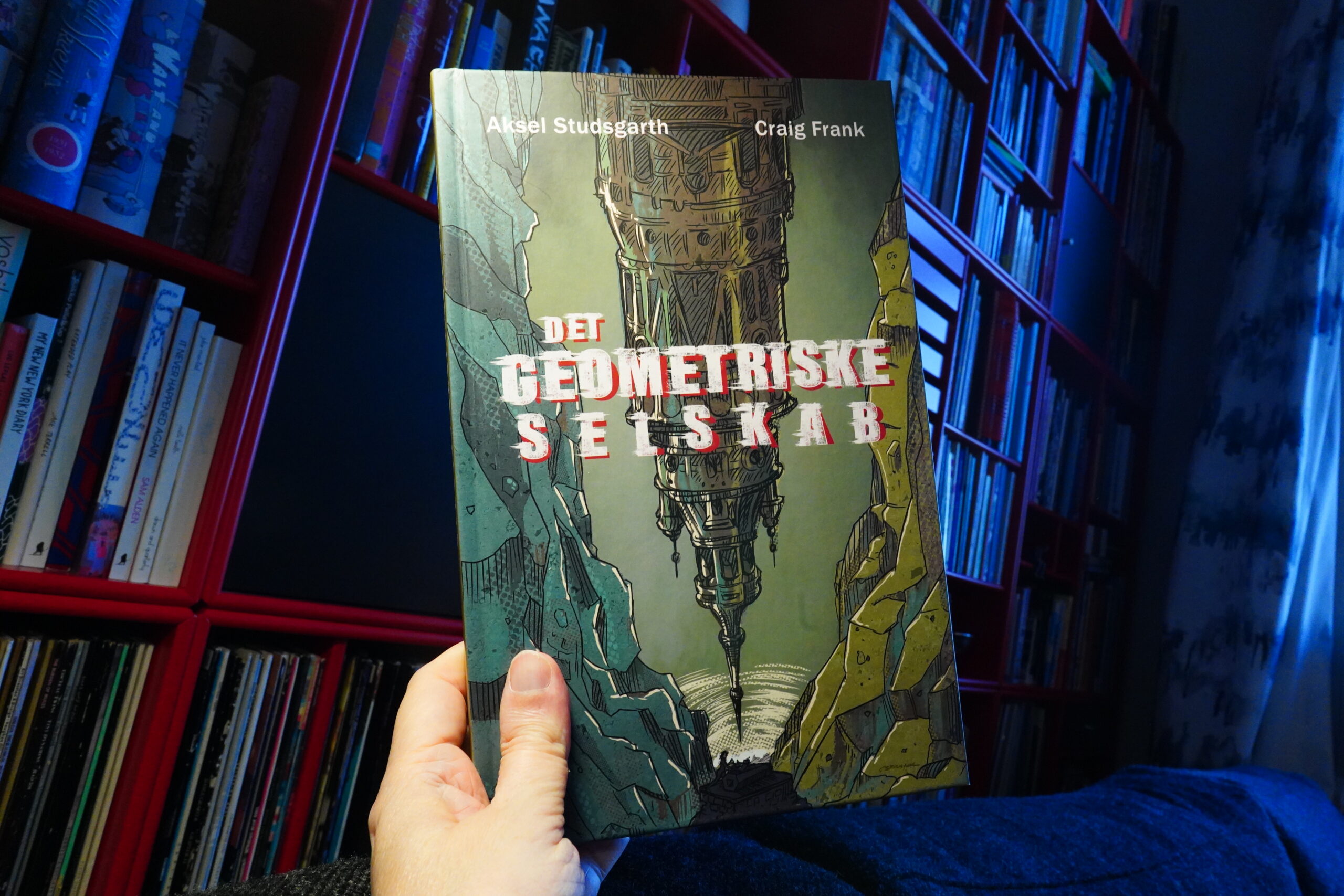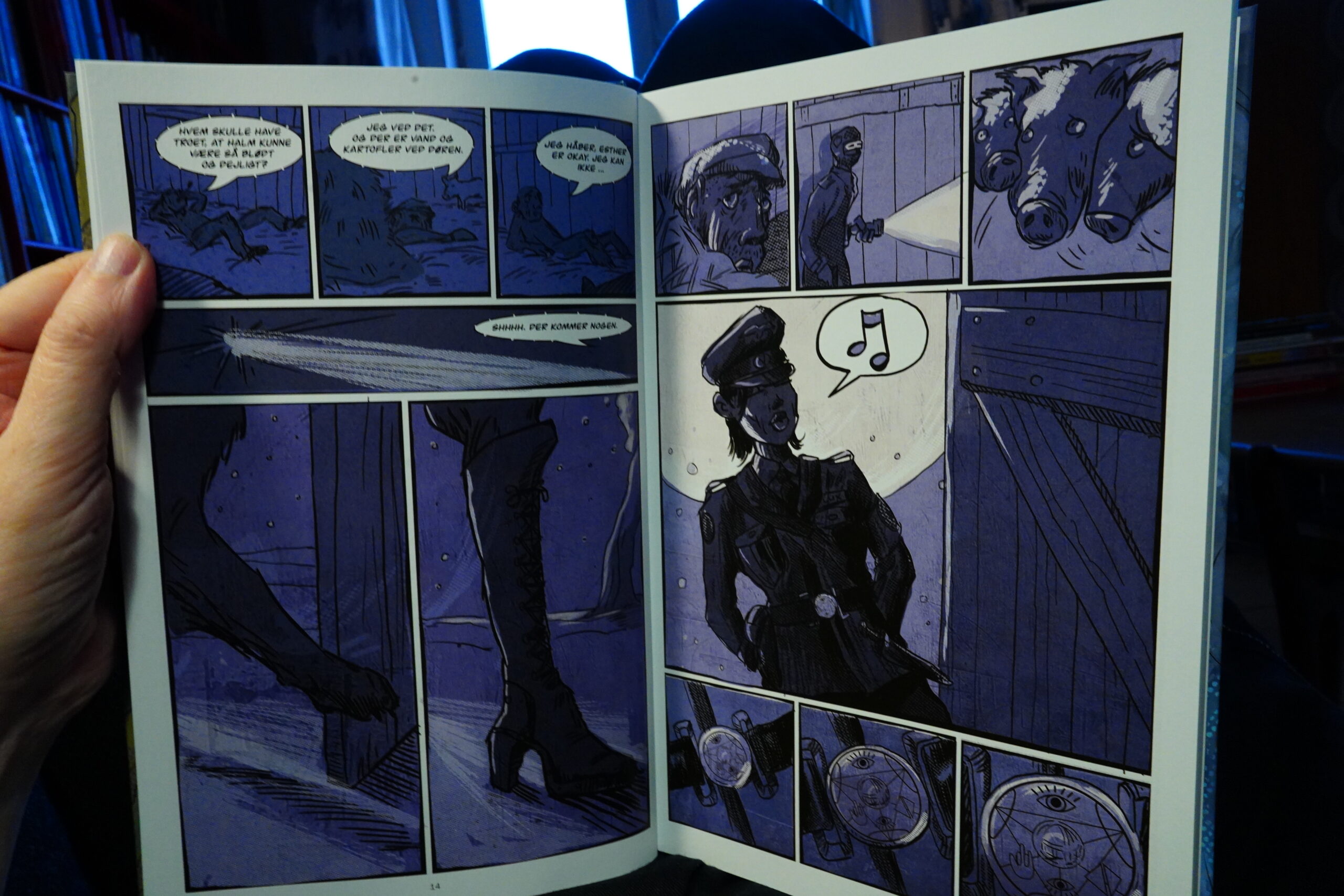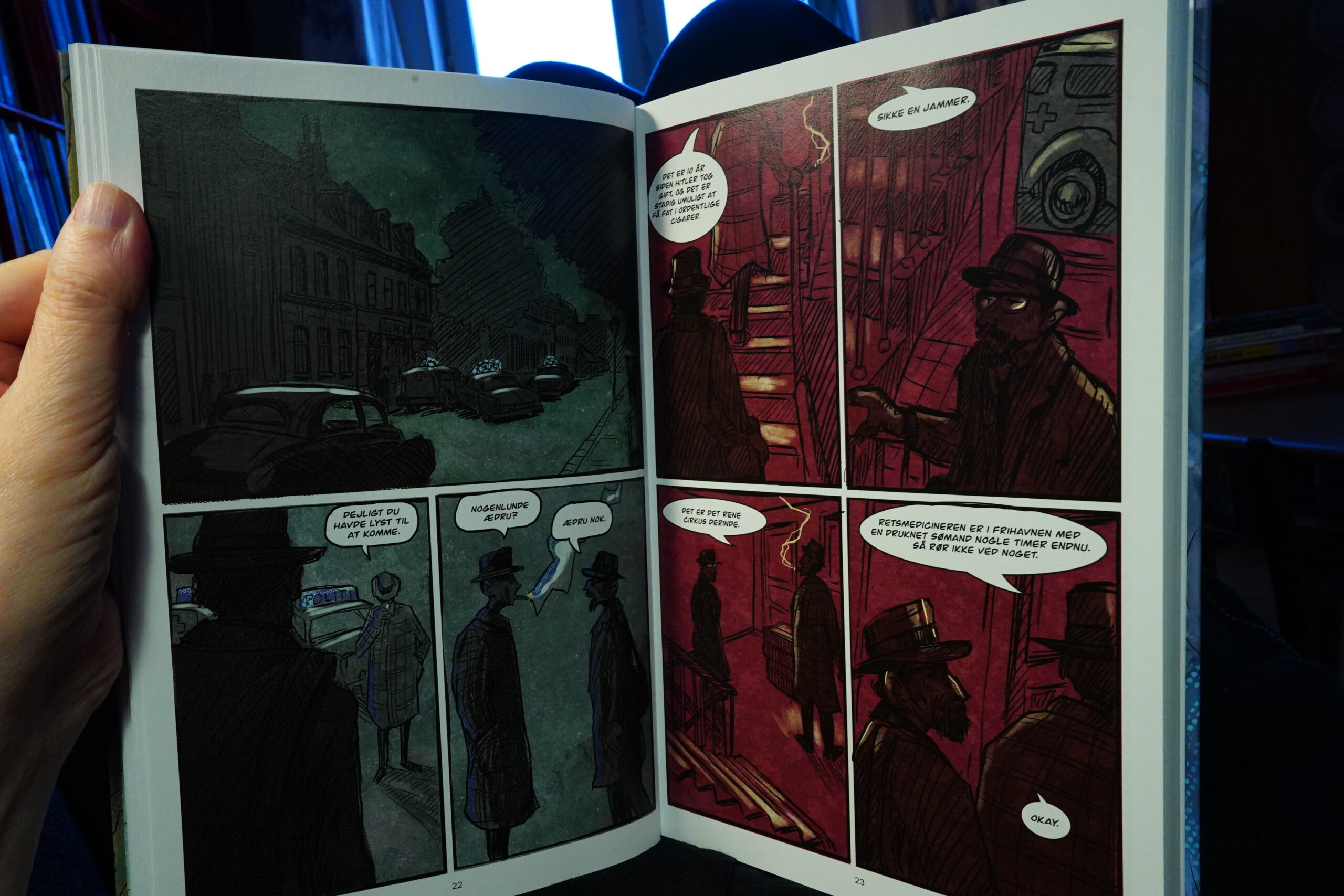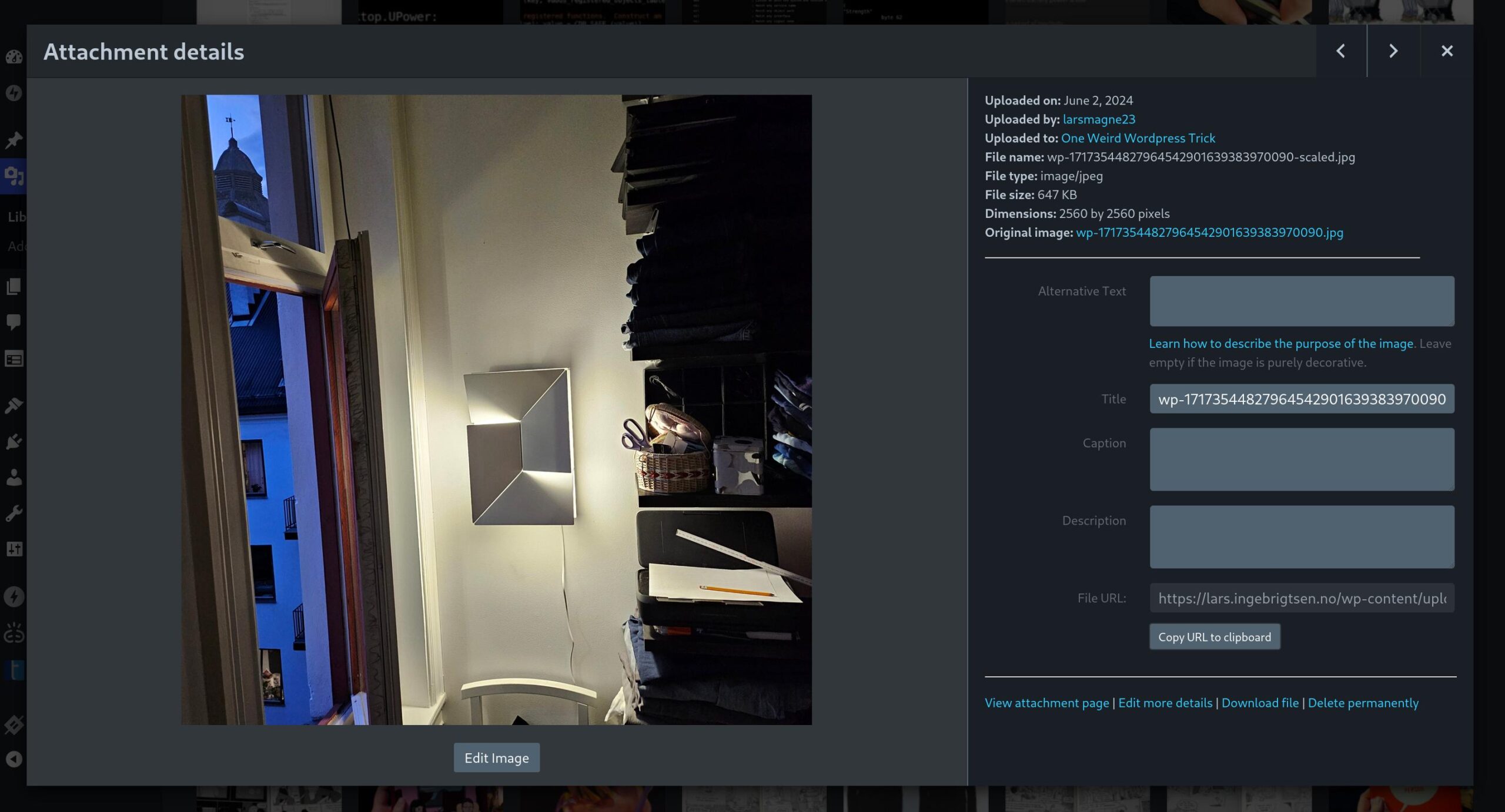Google really is down the toilet these days
So I saw a screenshot on Twitter of a bit of what looked like an amusing interview with Anthony Bourdain, and as is my wont, I then googled for a phrase from the interview so that I could read it.
And:
And that’s it. I didn’t get any more results, and none of these were the right result.
(And also: “Have a Negroni have two quotes?” What? But I digress.)
So I tried Microsoft Bing:
It had the interview as the first result. (And it is indeed pretty amusing.)
People have been grousing about how bad Google search has gotten a lot lately, but I didn’t know it had gotten this bad. Perhaps it’s indeed time to just give up on Google and use Duckduckgo or Microsoft Bing instead as the default search engine.
Oh, well.
Comics Daze
I was thinking about going to Oslo Comics Expo and buy some small press stuff, but it’s really pouring outside… or it was five minutes ago, and now it’s sunny!?
OK, we’ll see — I may suddenly disappear. But in any case, today seems like a good day for reading comics, so let’s get started. And for today’s music: Albums from 1987 only.
| Cabaret Voltaire: Code | 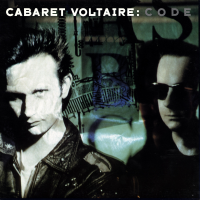 |
12:32: Spiral & Other Stories by Aidan Koch (New York Review Comics)
And I gotta read comics today, because I got a whole bunch of comics yesterday that I absolutely have to read right away. And this book is rather an event, eh? Most anticipated book of the year or something? At least by me — so much of what Koch has published has been in minuscule quantities, and I haven’t been able to score a copy. This apparently collects a whole bunch of that stuff, if I understand correctly.
I didn’t! I mean, understand correctly — this is all newer work (from the last four years). The first (and longest) piece has been published in French before, and there’s one Mini Kuš, and the rest is new. So Koch’s earlier work is still uncollected…
But as expected, this is wonderful work. It’s a bit like an Éric Rohmer film in that it’s not quite obvious what it’s going to be about for a while.
Lovely artwork, and the storytelling has a really pleasant way of flowing.
| David Sylvian: Secrets of the Beehive | 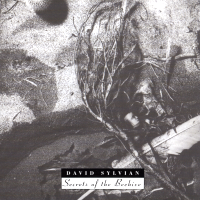 |
12:59: Love and Rockets #15 by Gilbert & Jaime Hernandez (Fantagraphics)
What? Luba was abducted by UFOs? Sometimes I feel like Beto is gaslighting the readers — dropping in some new backstory as if it’s something we’ve always known… but this time around, the entire story seems to be about memory? The characters keep commenting on how it’s impossible to remember who other characters are, because they’re changing the way they look, and there’s two characters with the same name, and on and on. It’s a bewildering read, in all the best ways. It makes me want to go back and re-read all of the Palomar saga yet again.
Aww, poor Tonta. Jamie’s half of the issue is half Princess Anima (etc) and half Hoppers, and they’re both amazing.
It’s a fantastic issue.
13:24: The Bonito City Tragedy by Rick Geary
Ah, yeah, I kickstarterered this, so there’s extra stuff in here.
Geary draws the best objects.
Oh, wow! An original page! I don’t really buy a lot of comics pages, and I’m not sure why — I’m not really into illustration, but into reading comics, so it doesn’t really occur to me a lot? But this is nifty — just a teensy bit of white-out on the shirt…
Anyway, as usual with Geary, the book is about a historical murder — this time around, about a mysterious massacre.
Hey, that’s the page I have! Geary draws just a bit larger than reproduced, which is kinda amazing.
It’s a good book, if a bit on the brief side — but then again, I always want more Geary; I’ve been a fan since the 80s.
| Prince: Sign ‘O’ The Times (1) | 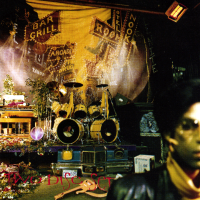 |
13:50: Peep #1 by Sammy Harkham & Steven Weissman (Brain Dead)
I got this big magazine from here…
Wow, what a line-up. Makes me wonder why this isn’t an issue of Kramer’s Ergot instead? When I read that Harkham was doing a new anthology, I assumed that it was perhaps going to be more, er, low key, but this is an all-star lineup, and it’s a huge book (kinda like Raw Magazine? but wider, I think).
Most of the pieces are three pages long, like this one from Vanessa Davis.
OK, pet peeve time — for most of these pieces, it’s obvious who’s doing them (Gabrielle Bell to the right), but there’s no credits here, so I have to flip back and forth for many pieces… and the one to the left turns out to be by Art Spiegelman!
Anyway… this anthology is amazing! It doesn’t really have a theme, and the artists are really varied — we’ve got a few from the Raw Magazine cohort, a few people from the 2d cloud cohort (etc), and several up and coming artists. It’s a total joy to read.
What a way to start the day — four absolute bangers. And it still hasn’t started raining again, so perhaps I should toodle off to the the Comics Expo anyway and pick up more comics? Yeah, I need more comics.
| Eurythmics: Savage |  |
15:06: Promenade
OK, a quick shower, comics appropriate t-shirt and a backpack to carry purchases. And we’re off.
The market thing took place in this tent, which is smart (yes, it started raining again).
And it was pretty packed?
Lots of people selling stuff and lots of people apparently buying stuff.
The haul! OK, it was all I could fit into my backpack, so I had to stop shopping a bit before I reached the final table.
16:57: Marg magasin 1 by Ronny Haugland
This comic is mostly reprints of gags previously published on Facebook, apparently. There’s some really good gags here, but it doesn’t really make for a satisfying read…
But then there a long and pretty amusing story here, too, so it’s all good.
| The Smiths: Strangeways, Here We Come | 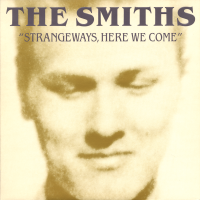 |
17:15: Uttrykk deg selv by Tim Ng Tvedt (Jippi forlag)
I’ve got at least two other book by Tim Ng Tvedt, and they’re all pretty abstract.
This one is even more so. Really cool, though.
17:24: The Starsip/Fluff by Mari-Helene Hvalbye
I really like the artwork.
Starship also has a pretty vague story, but is oddly compelling.
17:30: Nameless by Hella Brandal
Again, really attractive artwork.
And it’s really funny! Not only that, but it has a classic amusing plot. Definitely an artist to watch.
| Bel Kanto: White-out conditions | 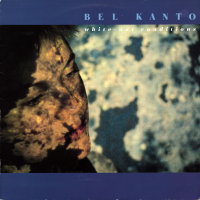 |
17:42: Uppvaknanden by Juliette Mancini (Lystring)
There were a number of Swedish publishers and creators present, too.
This starts off really interesting…
… with an original approach to doing the artwork and stuff. But it’s pretty one note? It feels awfully unresolved and undigested.
| Sussan Deyhim & Richard Horowitz: Desert Equations: Azax Attra | 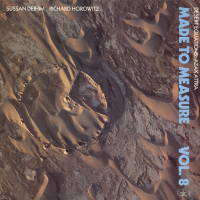 |
18:00: Mye onsdag og litt helg by Inga Sætre (Jippi forlag)
This is a collection of strips that have basically one schtick: Two grouchy women, grouching about annoying people and things.
And it works! It’s funny and smart.
But I think I need a nap now.
| Pet Shop Boys: Actually | 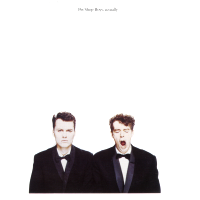 |
20:23: Self-Esteem and the End of the World by Luke Healy (Drawn & Quarterly)
I’m awake! I’m awake!
This book is pretty oddly structured. And meta (as Healy has one of the characters comment on) — but basically, it’s about a character called Luke Healy, and it seems like an exaggerated take on something that might be autobio, really.
But then things go off in a more whimsical direction…
… and then we keep skipping five years into the future, and get a story at each stopping point.
So it ends up feeling like a collection of four separate stories featuring the same characters (well, ok, five with the appendix), and I just started feeling a bit impatient with it all. There’s things that are hugely successful (like the bickering cops in the hotel section, the seagulls, and flooded LA above), but all in all it feels a bit… “vapid” is too strong a word? Yeah. But…
| Pieter Nooten & Michael Brook: Sleeps With The Fishes | 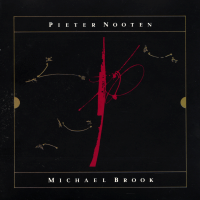 |
22:02: Monster Crime by Johnny Damm
I got this from here.
Damm’s previous comics have been about police violence, mostly, but this one is about that incredible lie that retail corporations were spreading starting in 2020 about organised shoplifting.
So we get a whole bunch of actual quotes from these assholes set to pictures from old horror comics. It’s fun for the whole family.
| Tuxedomoon: You | 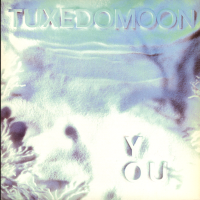 |
22:11: Good by Flux & David Good (NBM)
That’s a really er unique way of drawing people — everybody has an extra outline?
In the US everything is in black and while and in the jungle everything is paradise.
Flux’ artwork isn’t really up to conveying scenes like this — I’m guessing it’s heavily based on pictures, so they’re as convincing as his models. And on the right-hand page the father goes from “give me smarm!” to “give me d’oh!”, and neither are successful.
I’m guessing this is a true story (you never know these days), and Good certainly has a pretty unique story to tell: He’s the son of an man from the US and a woman from the Amazon Forest, and his mother abandoned her family apparently because she was fed up with living in the US half of the year.
The book is both overly digested and unexamined at the same time: We get the story of David’s bout with alcoholism, with the reasons behind it being the most pat imaginable. And we never really get a glimpse into the mother’s real reasons for leaving (was it just because she couldn’t deal with living in the US?). It’s all surface, and after a while it starts becoming really grating.
The most alien thing about the book isn’t the author being born in the Amazons, but scenes like the above from US child rearing: David (who here is 14-15 years old), snuck out to be with his girlfriend, and when he’s found out, his father forbids him from ever seeing her again. This is just so loopy that I thought we’d get a later reveal showing the father to be clinically insane or something, and that’s the reason the mother left, but no — this is apparently something an American parent is supposed to be able to do?
It’s a distressing book, but not for the reasons the author wants it to be.
| Steven Brown: Searching For Contact | 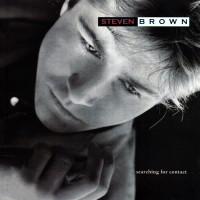 |
22:58: Hexagon Bridge by Richard Blake (Image Comics)
I bought this because I liked the cover design, and I thought it was time that I tried some science fiction from Image Comics again — some of those series are pretty good.
Well, this starts well — not much exposition, but just dropping us into it all.
But then we get 50 pages of characters infodumping at each other…
… before we go to a world with all the complexity of a shoddy video game.
Basically nothing of interest happens, but it looks quite nice.
| Jane Siberry: The Walking | 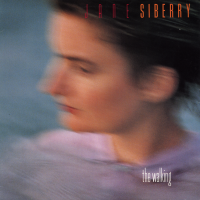 |
23:21: Louis Undercover by Fanny Britt/Isabelle Arsenault (Groundwood Books)
I bought this because I read an excerpt from it in the er 2017 Best American Comics book a few weeks ago.
It’s about growing up…
… and all that stuff, and it’s absolutely wonderful. Great artwork, good dialogue, a plot that doesn’t quite go where you expect. It’s funny and it’s moving.
23:55: The End
So I think I’ll end this day of comics reading (and shopping) on a high note.
But that was a day of many excellent comics, man.
Comics Daze
I’ve been doing too much computering the last week, so it’s time to read some comics instead. And all albums played today comes to you courtesy of the year 2015 (because why not).
| Véronique Vincent & Aksak Maboul: Ex-Futur Album | 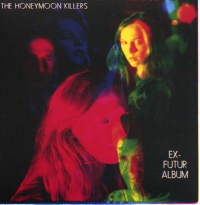 |
12:51: Causeway #14-17 by CF
The previous issues has mostly been narrative, but a couple of these are more sketchbook like…
But a couple of stories, too. It’s cool.
12:57: Alte Zachen by Ziggy Hanaor/Benjamin Phillips (Cicada Books)
This is an ingeniously simple little book — it’s basically the story of a kid taking his crotchety old grandmother? great grandmother? out for shopping…
… and we also get to see allusions to her reminiscences about her life — not like, huge infodumps, but the opposite — just glimpses… but glimpses that are so telling. It’s fantastic! This should be on everybody’s Comic Book of the Year lists! The artwork is so charming, it’s funny, it’s incredibly moving, and it just has that magic — it flows so well.
| Jlin: Dark Energy | 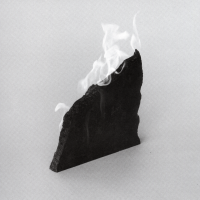 |
13:15: Fox Comics #17 & 19 edited by D. Vodicka
Some years back, I wrote a blog post about Fox Comics and how much I enjoyed it. And a few weeks back, Philip Bentley left a comment there, explaining much about Fox Comics’ history that I’d wondered about, and also offered to send me some missing issues (because they’re impossible to find).
And look what I got in the mail the other day! Thanks, Philip! Not only these two issues of Fox Comics, but also some issues of Inkspots and a book about comics in Australia!
I’ll be reading the rest a bit later, but let’s read the Fox Comics issues first, because I’ve been wanting to read these for years.
These two issues are from 87/88, which was an exciting time in comics, and these issues reflect that. (Ed Pinsent.)
Most of the pieces here are very short (many single pagers, but mostly two-three pagers). You’d think that that’d give a choppy reading experience, but there’s a really strong sense of unity here — there’s a very strong mood going on in these pages. (Michael Graham to the left and Phil Elliott to the right.)
The page to the left here (by Michael Graham) is pretty typical for the approach used by many — we get a kind of oblique little story, kinda poetic and quite mysterious. And it works!
There’s also more straightforward funny bits, but still not exactly just a joke (Lazarus Dobelsky and Ian Eddy).
Heh. Chloe Brookes-Kenworthy (on the left page there) is one of my absolute favourites. She also did a fantastic solo book… And on the right hand page, we get an appreciation from Ian Eddy of her work! Nice.
Ooh, this Dylan Horrocks/Kupe thing (at six pages, among the longest pieces) is wonderful.
Fox Comics was such a great anthology, but like most anthologies, lost to the ages… I mean, anthologies never sell much anyway, and contacting everybody to allow a reprint (even as an ebook) would be very difficult. So all this fantastic stuff is just gone, for all practical purposes.
Now I really want to read the Inkspots issues, but I think I should space these things out a bit.
| Miss Kittin and The Hacker: Lost Tracks vol 1 | 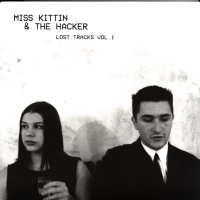 |
14:20: Chef’s Kiss by Jarrett Melendez, Danica Brine and others (Oni Press)
Hm… this looks very… busy? No, I know what it is! The angles are like off everywhere? Like that hallway in the bottom right panel on the left hand page? None of those angles make sense, and the doors seem off proportionally? Perhaps the artist is going for a super-exaggerated Japanese comics perspective style, but it’s just bewildering here.
The artwork is otherwise pretty attractive.
I also found the dialogue to be awfully sitcomish, so I was thinking that’d ditch the book if it didn’t pick up soon…
And it did! It leaned into being an absurd comics version of a cooking show (with added Young Person Drama), and it’s kinda fun? That is, it mostly held my interest.
They definitely could have edited down some of the verbiage — especially in the So Much Drama pages — but it’s fine.
| New Order: Music Complete | 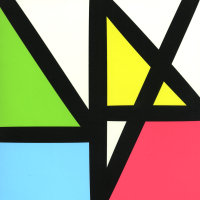 |
15:30: Ding Dongs hævn by Henriette Westh
I like the colours here, but the artwork doesn’t do much for me. Drawn on a computer, I guess? The line has that slightly lifeless look.
And the storytelling is just odd. Here, for instance, we apparently see her friends getting killed, and it’s just choppy as hell. (It turns out that there’s an in-story explanation for this, but that doesn’t really help when you’re reading the book.)
And the story itself is just… kinda not very satisfying — it makes no sense why Our Hero takes the time to tell The Villain the story anyway.
| Joanna Newsom: Divers | 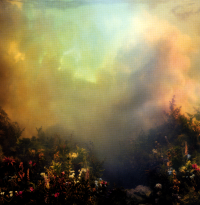 |
15:48: World War 3 Illustrated #53 (AK Press)
This is the newest issue of this amazingly long-running anthology. There’s few others that reach these numbers… Oh, right, Š! from Kuš published their 50th issue recently…
Which reminds me: See the number on the spine there?
Andy Oliver tweeted a tip about anthologies the other day, and says that they shouldn’t be numbered. WW3 and Š! seems to be counter examples, right? And as a somebody who buys comics, I don’t think it’s good advice at all. When I’m in the shop and see an anthology, I can generally sort of remember “yes… #23 seems like a much higher number than the last one! Oh, and I’ll buy #21 and #22, too”, but if I see Zoinks: The Ketchup Issue, I’ll have absolutely no idea whether I’d already bought that, and it’s not unlikely that I’ll just skip it.
Not to mention when shopping from the couch, and I have access to My Shopping List:
These are the issues I want to buy, and if the issues only had names, I’d have no idea which ones to buy. Of course, buying back issues doesn’t really bring in money to the people who made the book (if it’s an out of print issue), so perhaps that doesn’t feature into the calculation at all..
Anyway, World War 3 Illustrated #53: My Body, Our Rights:
Those fuckers at the supreme court have brought out a lot of major name contributors to this issue. Well, OK, Sabrina Jones is in most issues…
… but not Roberta Gregory.
Elaine Schulman & Nicole Schulman have been in previous issues, I’m pretty sure, and this piece is a strunner.
Wow! Trina Robbins! This must be one of the last pieces she wrote before she died earlier this year.
| Barbara Morgenstern: Beide |  |
Most of the pieces are about how horrible things wre before abortion became legal, so it’s refreshing to read Lee Marrs’ story, which is about how we have to fight back now.
| Jamie XX: In Colour |  |
Sue Coe is, as always, correct.
Joyce Farmer!
Anyway, it’s a really solid issue. There’s a small handful of weaker pieces (strangely enough, all dealing with trans issues), but it’s solid.
And now I think I should go make dinner or something before I plotz.
17:48: La piste de Yeshe by Cosey (Forlaget Fabel)
Wow, this is the final Jonathan album — almost 50 years since it started.
And as usual, Cosey has recommendation for accompanying music, so I’ll have to halt my 2015 cavalcade and play one of these… hm… I don’t have any of those albums, but the Brian Eno one is on Youtube, so I’ll put that on.
Huh. Very atmospheric. Doesn’t bode well for Jonathan’s fate.
Oh, and there’s a print in here. For a second I thought it was signed, but it looks like it’s an er printed signature. Still, very pretty.
I’m not telling how it ends! It must have been weird doing a series like this — I mean, it was a pretty big deal in the late 70s, but rather petered out as the 80s arrived. You could see the series growing ever more out of step with the cultural environment: The 70s were big on Buddhism and Tibet and all of that, and the 80s definitely weren’t. And in addition, it just seemed more and more er condescending? to have this Jonathan guy driving around on his motorbike, fixing things for the locals.
So when Jonathan made a return in the late 90s, Jonathan was much more passive character, and even in this one, the final album, he doesn’t really do anything… but the Tibetans handle things on their own.
It’s a really good ending to a good series.
(And Cosey’s artwork is still lovely, even as it has become much more rough hewn over the years.)
| AFX: Orphaned Deejay Selek 2006-08 | 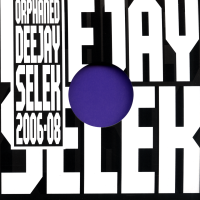 |
18:22: Återvinningscentralen by Ulrika Linder (Galago)
This book was written by somebody who works at a recycling station (one of those places where people bring their recycling and has to separate things into the correct container; it’s a European thing), and she’s so so so angry at people putting things into the wrong container. It’s funny and it’s interesting.
We also get some shots of amusing stuff people have thrown away.
But mostly about how annoying people are.
Yeah, that does look more than a bit annoying, doesn’t it?
It’s a fun book, but it could have been a bit tighter — it starts getting a bit repetetive towards the middle, but then has some really amusing anecdotes towards the end.
| Lamb: 5 | 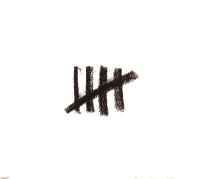 |
18:57: Batman Year One by Frank Miller/David Mazzucchelli (DC Comics)
By the time this was published (late 80s, right?) I had stopped reading super-hero comic books, so I missed this one at the time. But I do like Mazzucchelli, so I bought it now.
So it’s Batman’s origin story, of course, but it’s told in a very compressed way — I think they assume that you already know everything about Batman already…
The artwork’s very good, as expected.
This book is as much about Gordon’s introduction to Gotham as Batman’s origin… Which reminds me: A friend of mine said that he’d seen Batman Shampoo in the shops, but bemoaned the lack of Conditioner Gordon.
Hey, the linework here looks more like Muñoz via Keith Giffen than Mazzucchelli.
Anyway, it’s a pretty good four issues of Batman collected here? But it doesn’t really work well as a book: The Catwoman subplot peters out, and… well, everything just peters out, really. The last issue feels like they were just going through the paces.
| Tracey Thorn: SOLO: Songs and Collaborations 1982-2015 (1) | 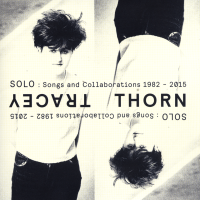 |
20:06: Inkspots edited by Philip Bentley, Steph Campbell and others
Oh, I assumed from the look of these that they were later than Fox Comics, but they’re before Fox Comics! The first issue here is from 1981!
Inkspots is very different from Fox Comics — it’s not only much more of a 70s book (which is natural, since it’s earlier), but it’s more into illustration and fantasy/science fiction, and Fox isn’t about that at all. (Daryl Lindquist/Steph Campbell.)
There’s other stuff, too, like this UK travelogue.
(Hm. Is my white balance off again? It’s hard with this shifting weather — it was sunny, and then rainy, and now it’s cleared up…)
(OK, that’s better.)
And there’s a smaller comic book inside the magazine, and this is the weakest part — it’s all jokey underground-like stuff, but it’s just not funny enough.
Well, this piece by Stuart Mann is very striking… but storywise it doesn’t really go anywhere much.
There’s interesting pieces here, and there’s a lot of good artwork, but there’s too many weak pieces to make it an altogether satisfying read.
| Róisín Murphy: Hairless Toys |  |
With the fourth issue, they have US distribution, it looks like, and there’s ads from Aardvark-Vanaheim, even.
This issue also has a whole bunch of text pages — mostly about comics and the state of the comics business etc.
Fil Barlow’s artwork is very accomplished. He’d go on to publish Zooniverse at Eclipse Comics, if I remember correctly?
Wow, this is striking. As with much of the artwork here, there’s definitely French influences, but melded with The Studio… like… er Moebius with Jeff Jones? Or rather Michael Kaluta? In any case, the artwork is fantastic.
It’s not all pretty 70s science fiction, though.
Anyway, very different from Fox Comics — I don’t think there’s much of a contributor overlap, either? (At least not with the two Fox Comics issues here; I haven’t checked with the rest of the issues I have.)
| Telepathe: Destroyer | 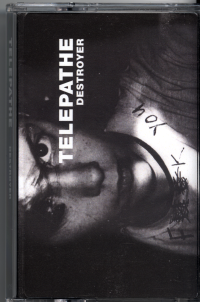 |
21:27: Det geometriske selskab by Aksel Studsgarth/Craig Frank (Afart)
The artwork hree doesn’t do anything for me…
Are the colours so ridiculously dark so that we can’t really see the linework?
Anyway, I found this pretty uninspiring, so I ditched it one third in.
21:41: The End
And perhaps that’s a sign that I’ve read enough comics for one day.
One Weird WordPress Trick
For quite a while, I’ve been idly wondering whether there was a simple way to use some sort of shortlink setup for WordPress media (i.e., images, videos and the like).
Here’s a typical WordPress image URL:
https://lars.ingebrigtsen.no/wp-content/uploads/2024/06/wp-17173544827964542901639383970090.jpg
I know, it’s SO LONG. But I mean, it’s an URL, so who cares… But if you’re slinging these around a lot on IRC and the like, they’re just kind of yucky, right?
So there’s a huge number of plugins for this sort of thing, but they’re mostly geared towards SEO scum, so it’s all about getting reports and tracking people and other nastinesses. (That’s a word.)
There’s also a large number of people out there that describe how to make a half-assed URL shortener yourself. This one, for instance, would create a redirect scheme that looks like:
https://lars.ingebrigtsen.no/media/wp-17173544827964542901639383970090.jpg
Which is nicer, but there’s a reason for that longer URL — you can have several images called foo.jpg from different dates, but this scheme wouldn’t allow for that.
Half an hour ago, it occurred to me that all media already has a pretty short, and also unique, way to be referred to: The attachment_id. So I thought I’d write a WordPress plugin that would allow URLs like:
https://lars.ingebrigtsen.no/media/105433
But just before I was going to start to type (I had opened the PHP file and all), I thought… “Hang on. Doesn’t WordPress have a built-in way to refer to posts and attachments by ID? I’ve seen that somewhere!”
So I just tried:
https://lars.ingebrigtsen.no/?p=105433
And it works! All these shorteners and self-rolled solutions are totally unnecessary!
So this is a Public Service Announcement for People Who Google How To Use A Shortlink (i.e., URL Shortener) For WordPress Media (you think that’s enough keywords for Google to pick this up? Probably not):
You don’t need a plugin. Just use the built-in ?p= for media, too.
Oh, and if your WordPress client doesn’t expose these IDs directly, you can find them in the web interface:
It’s down there in the “Edit more details” link.
You’re welcome.
